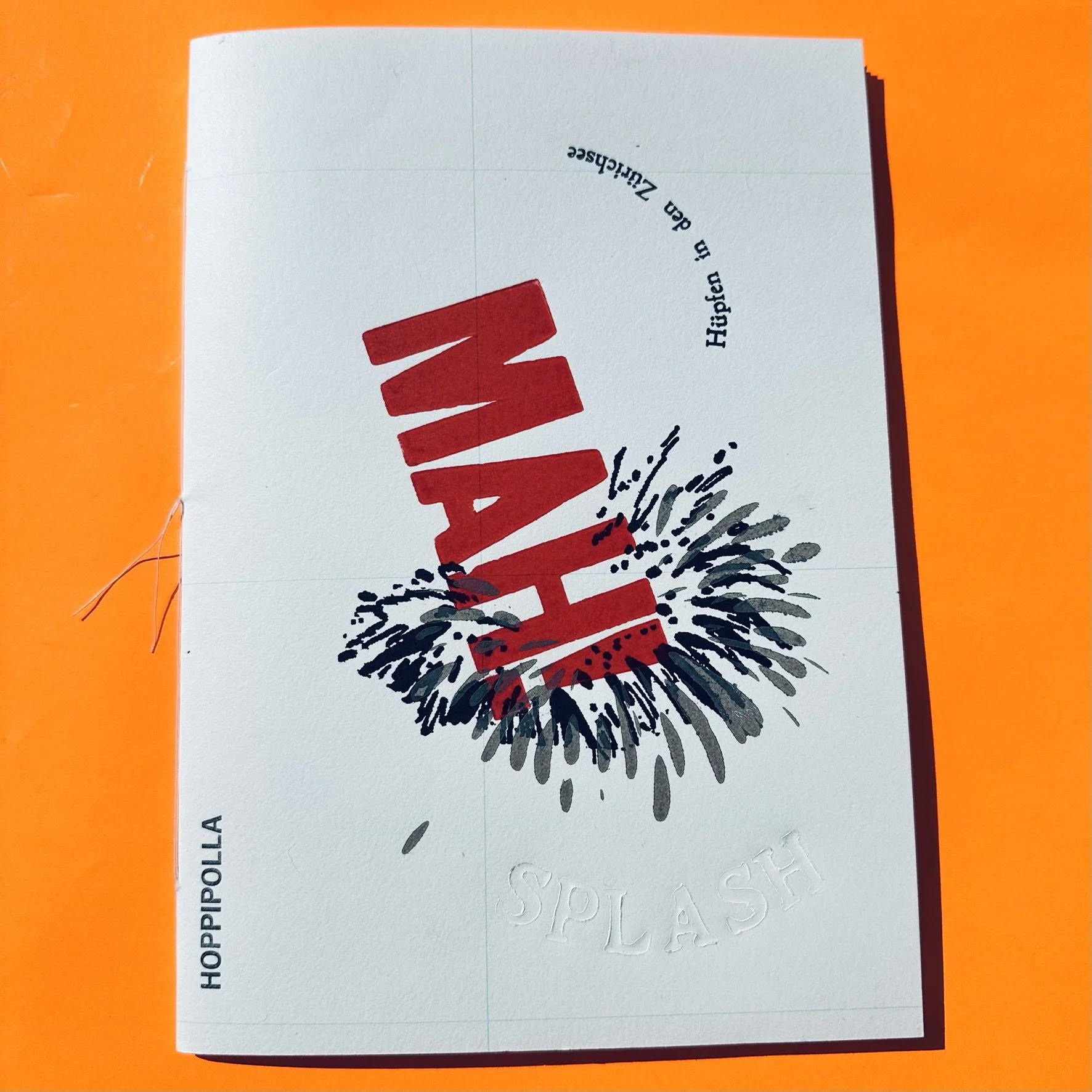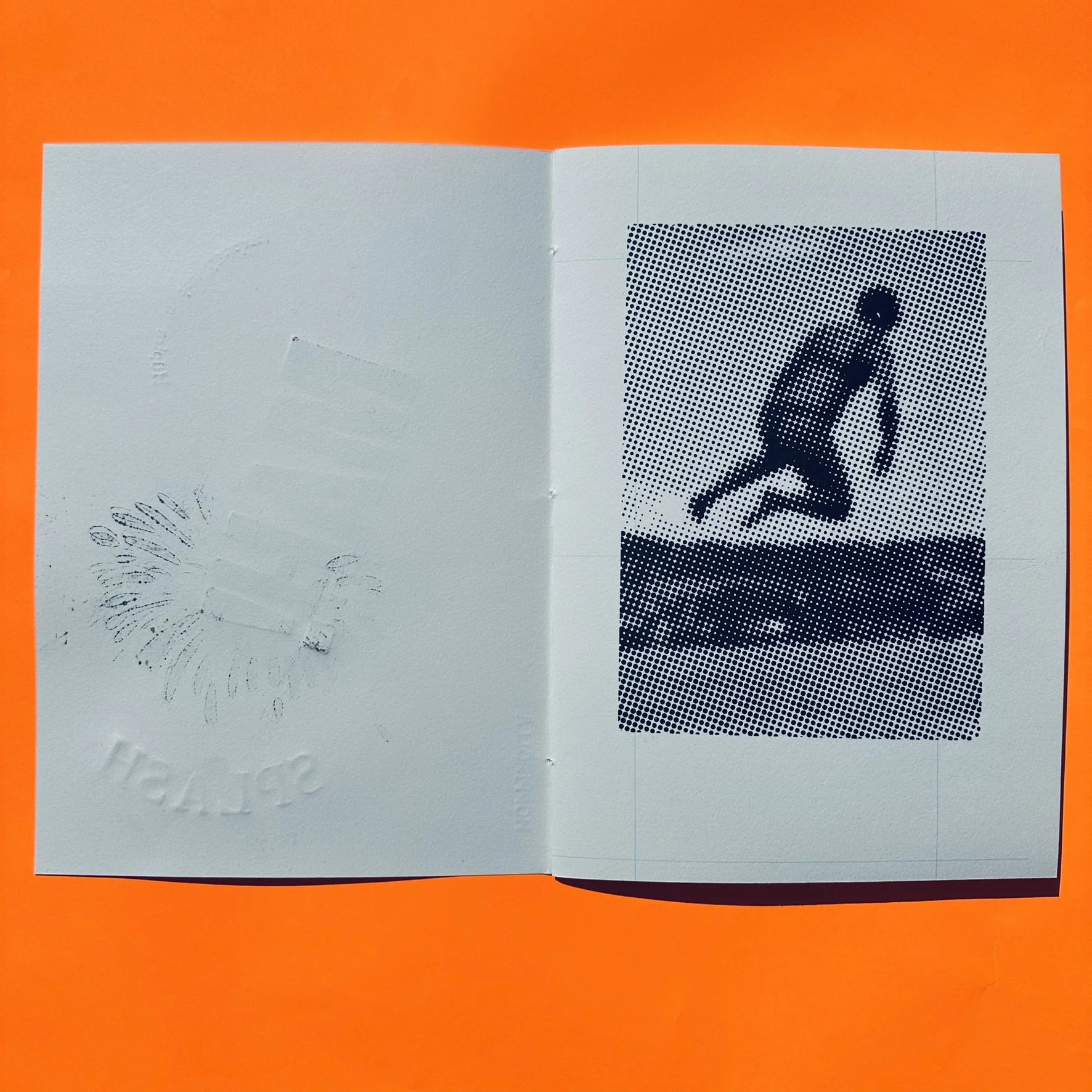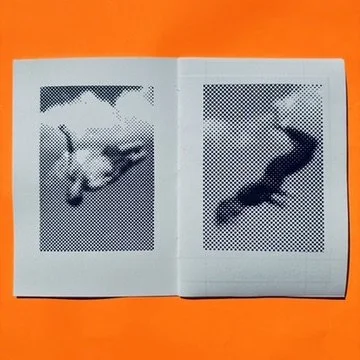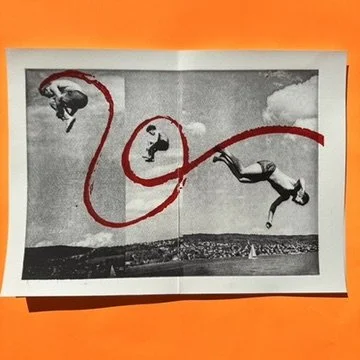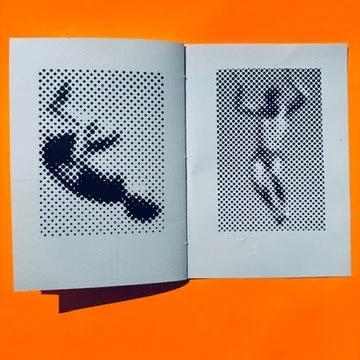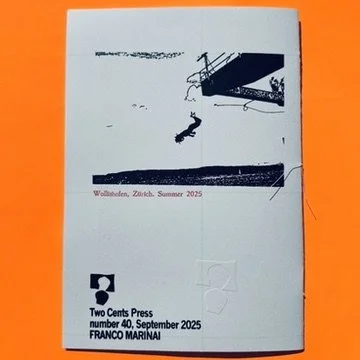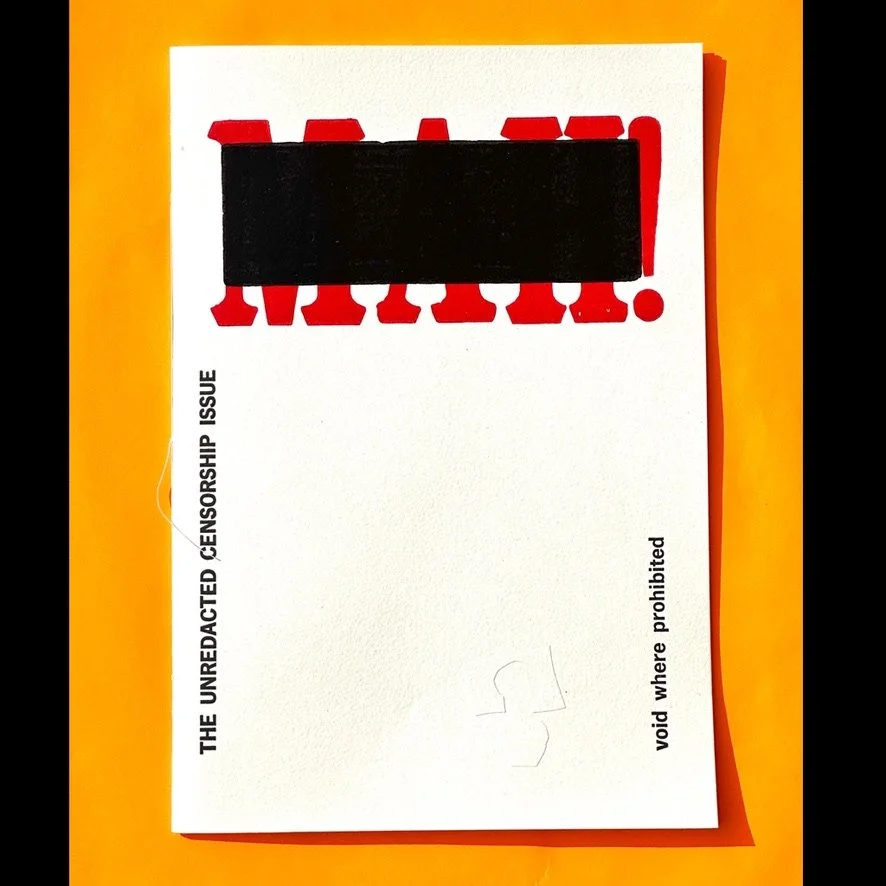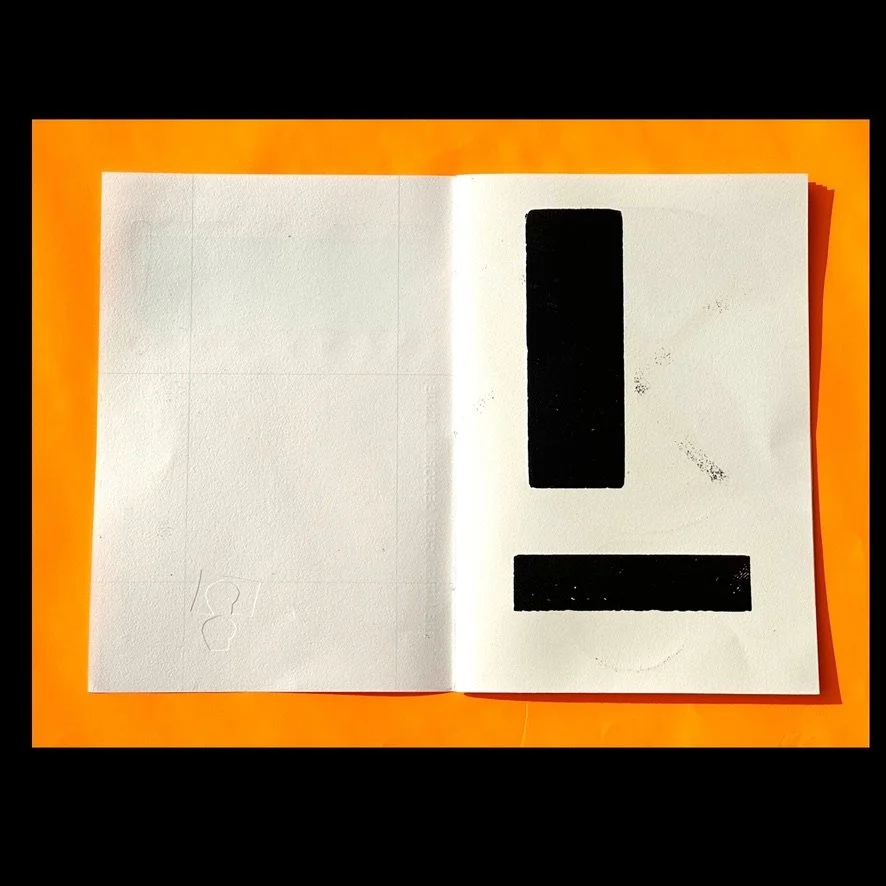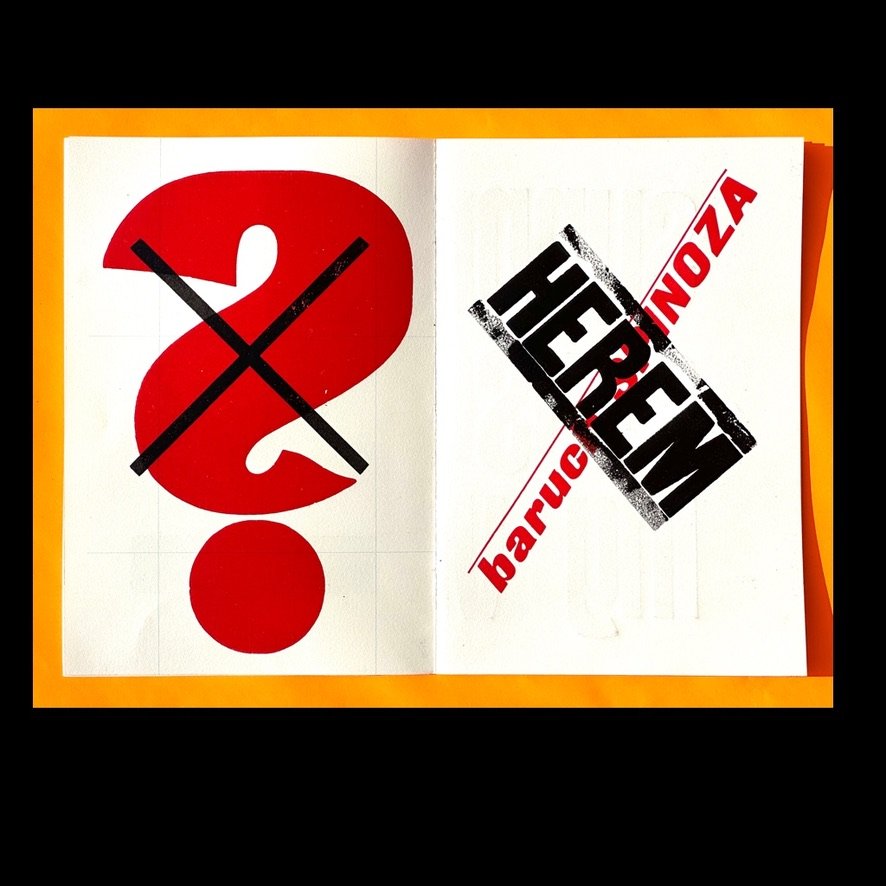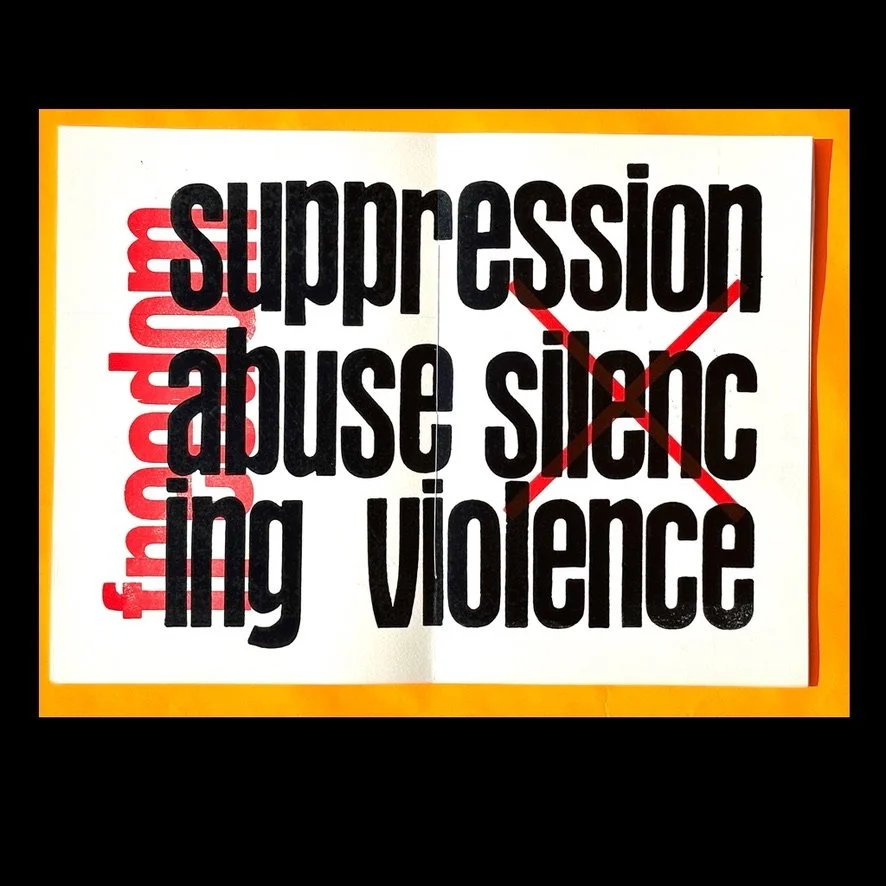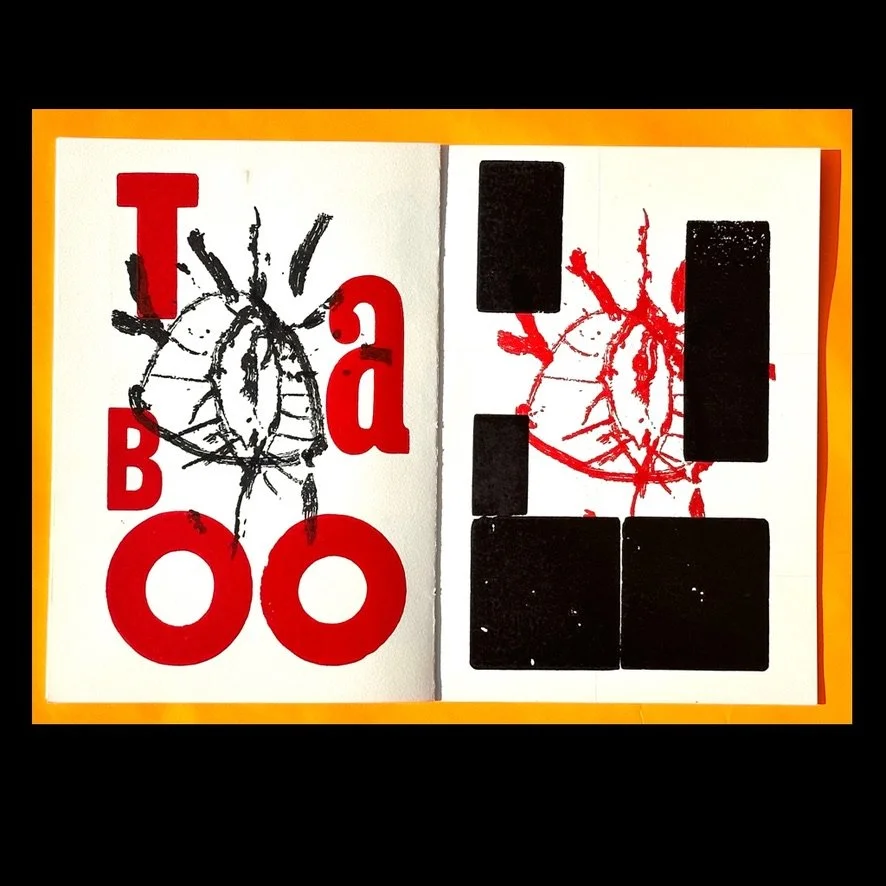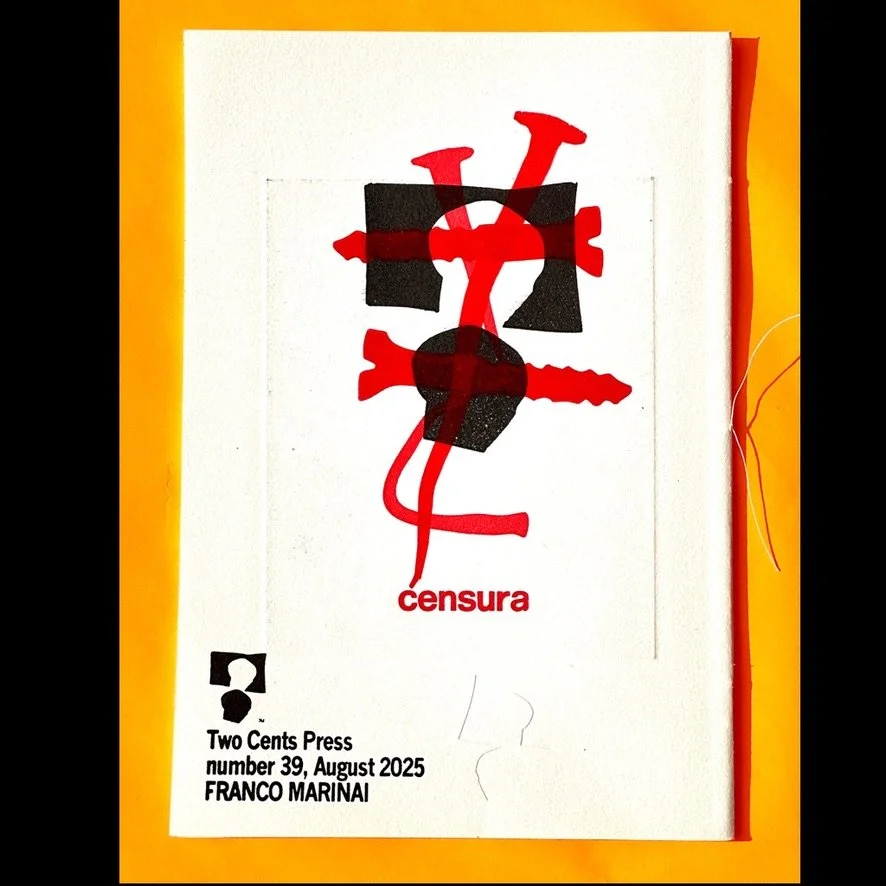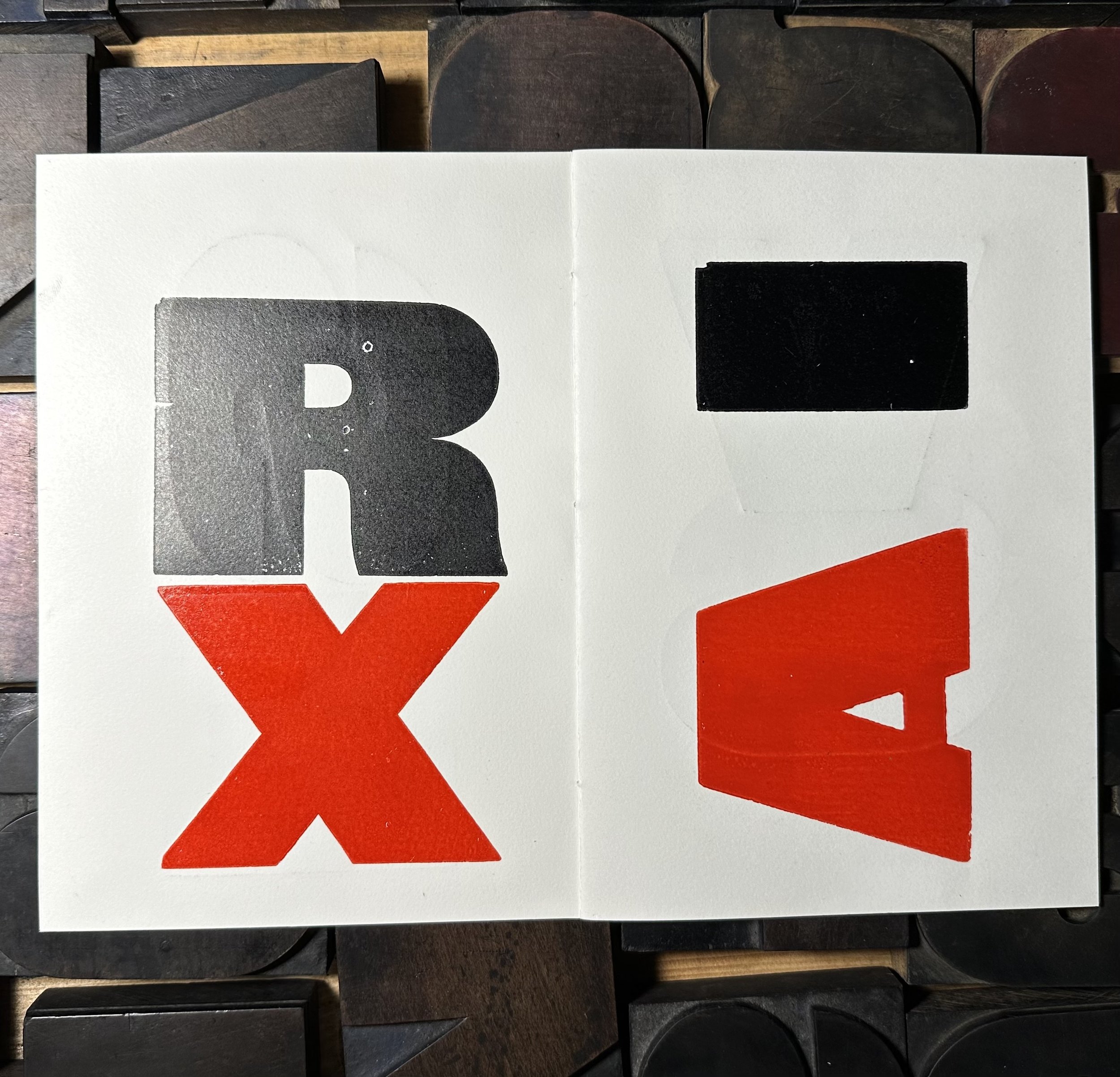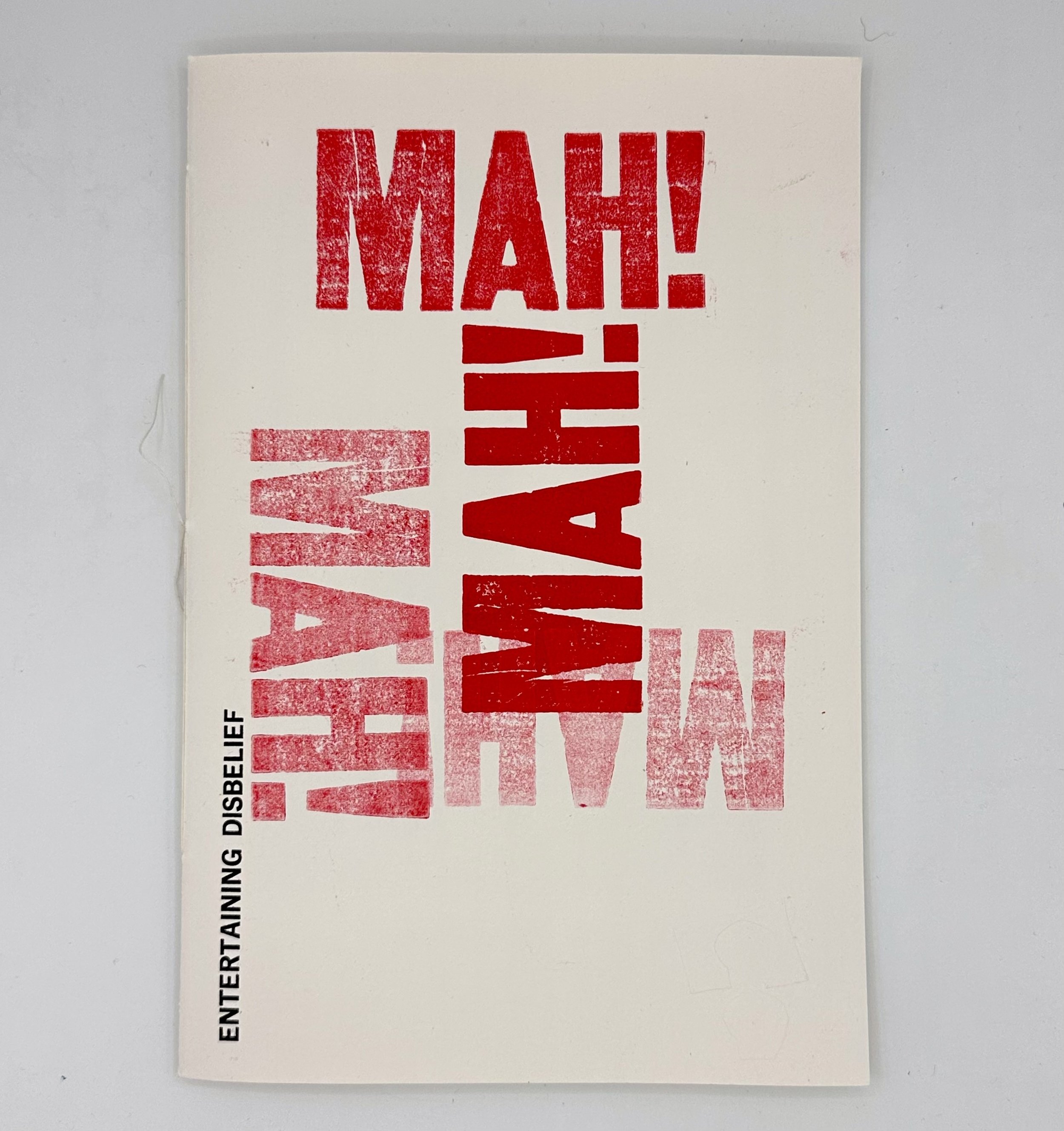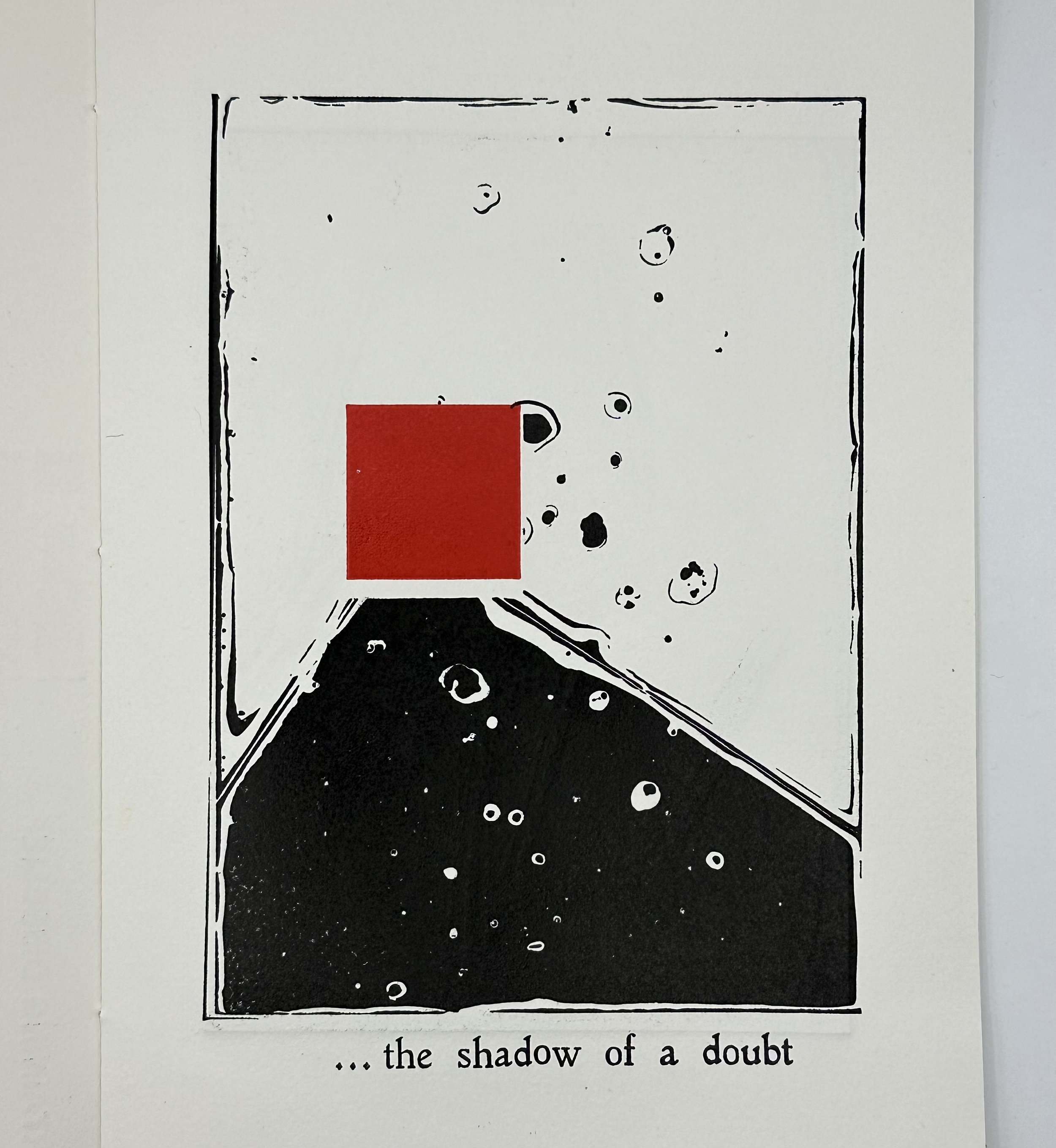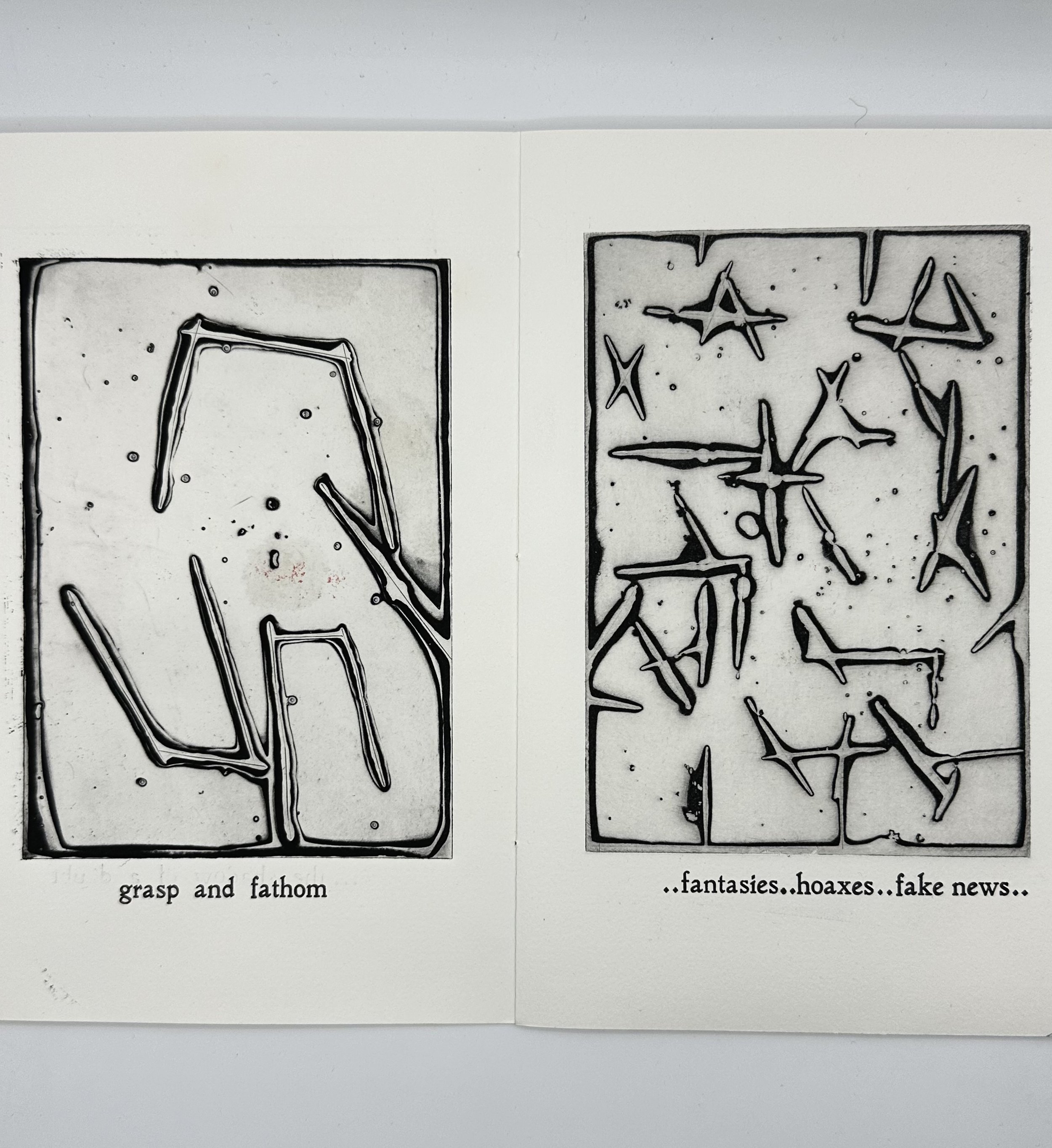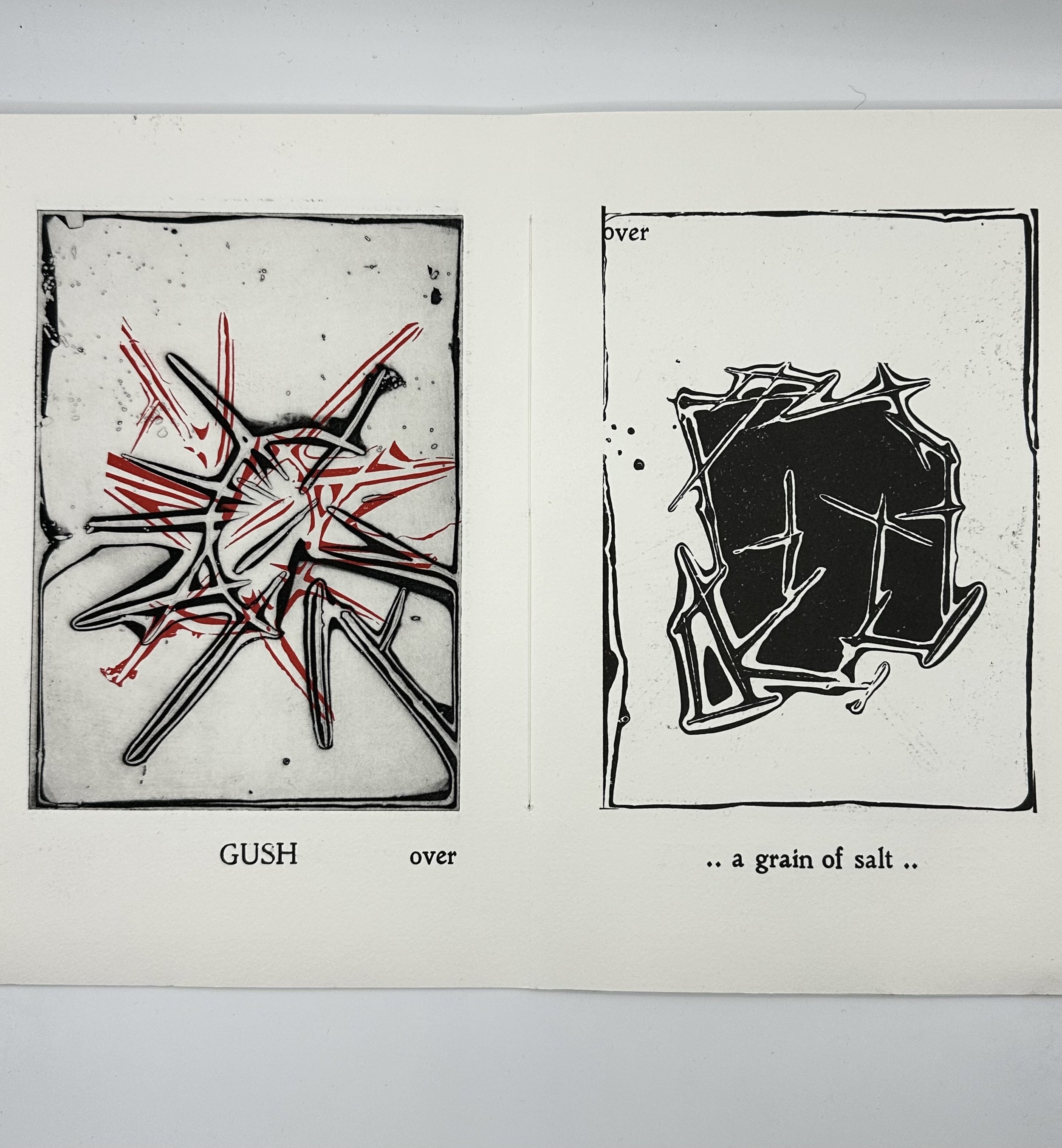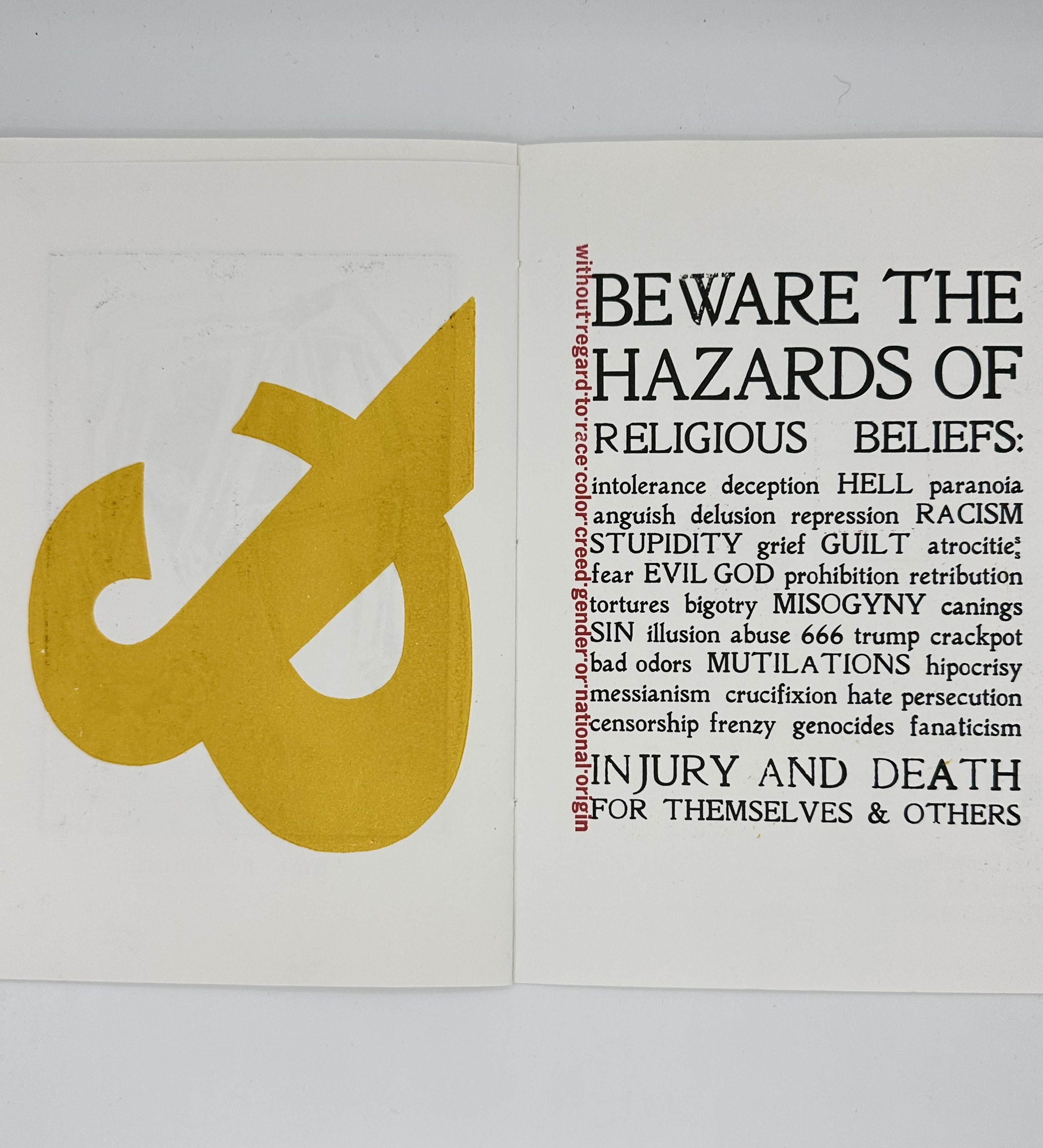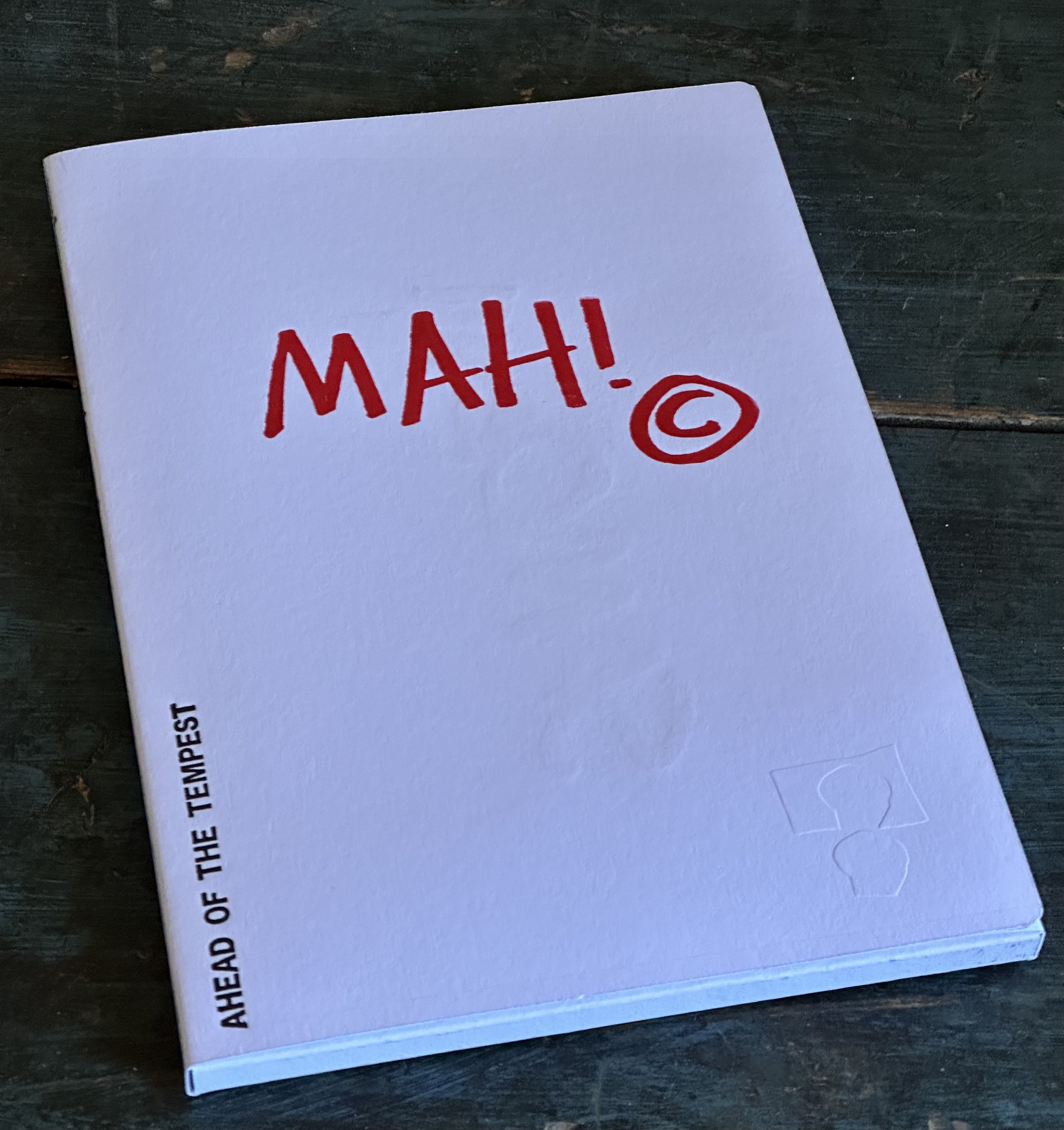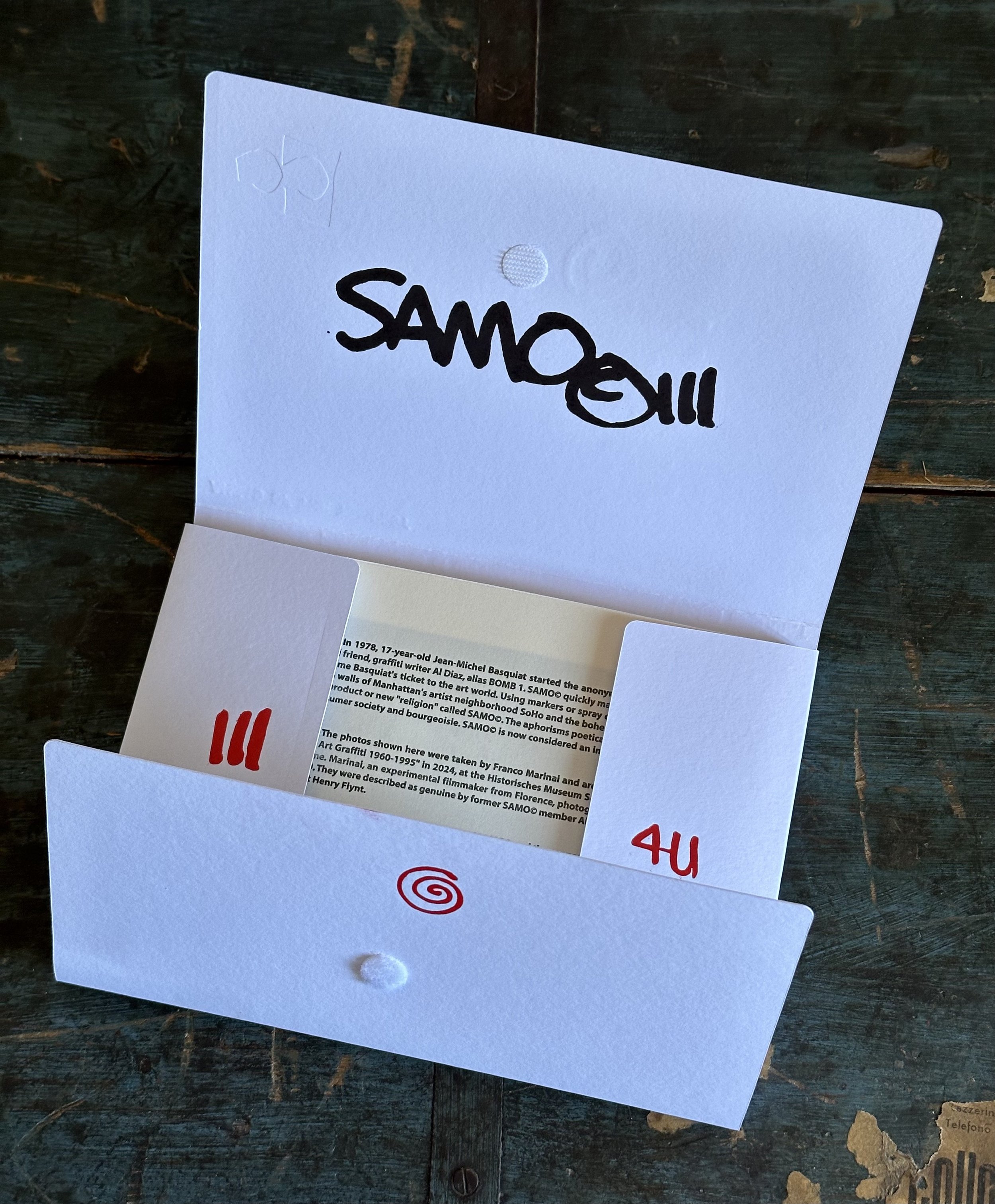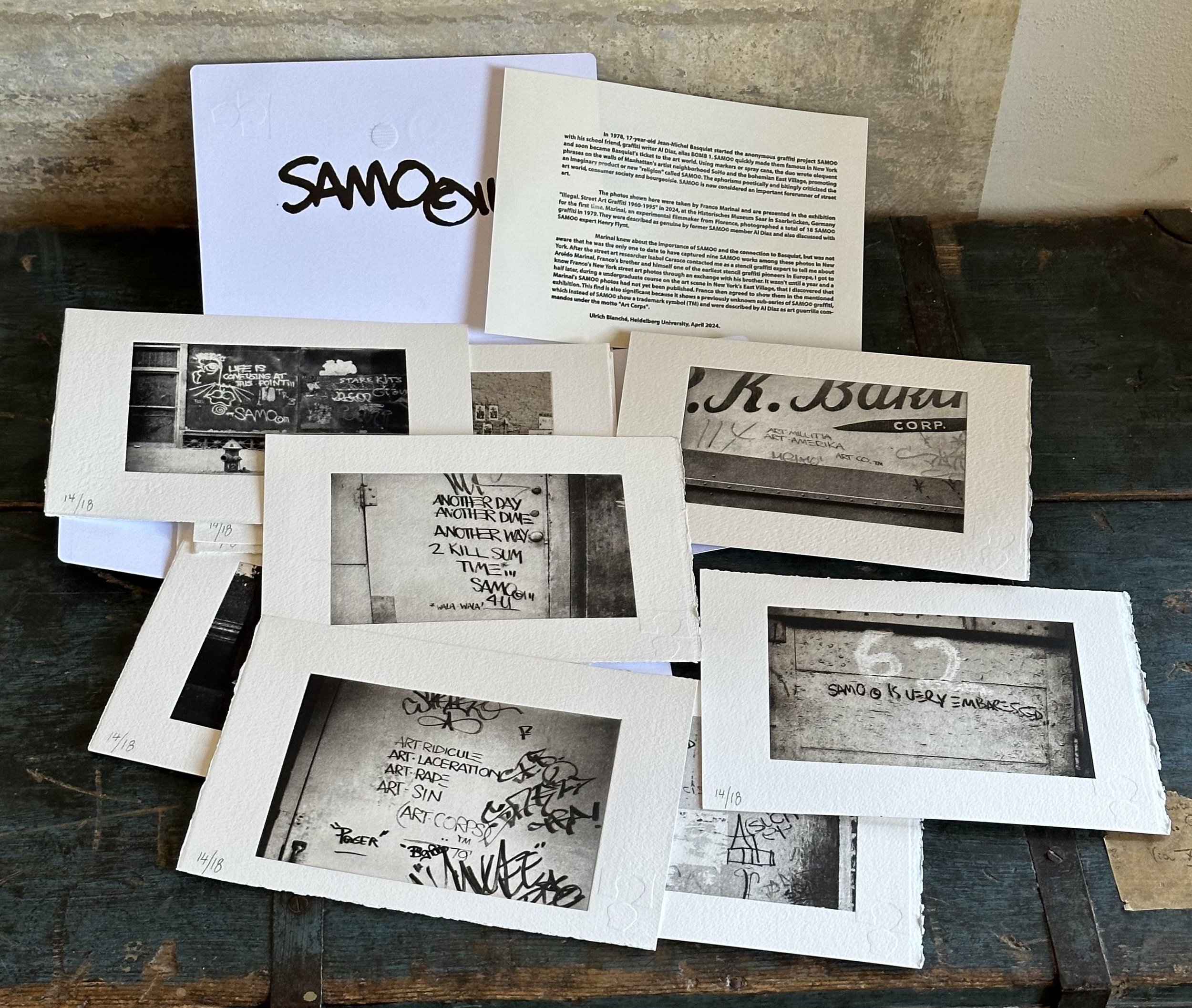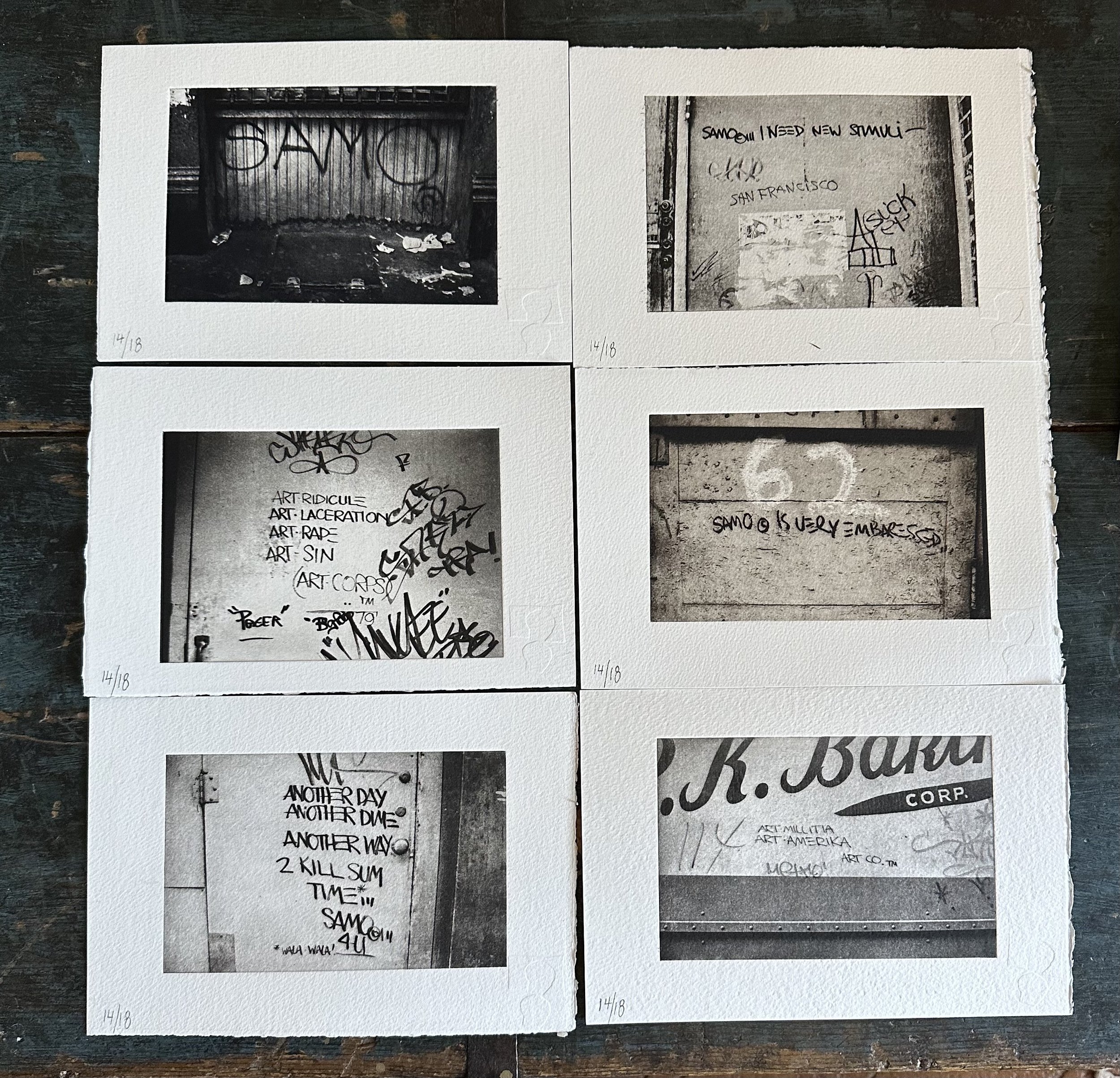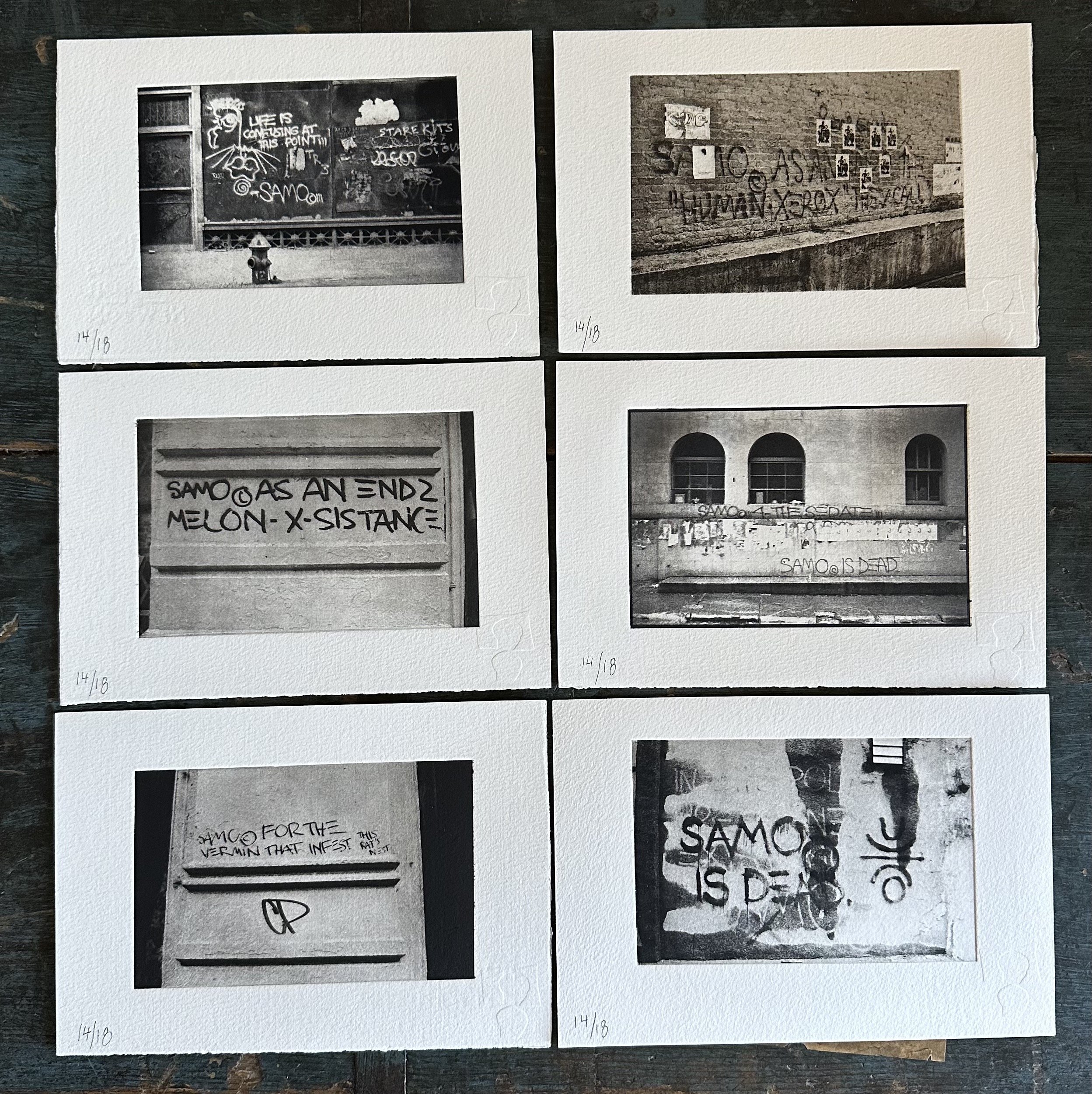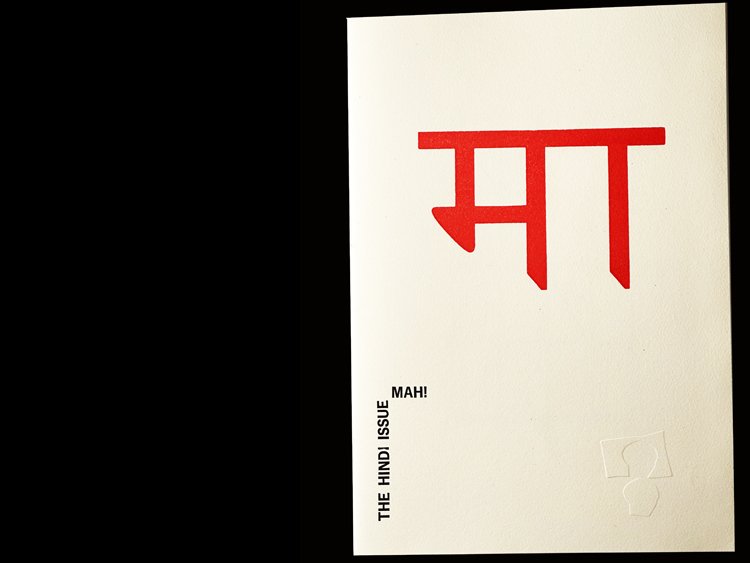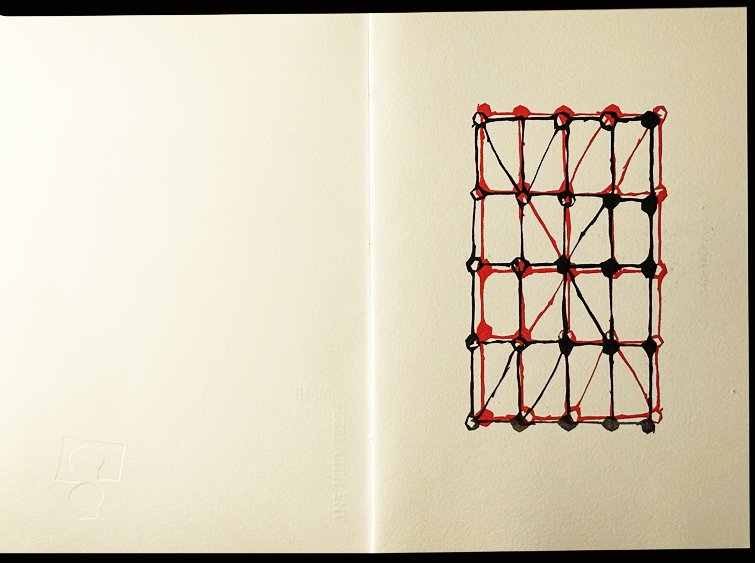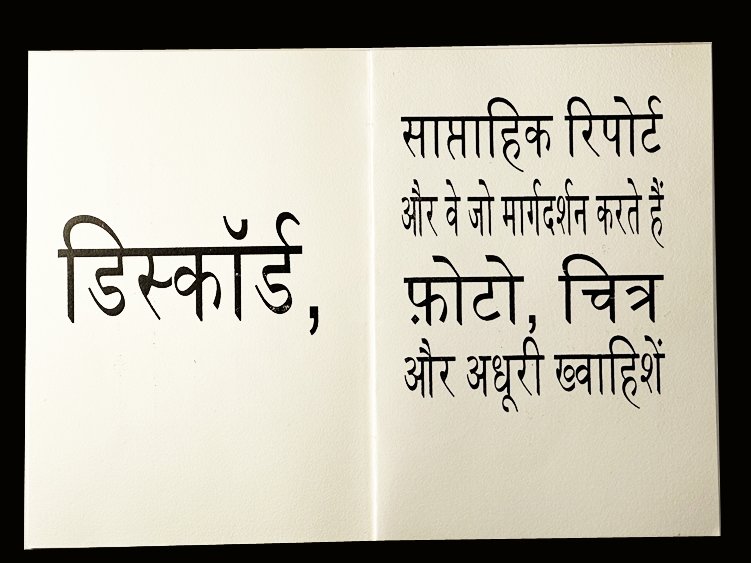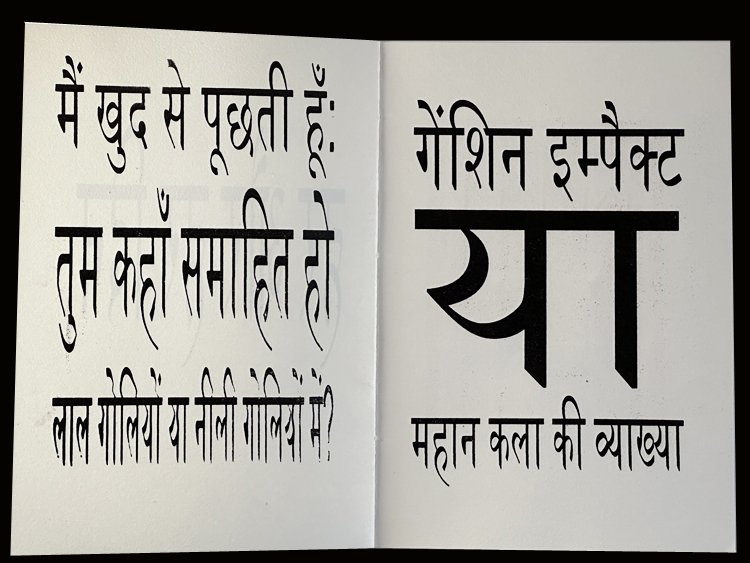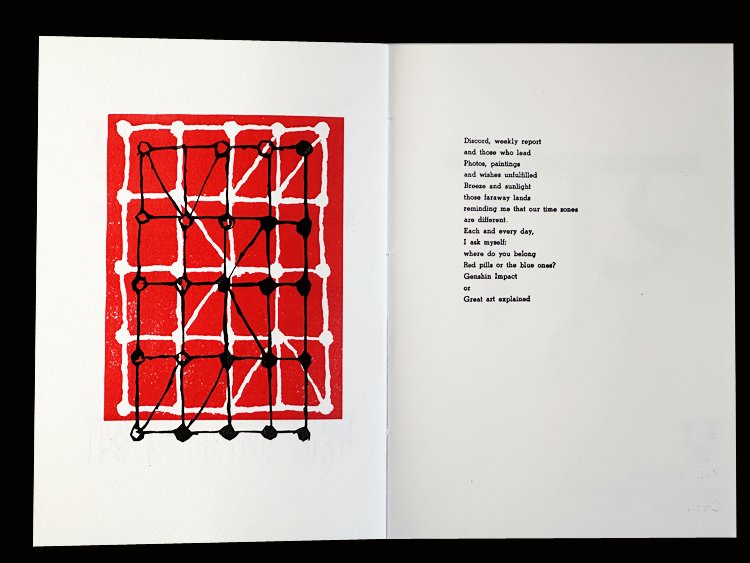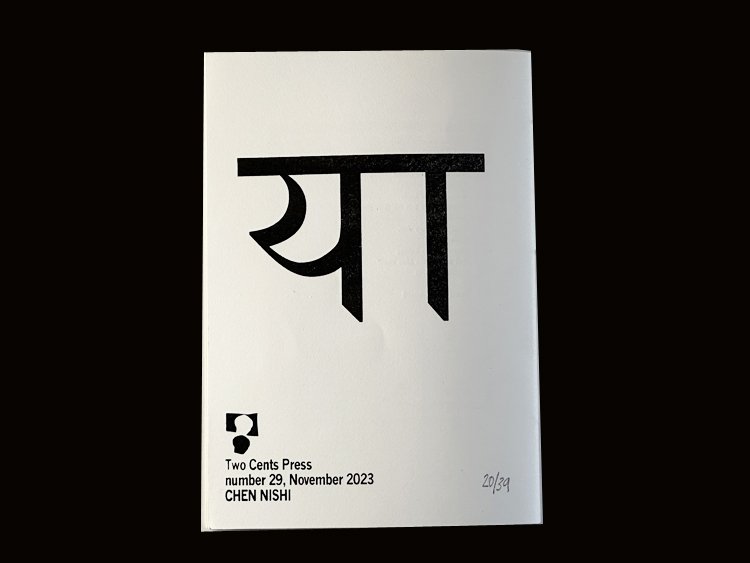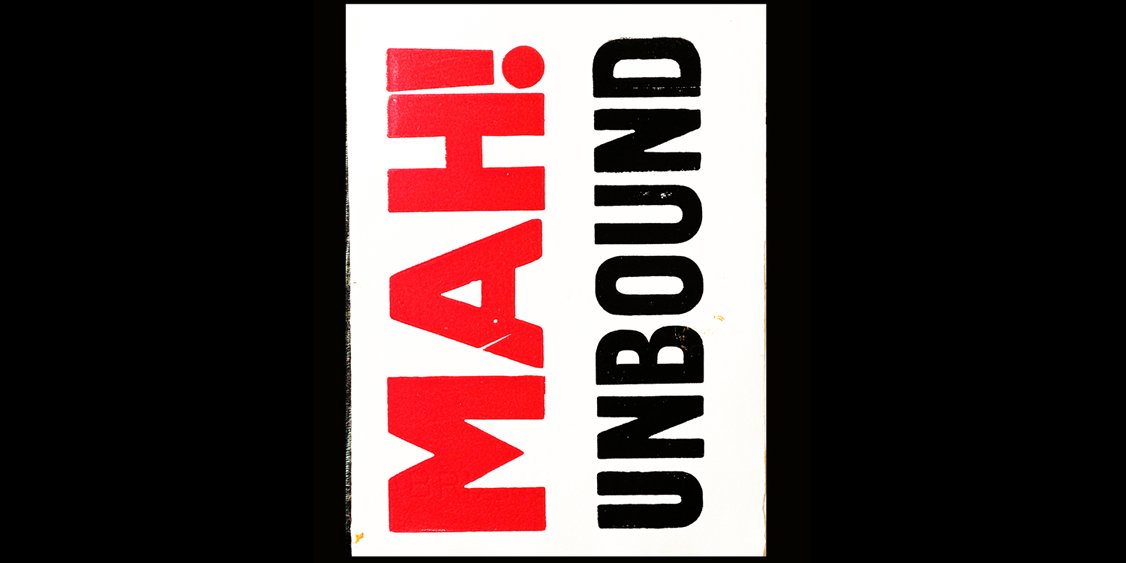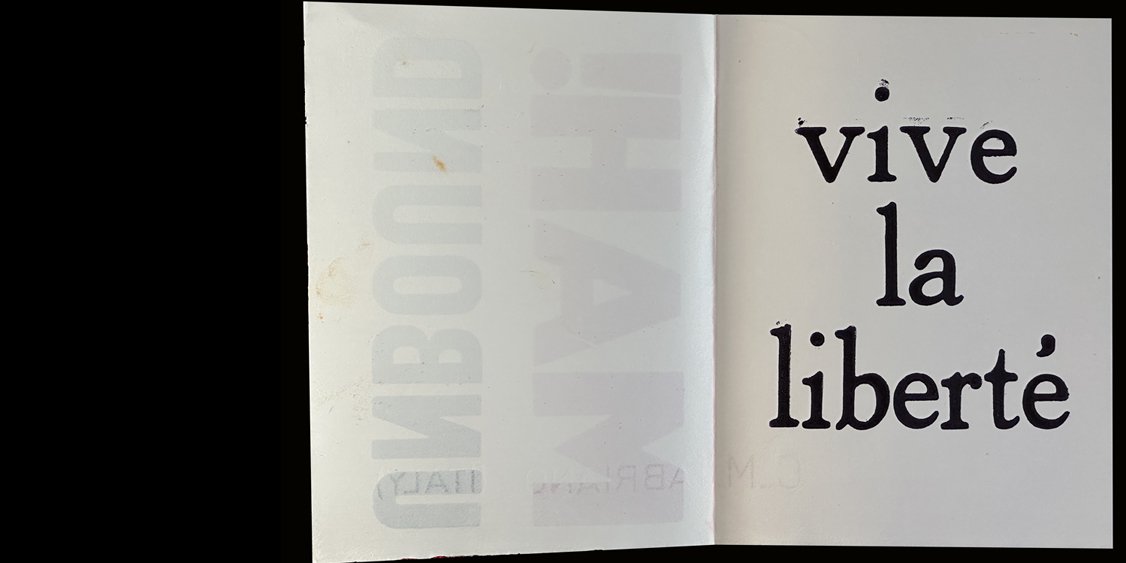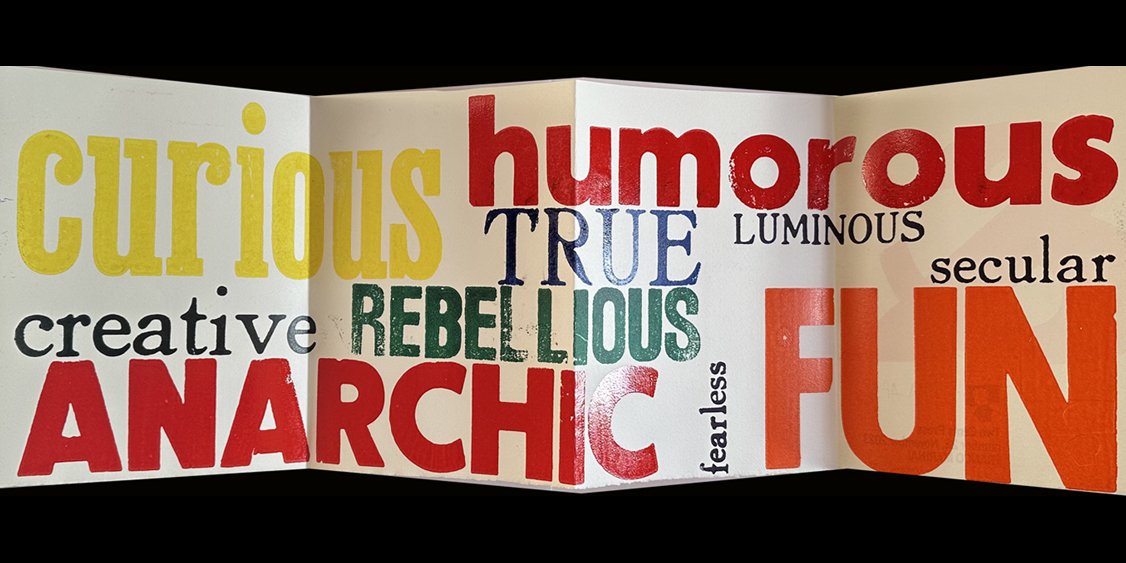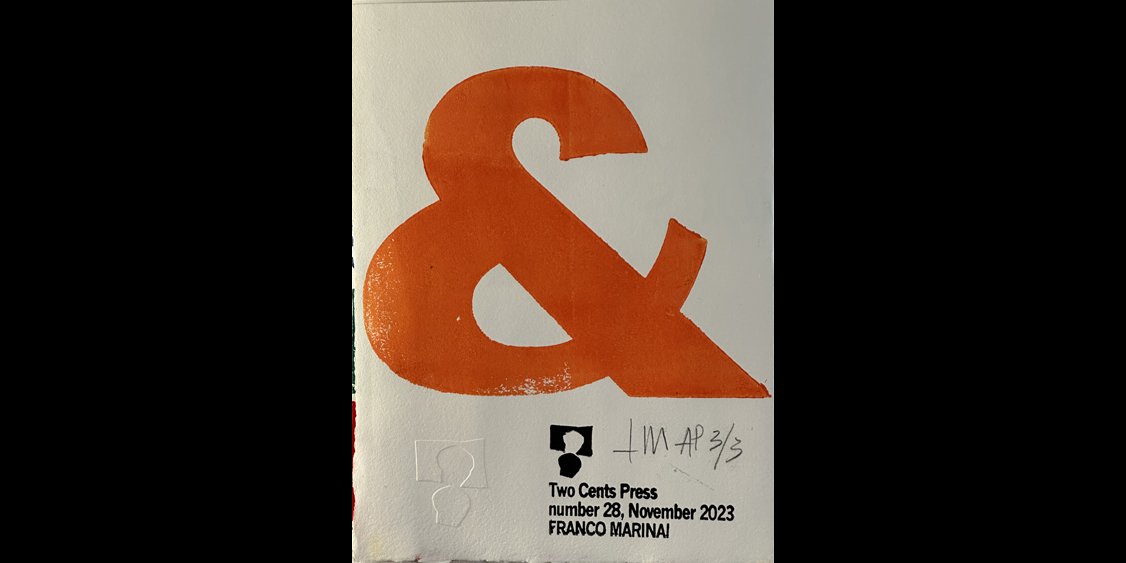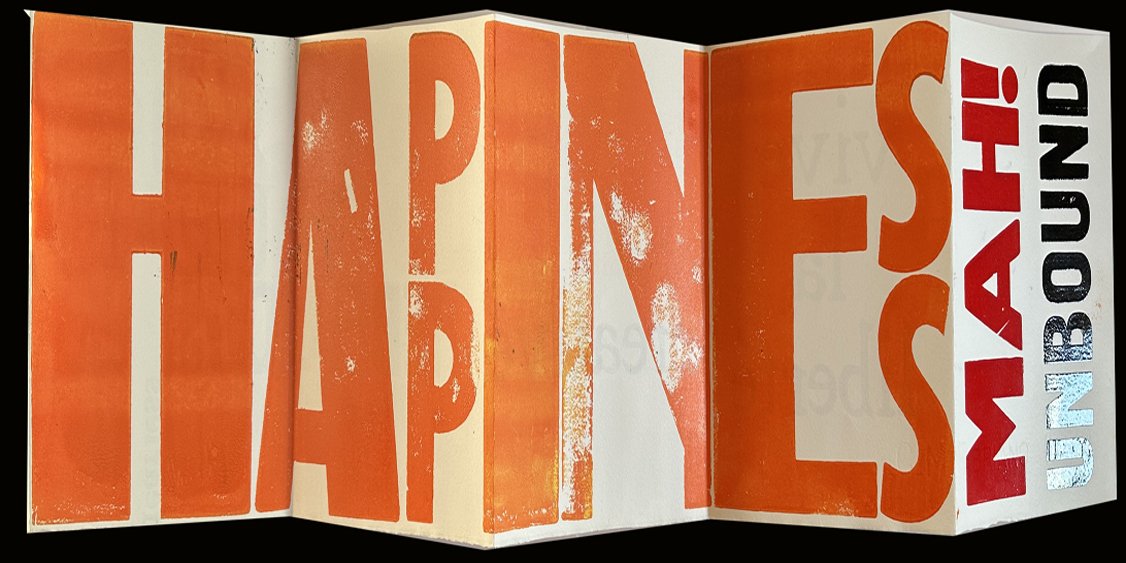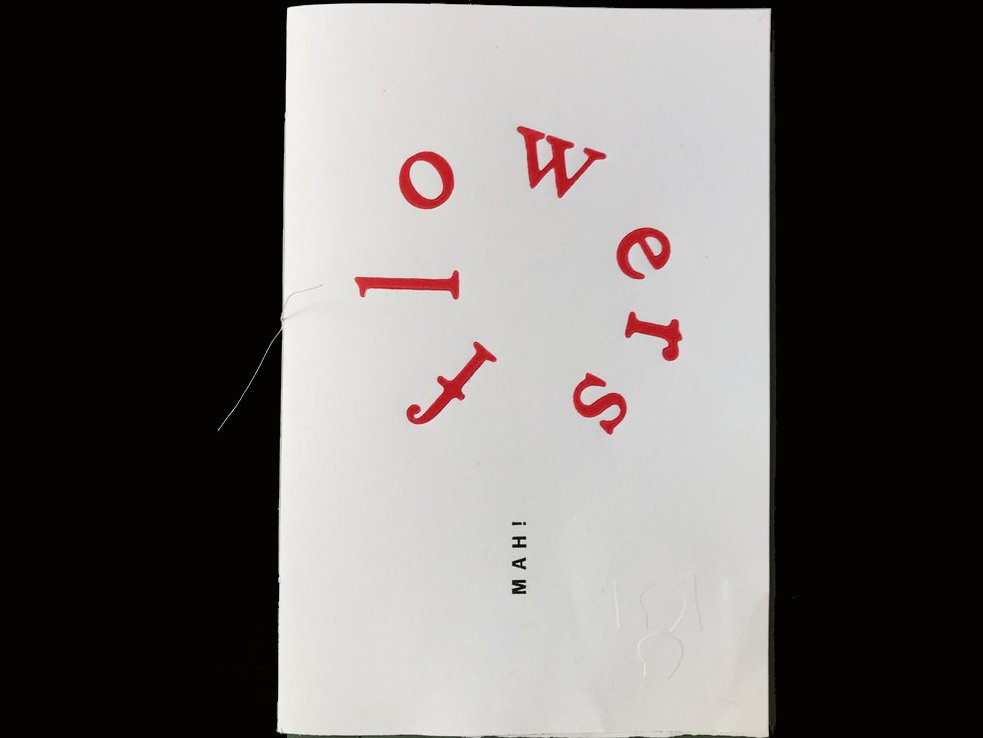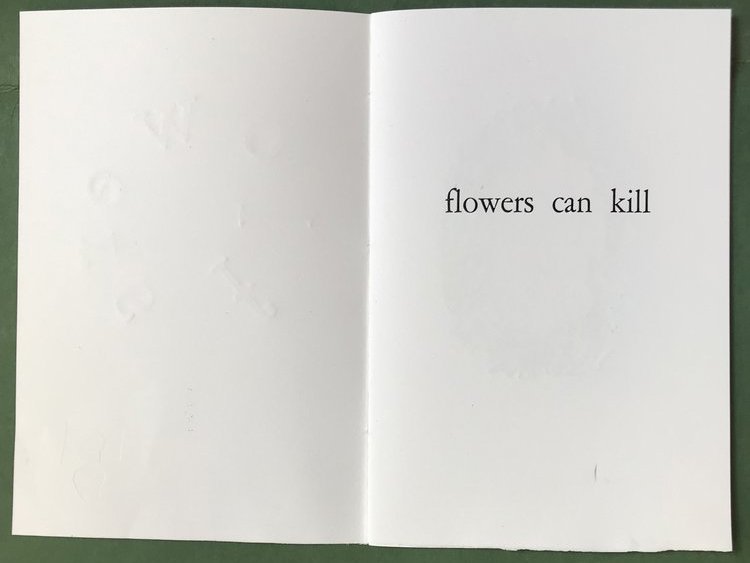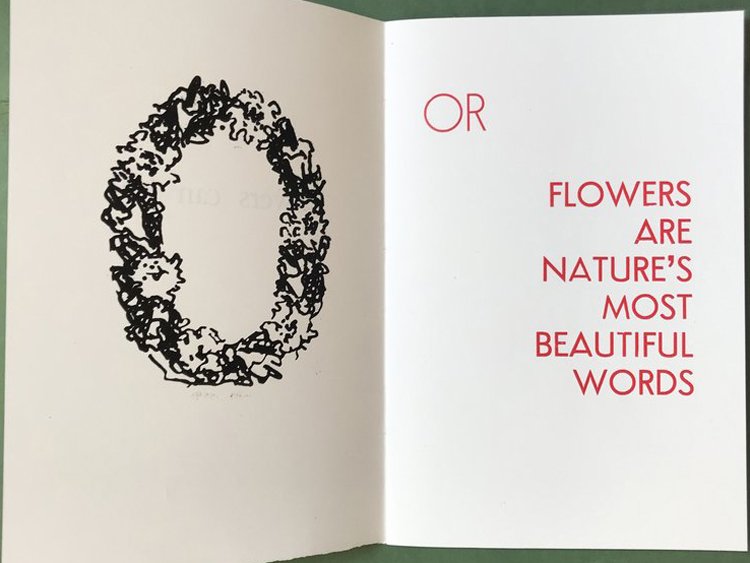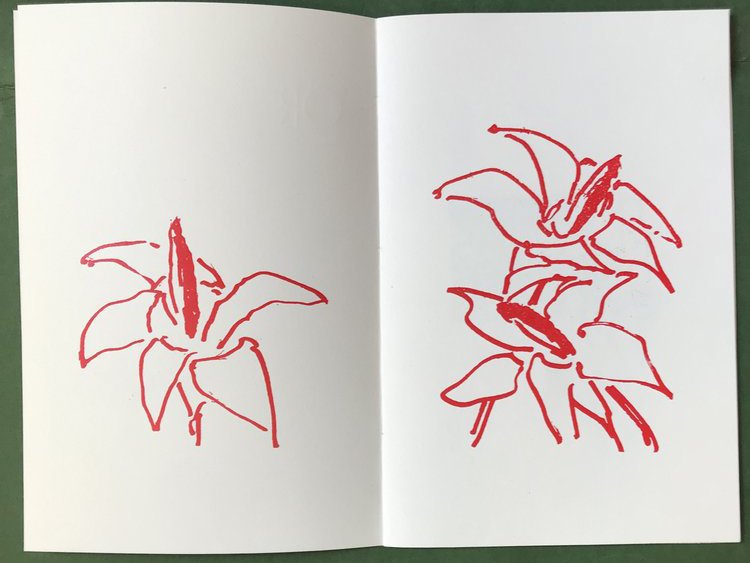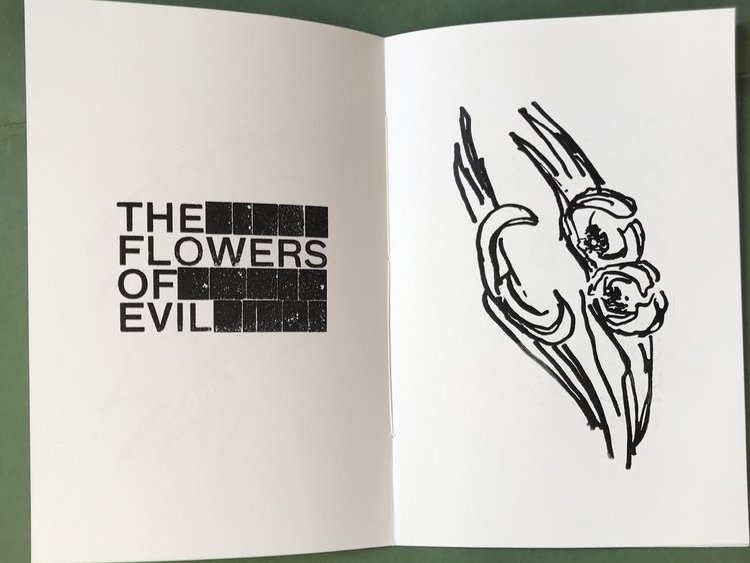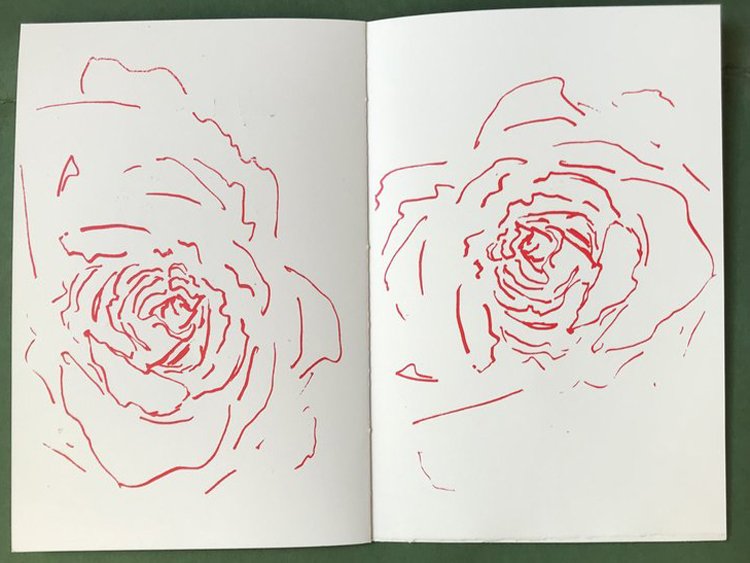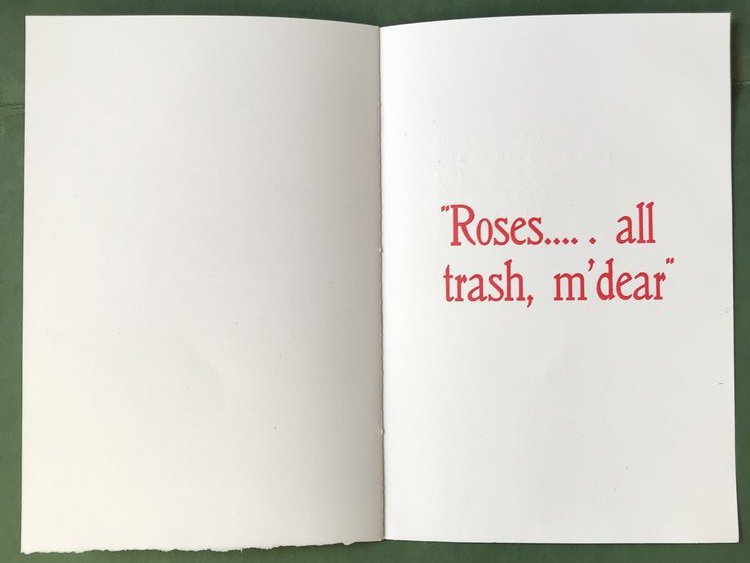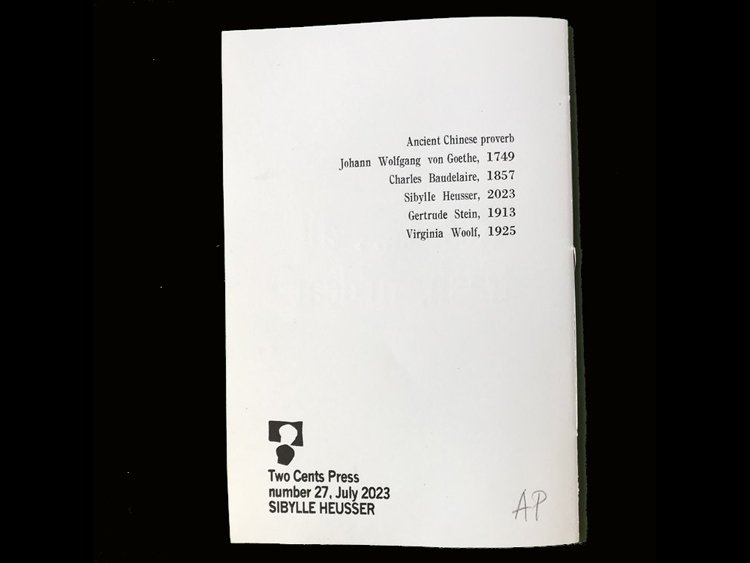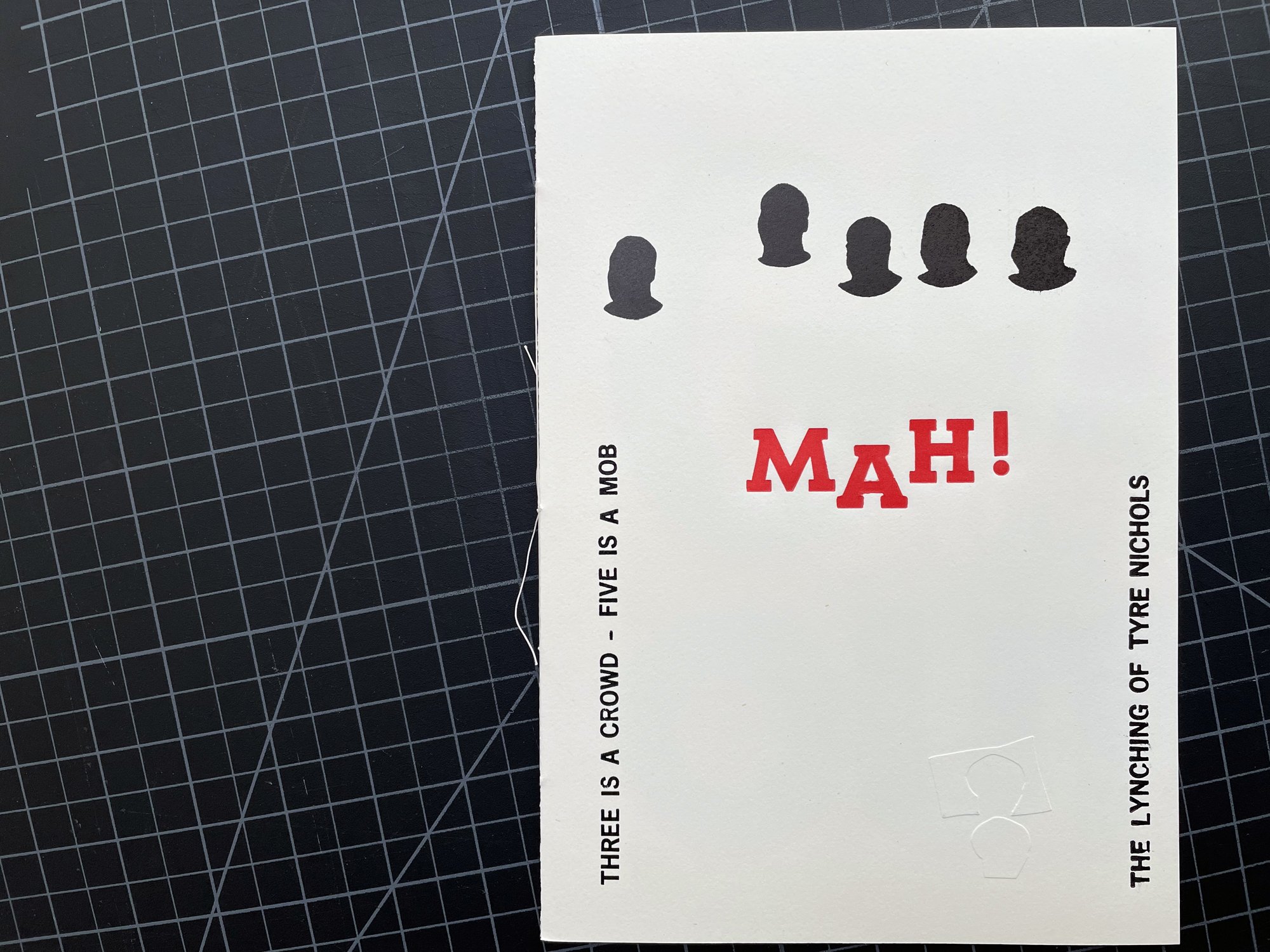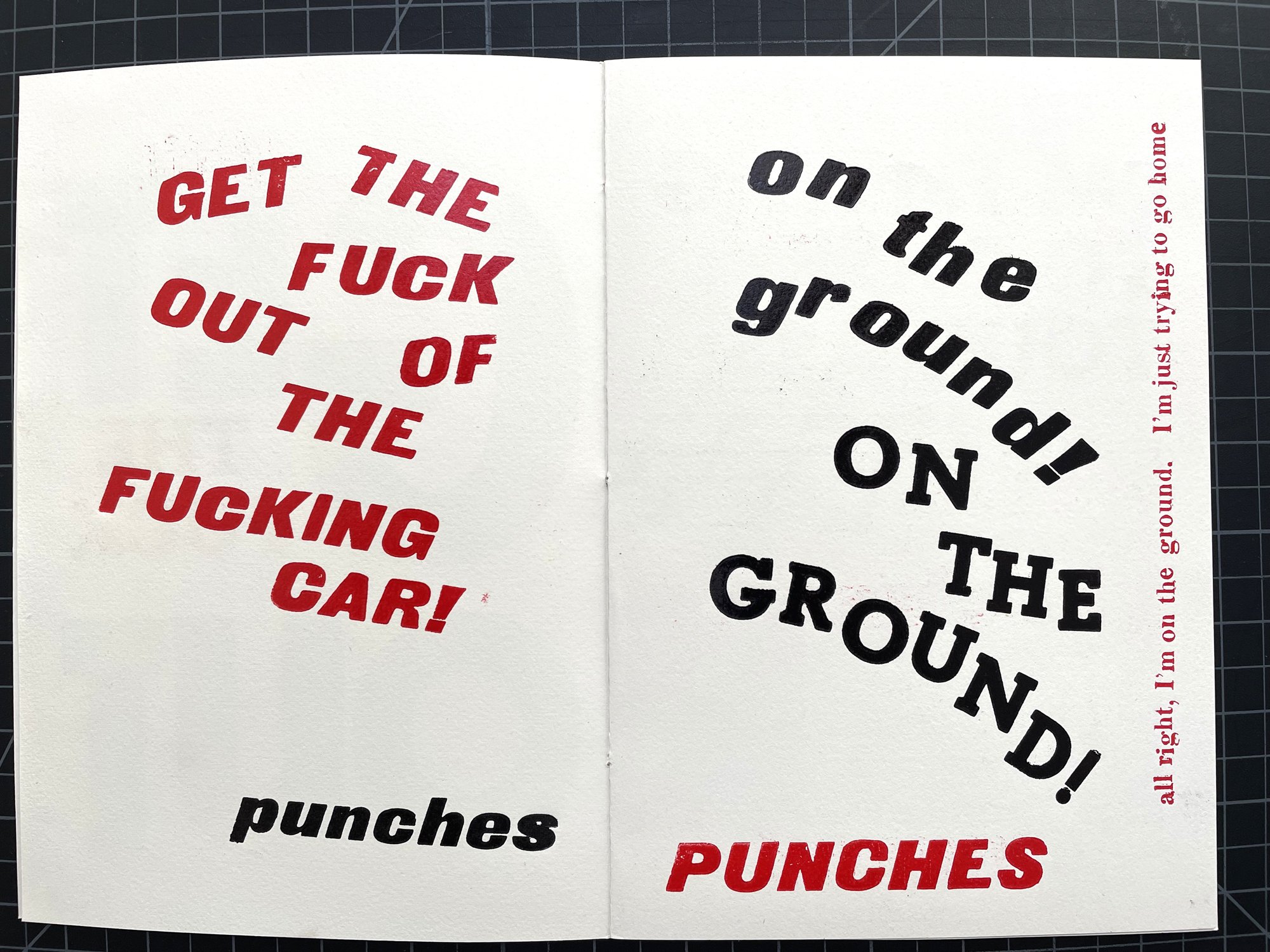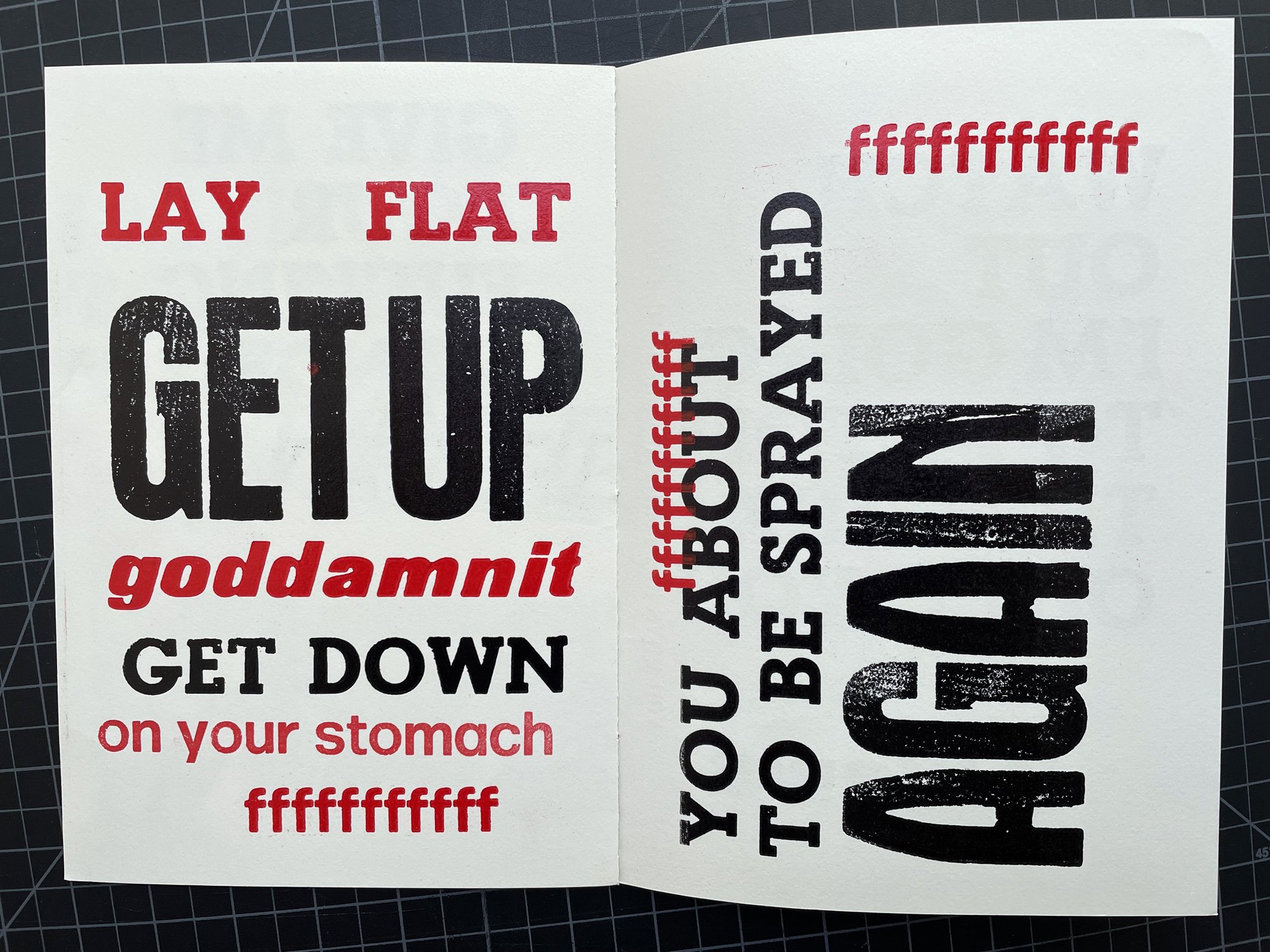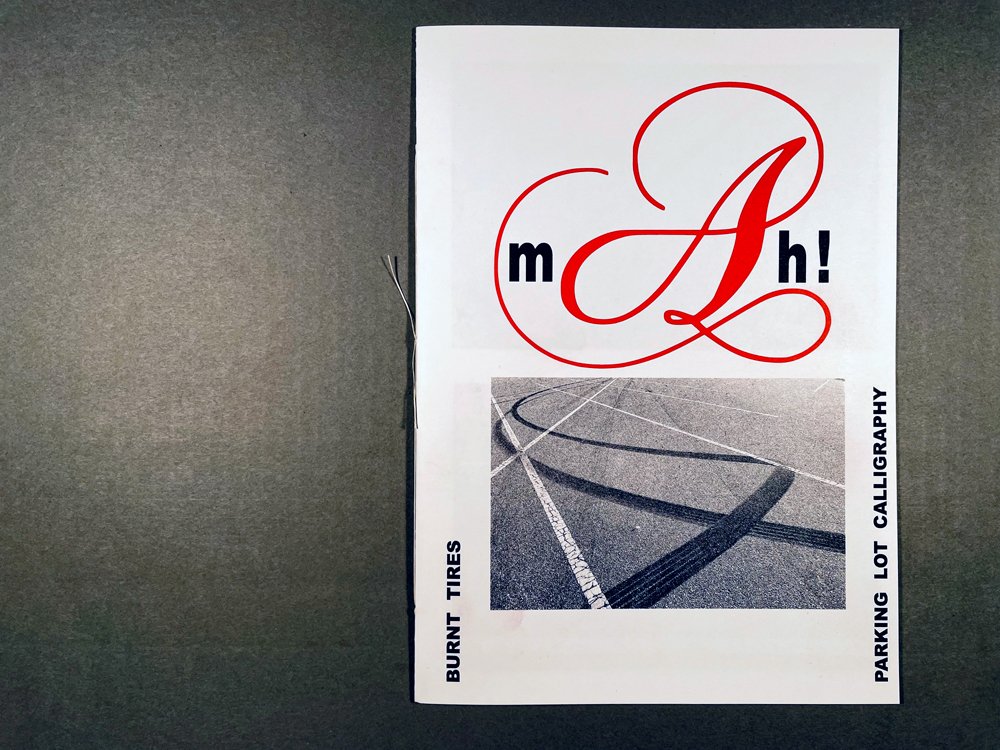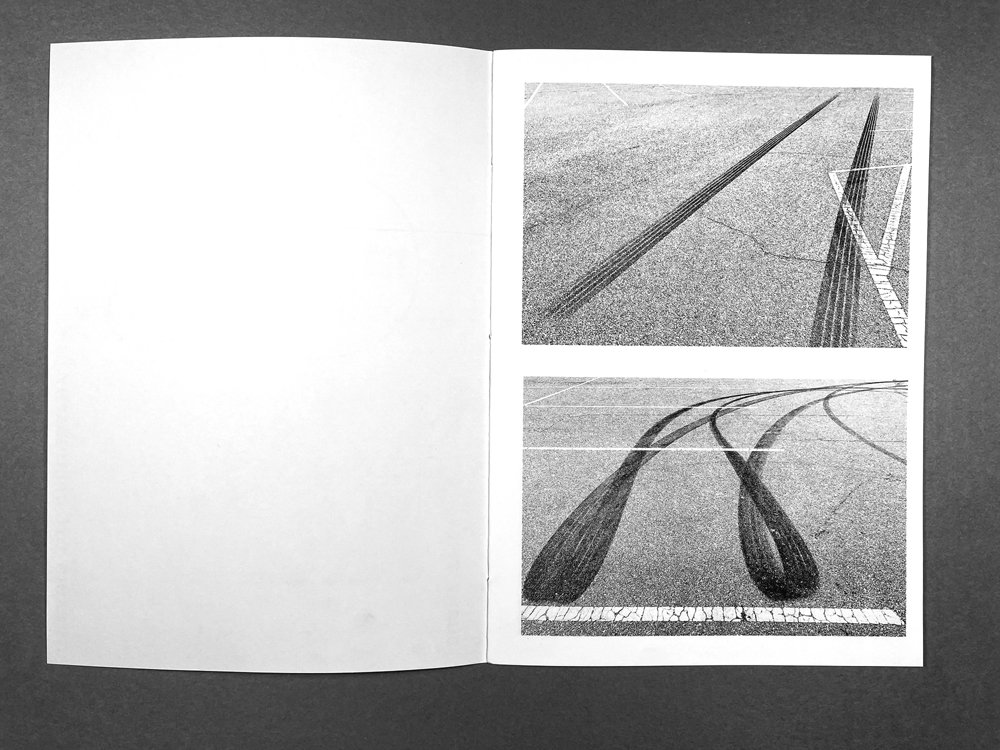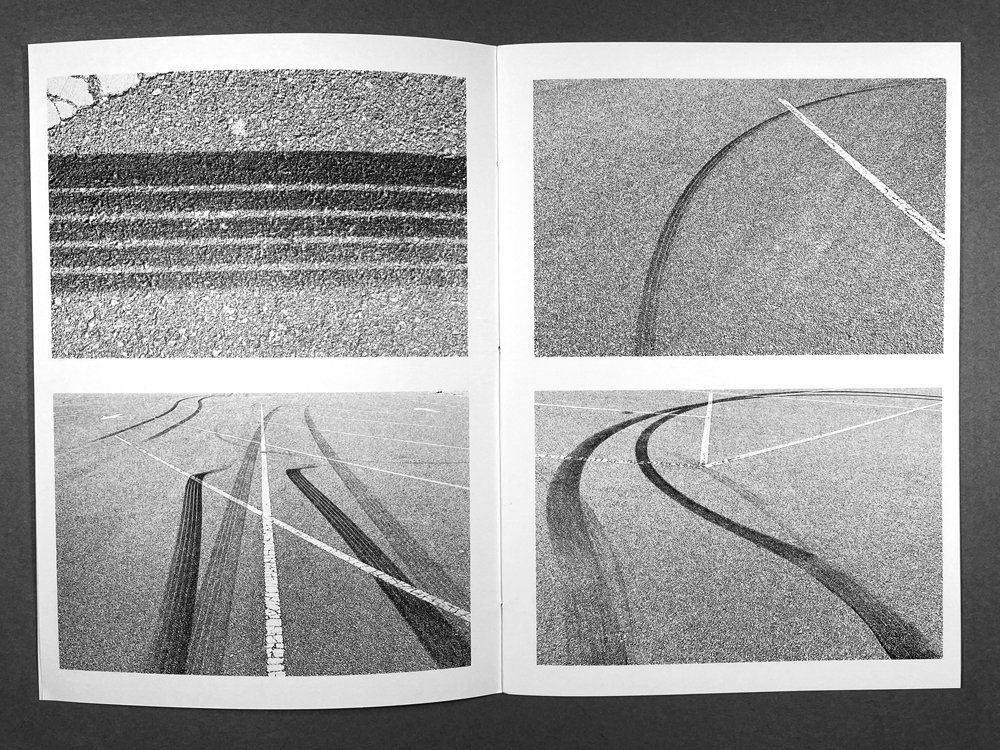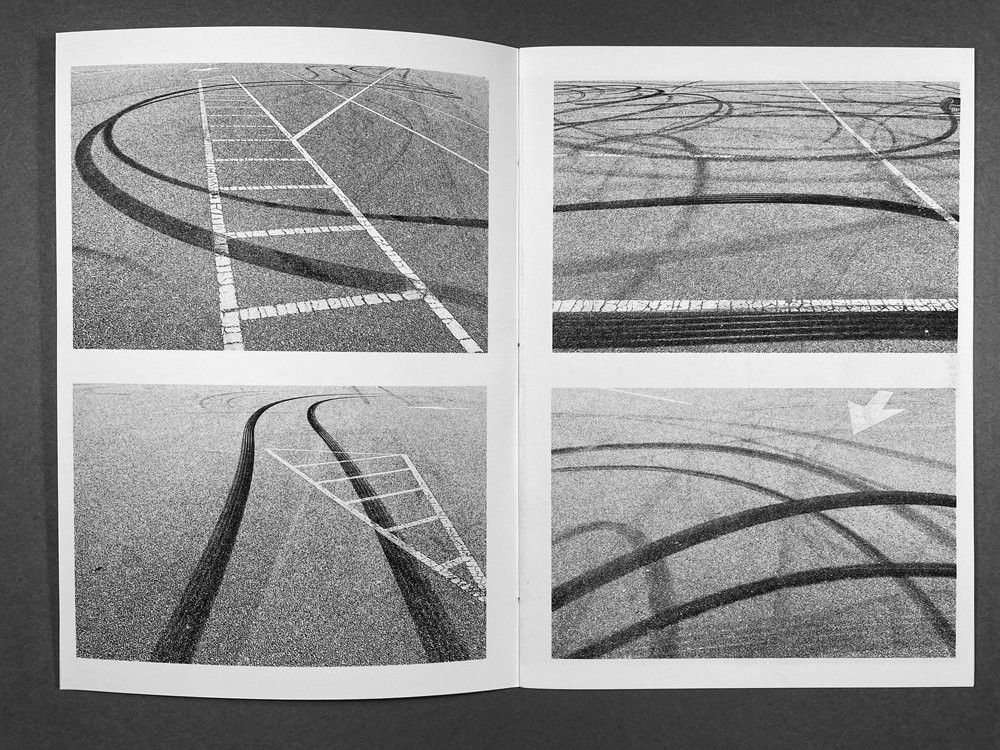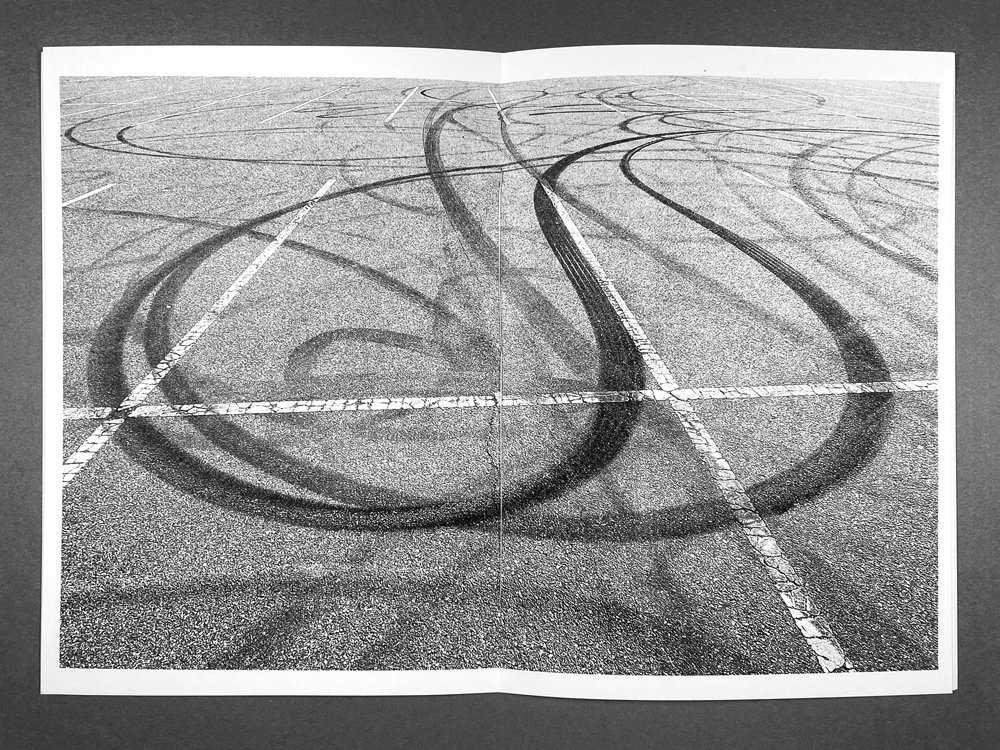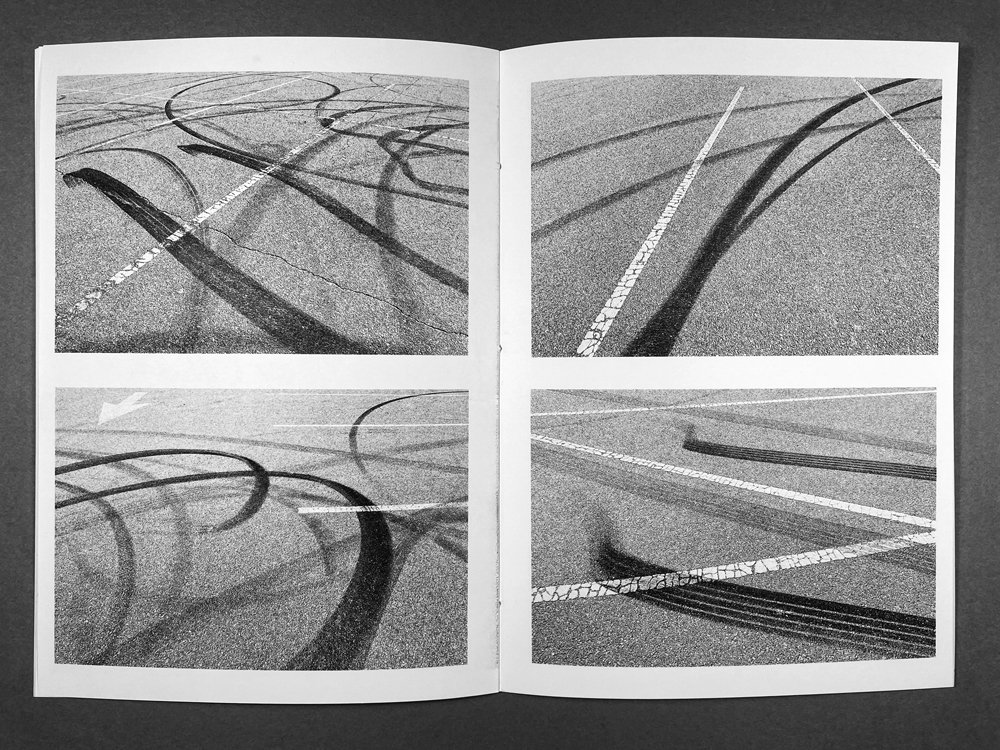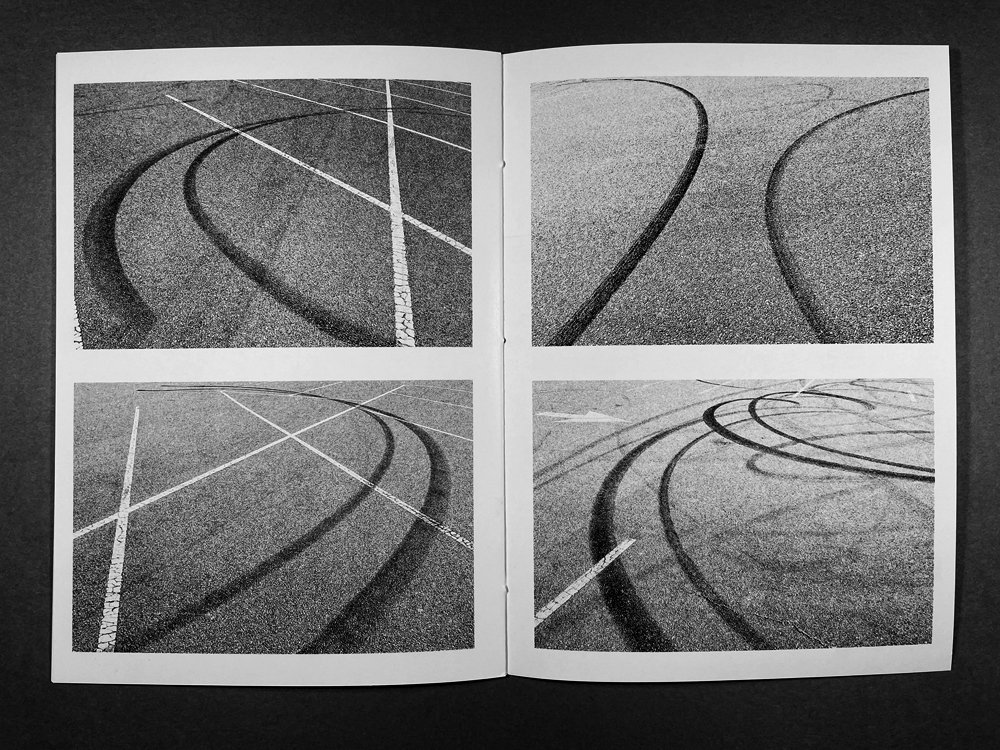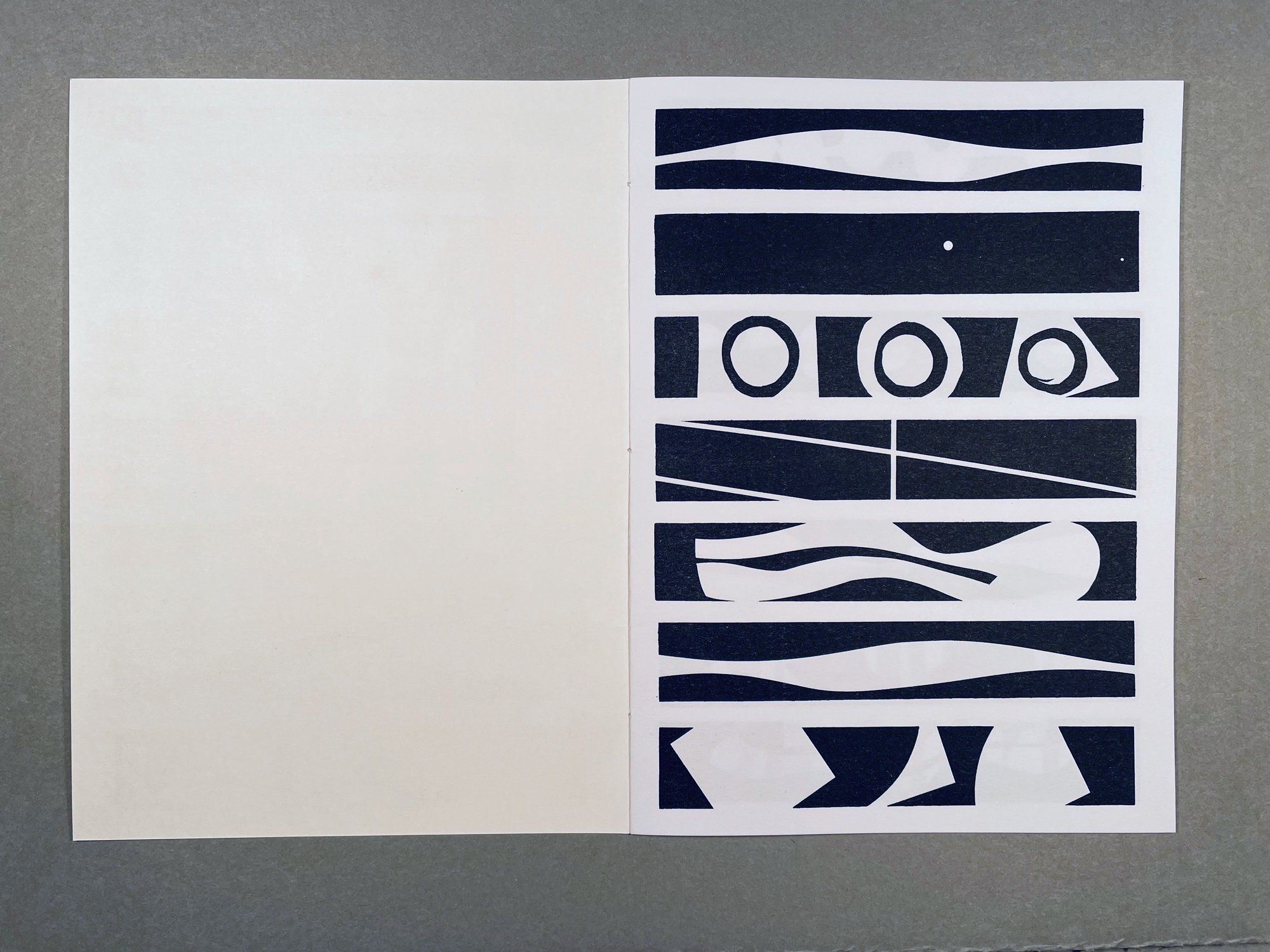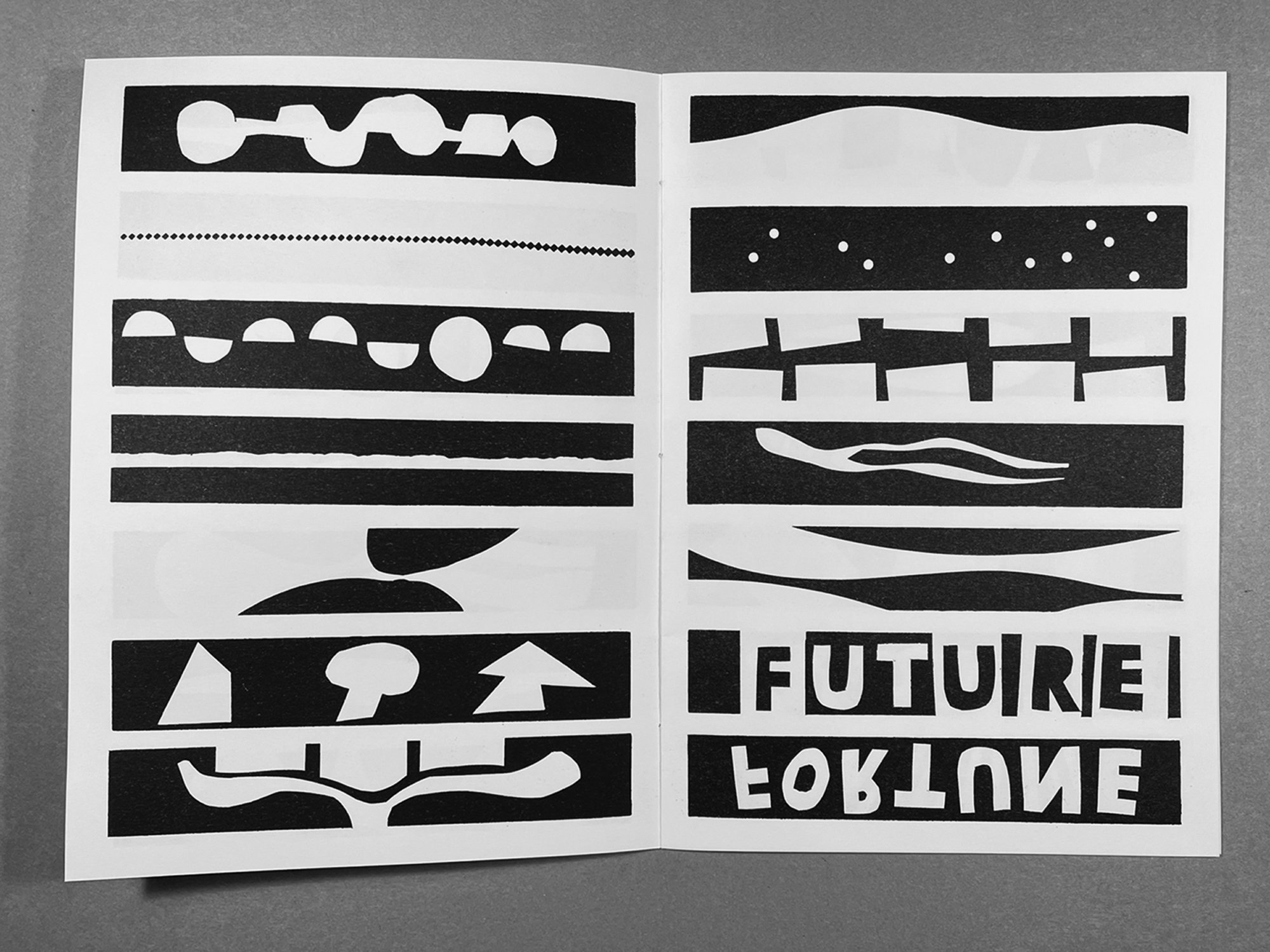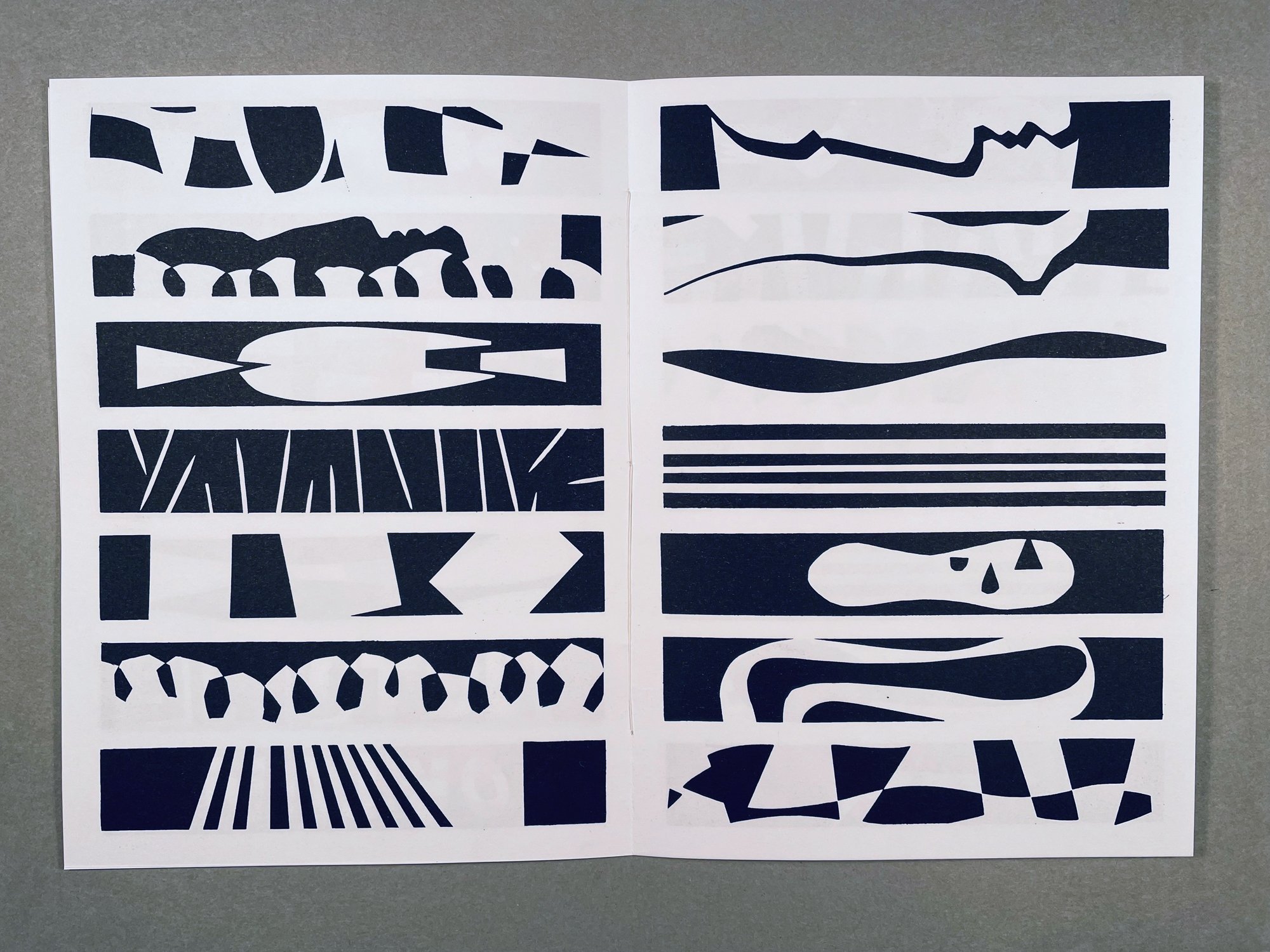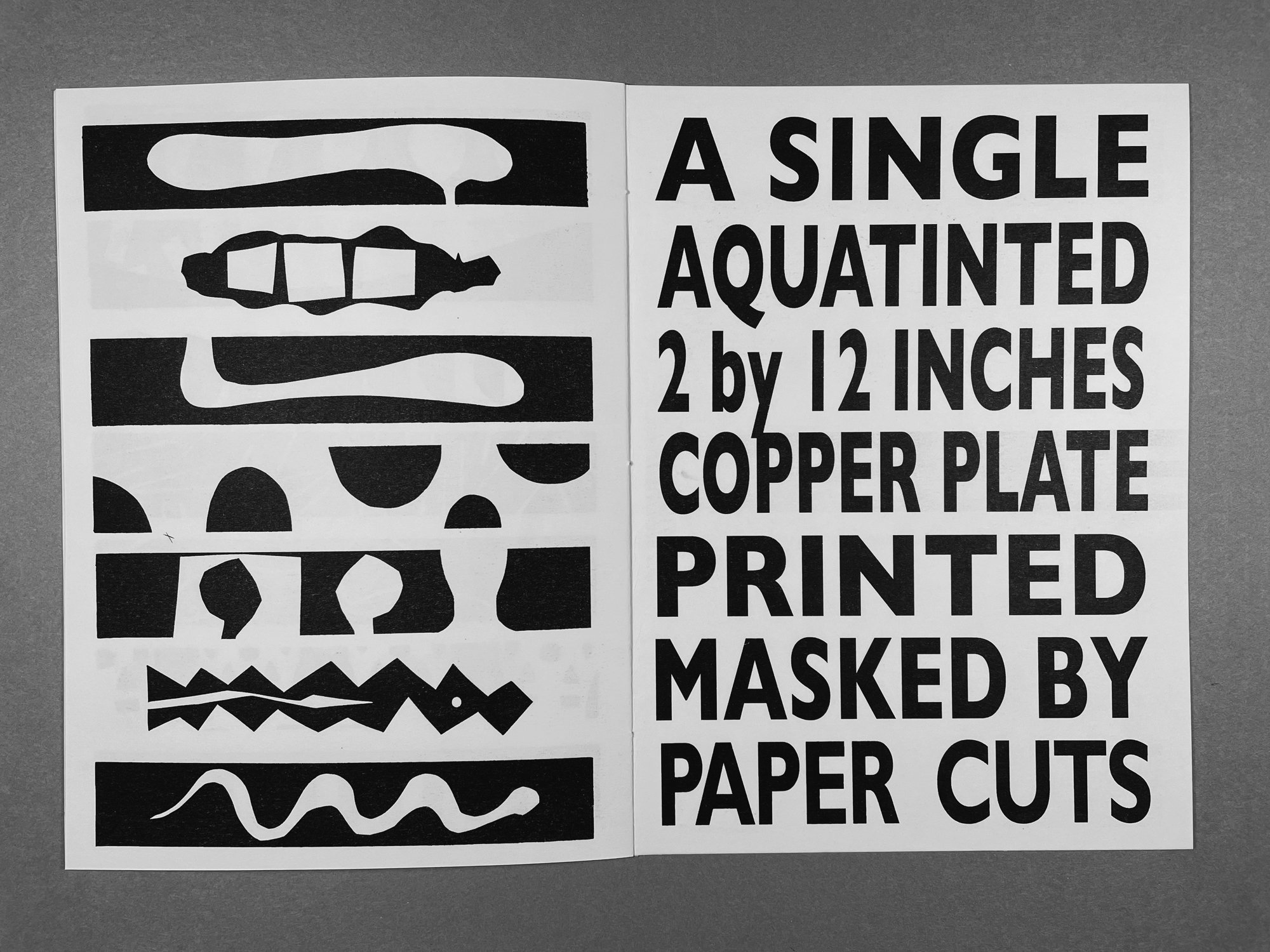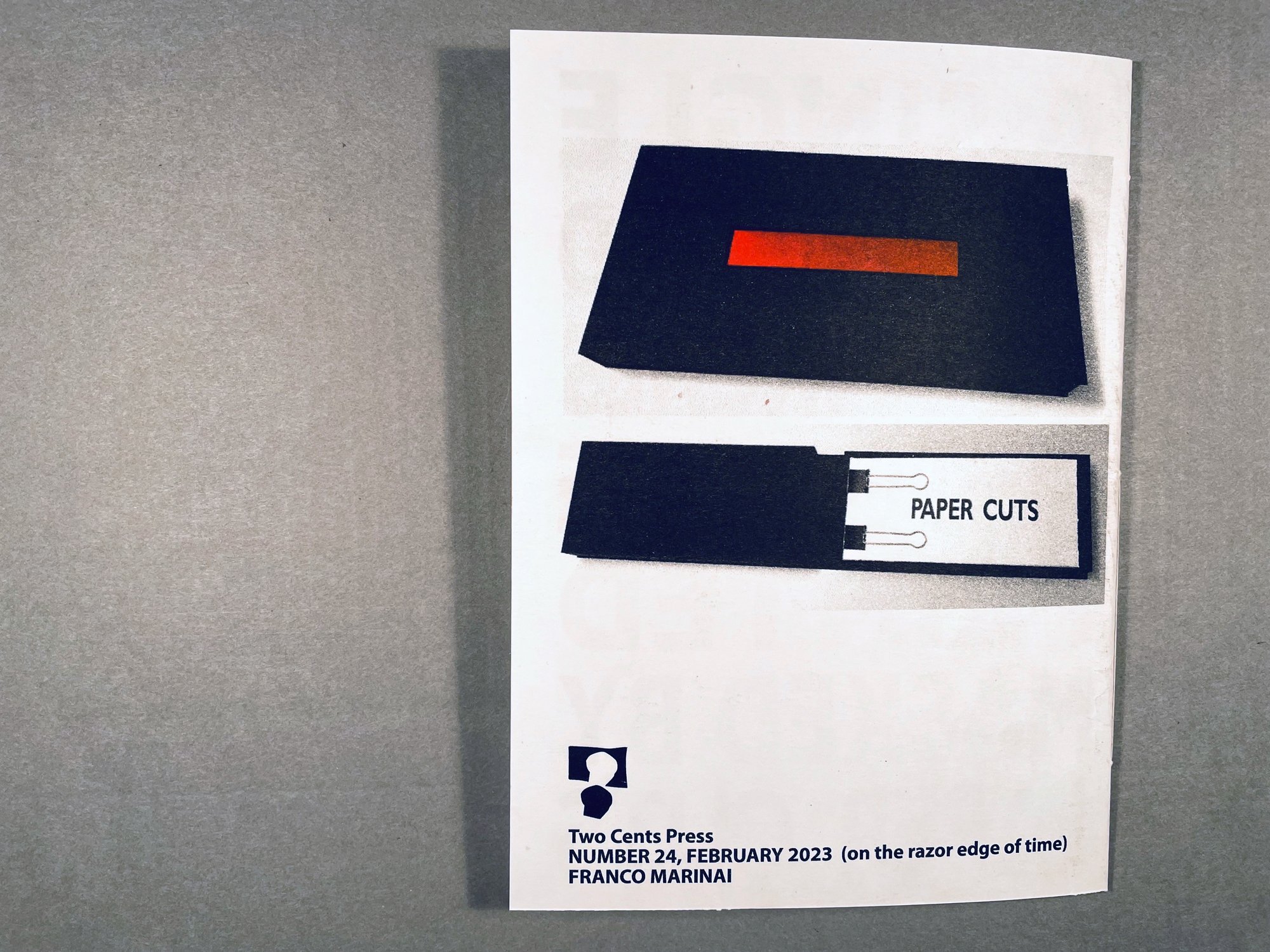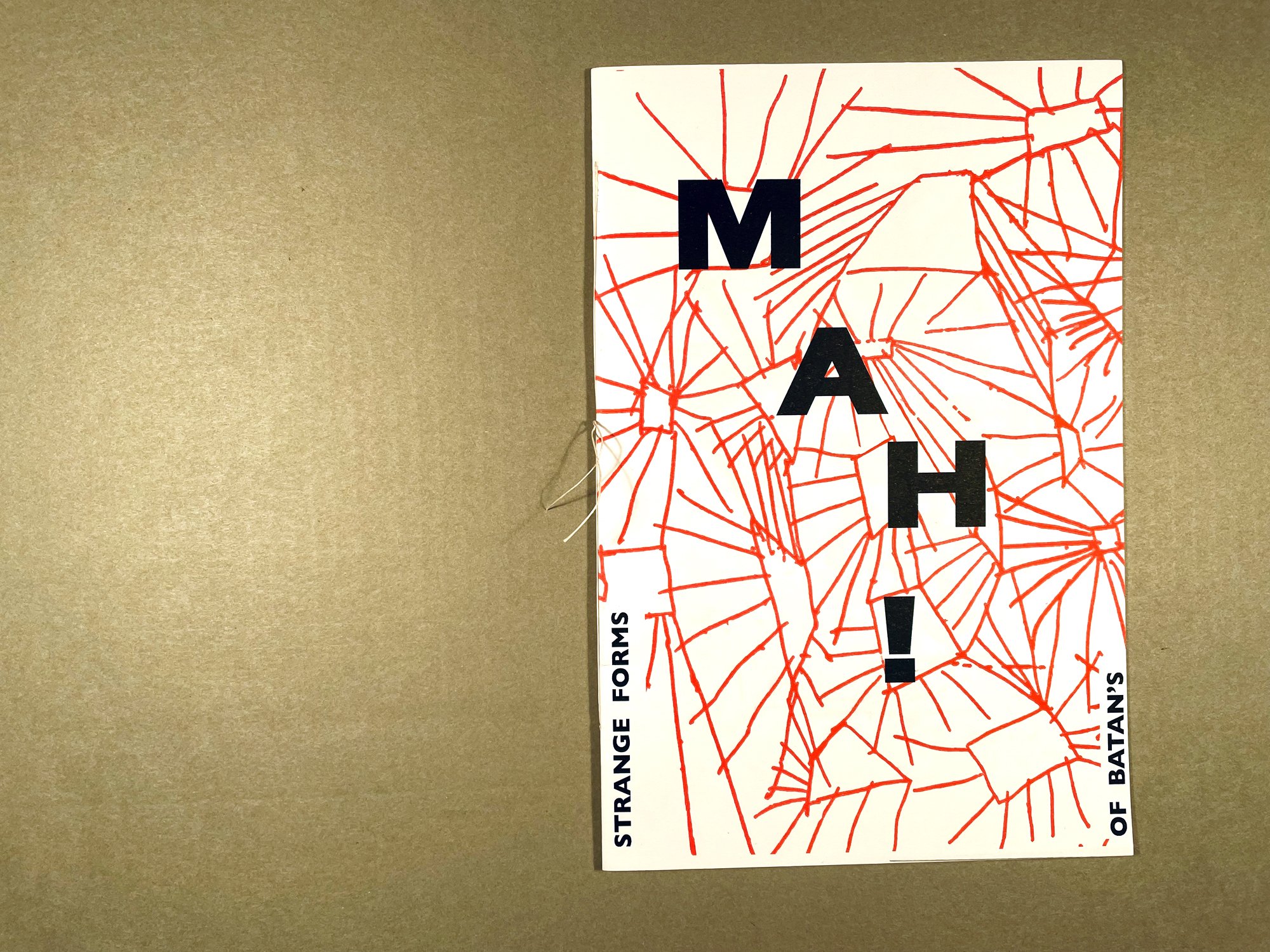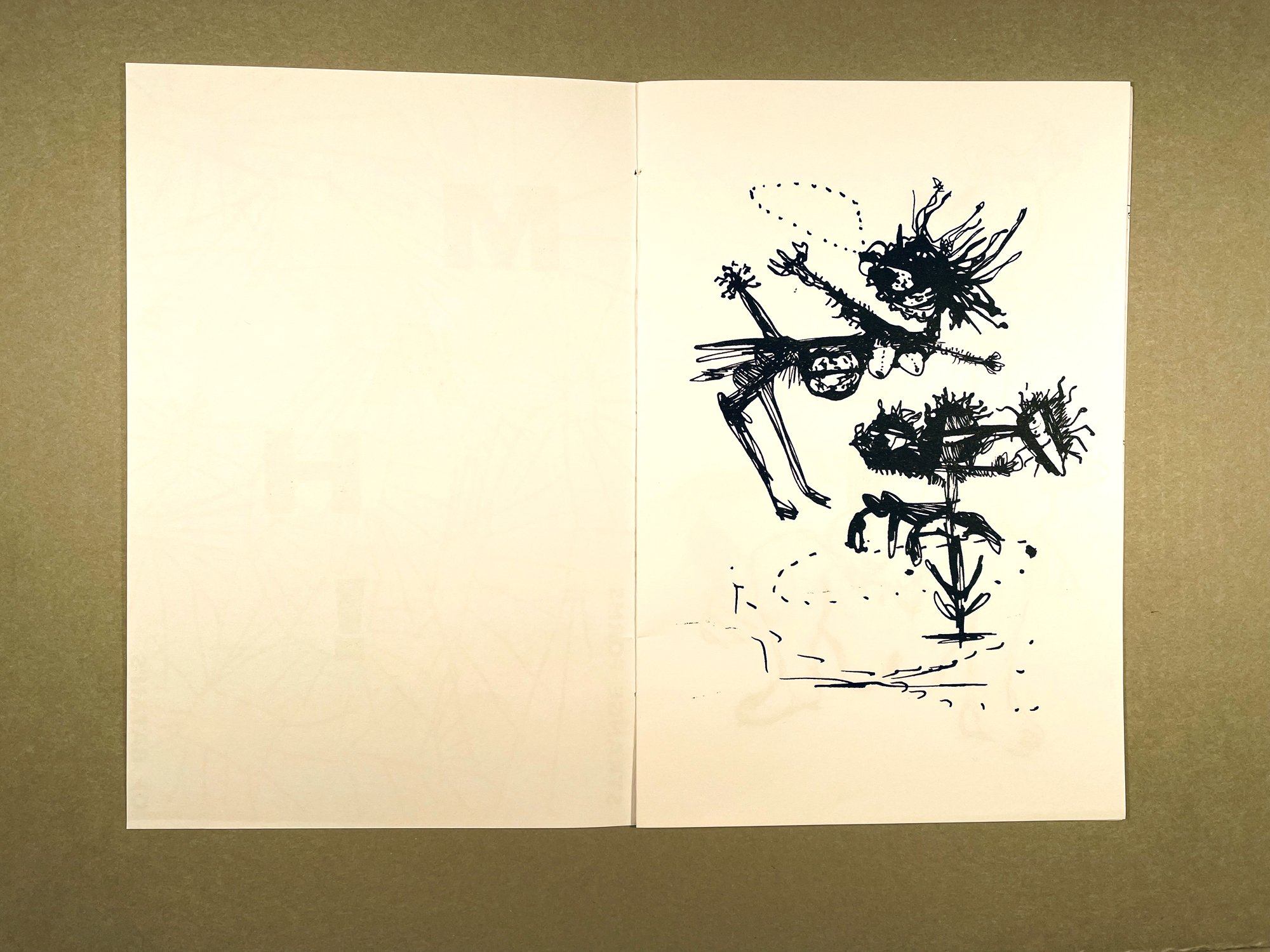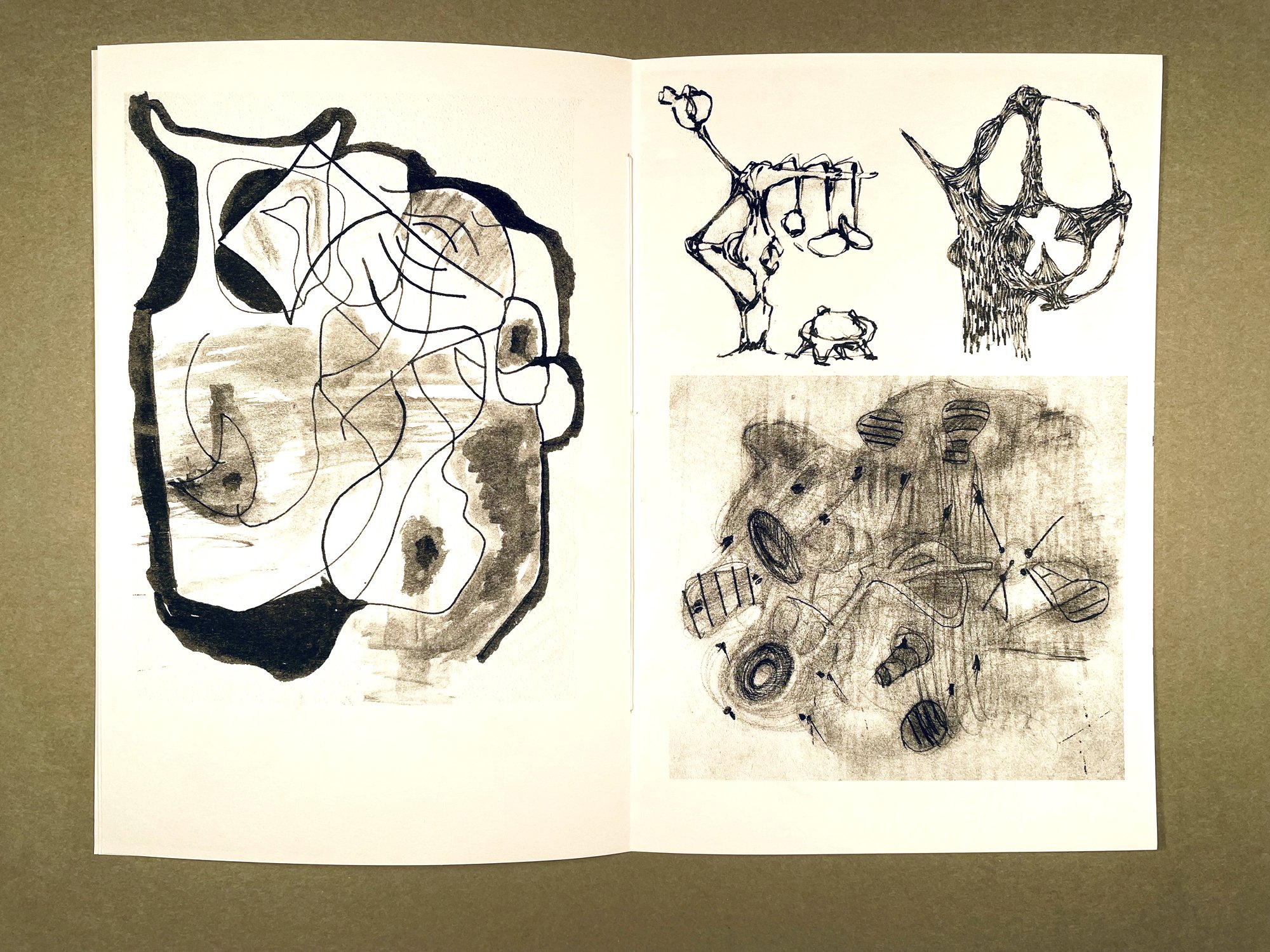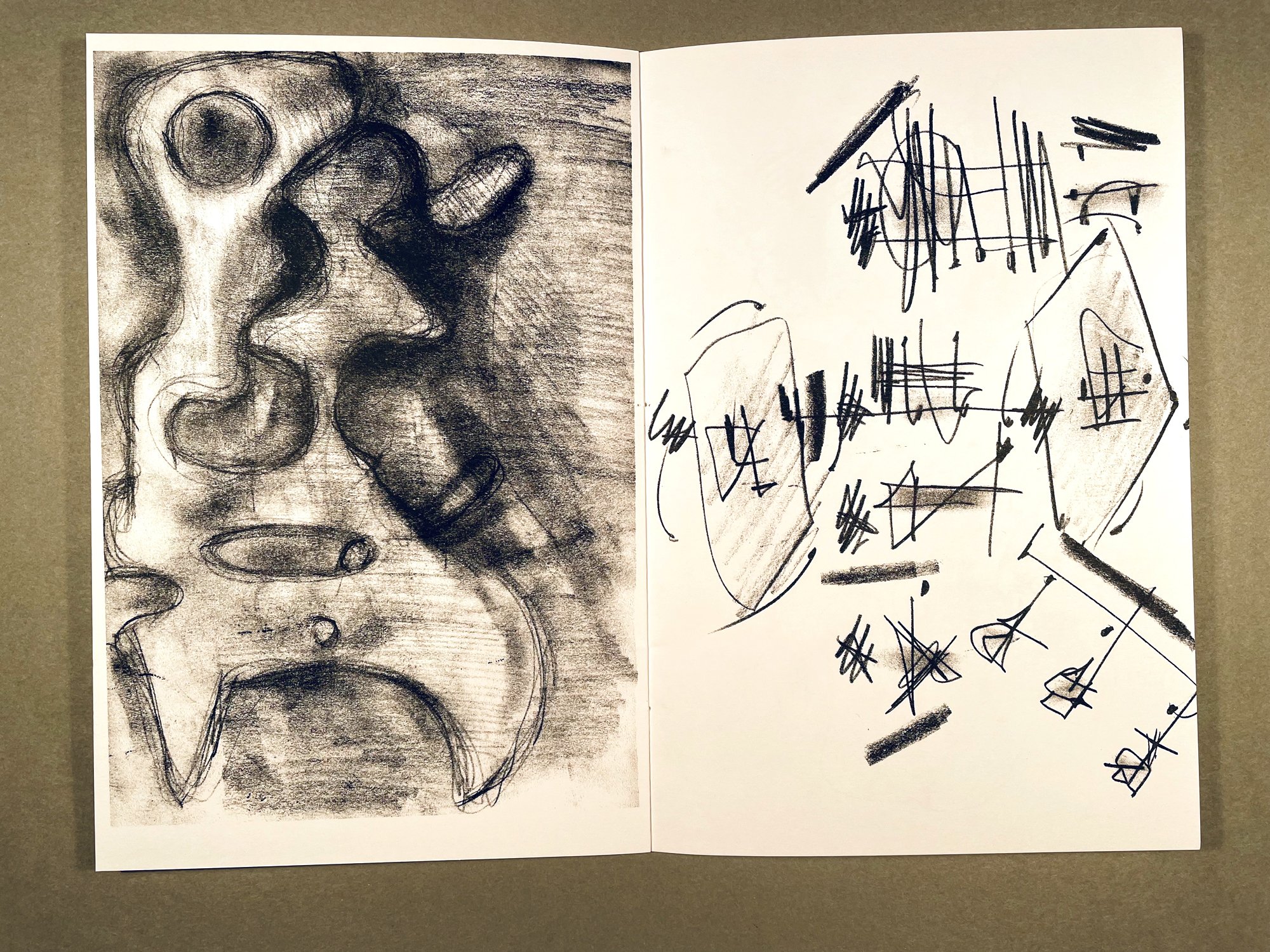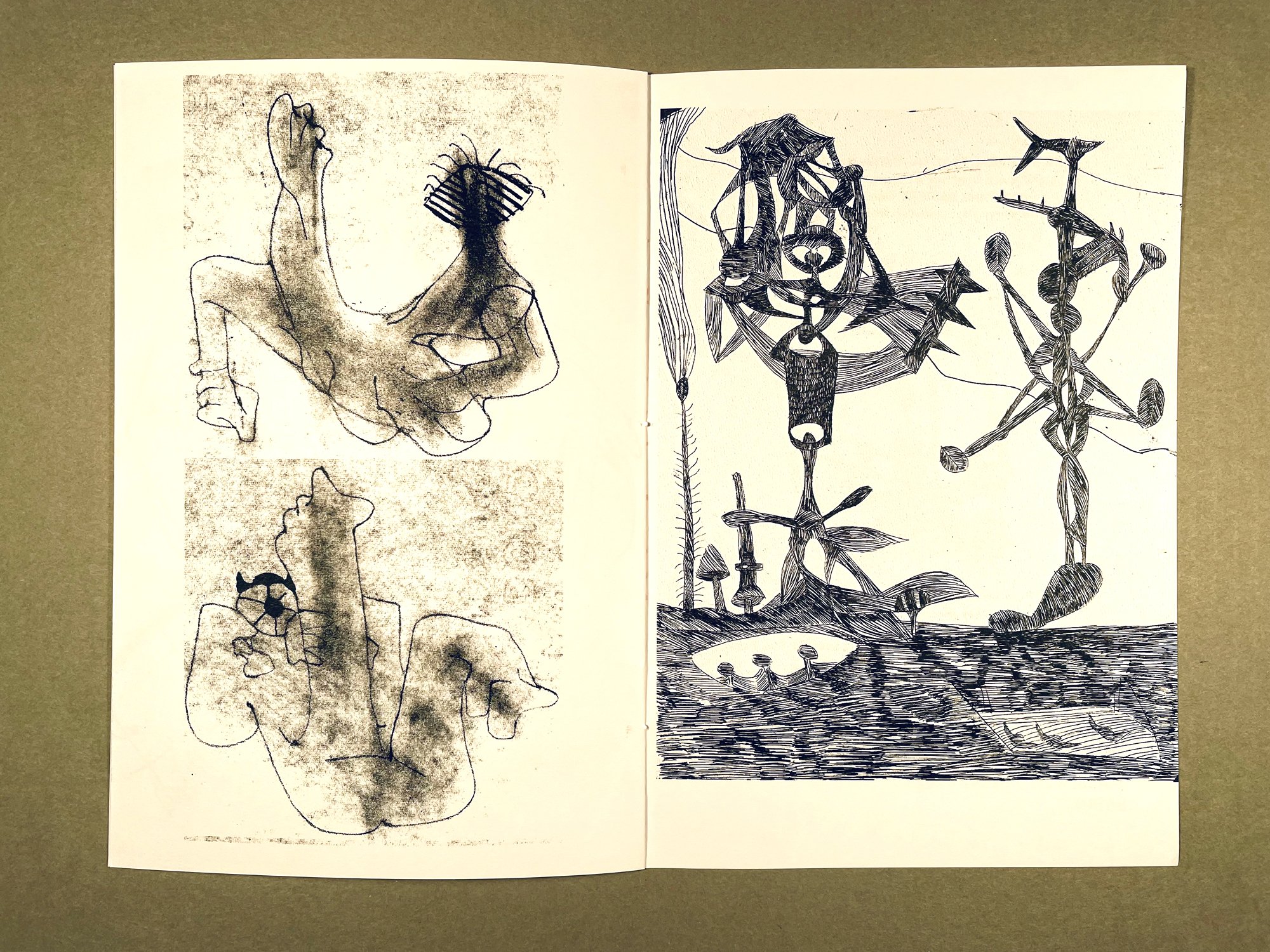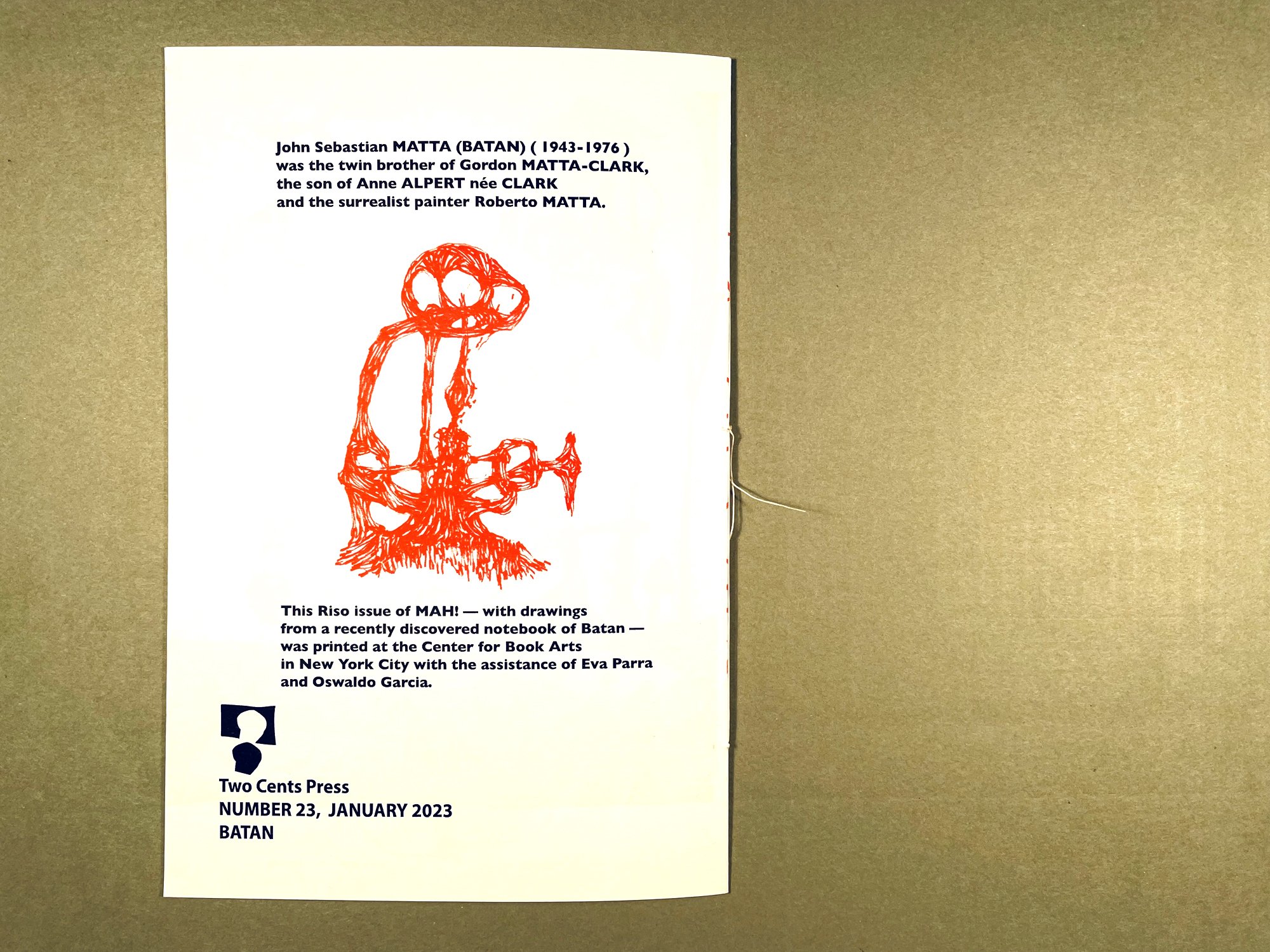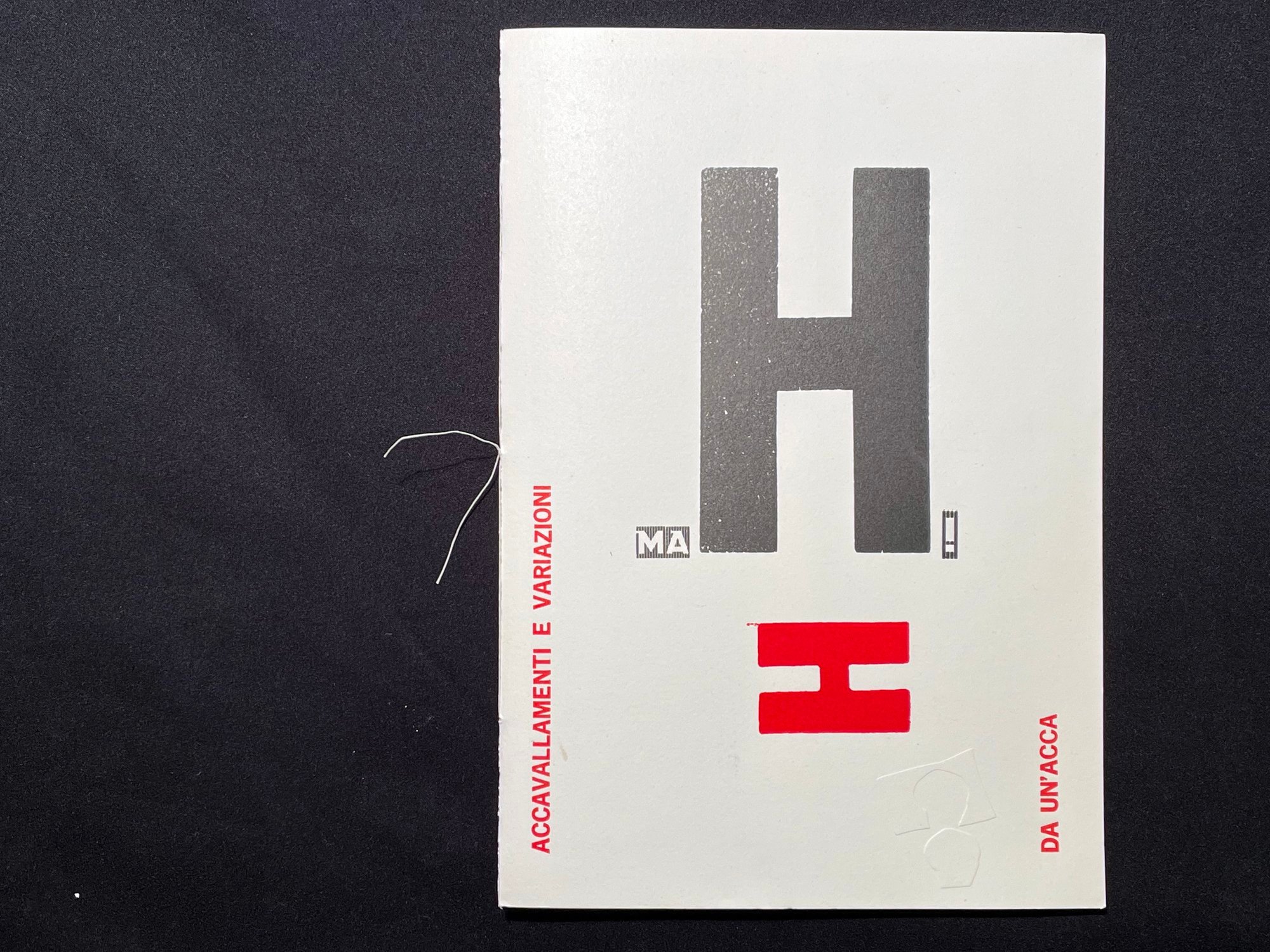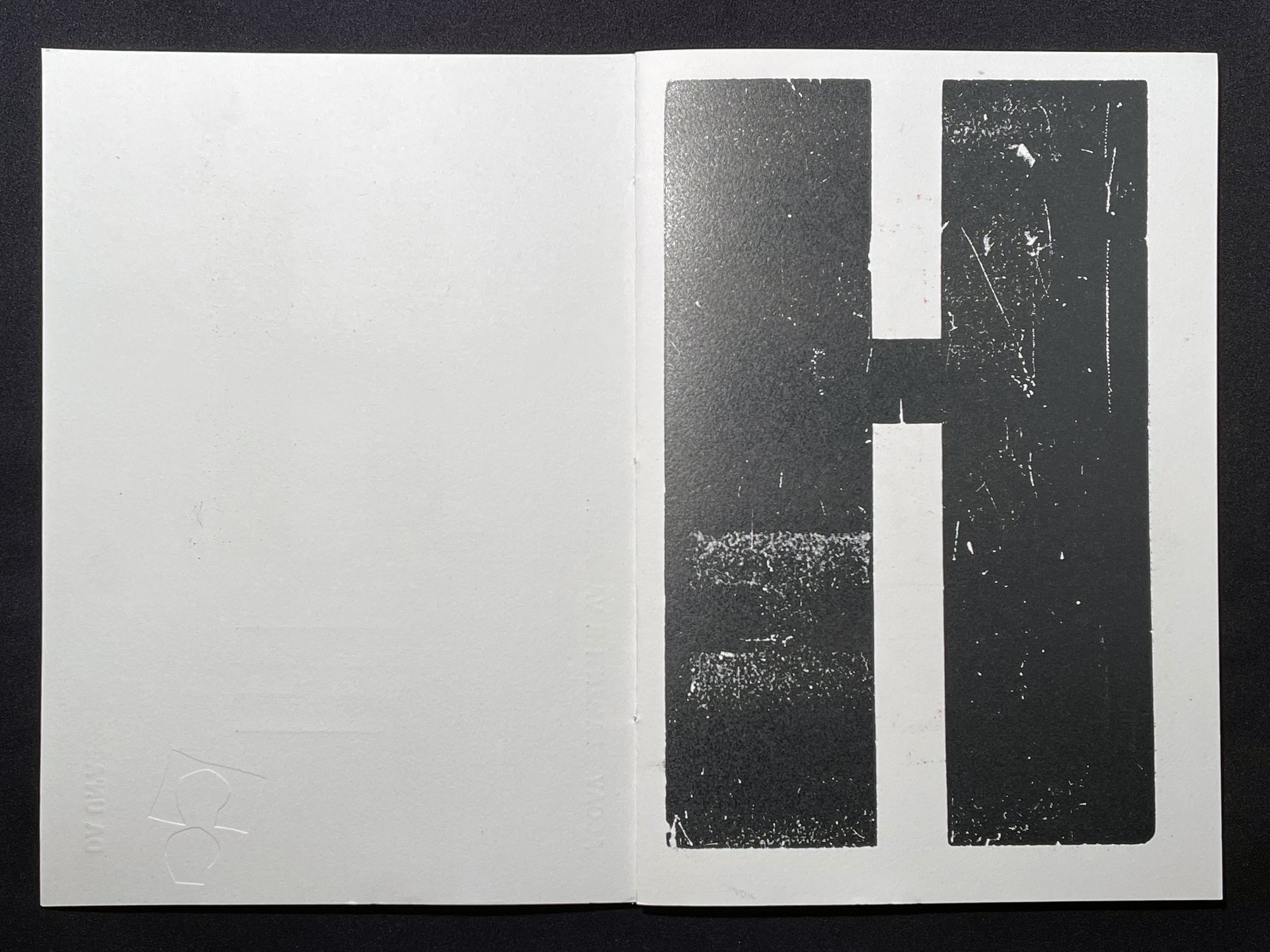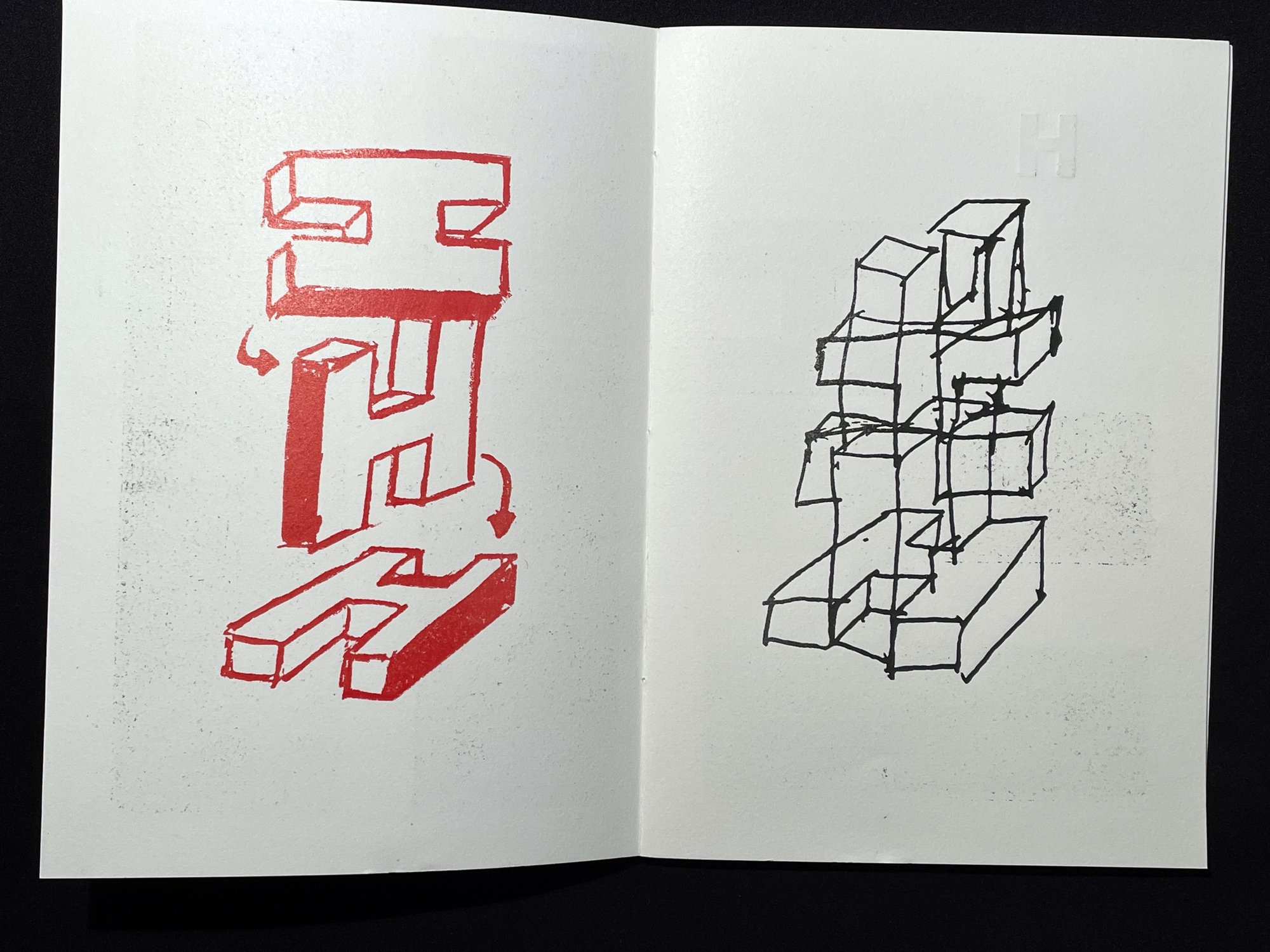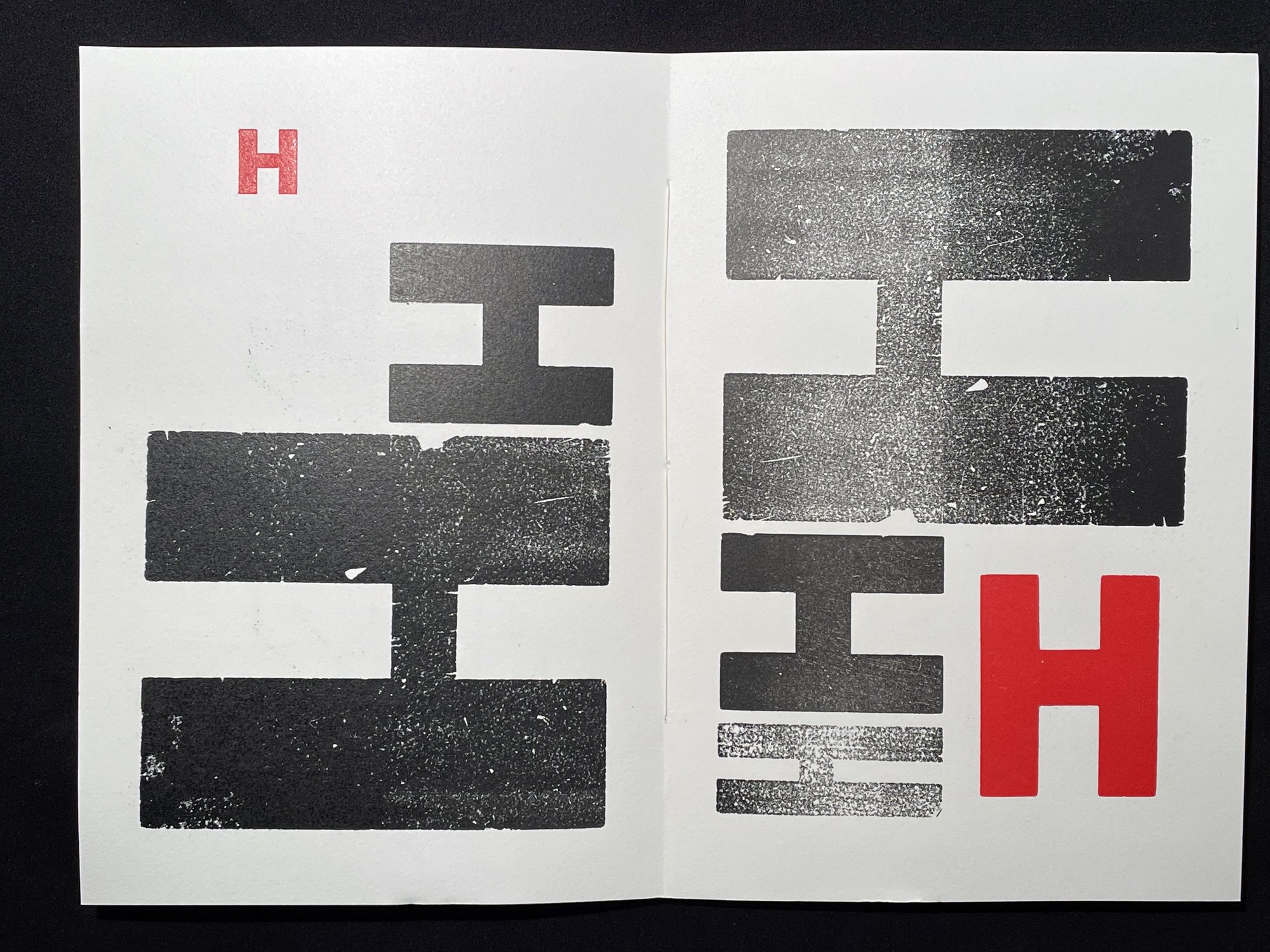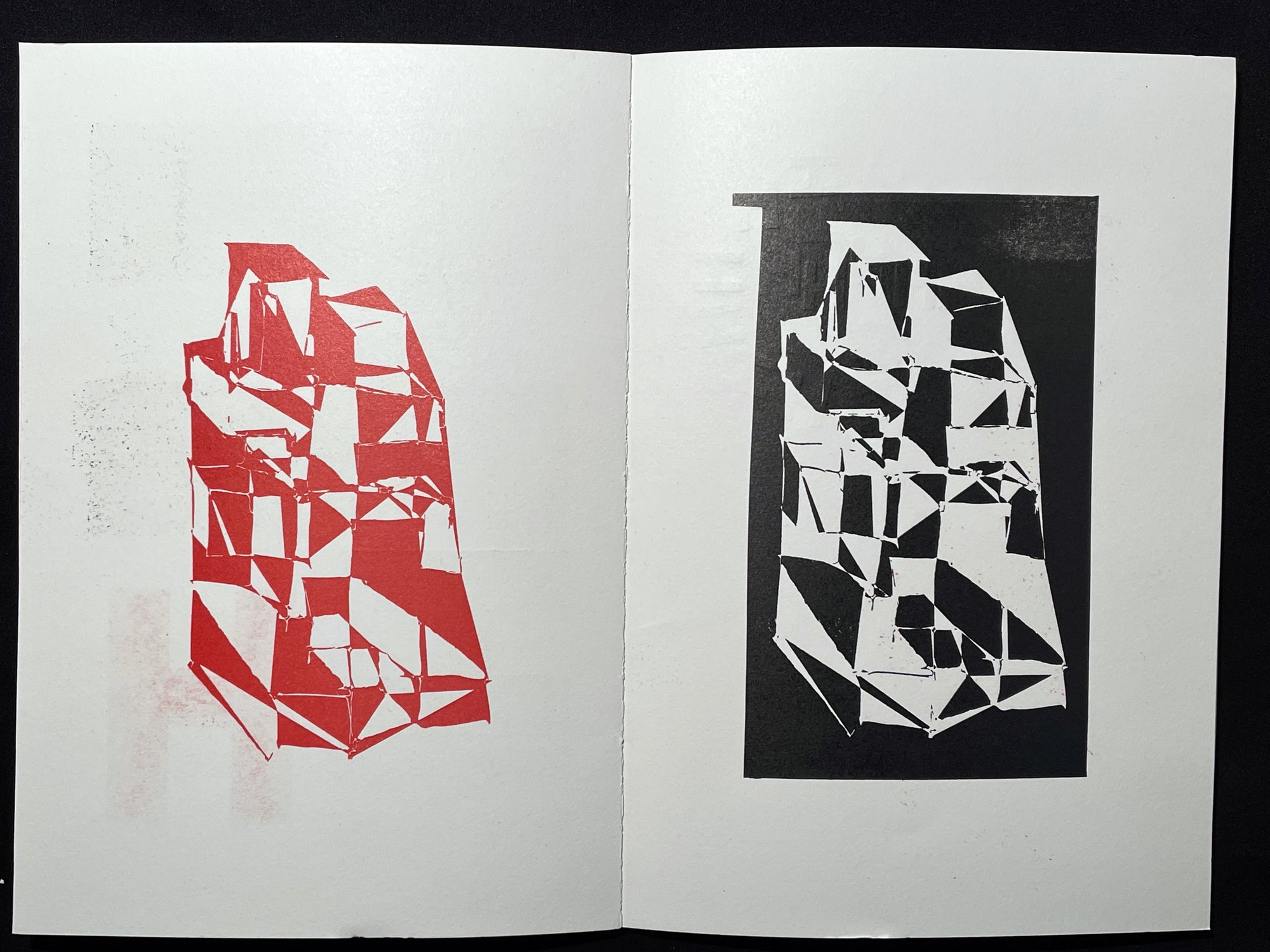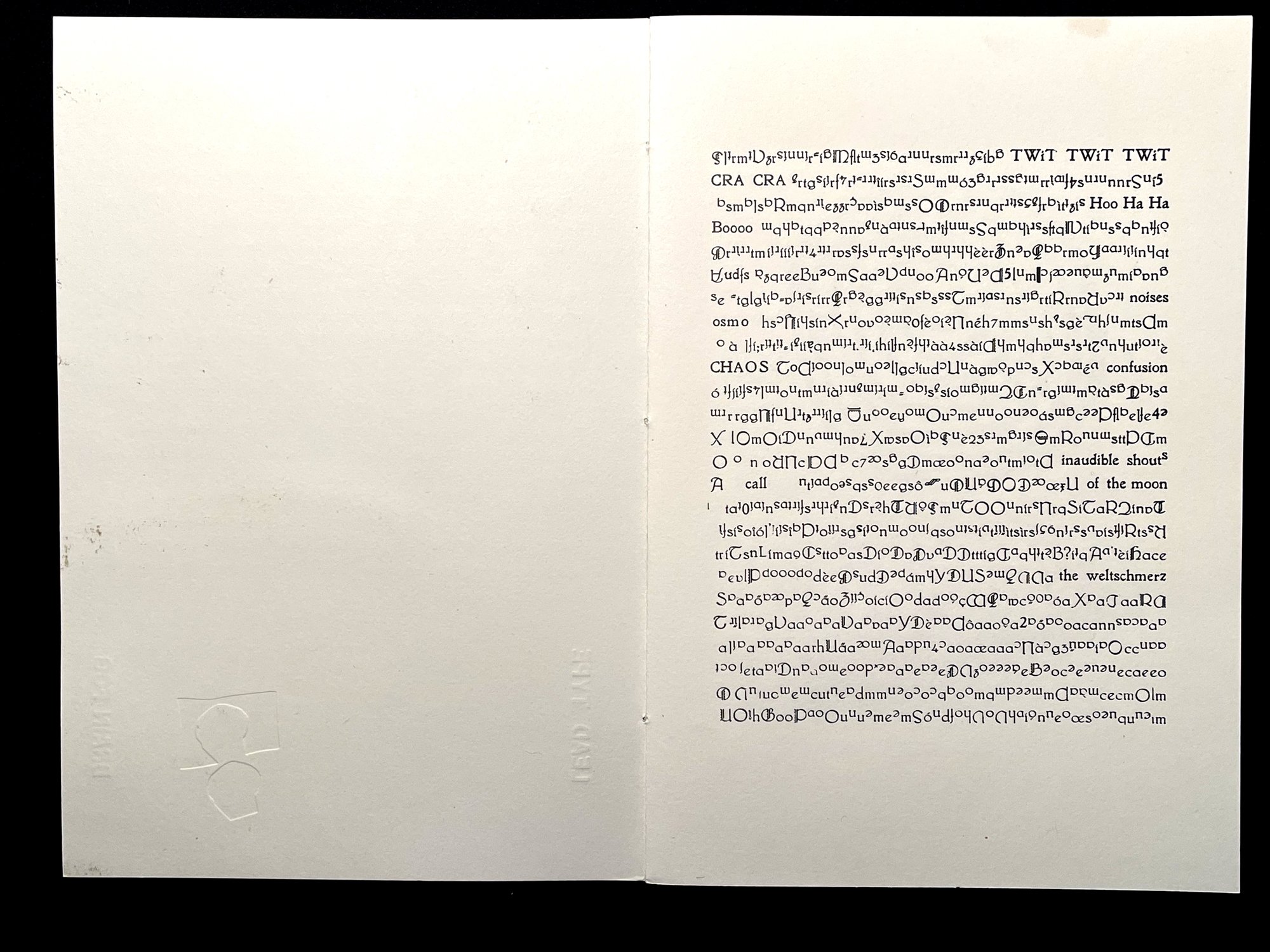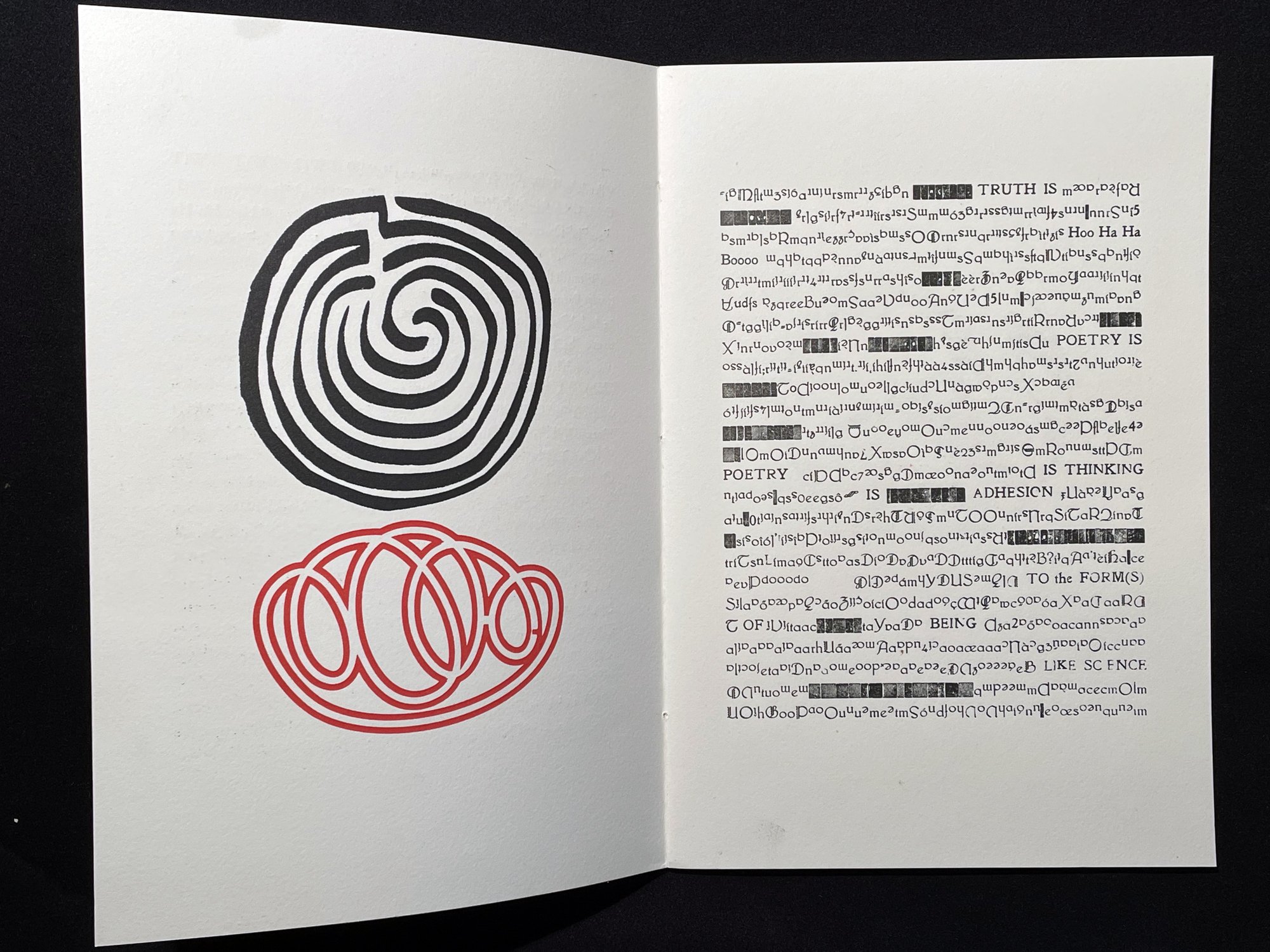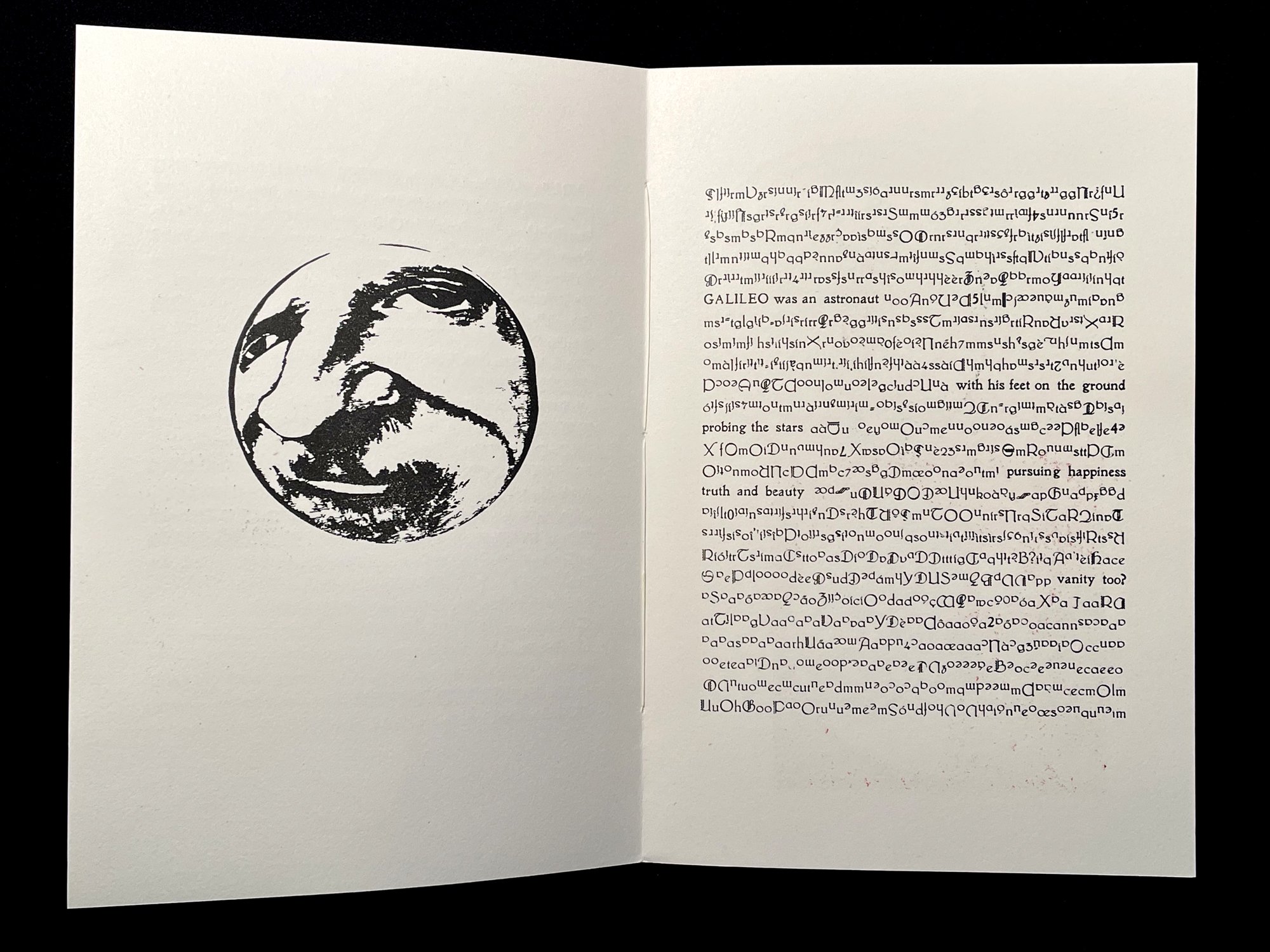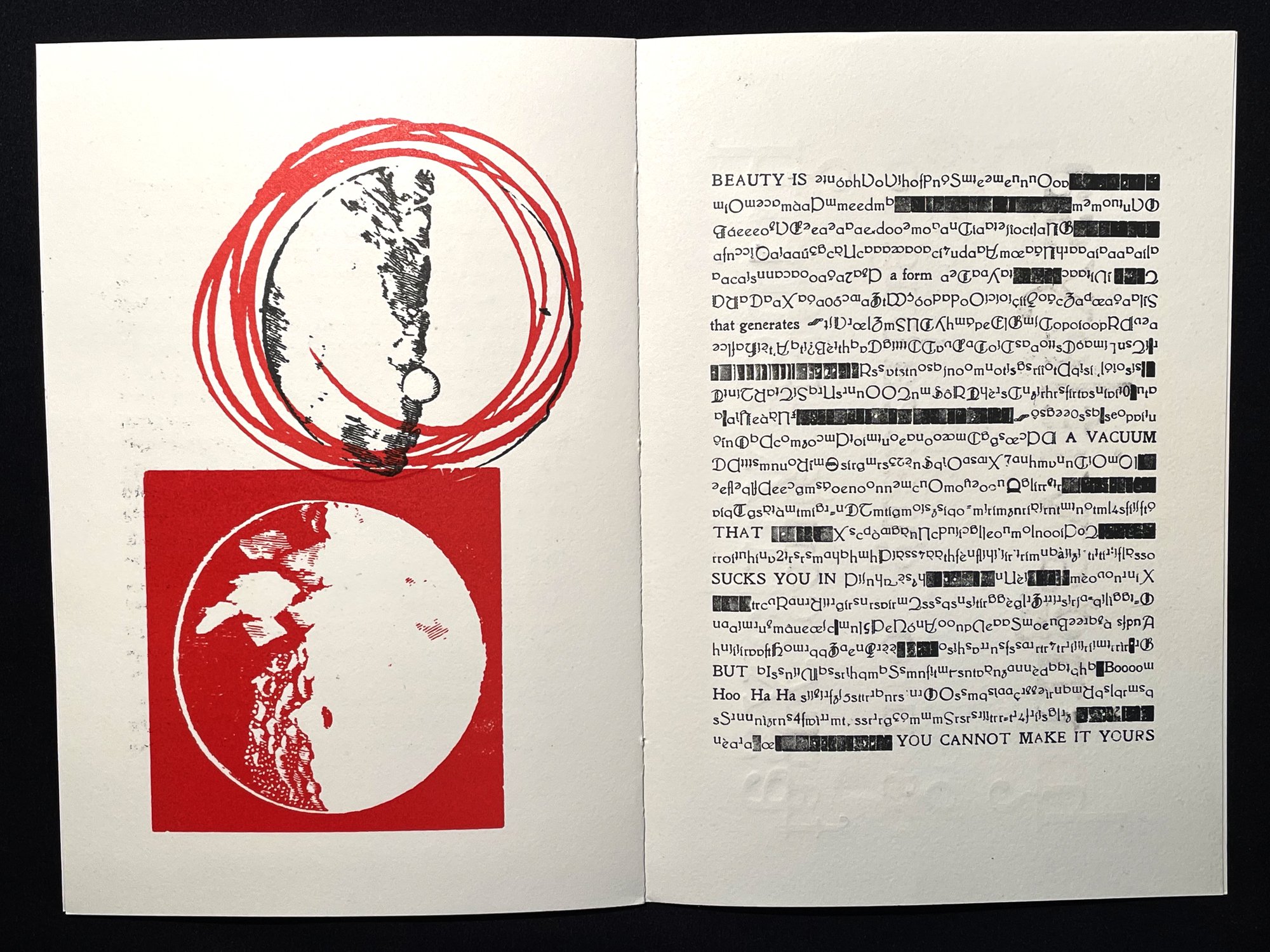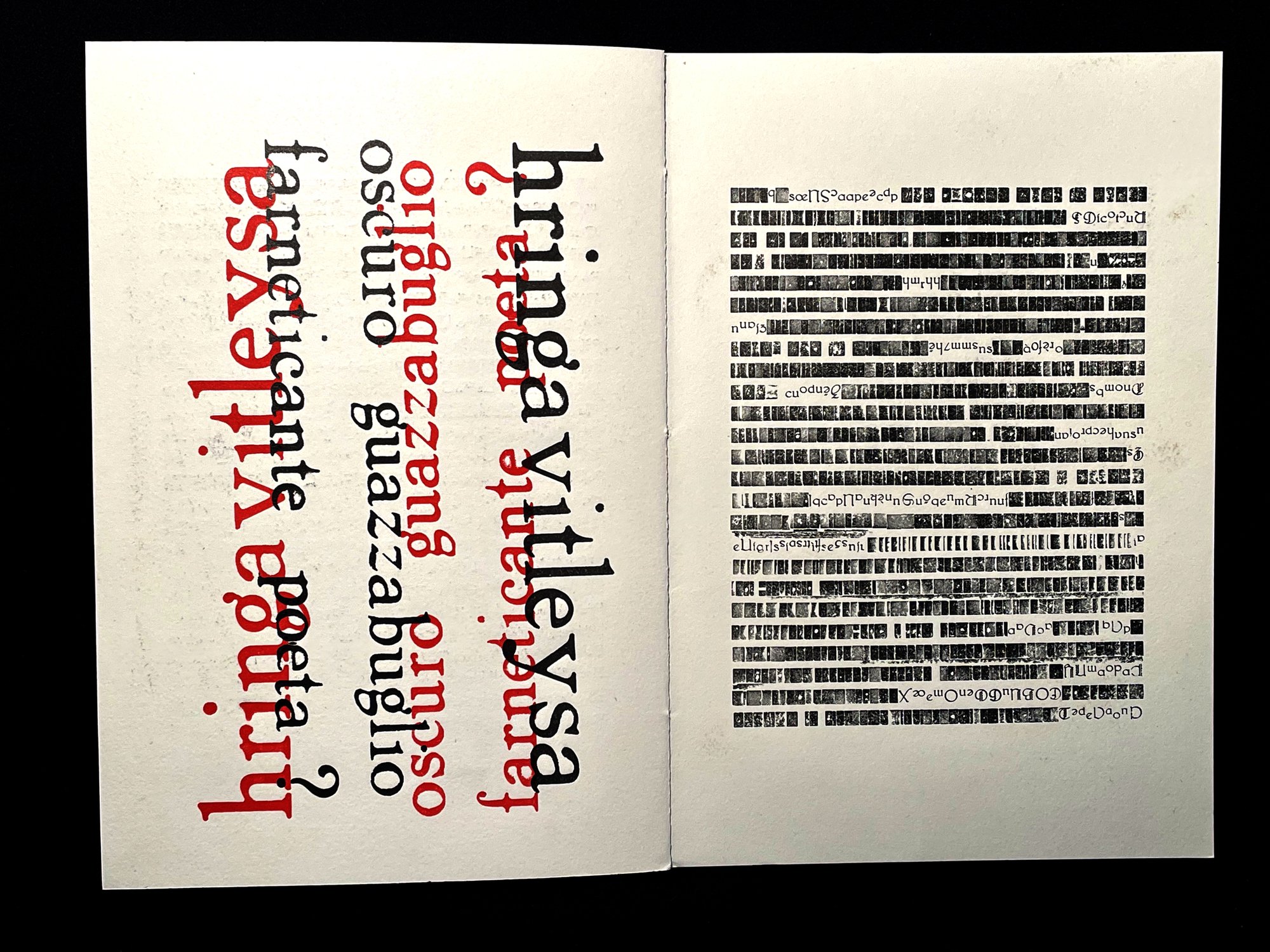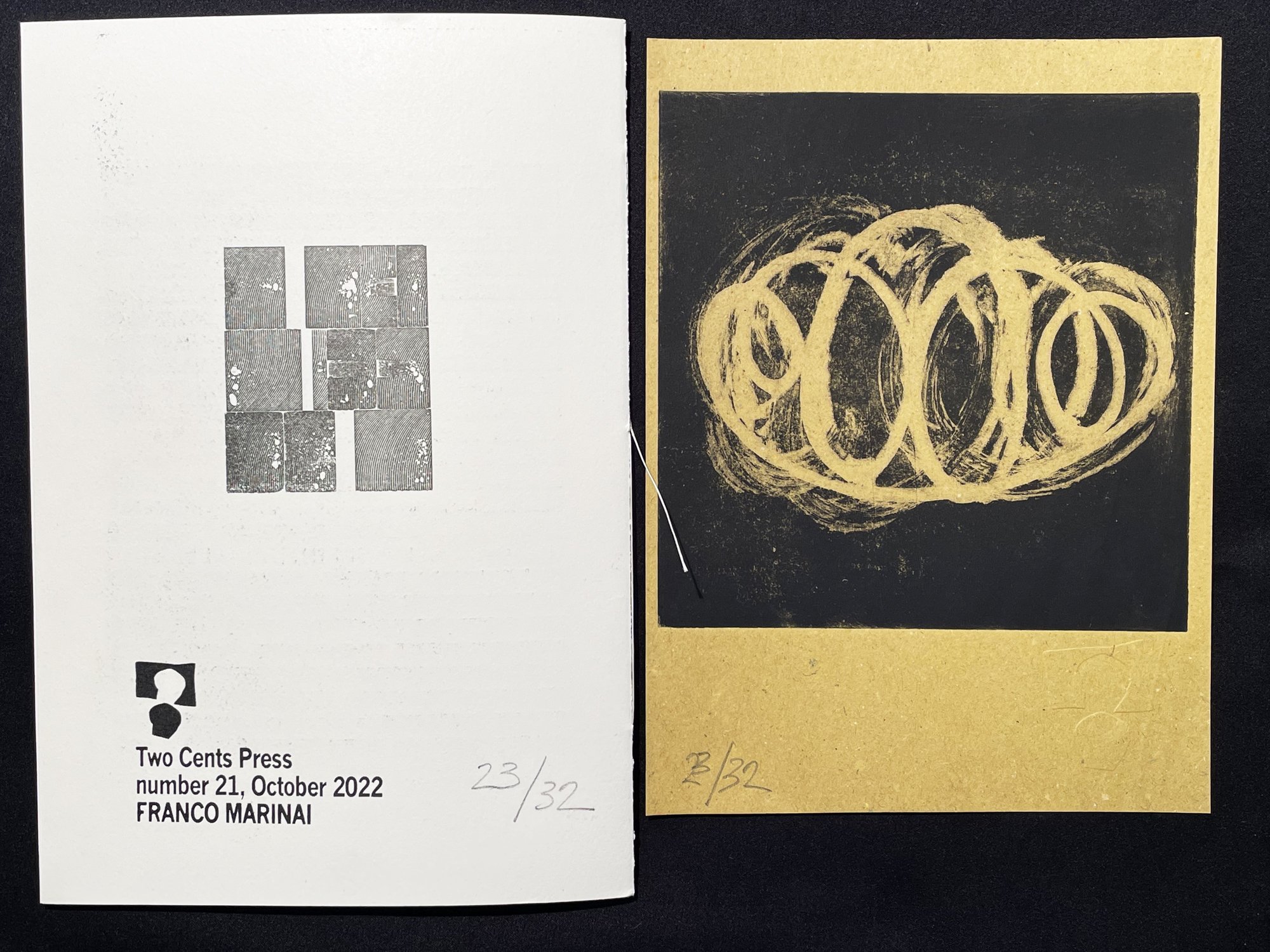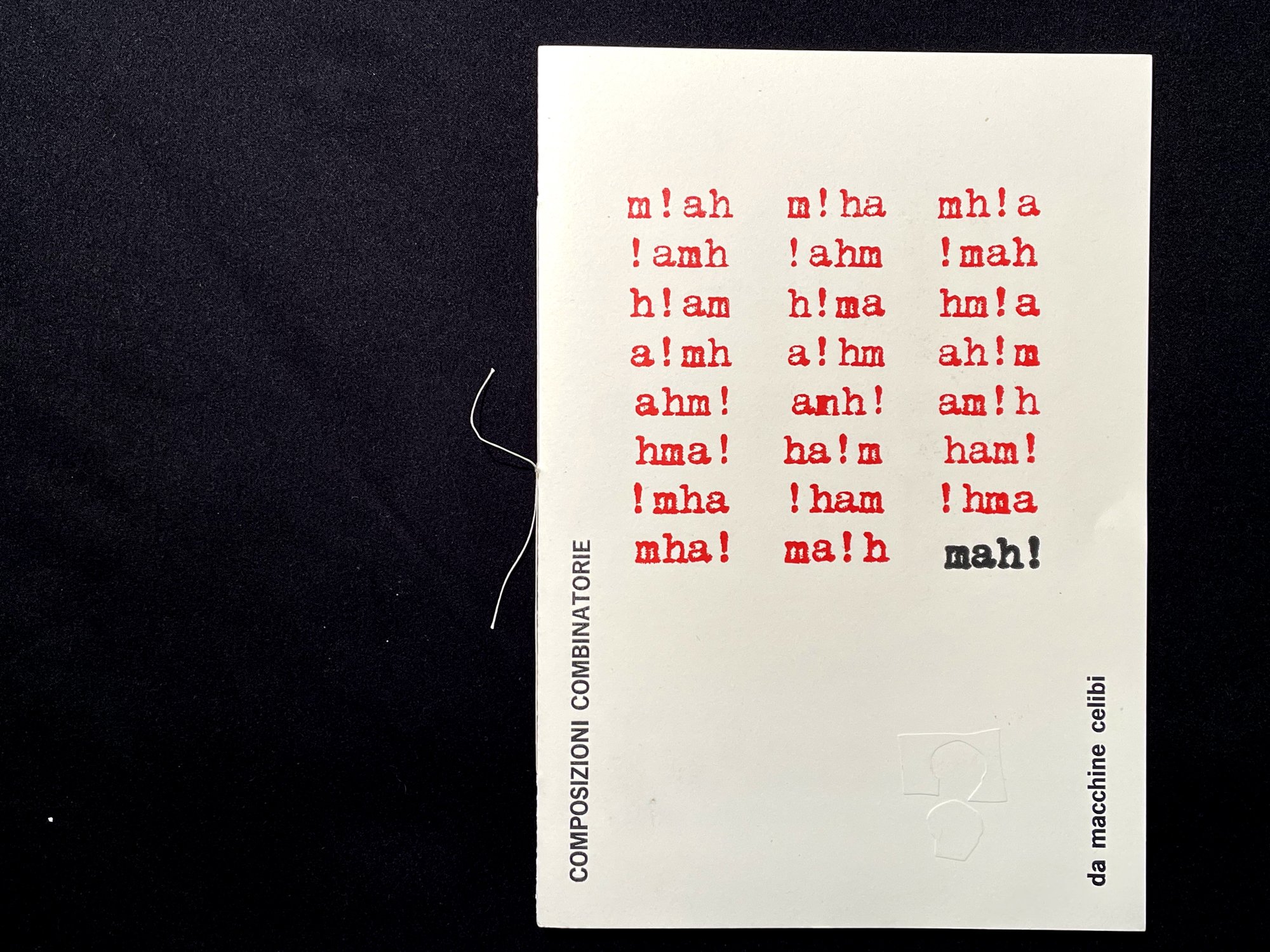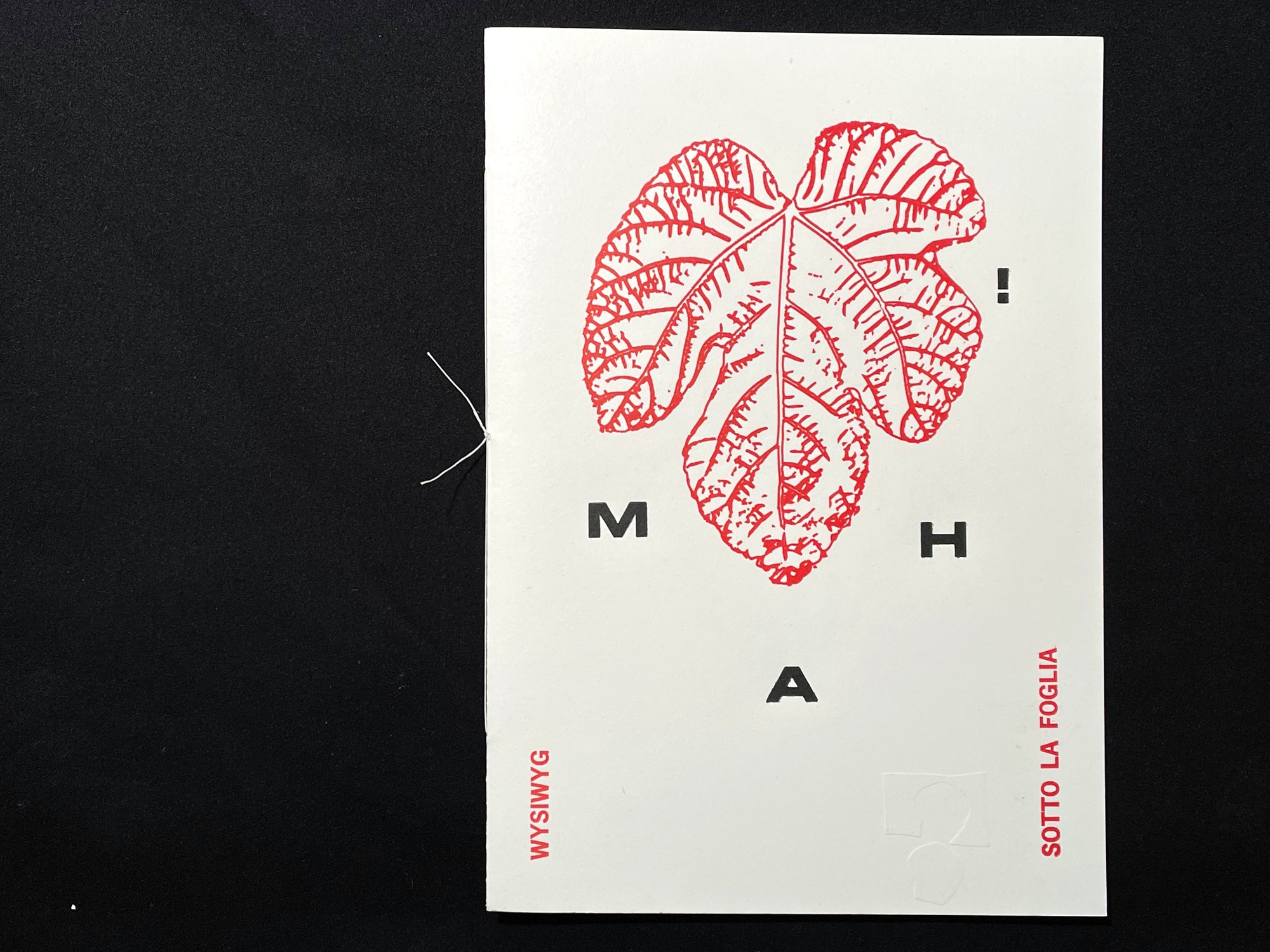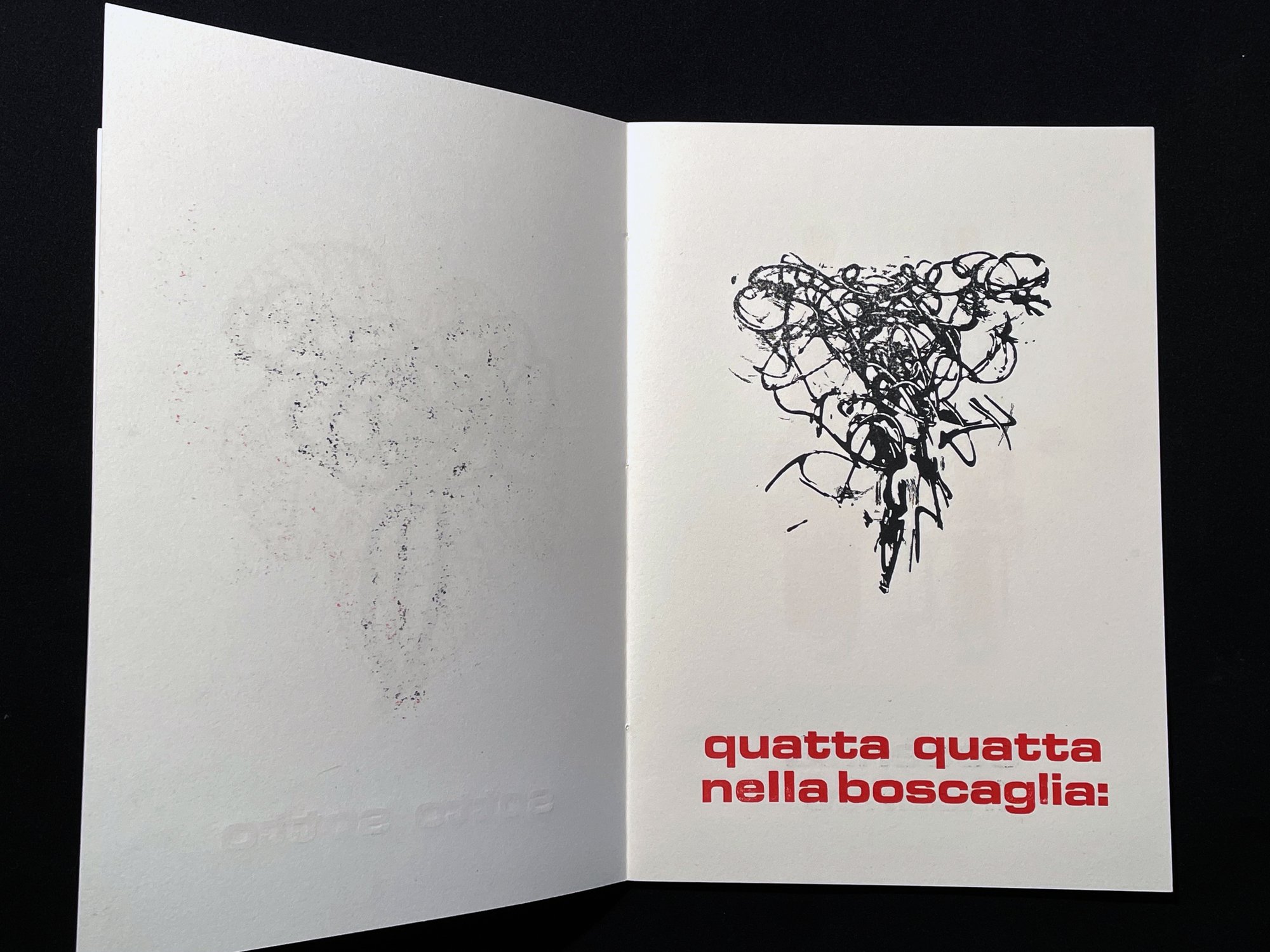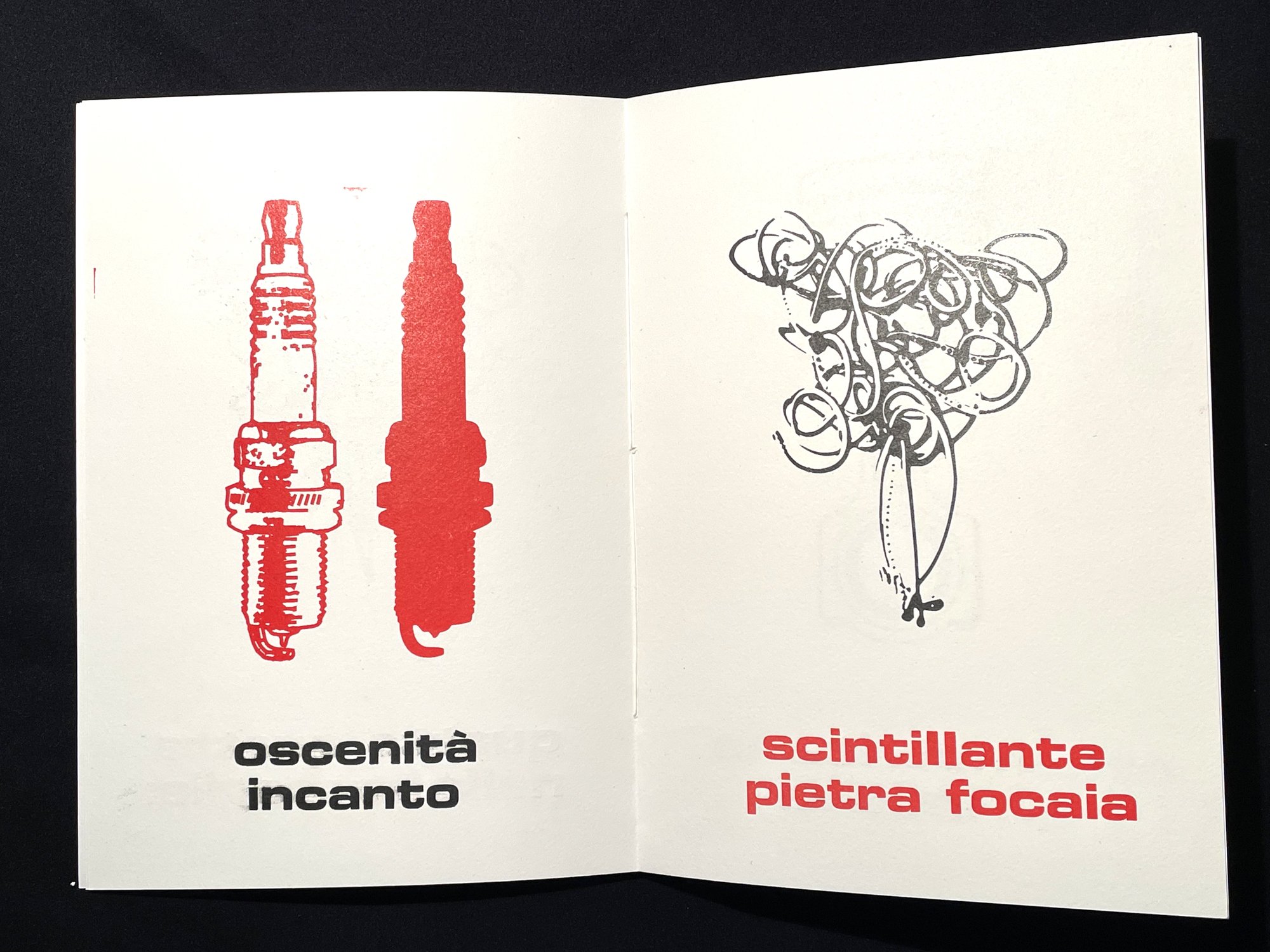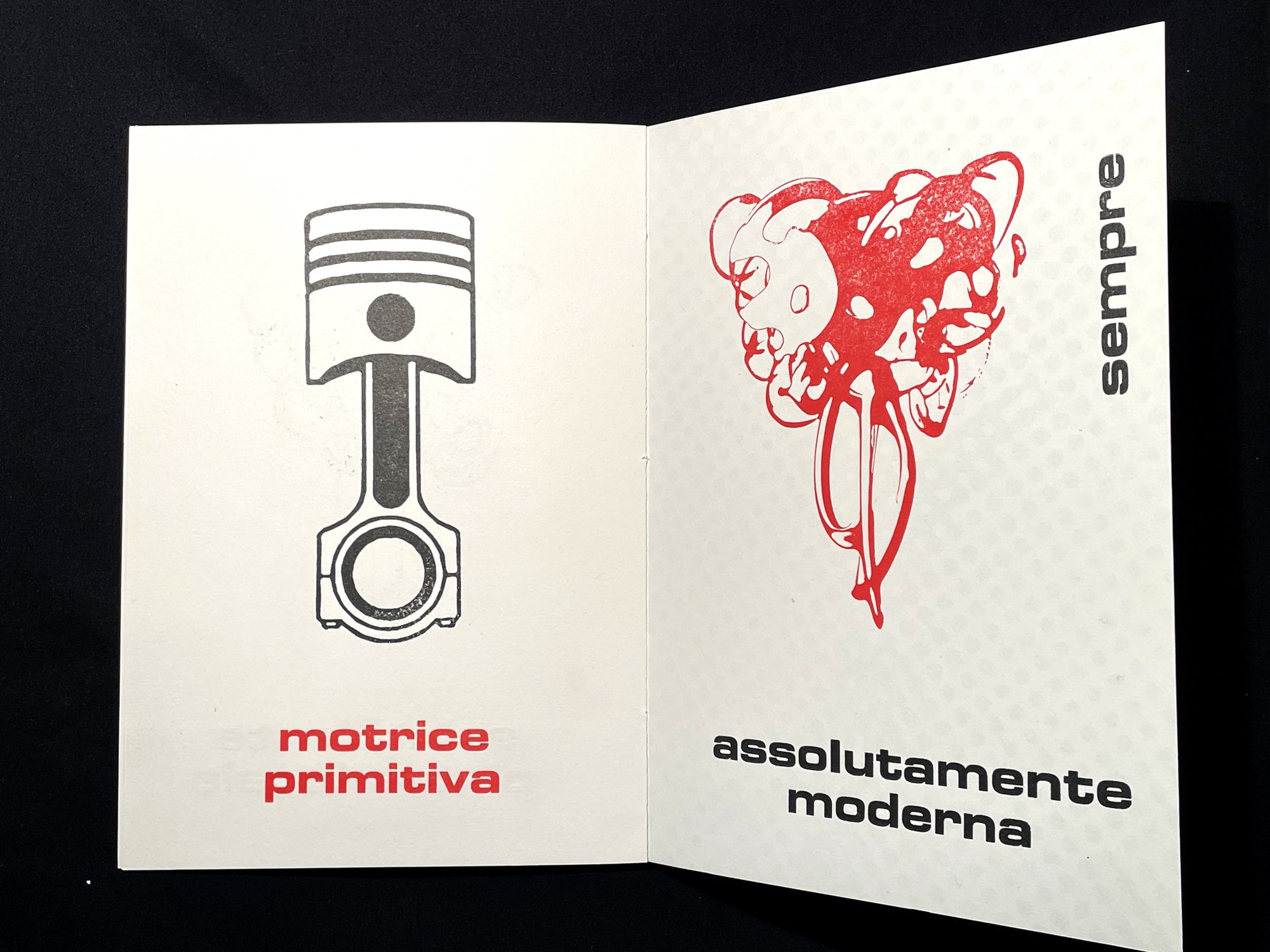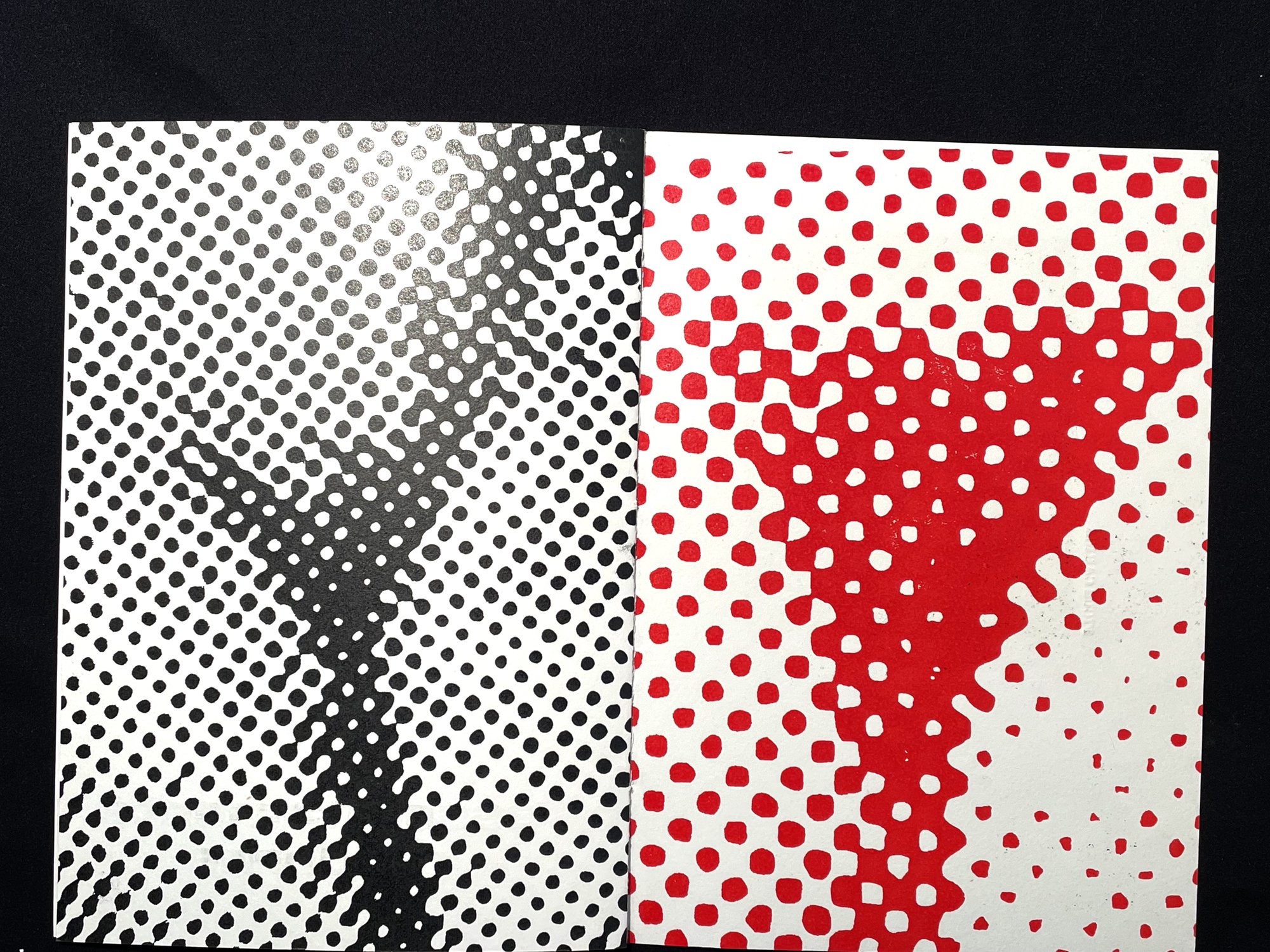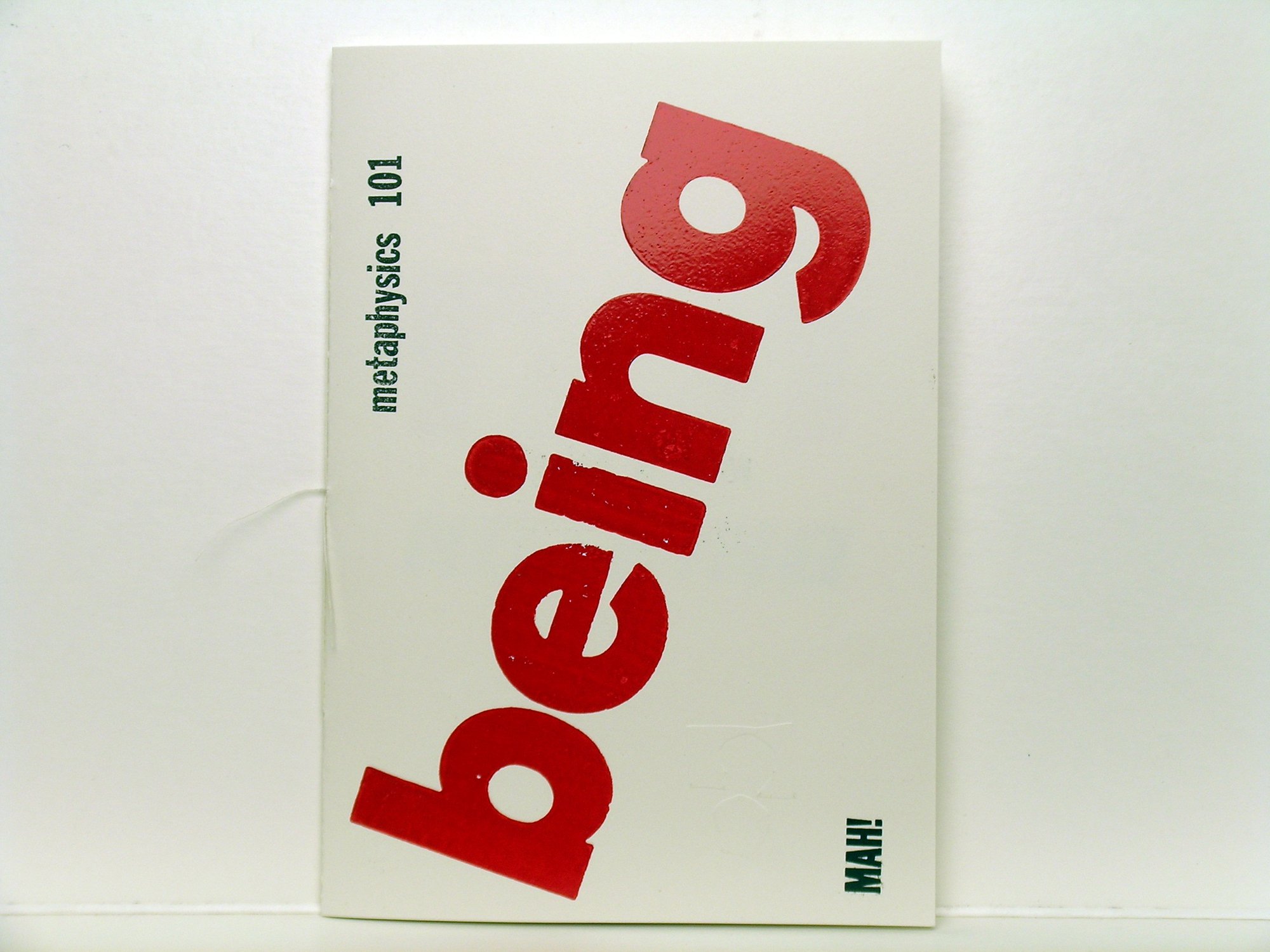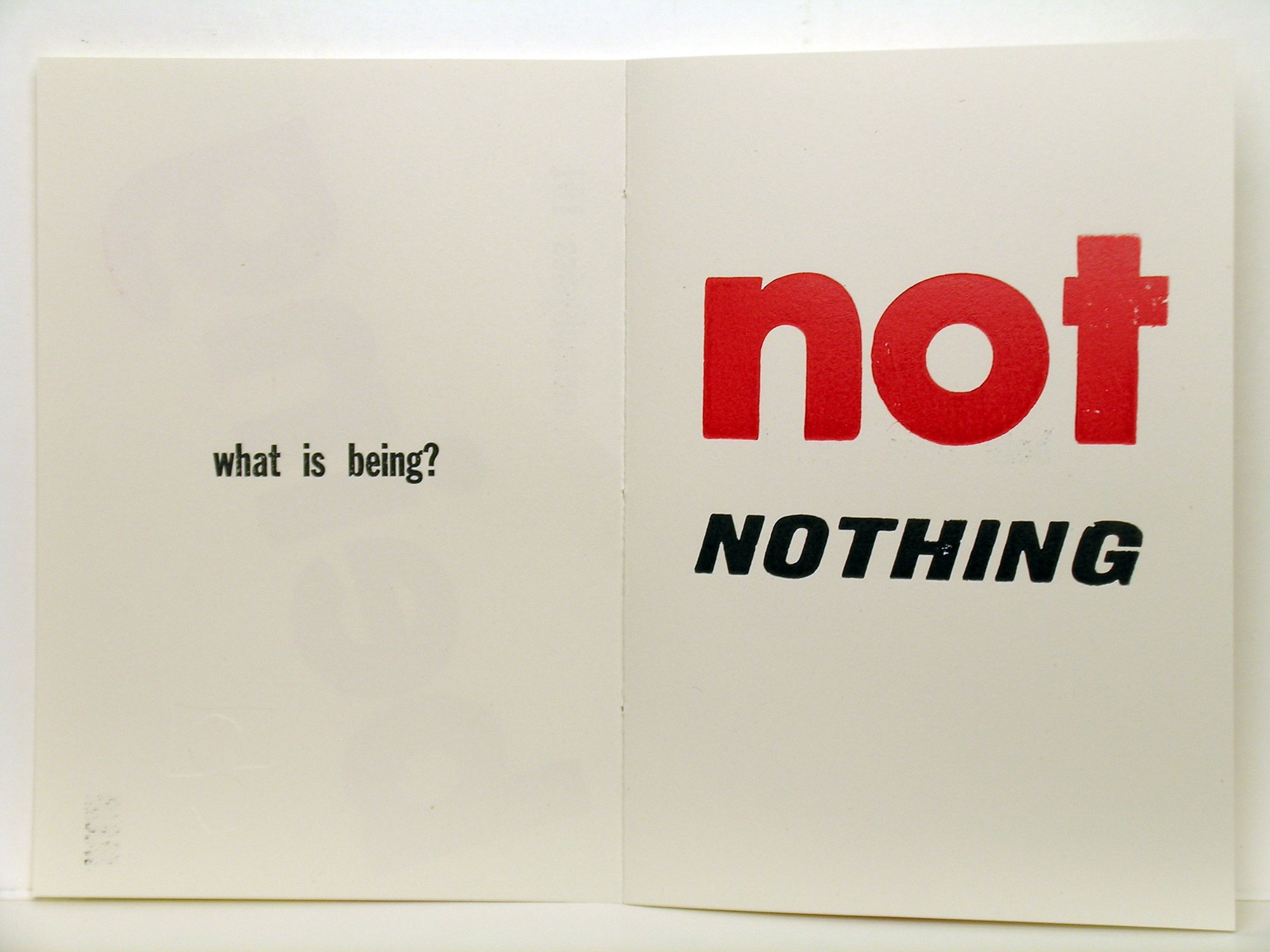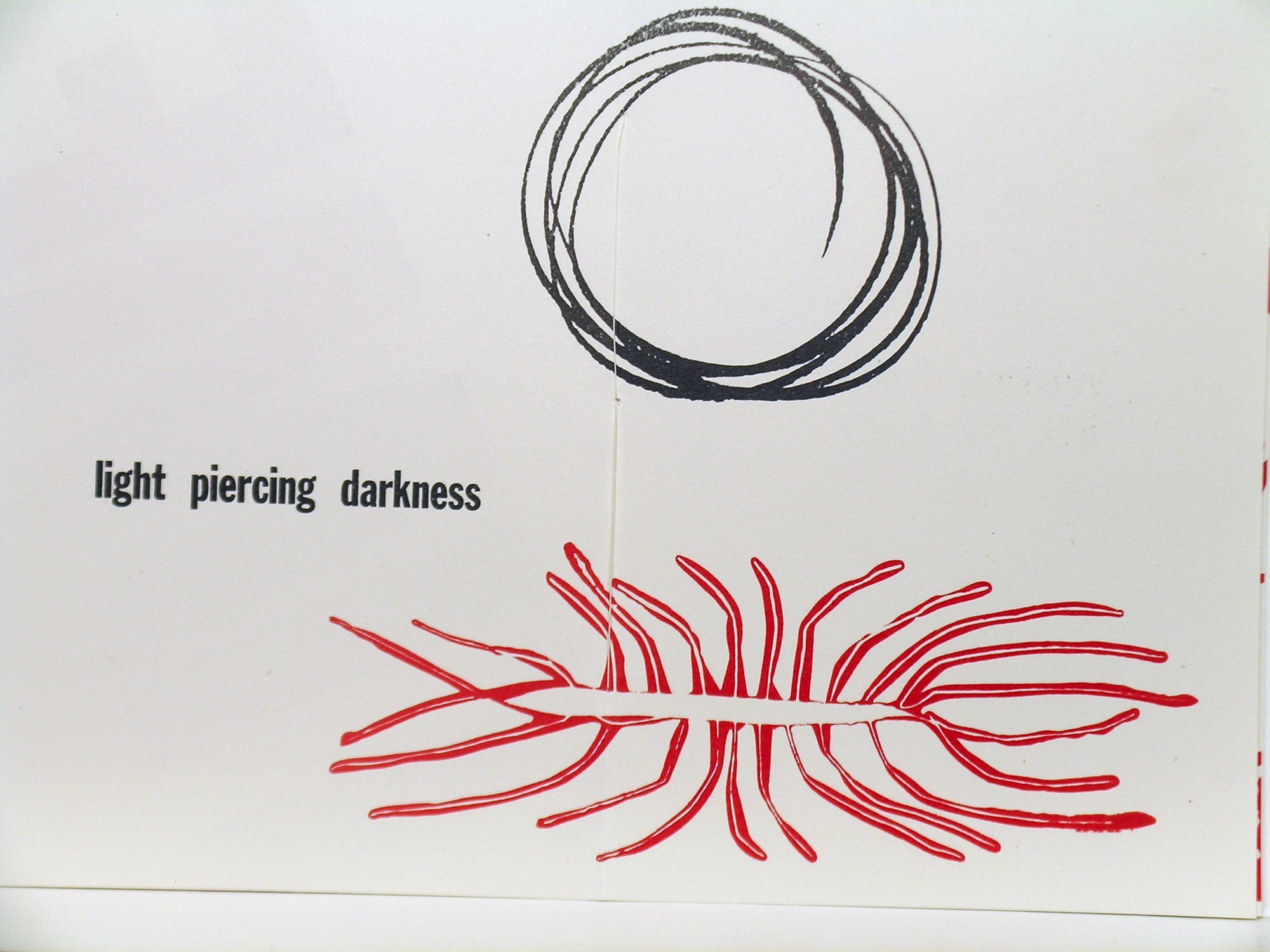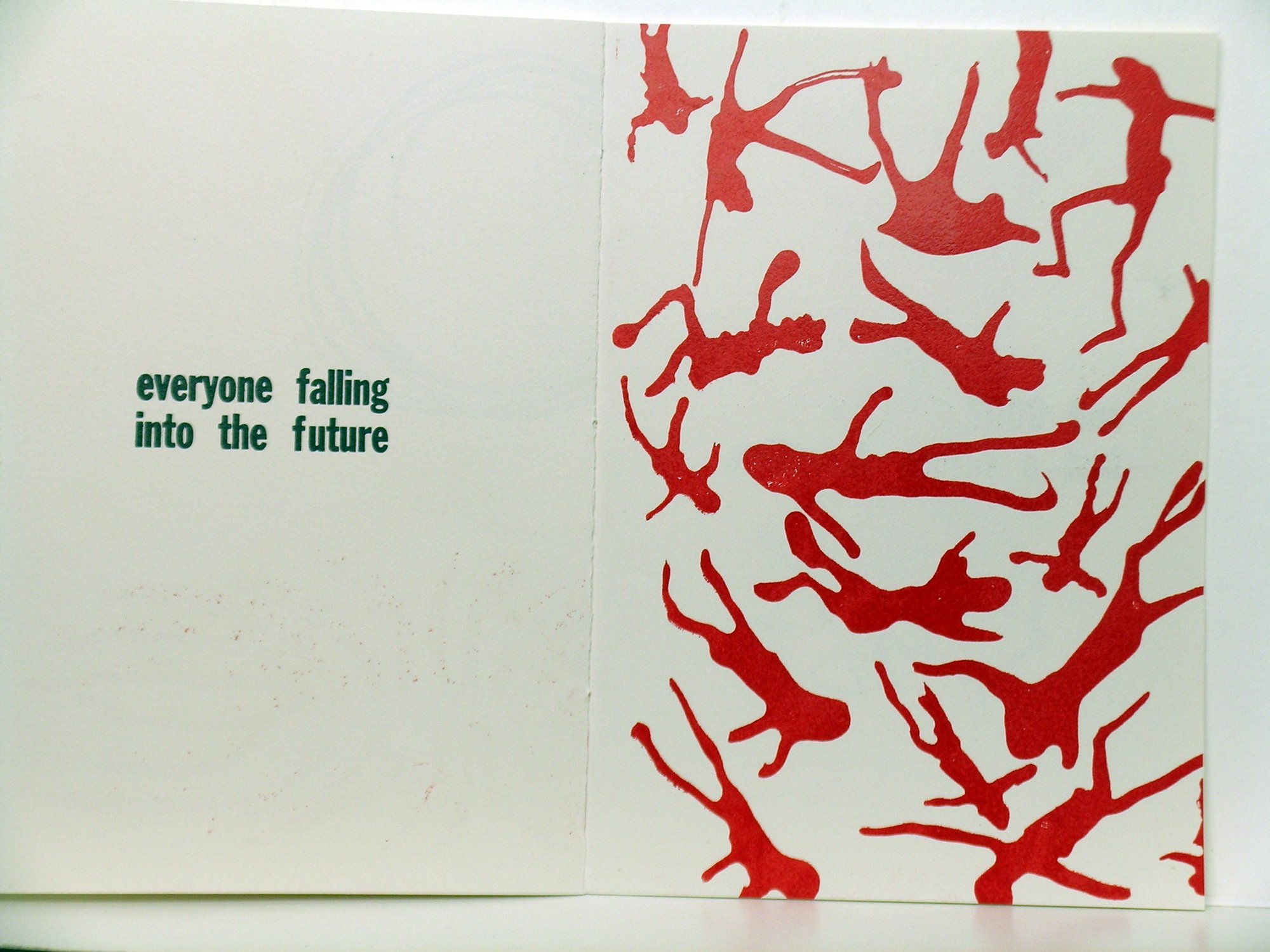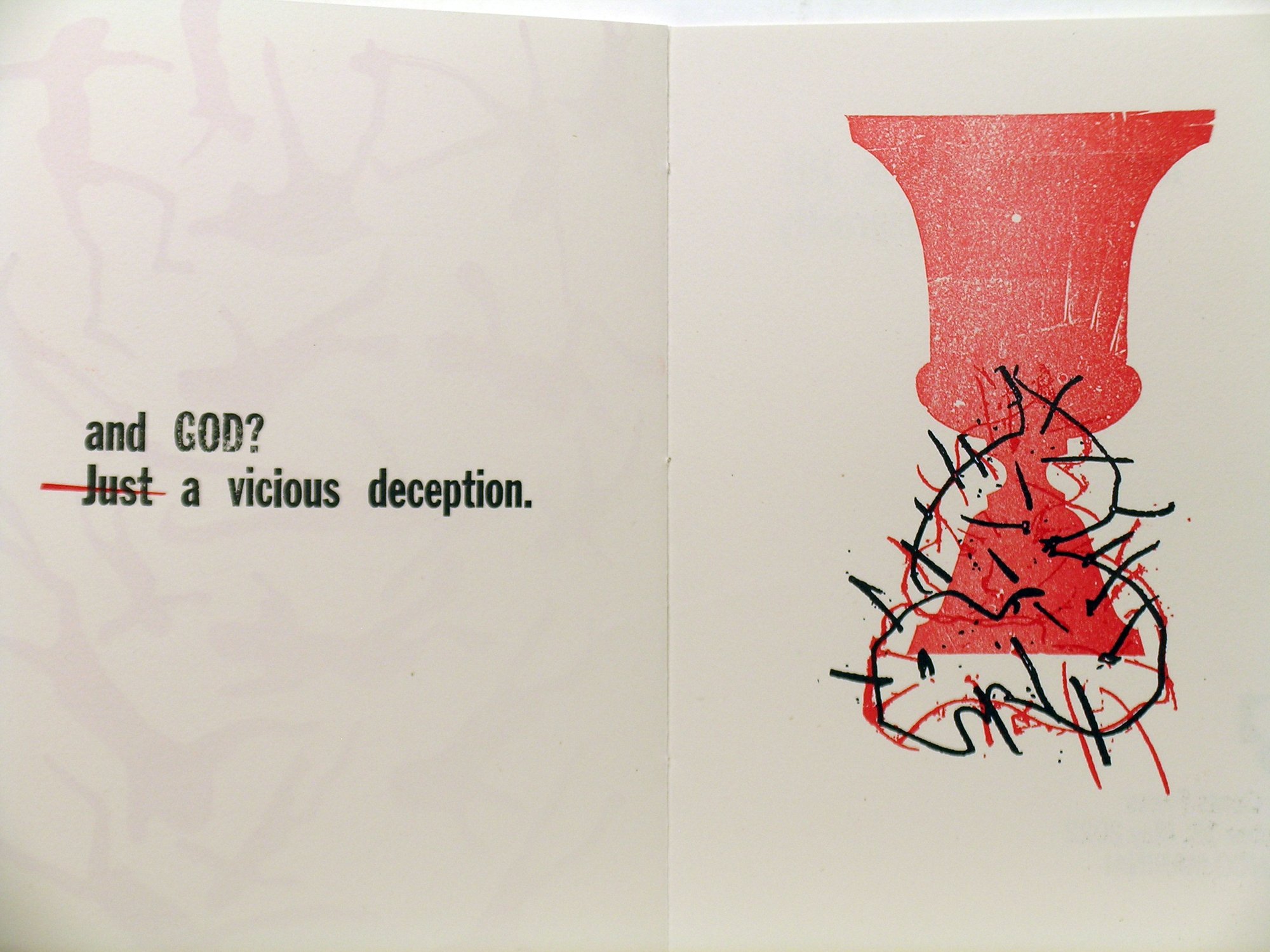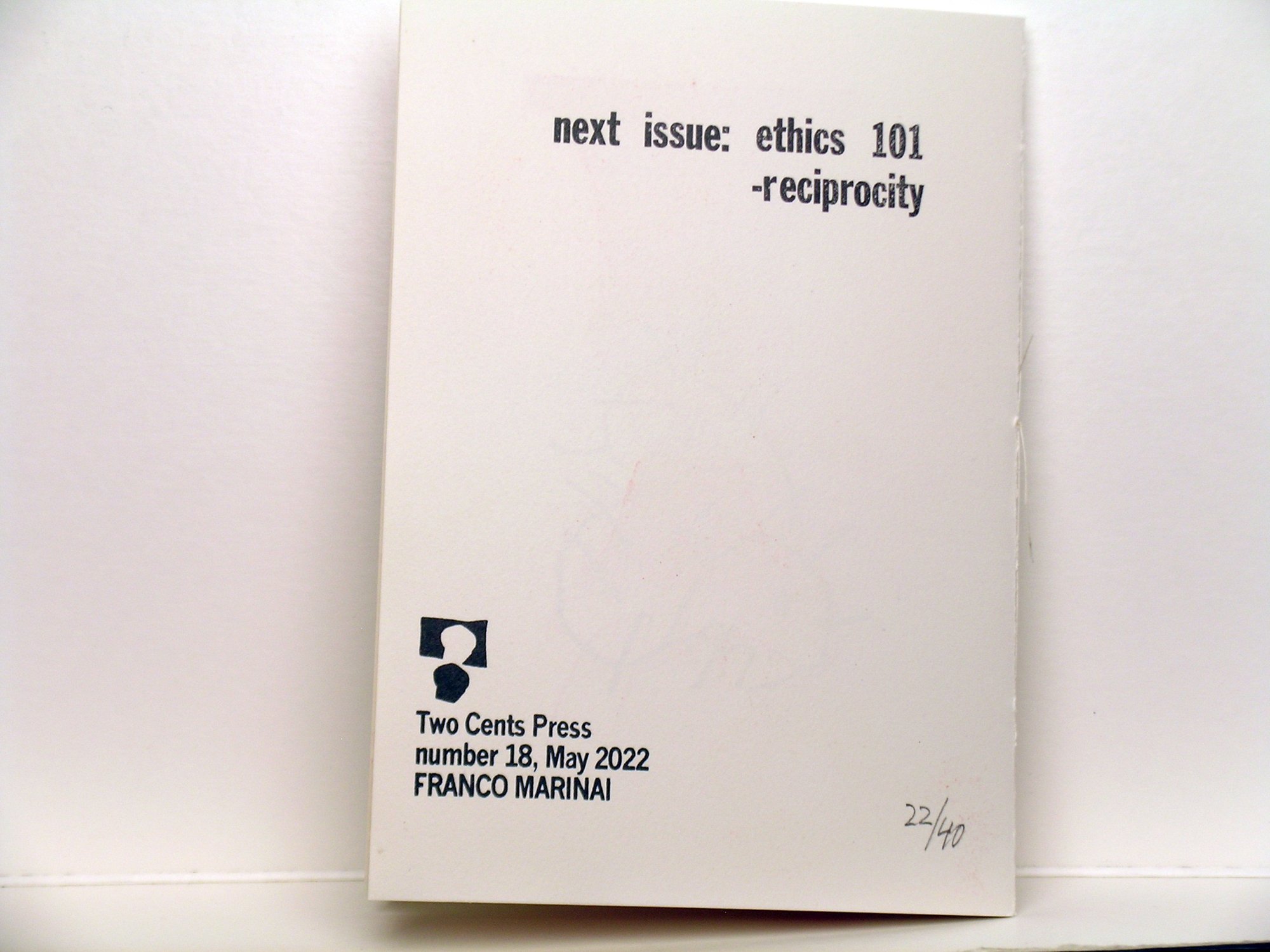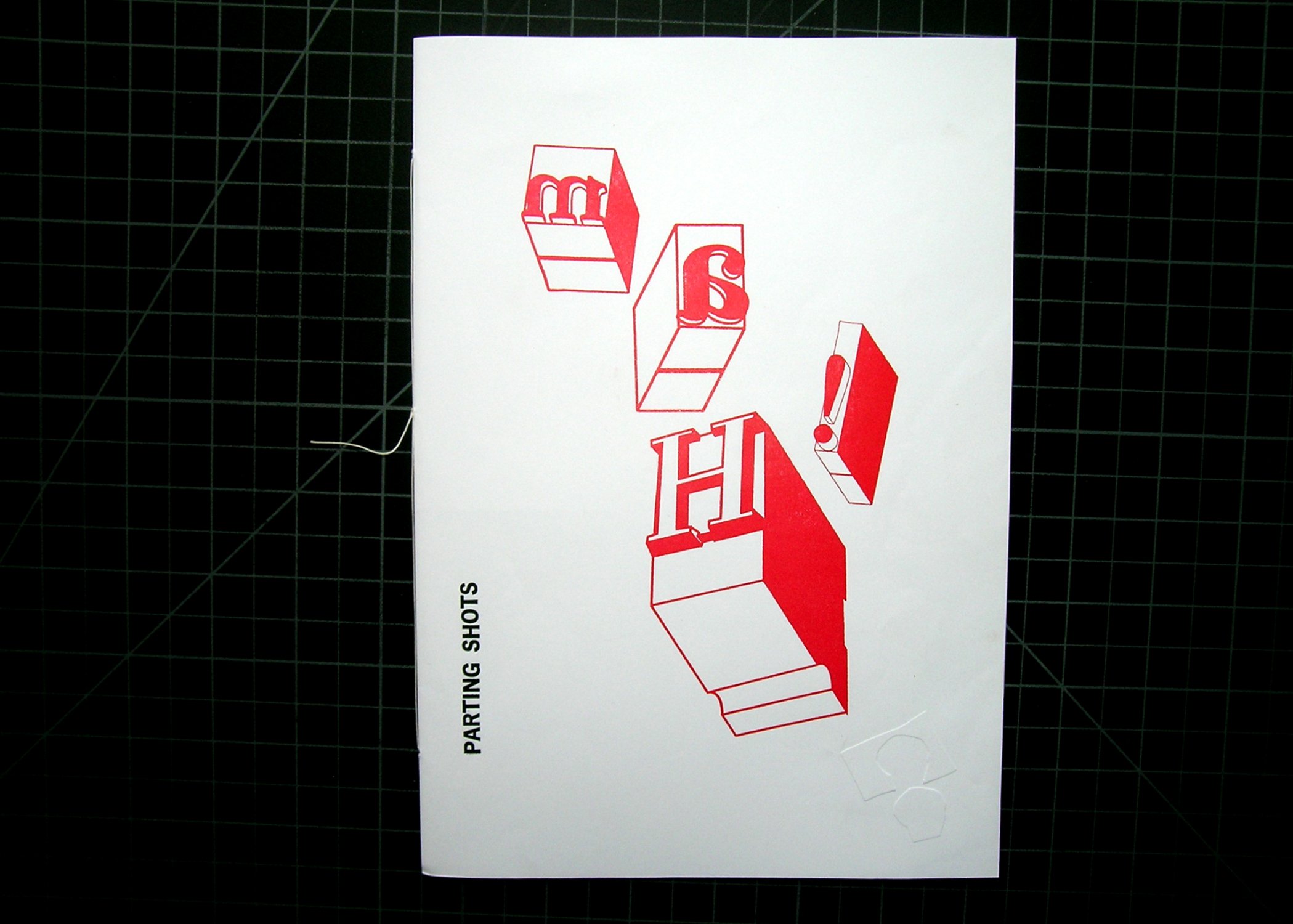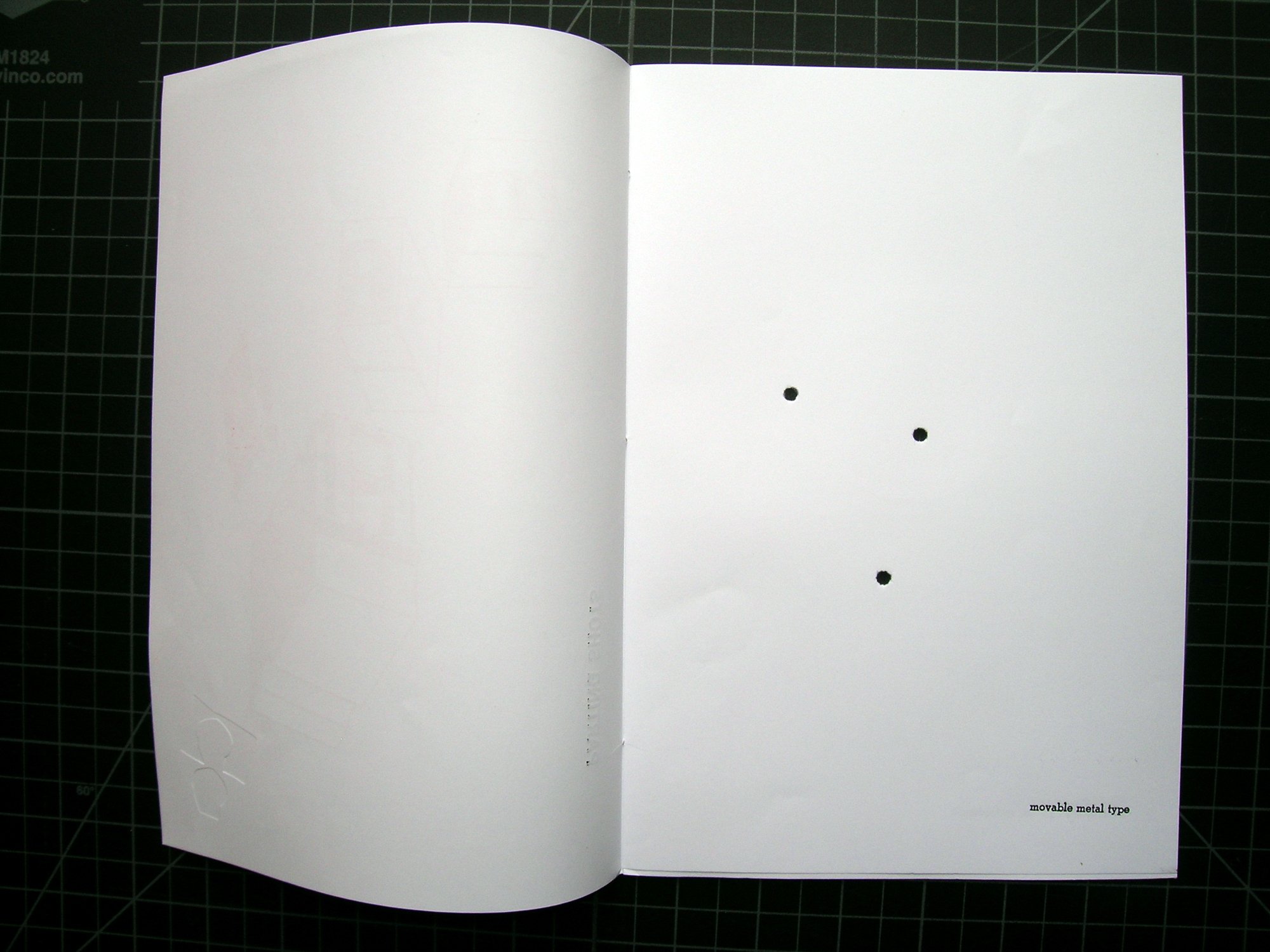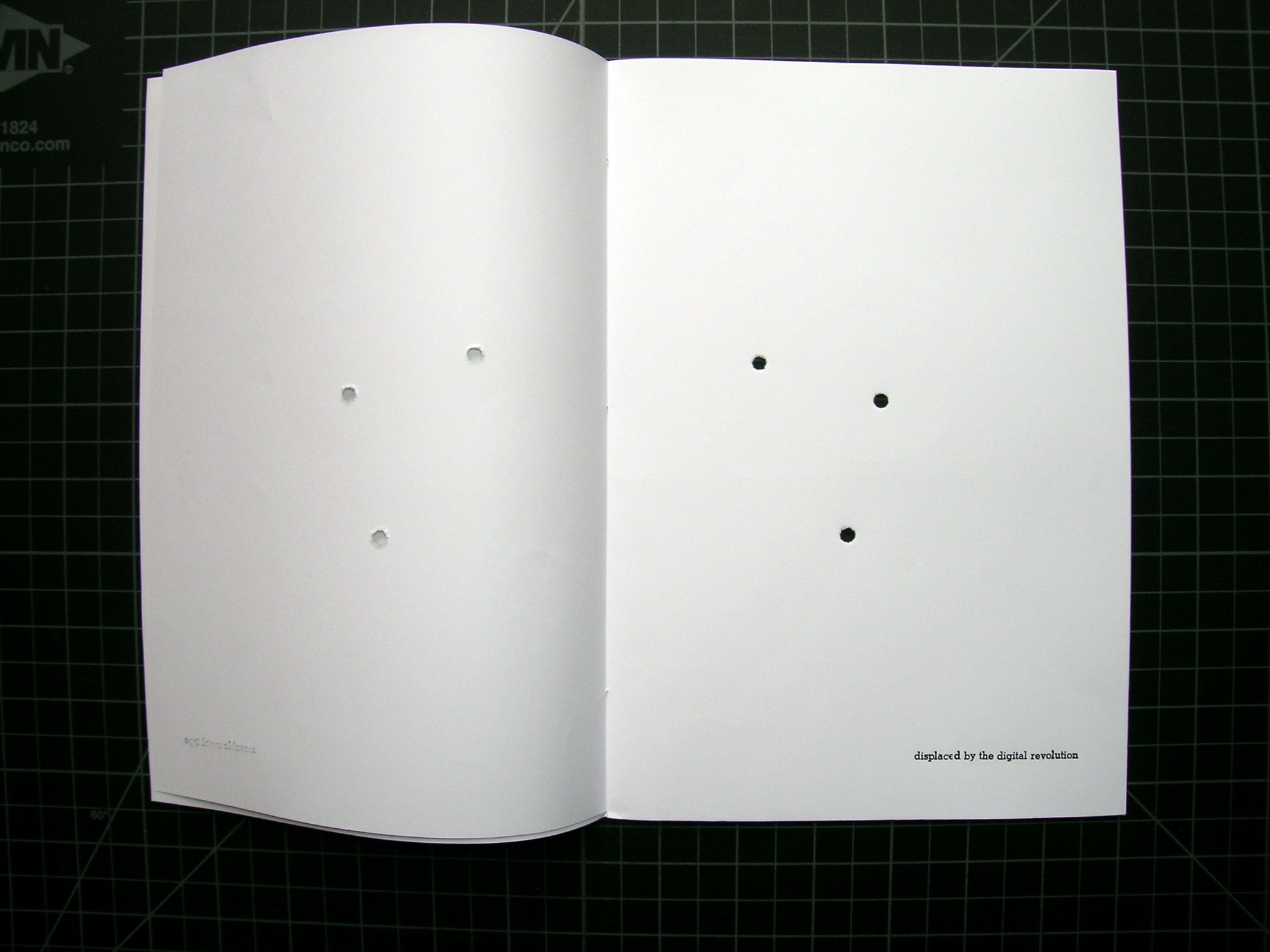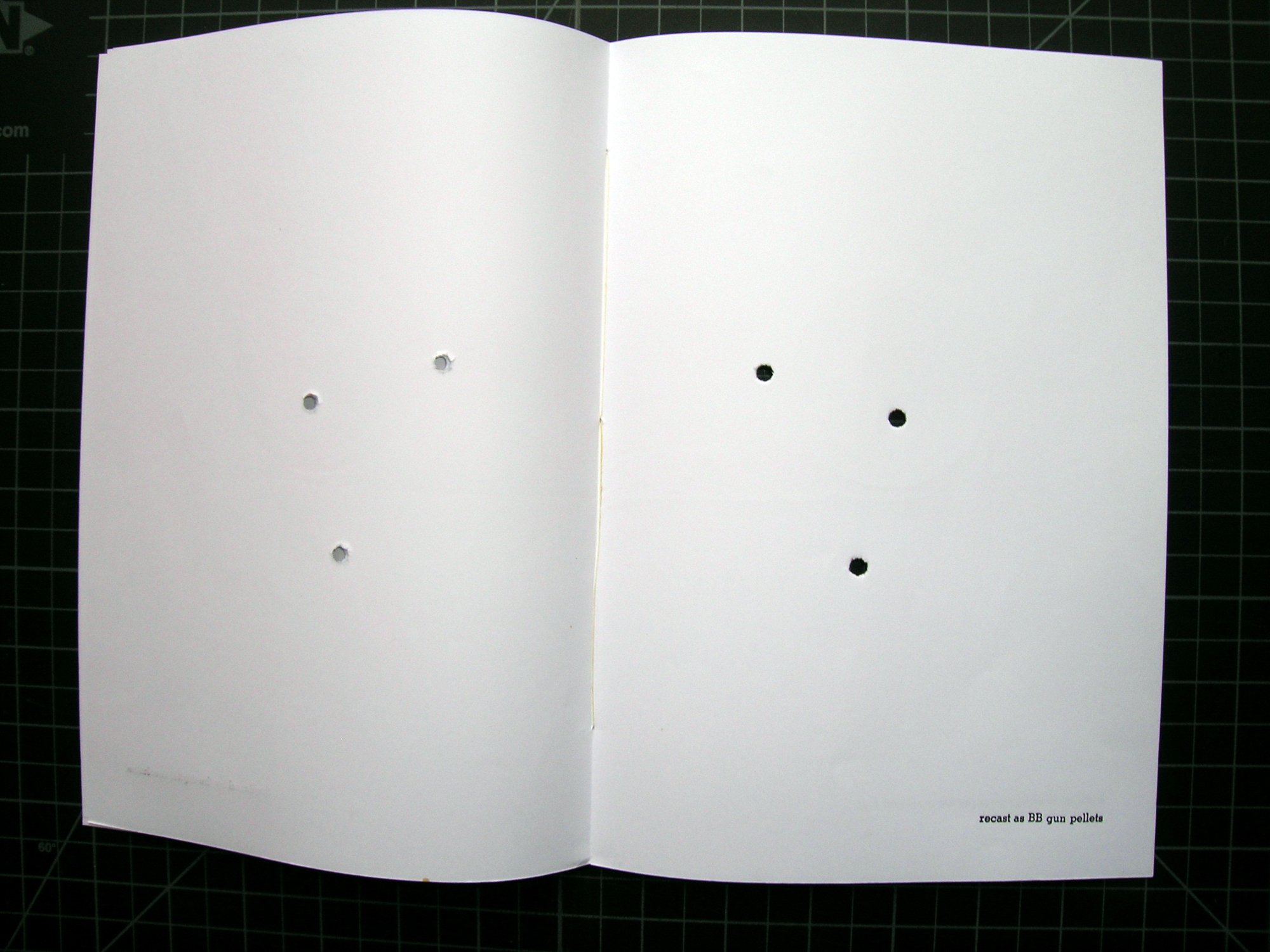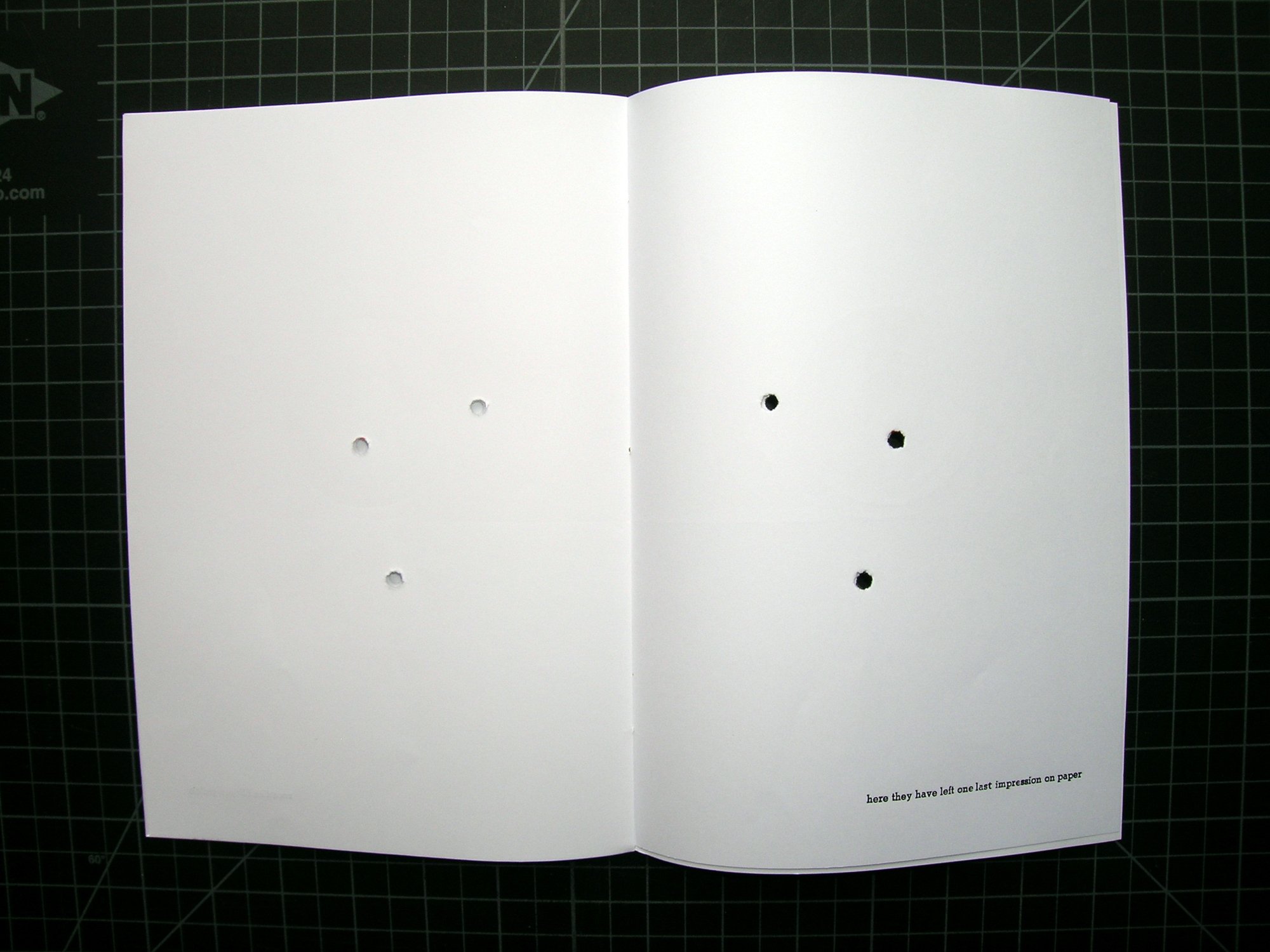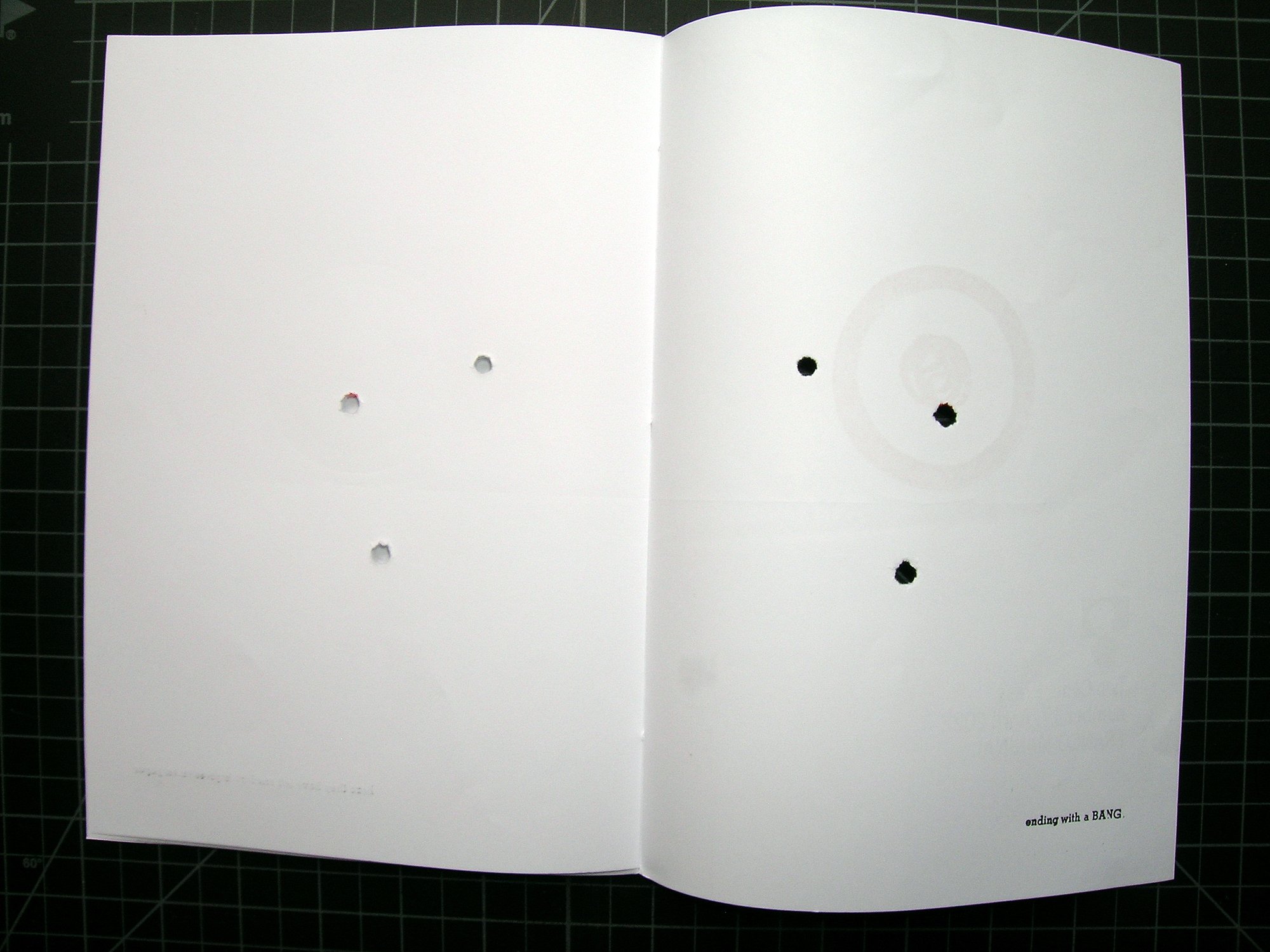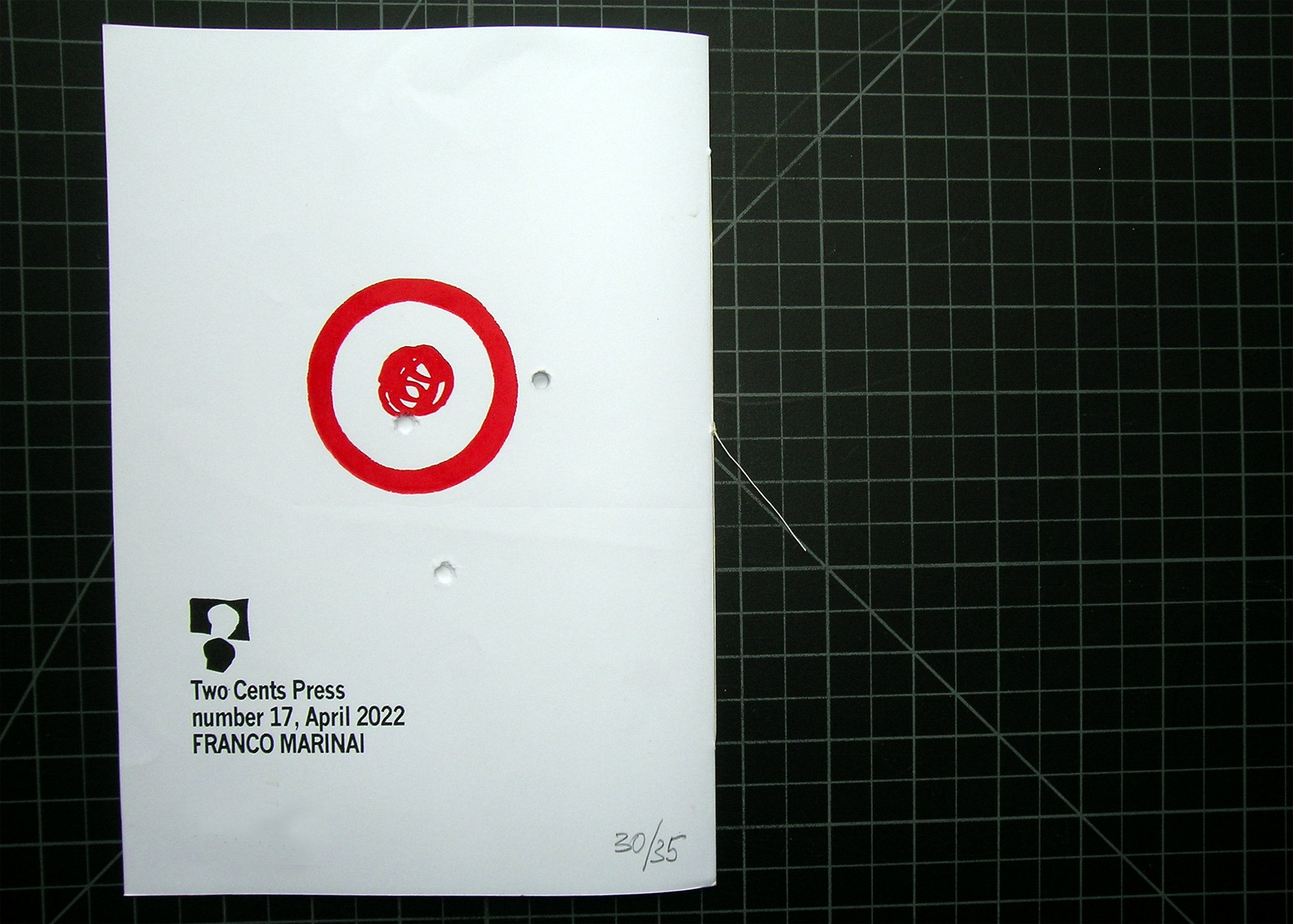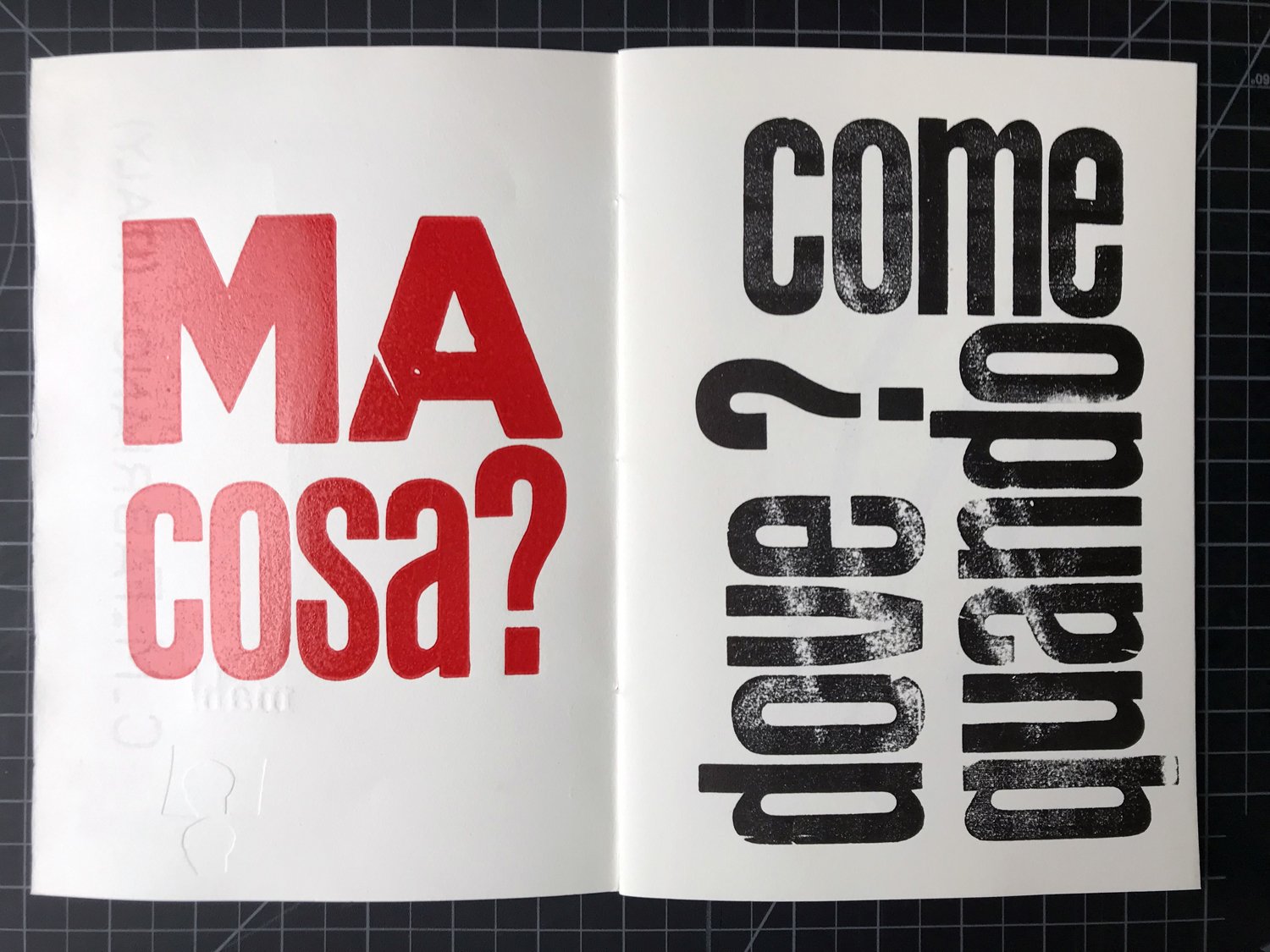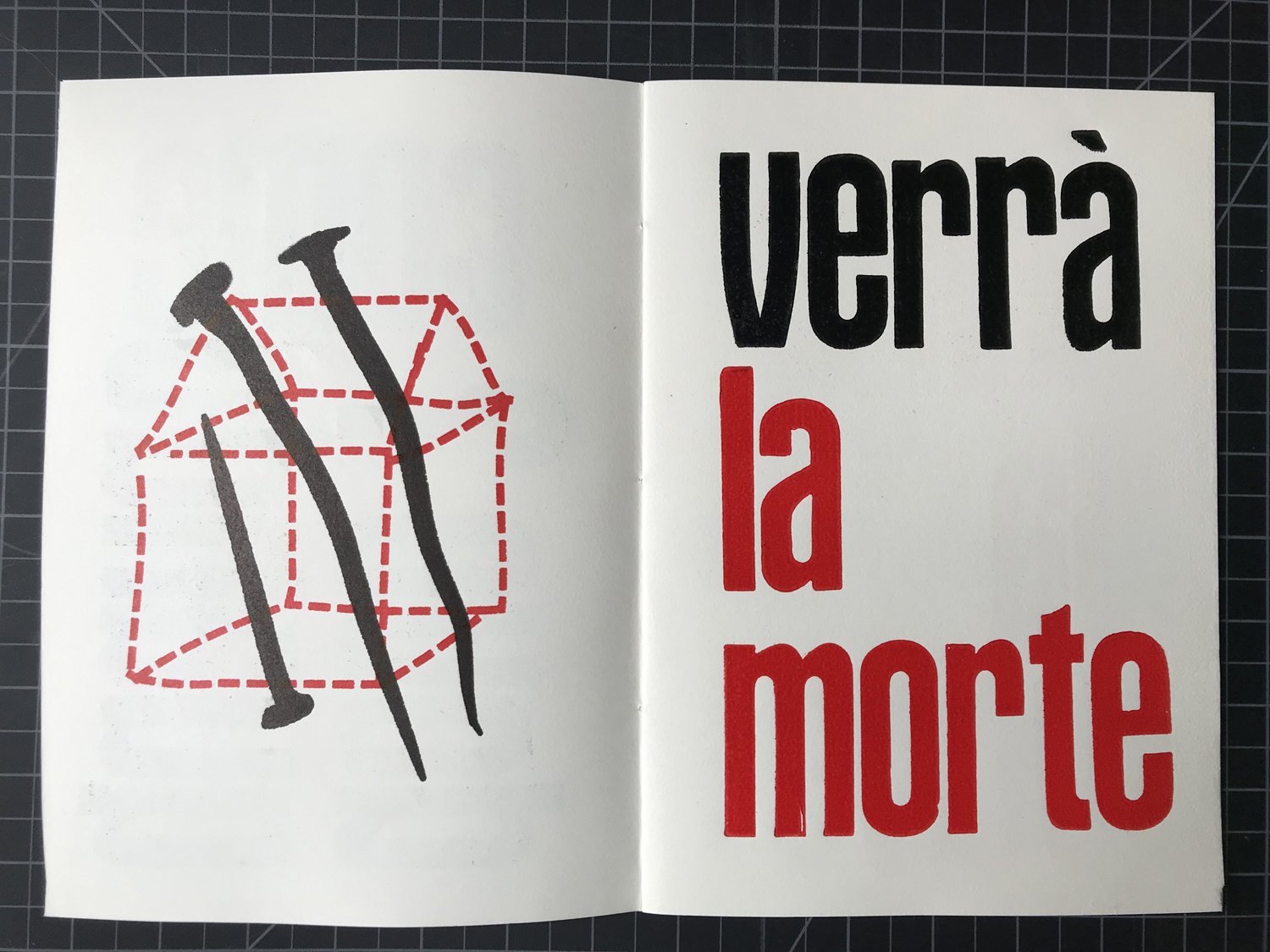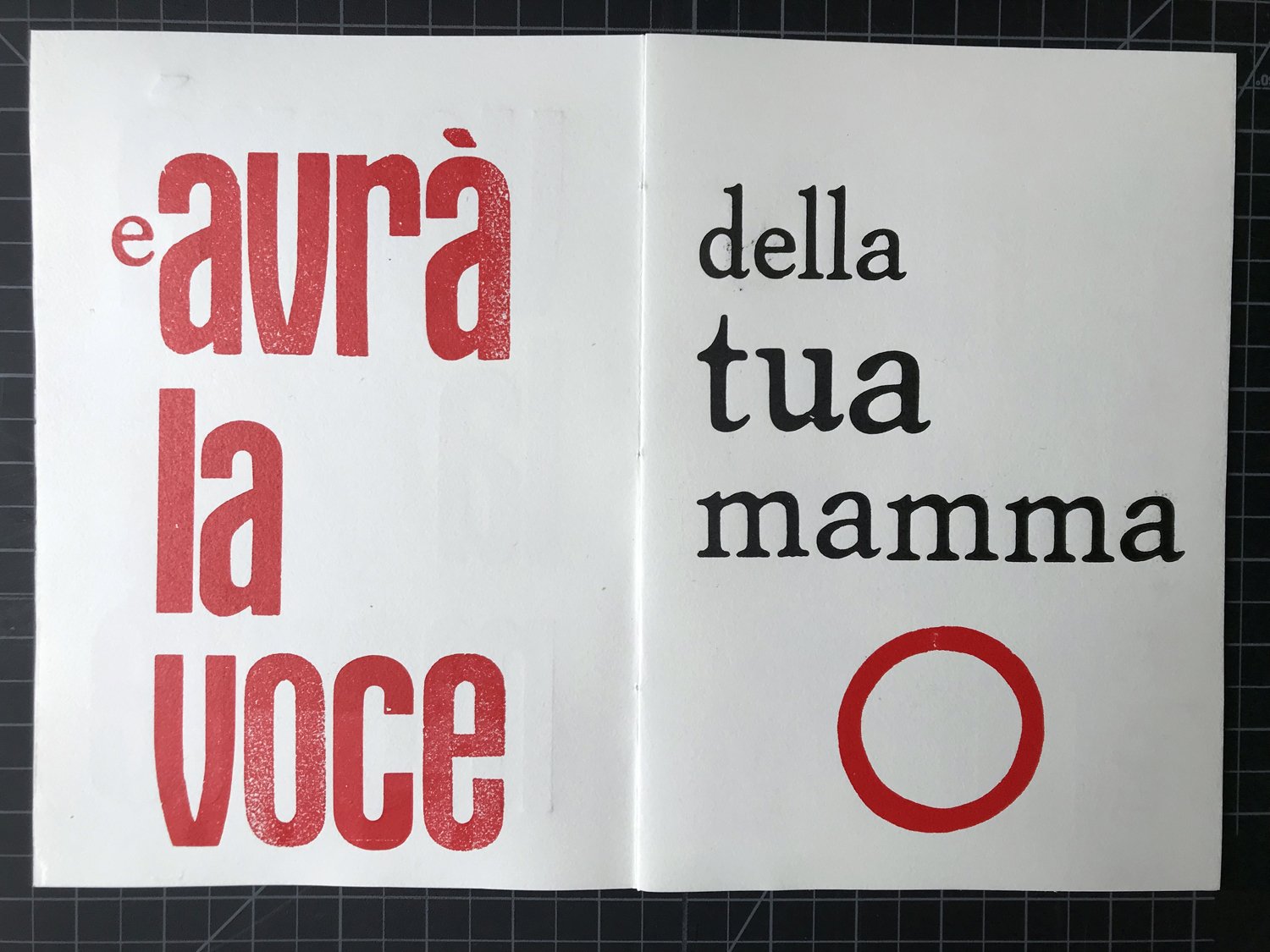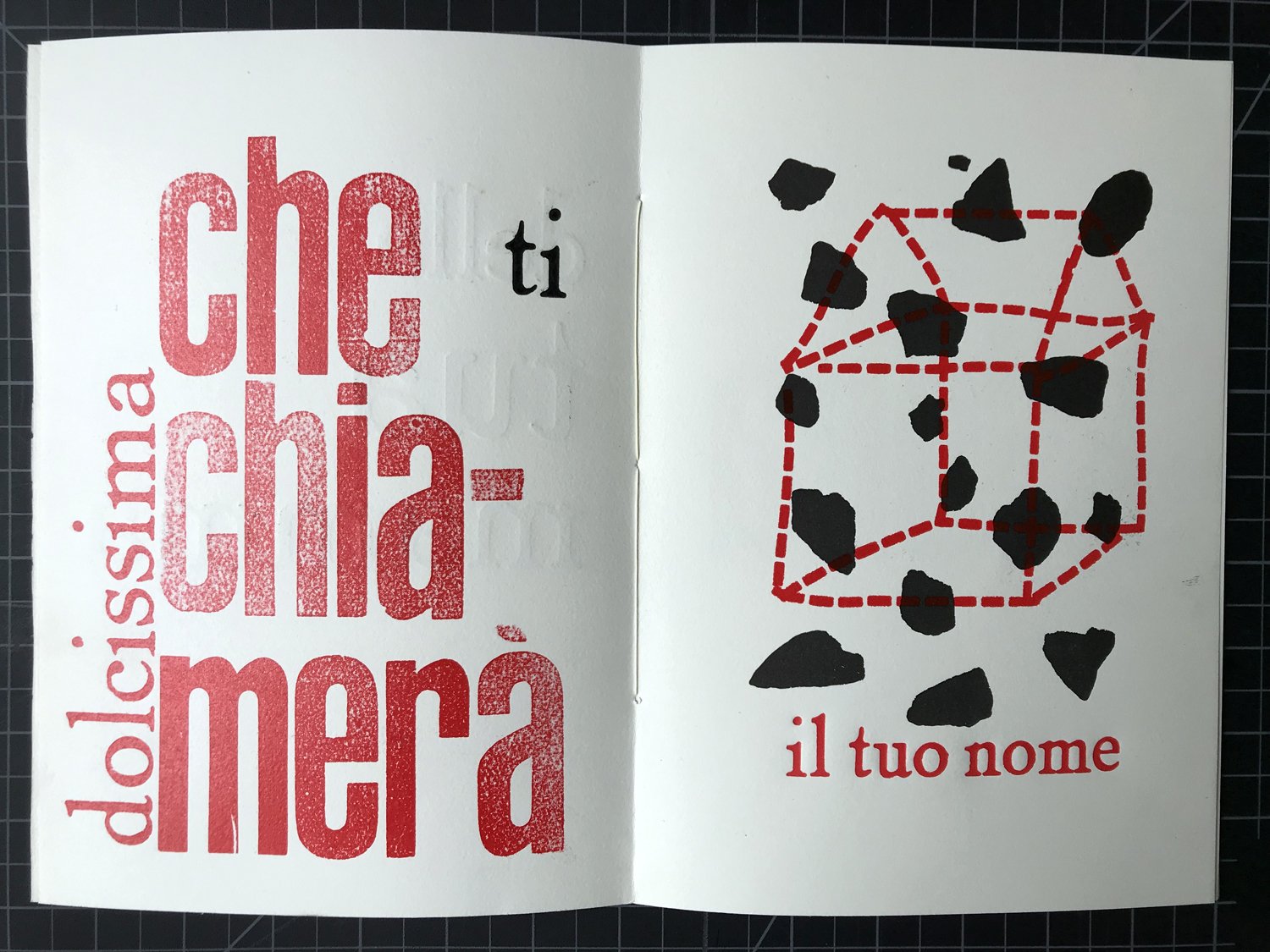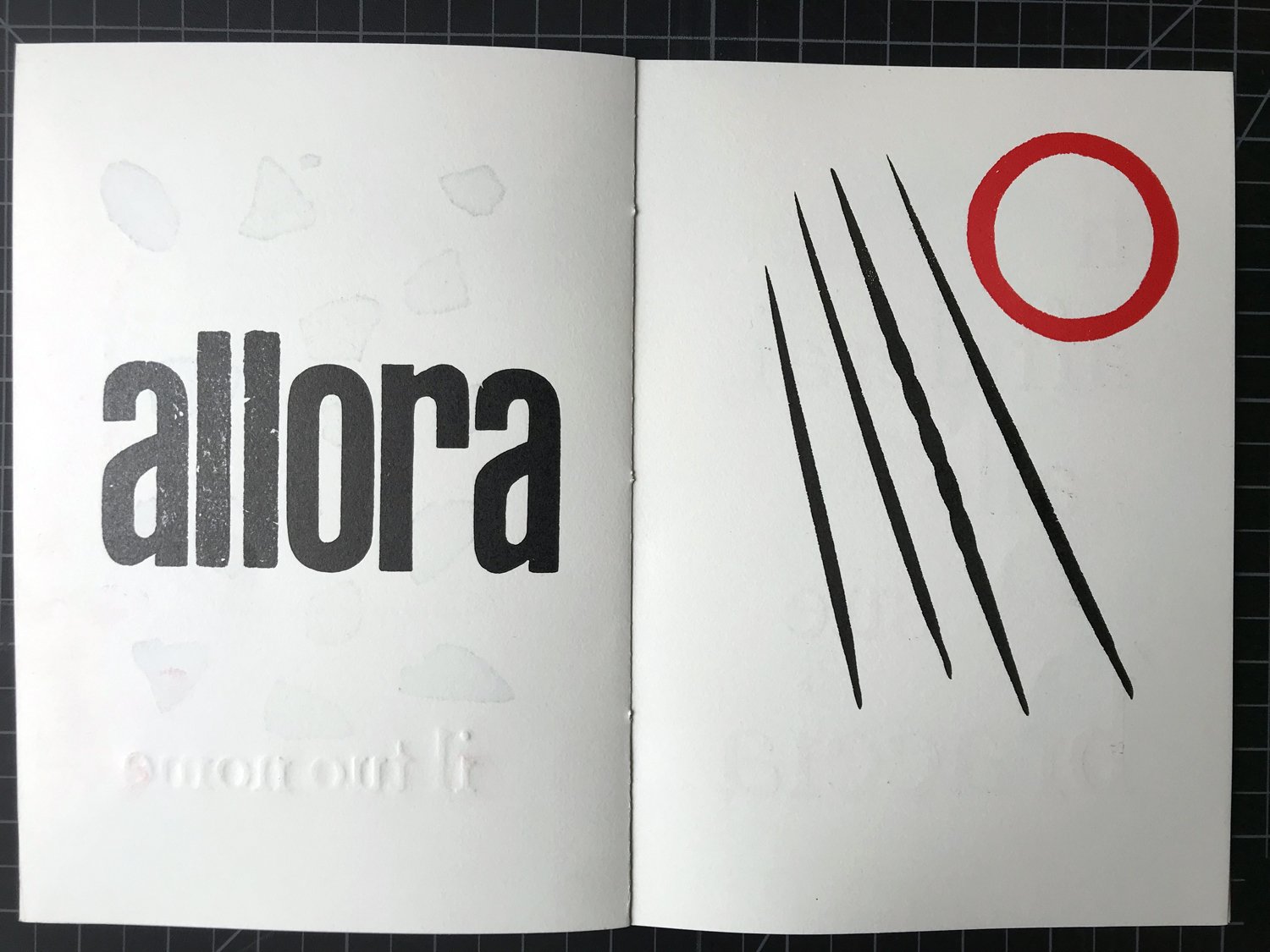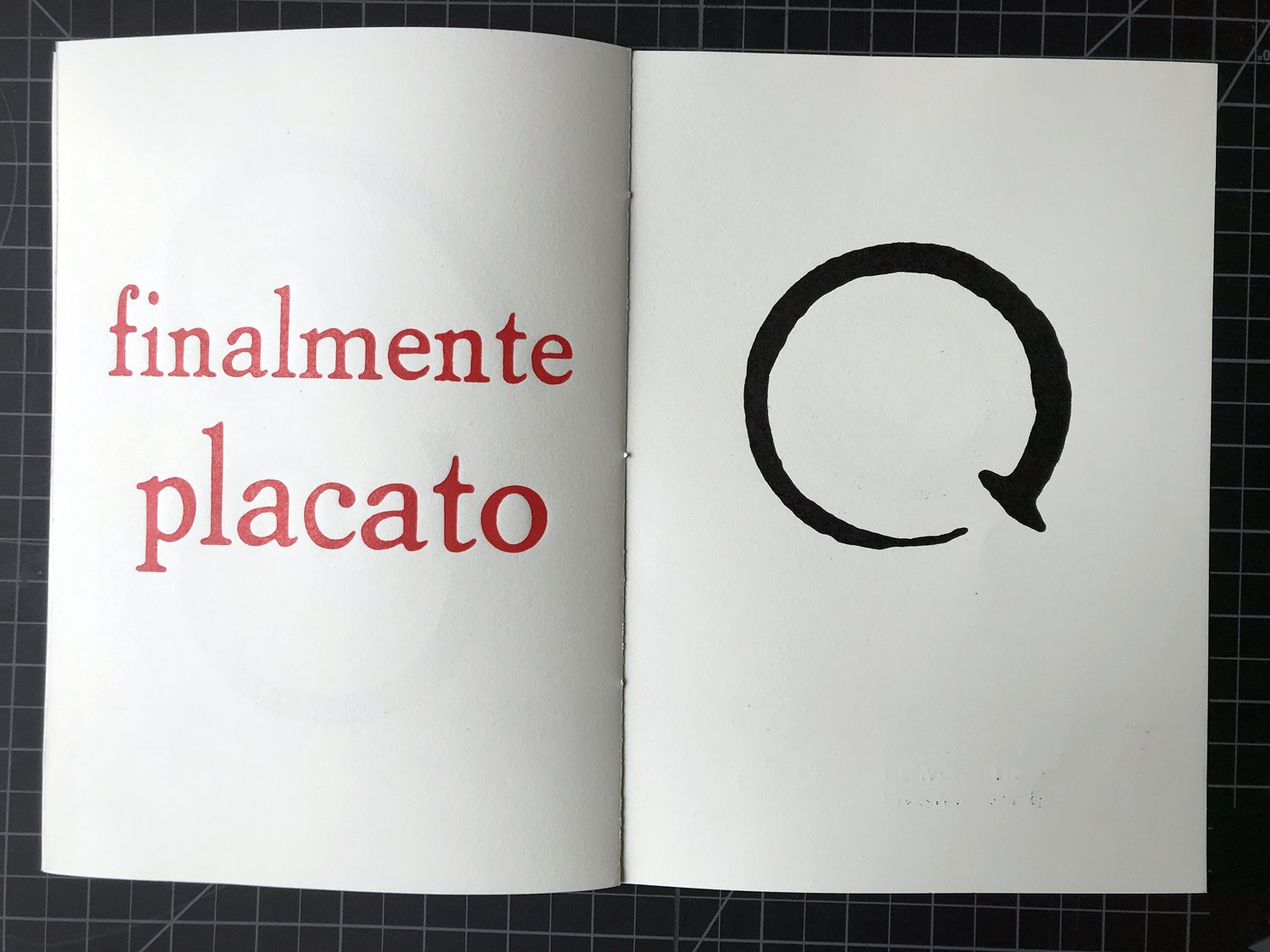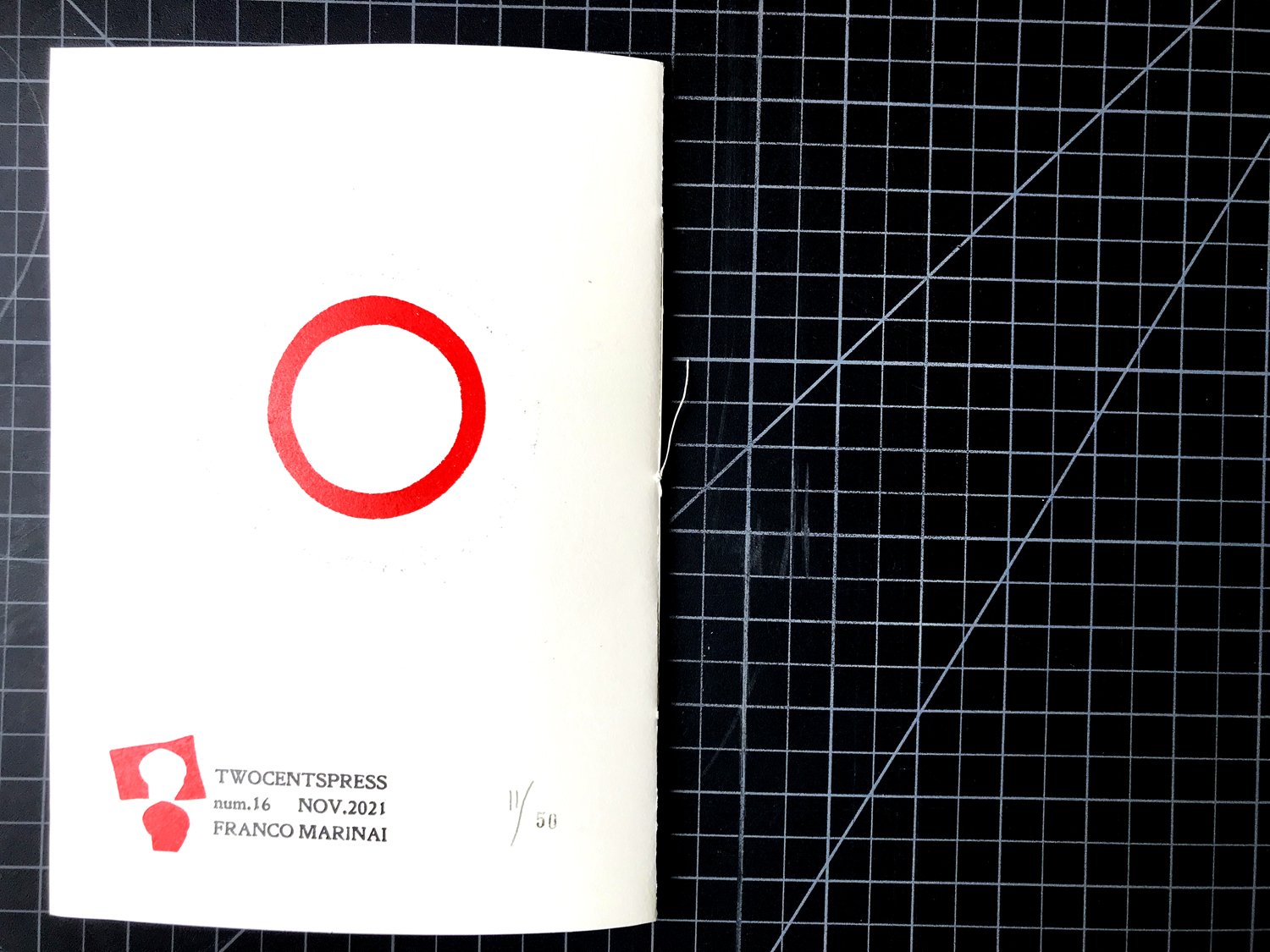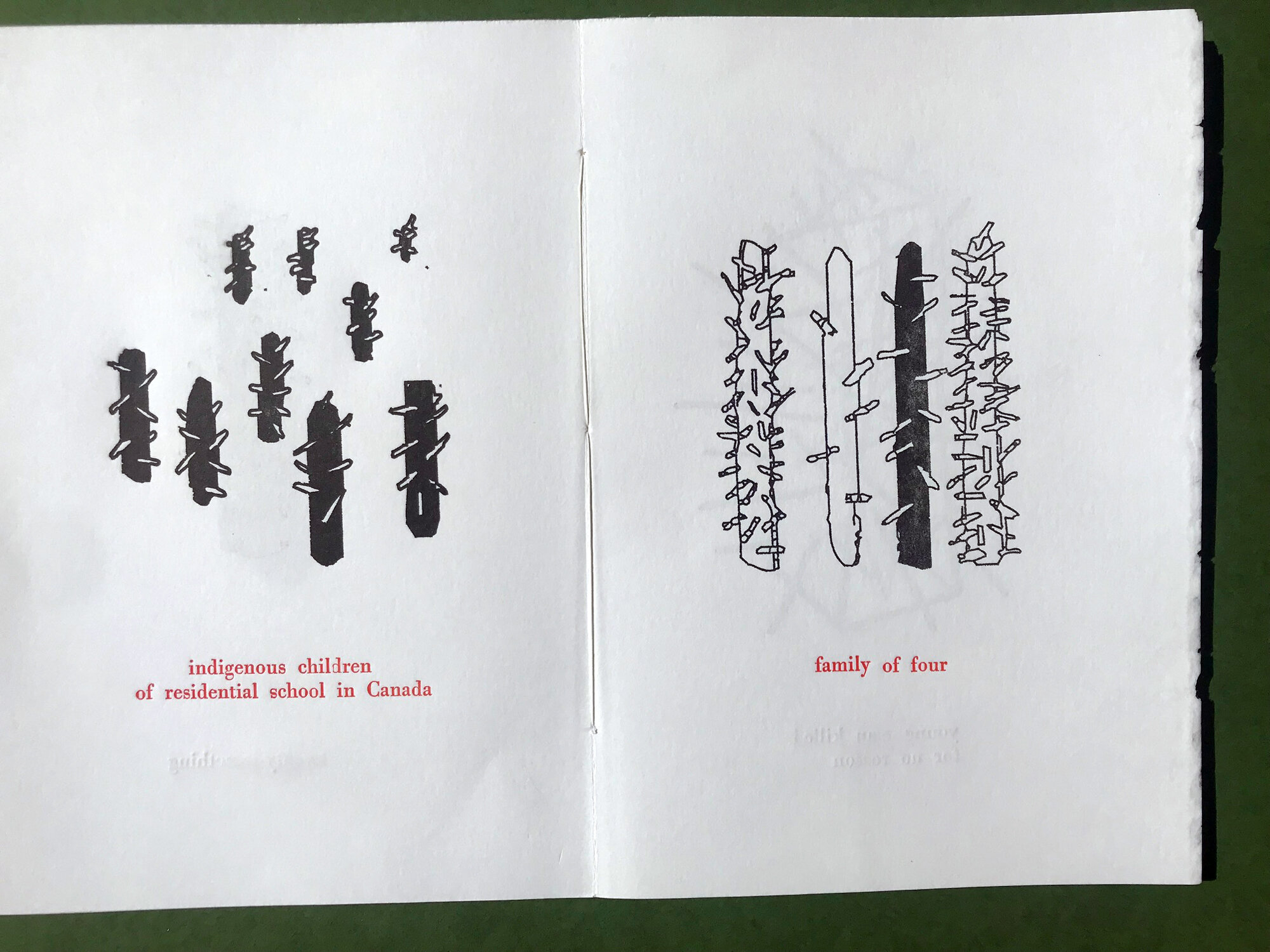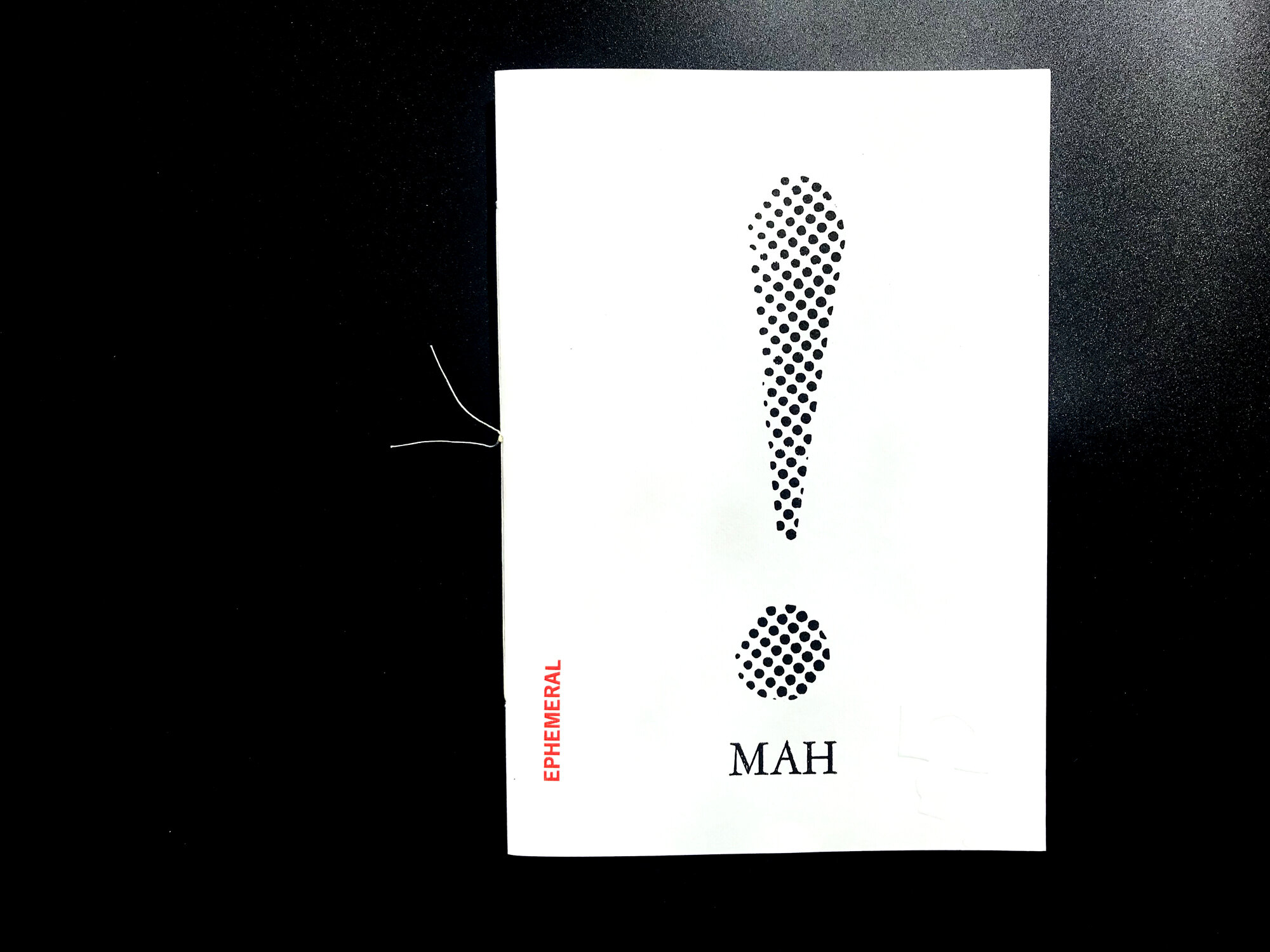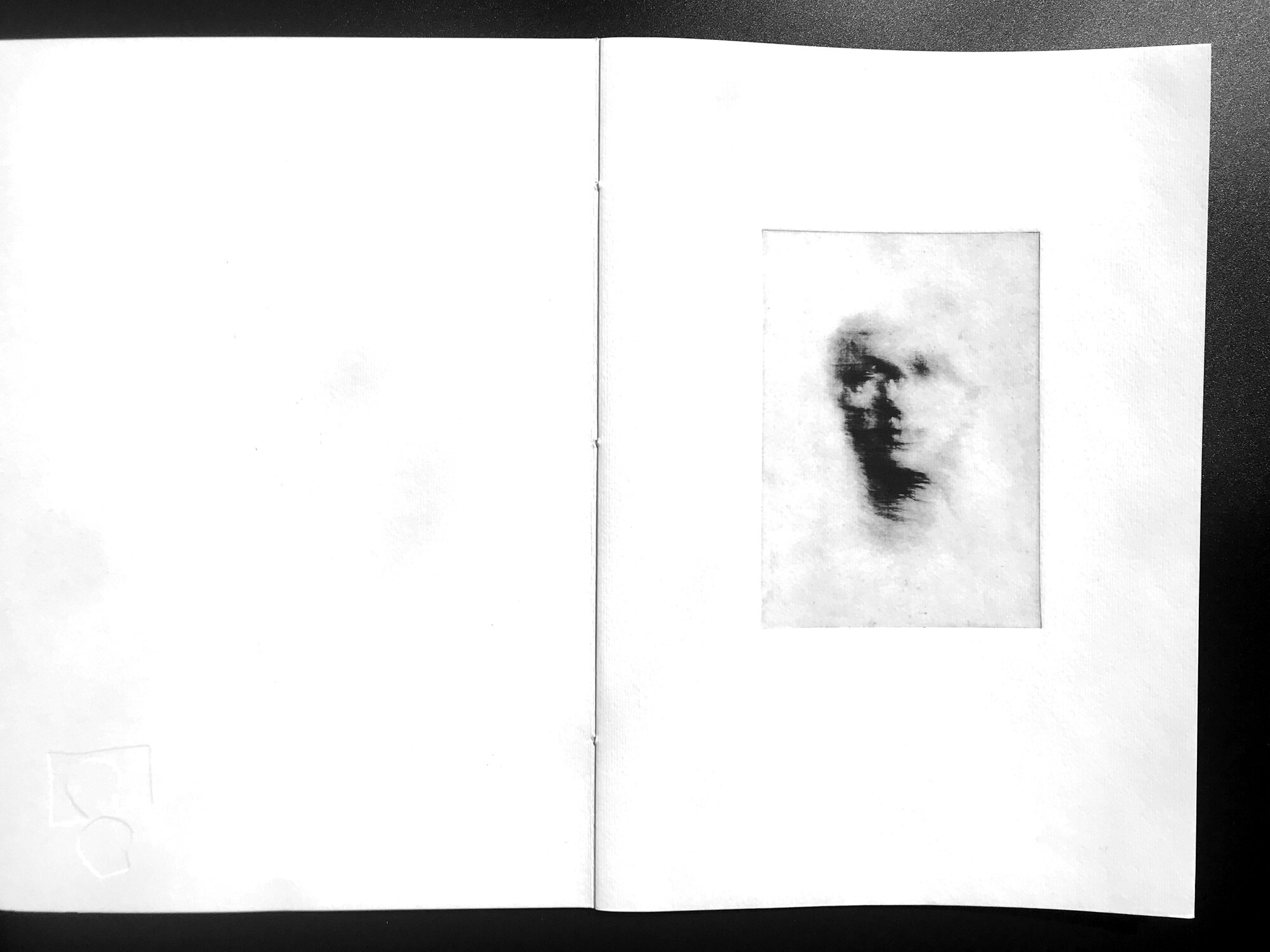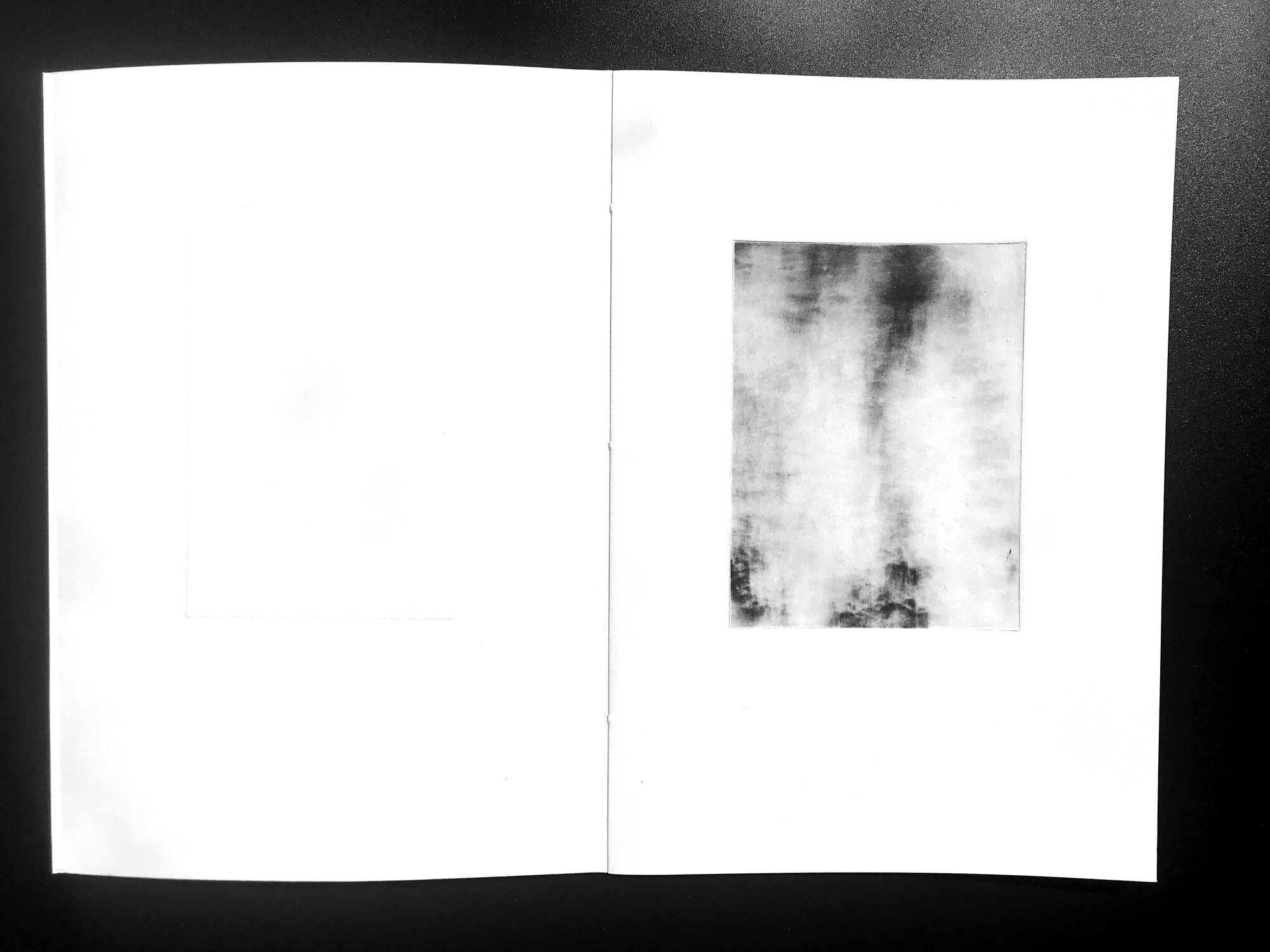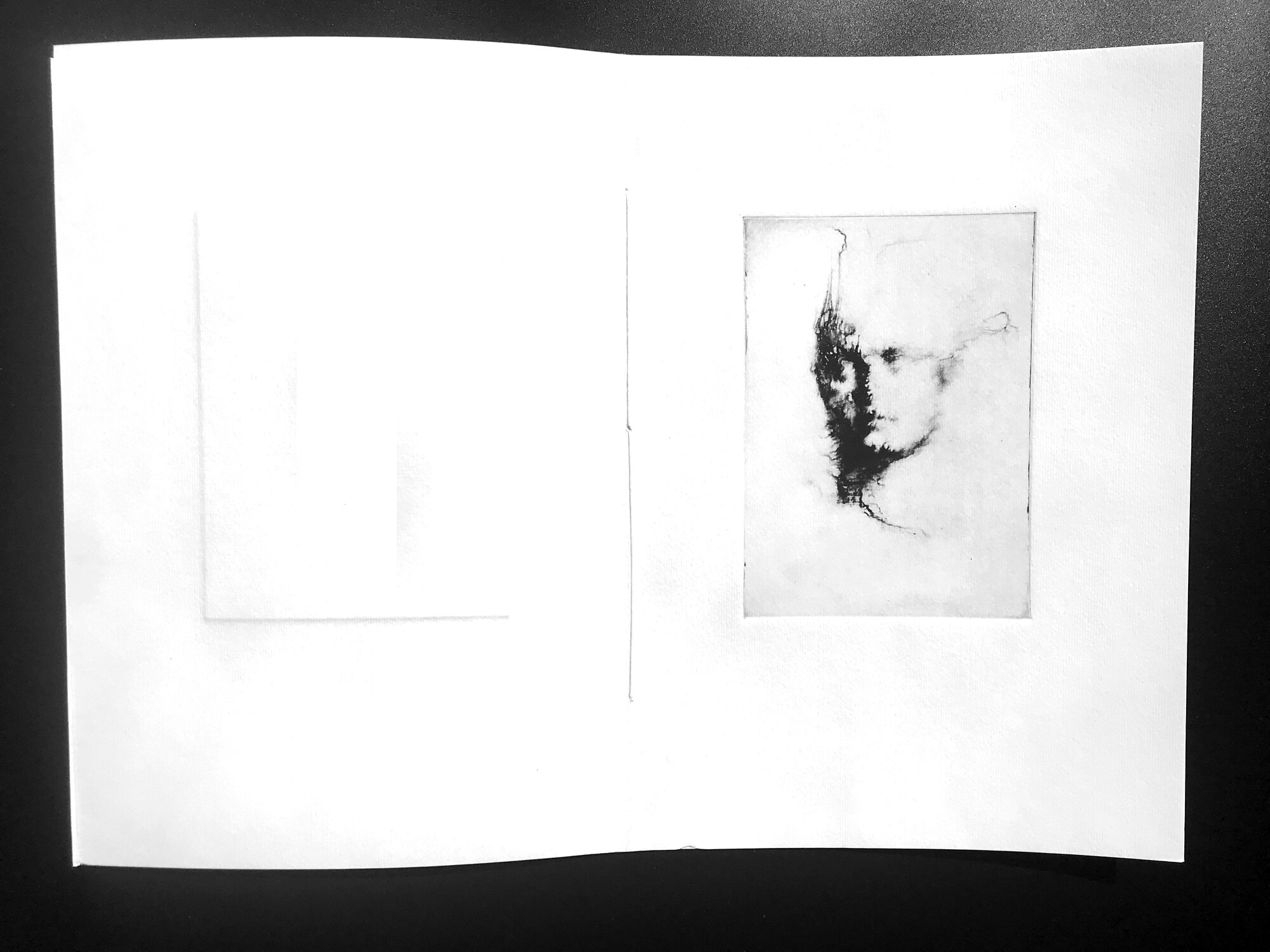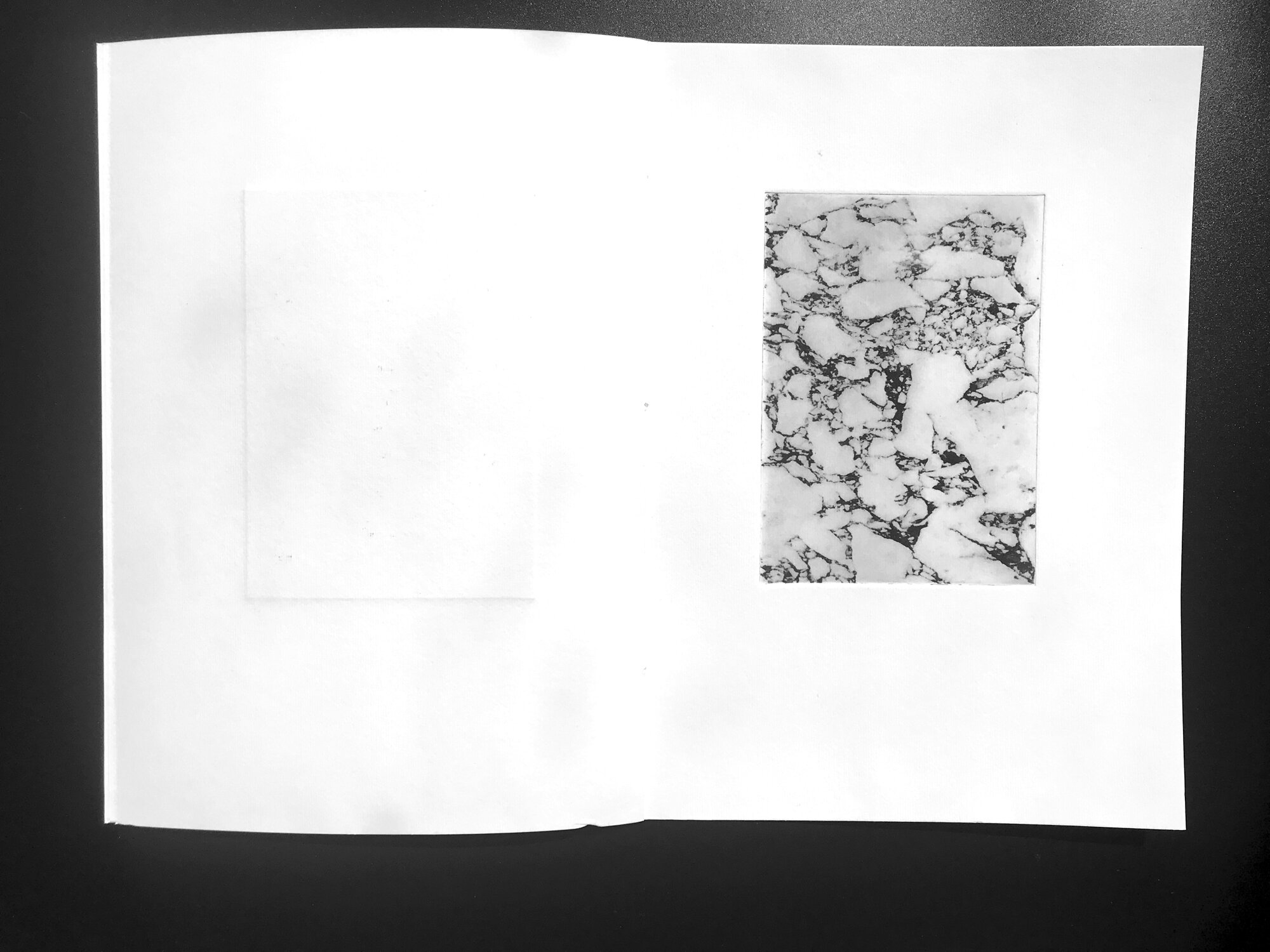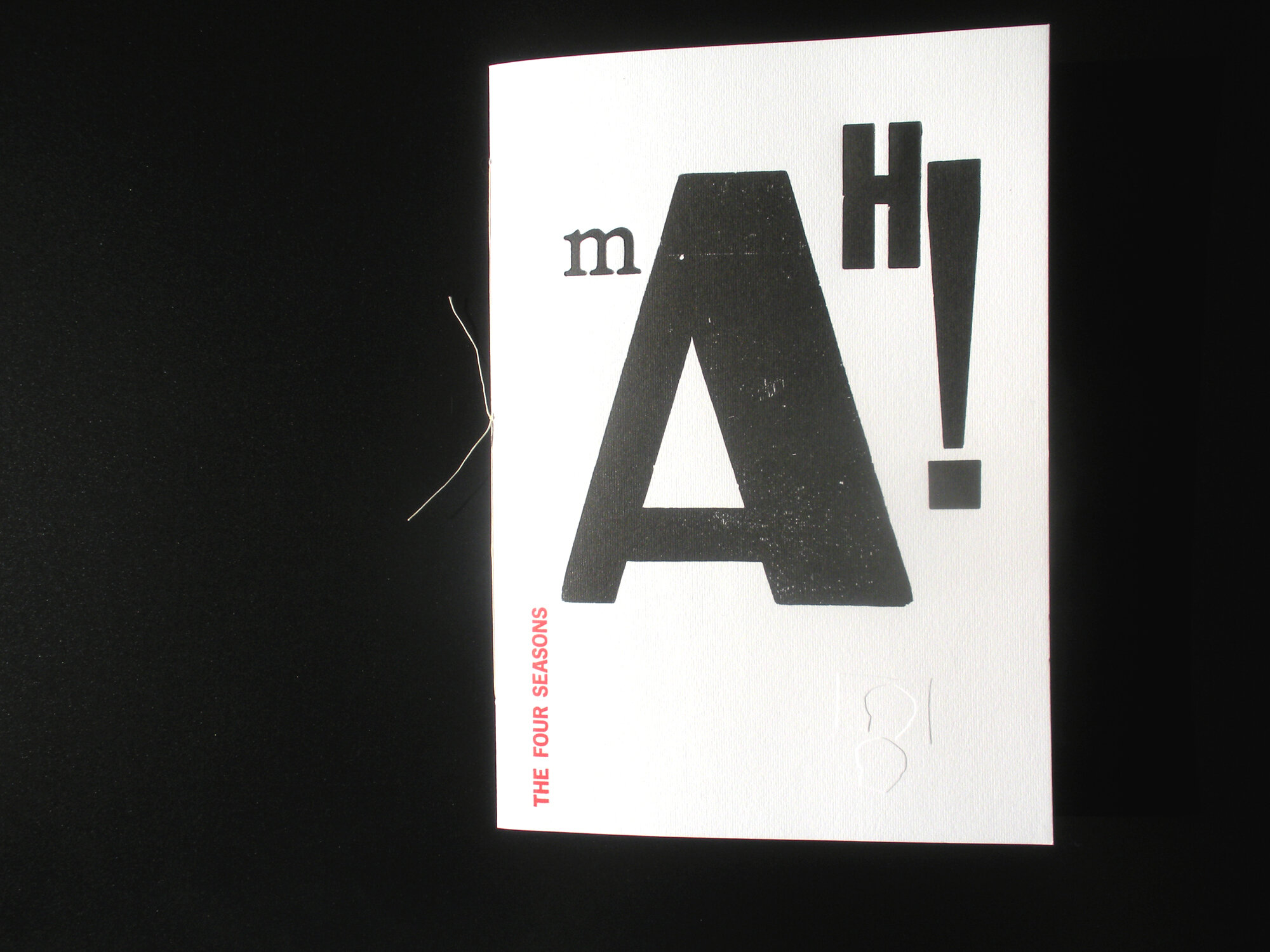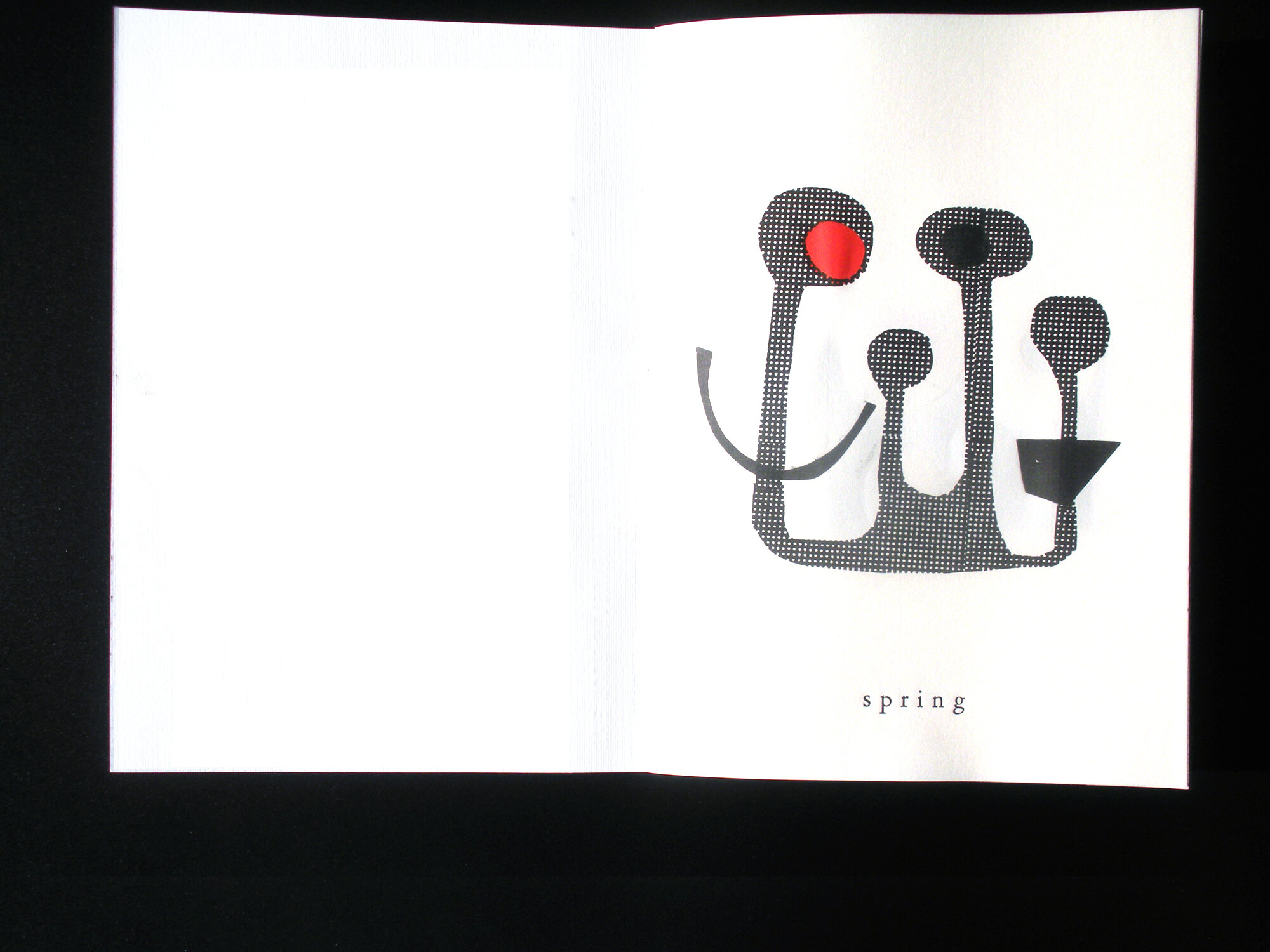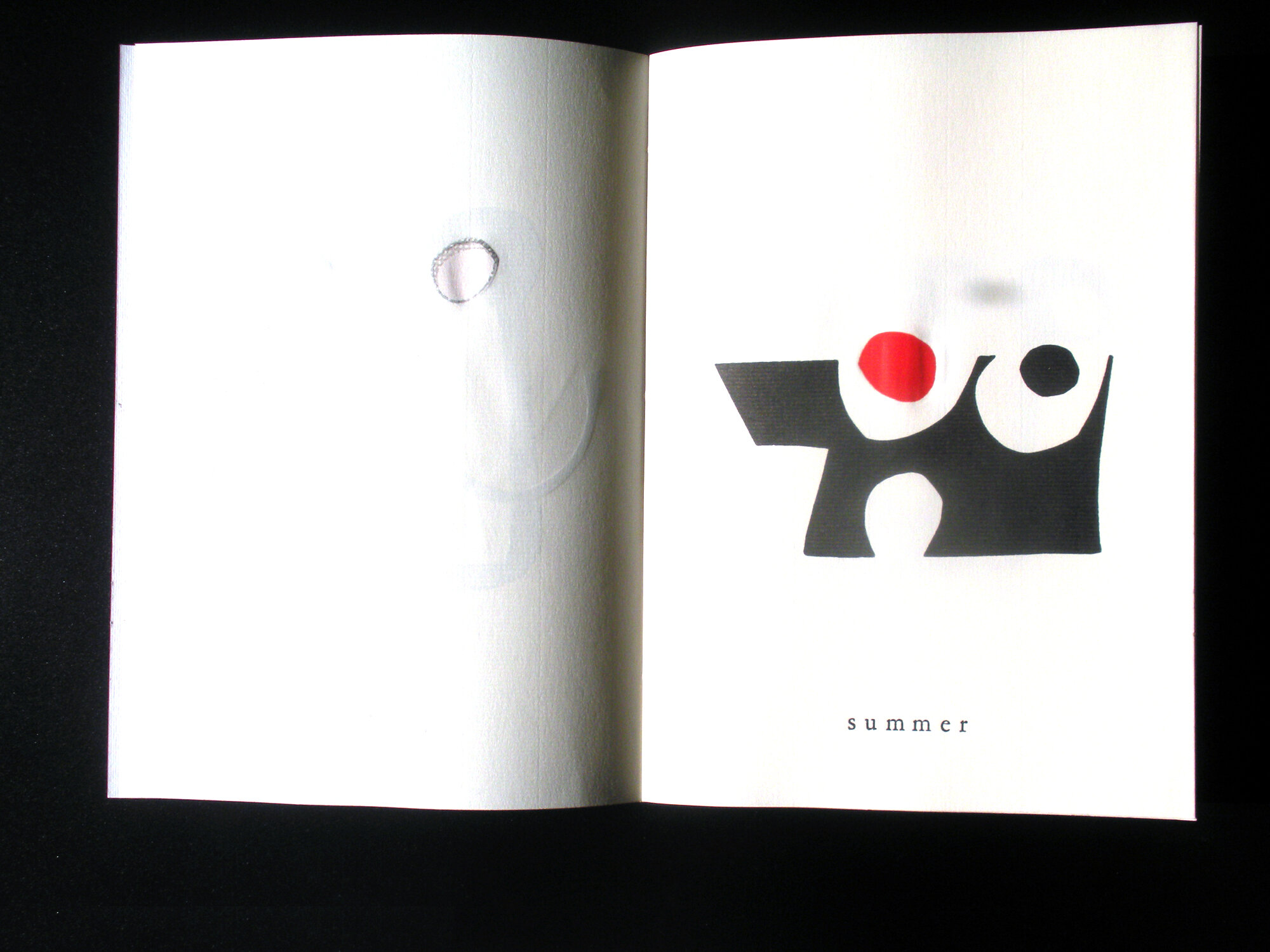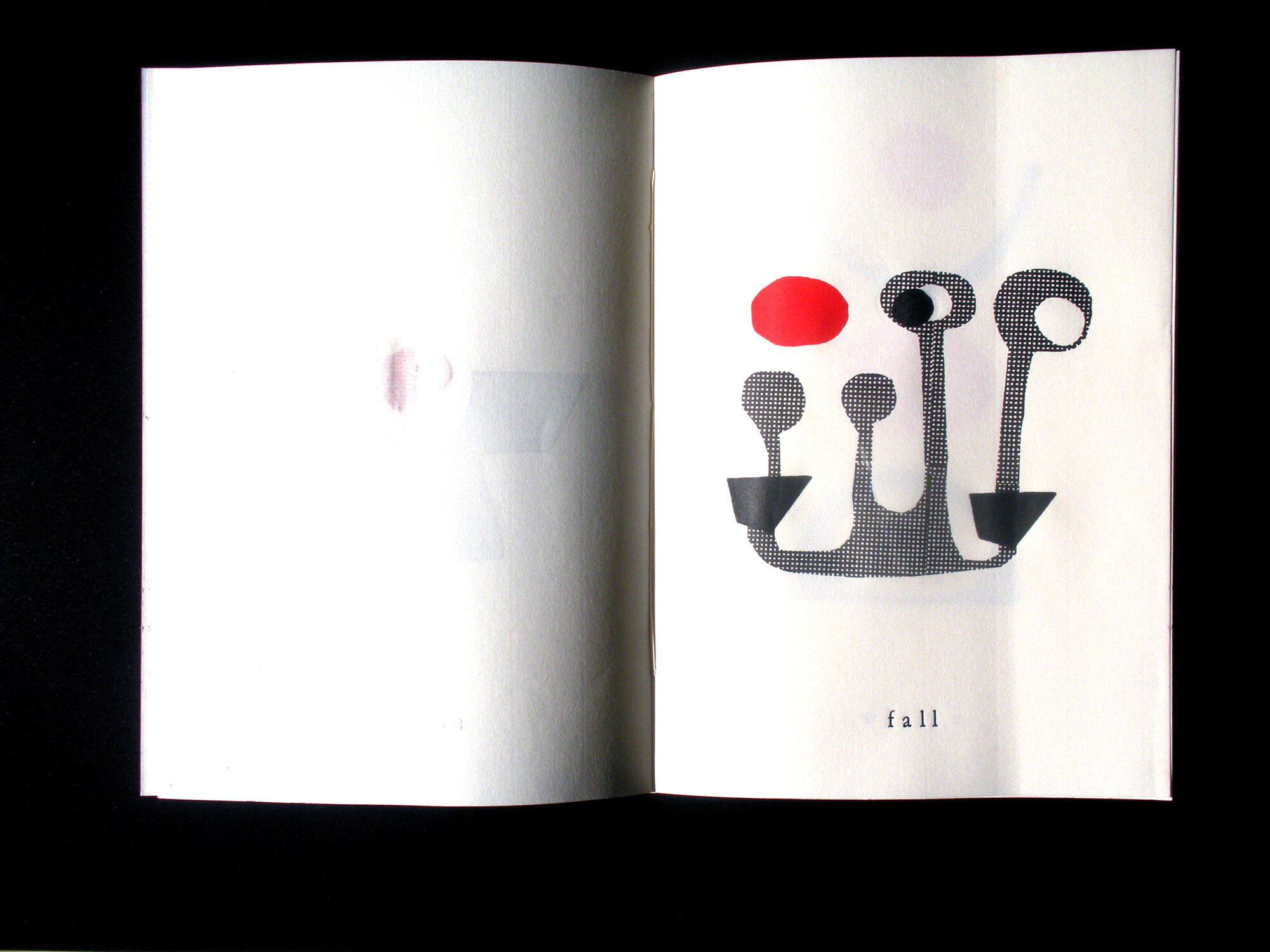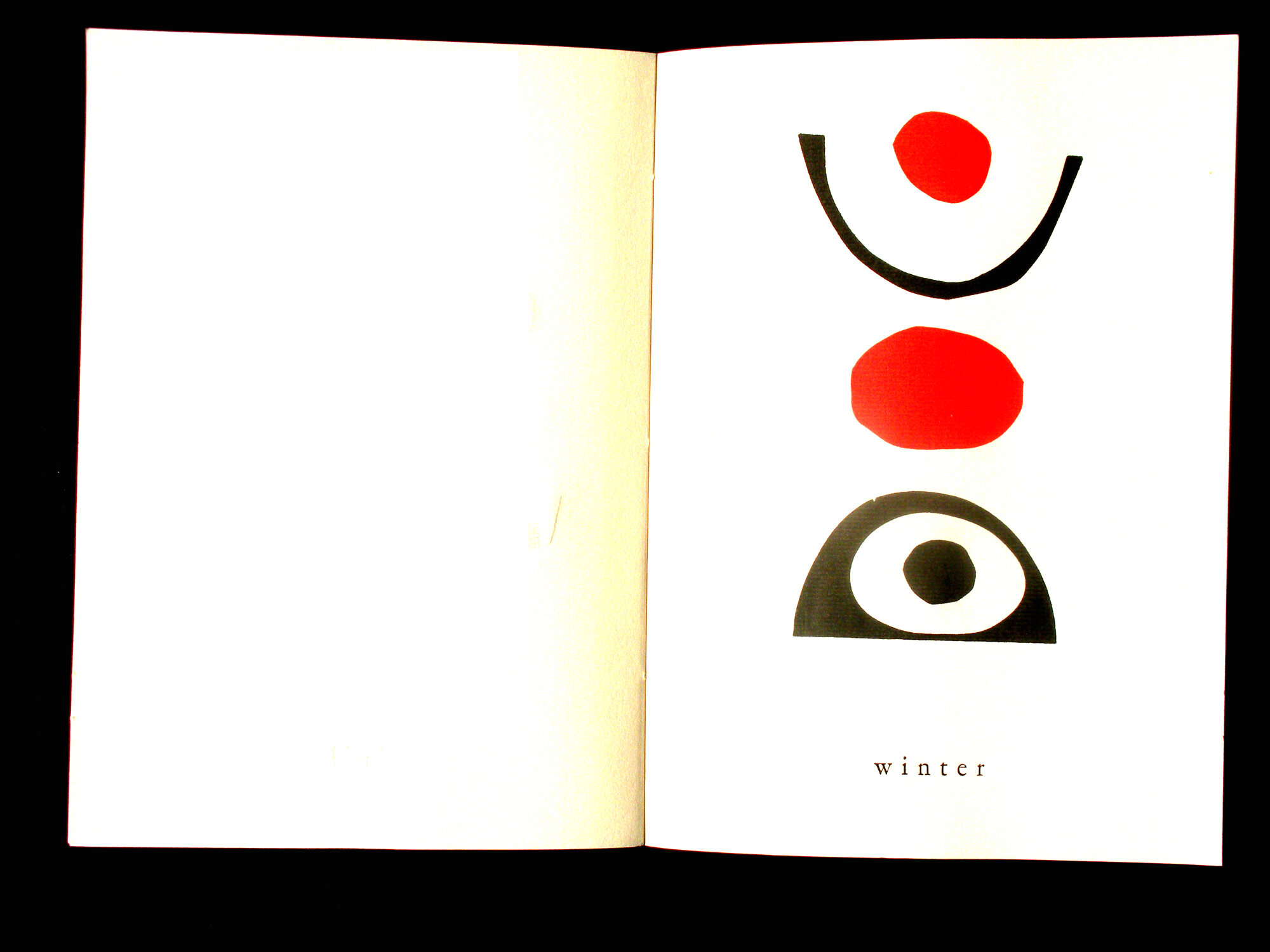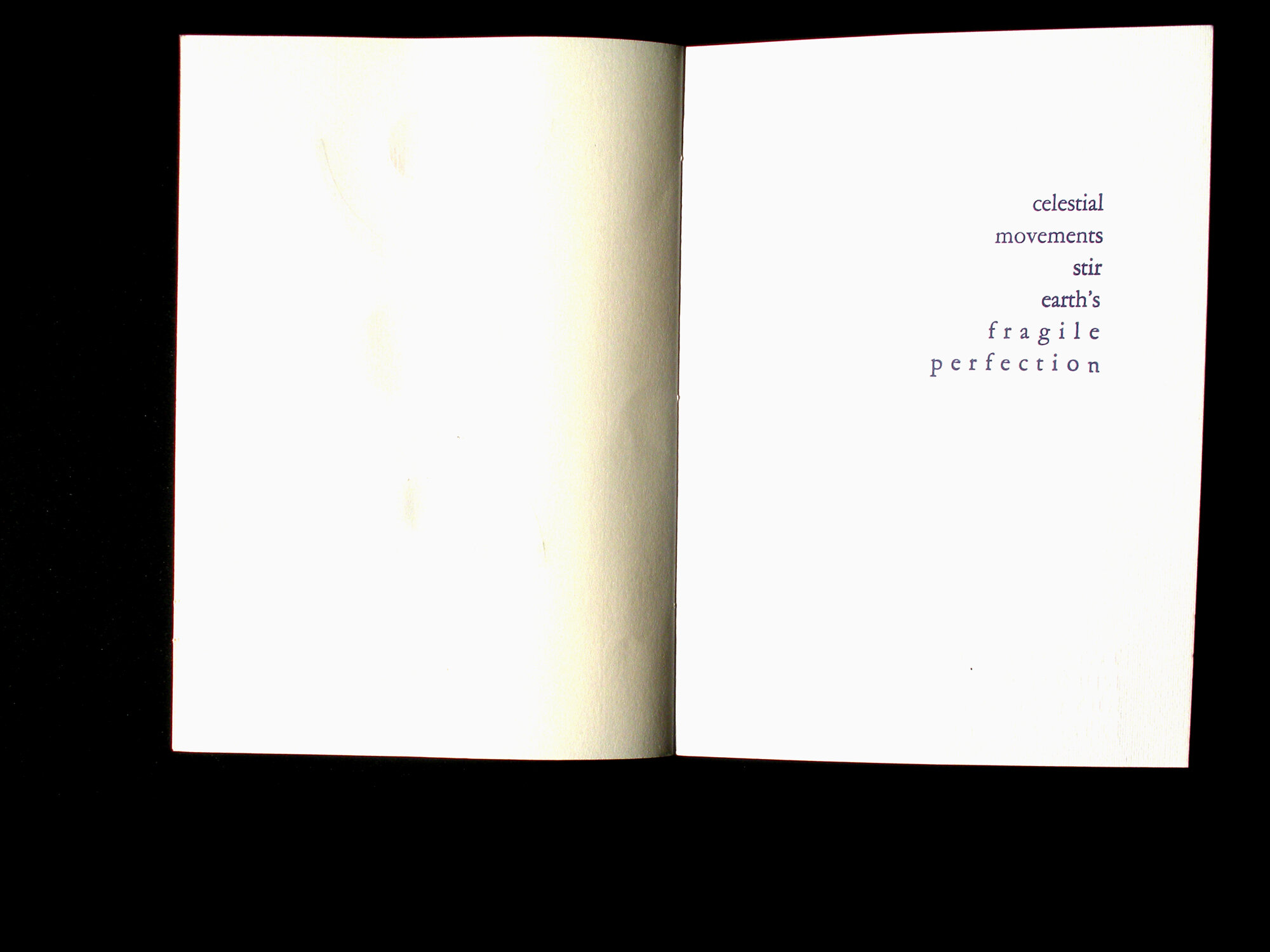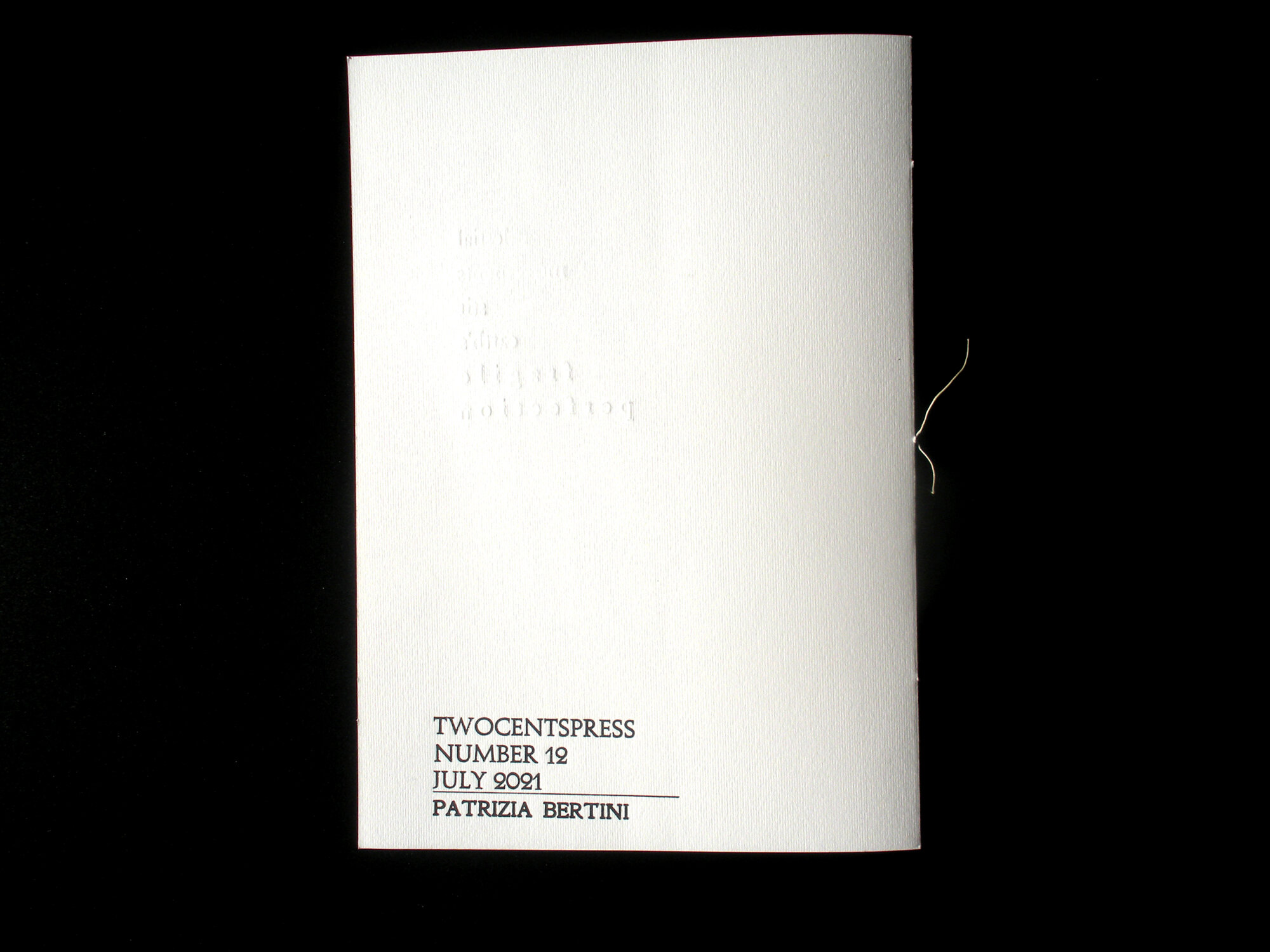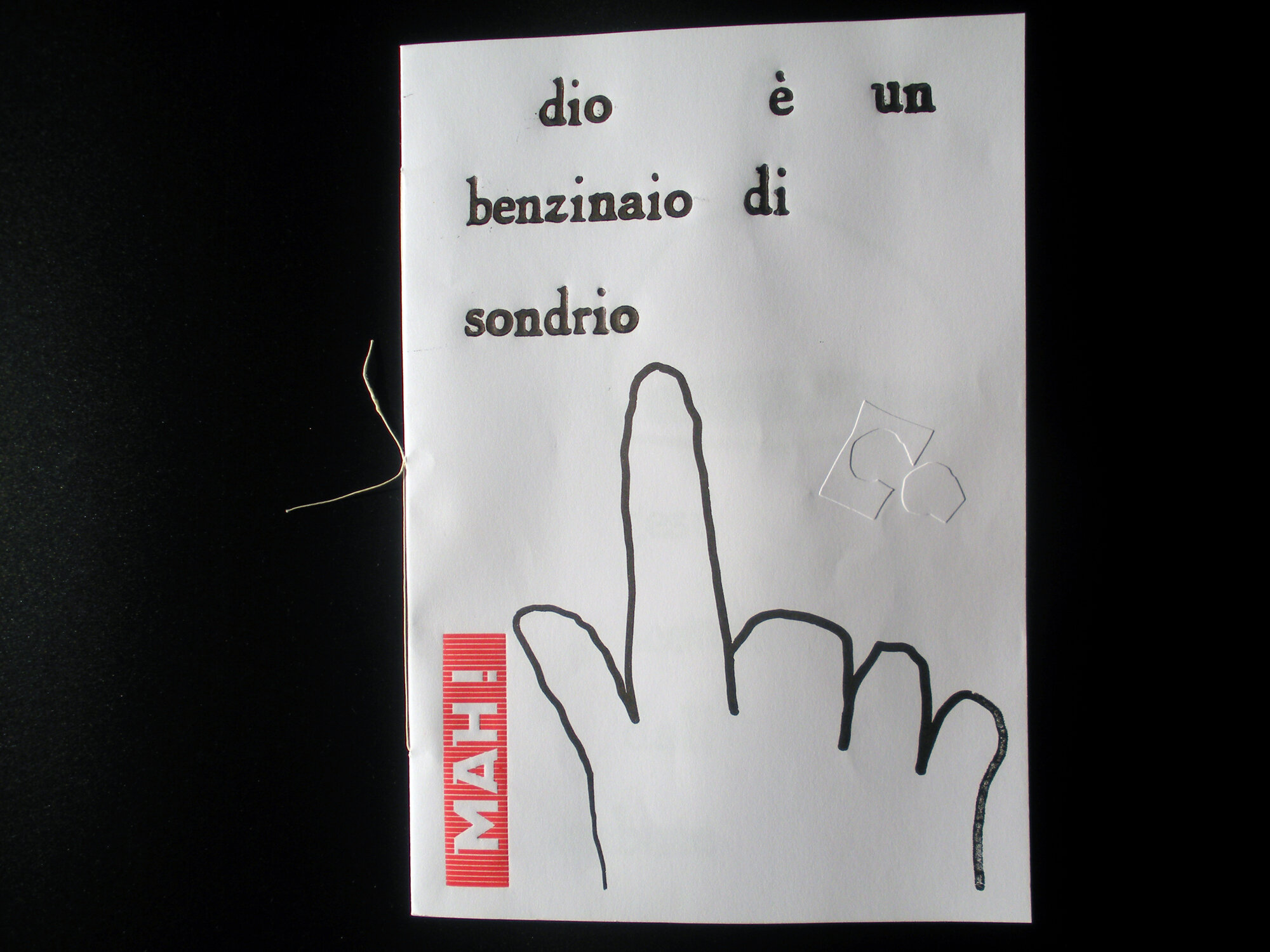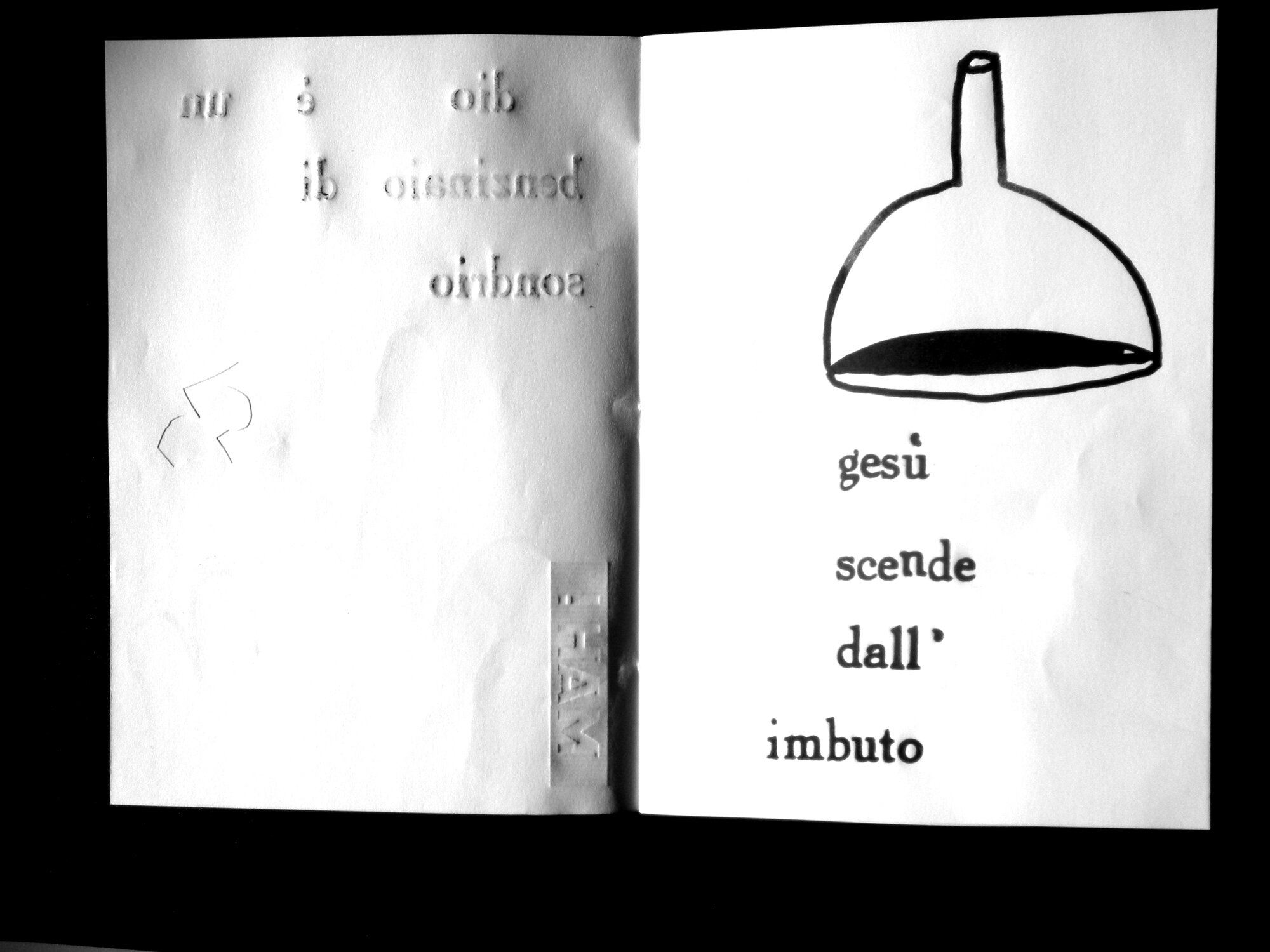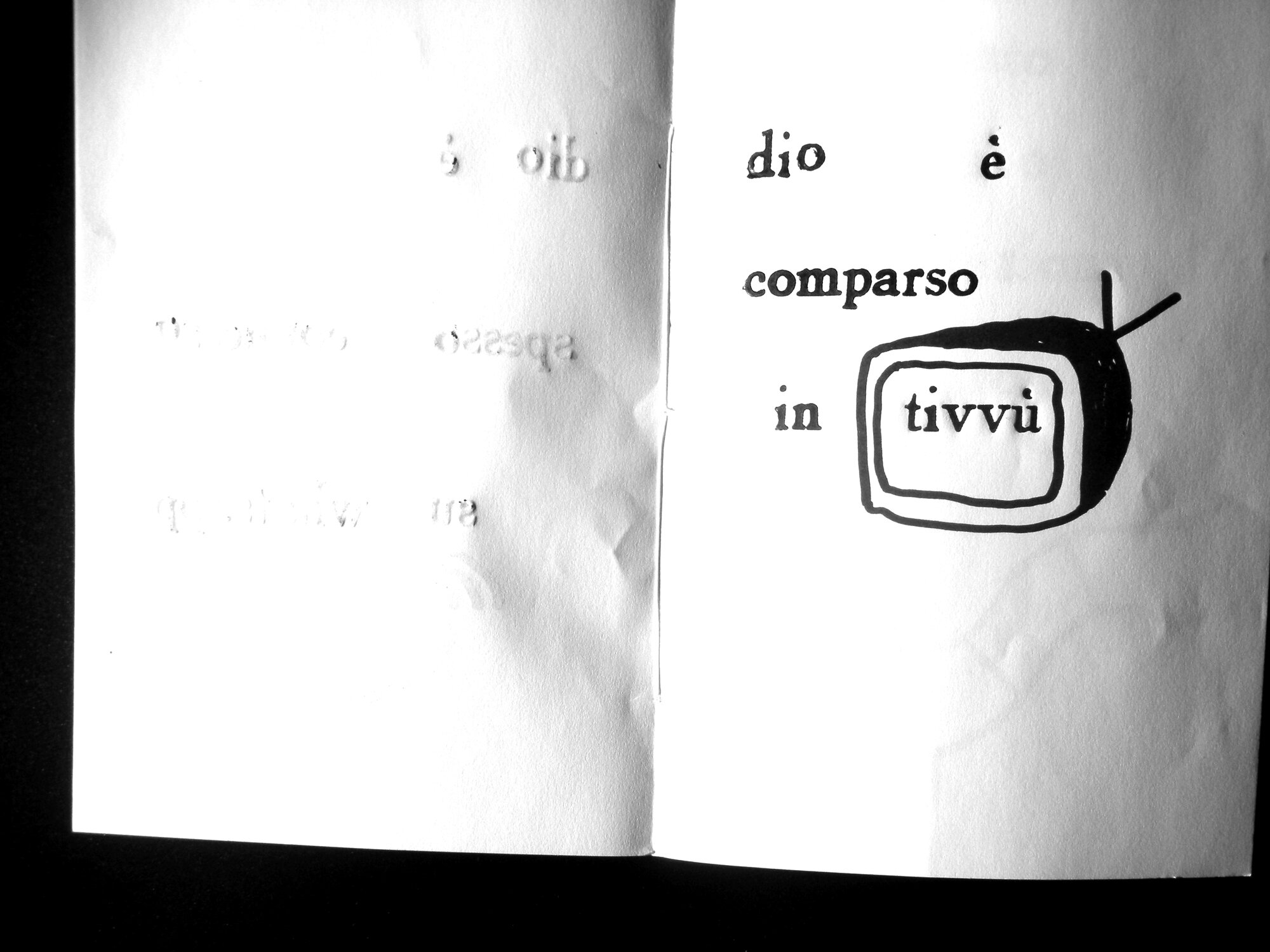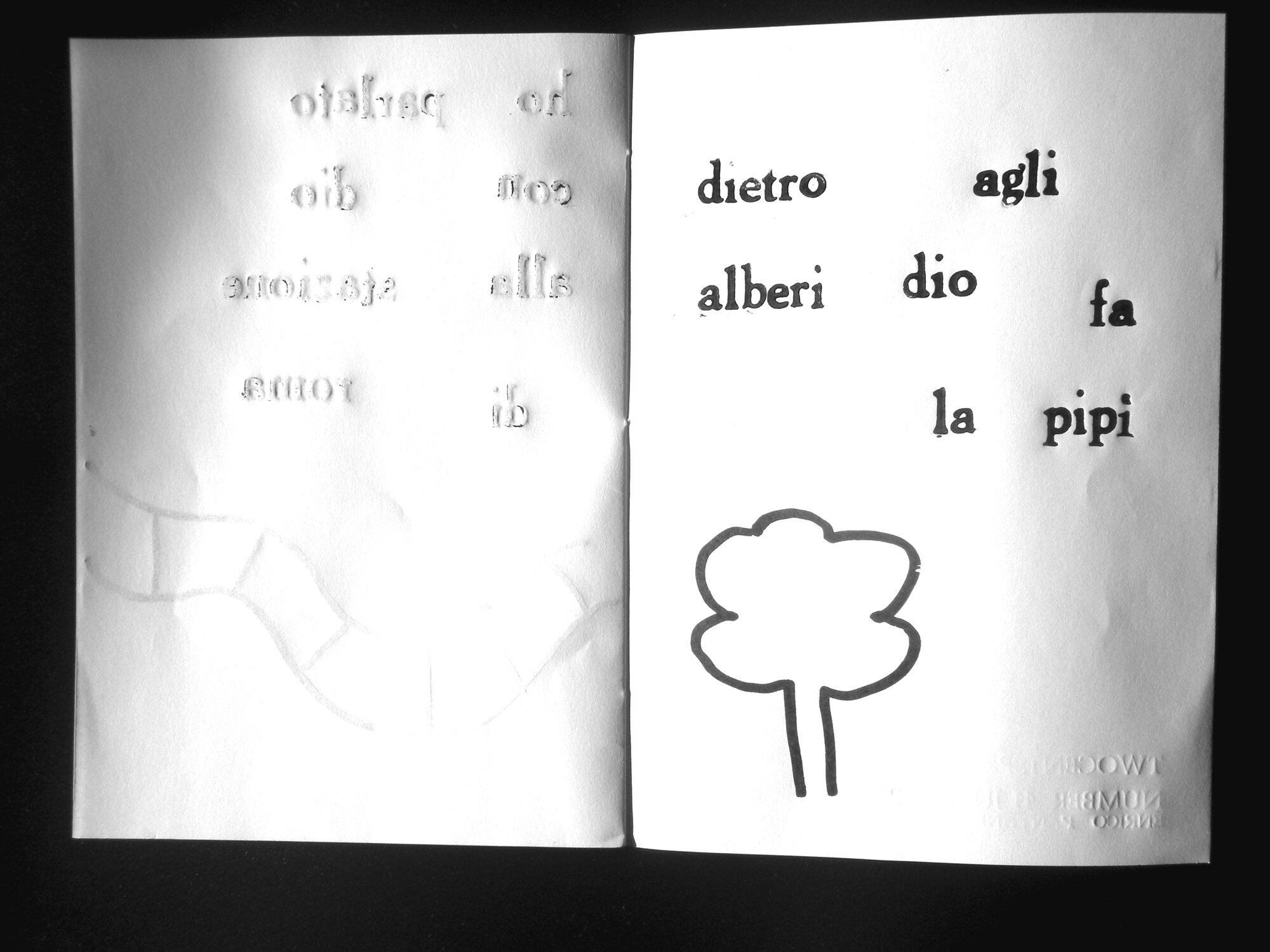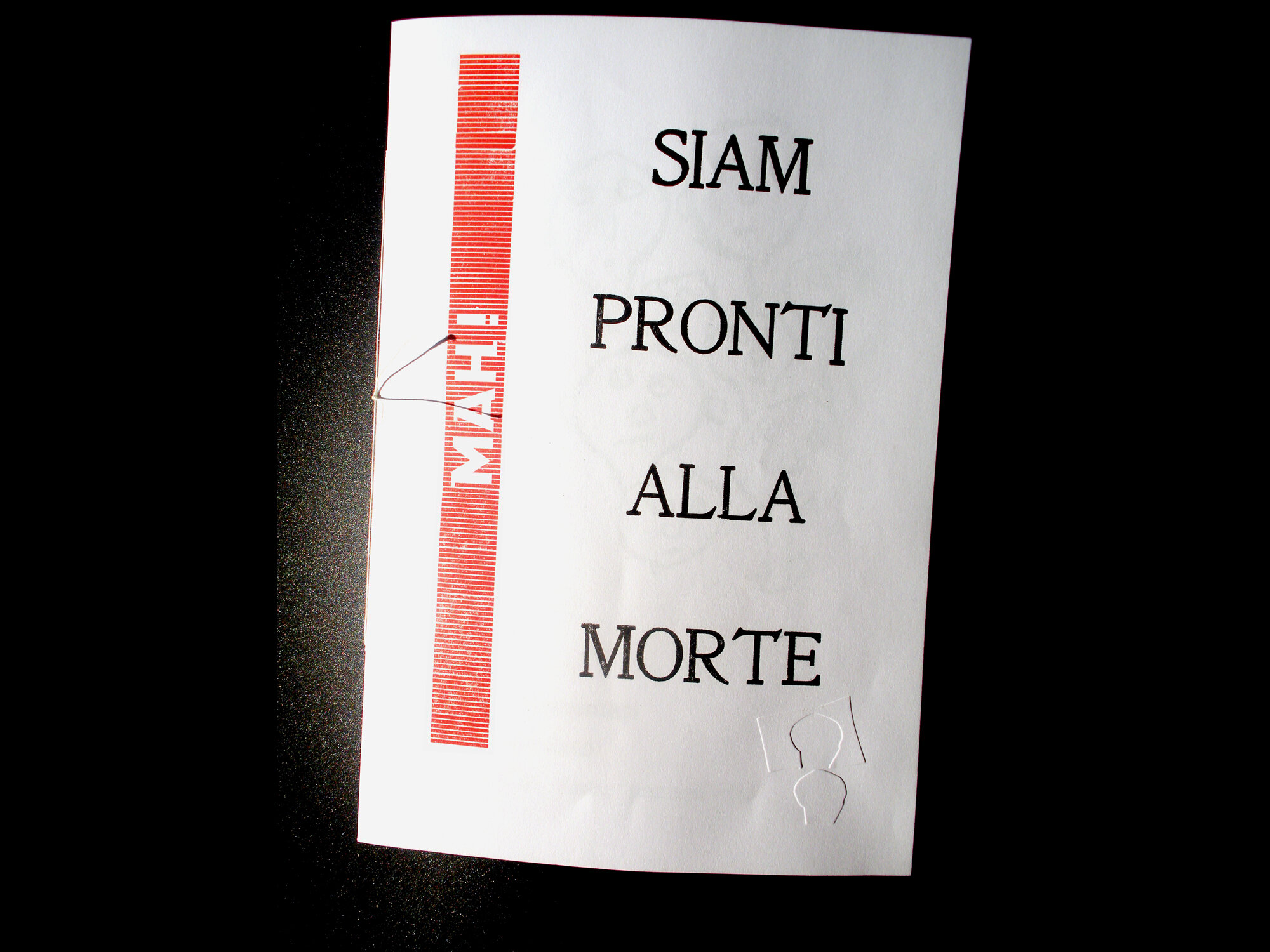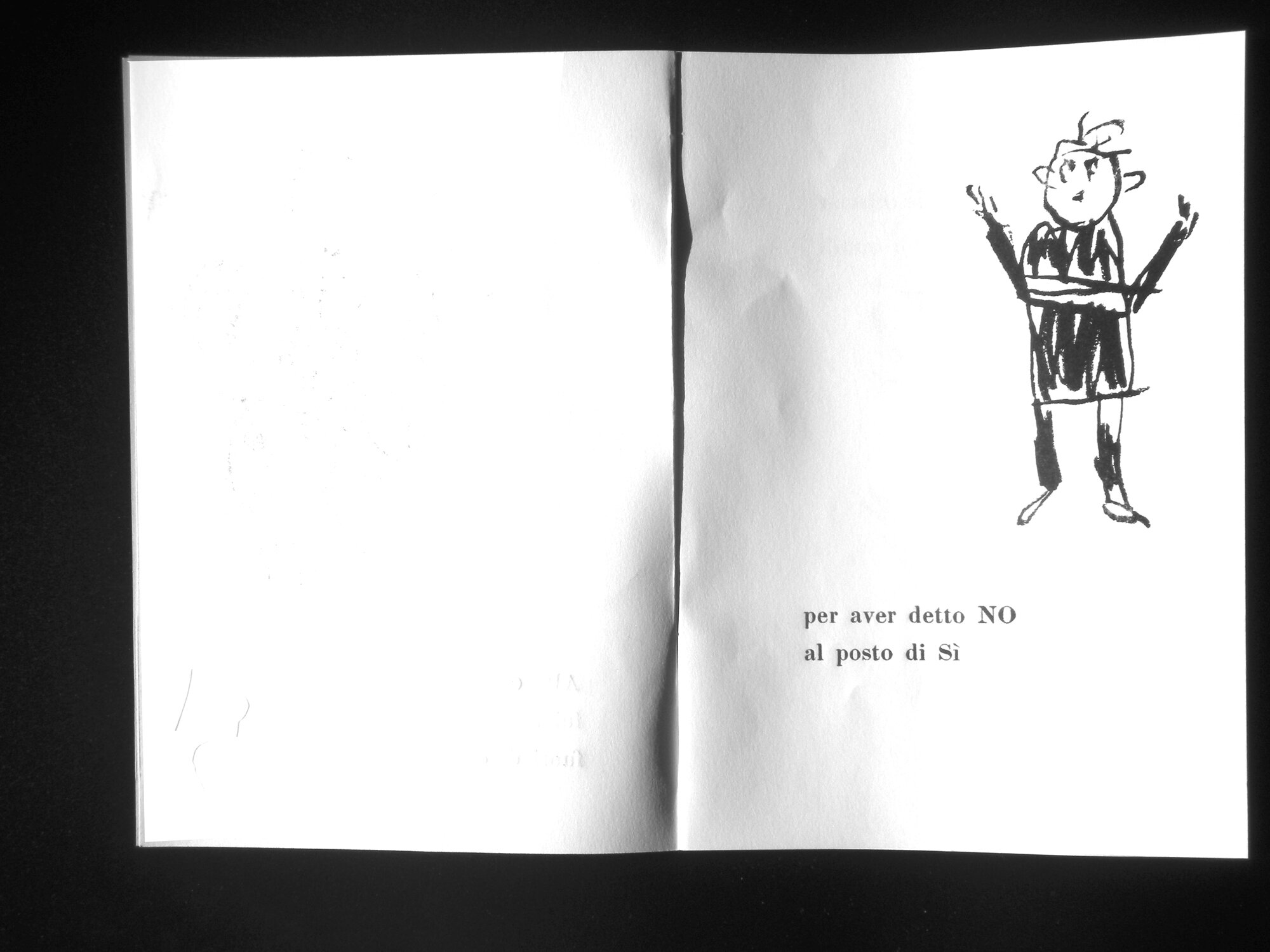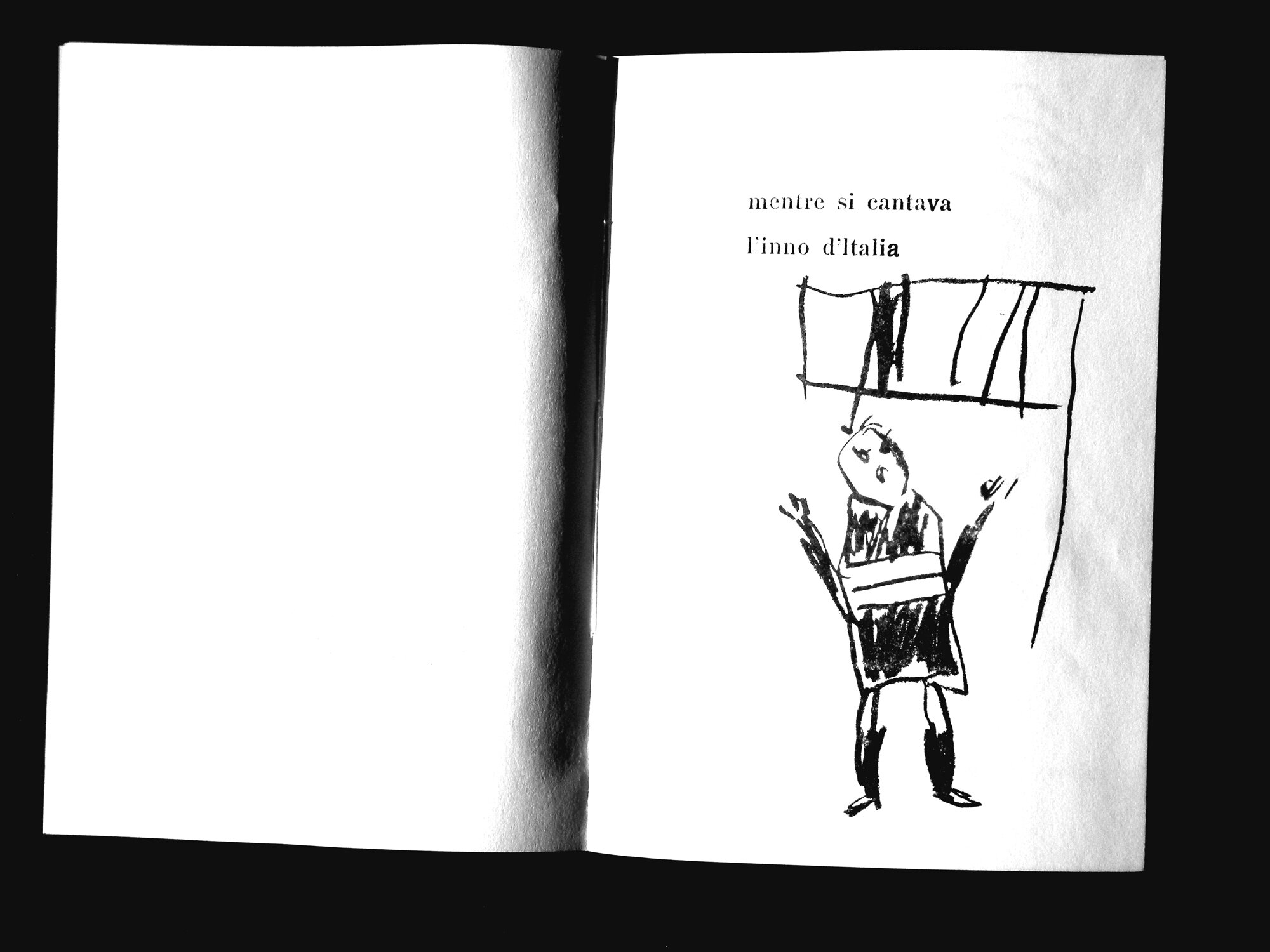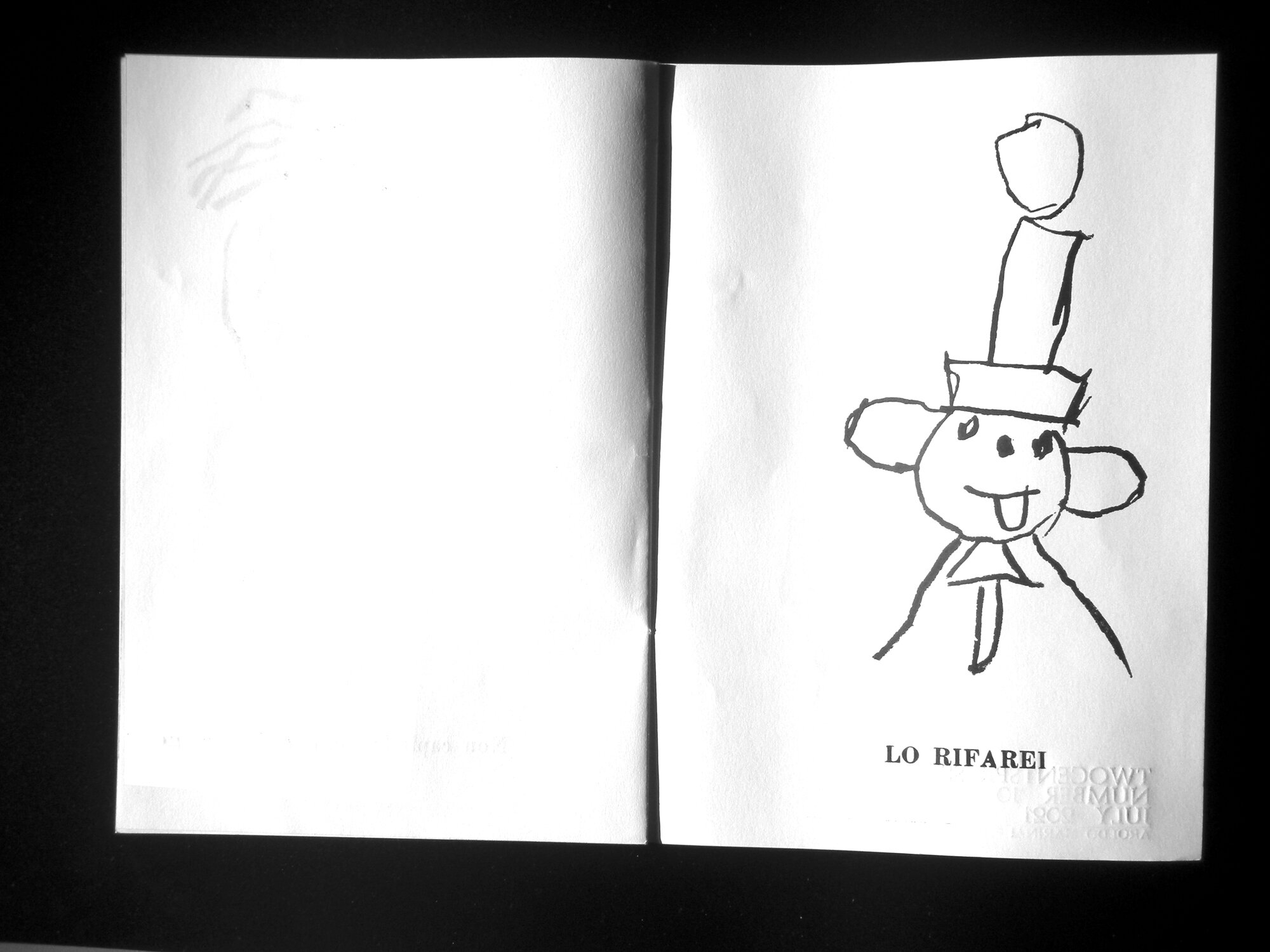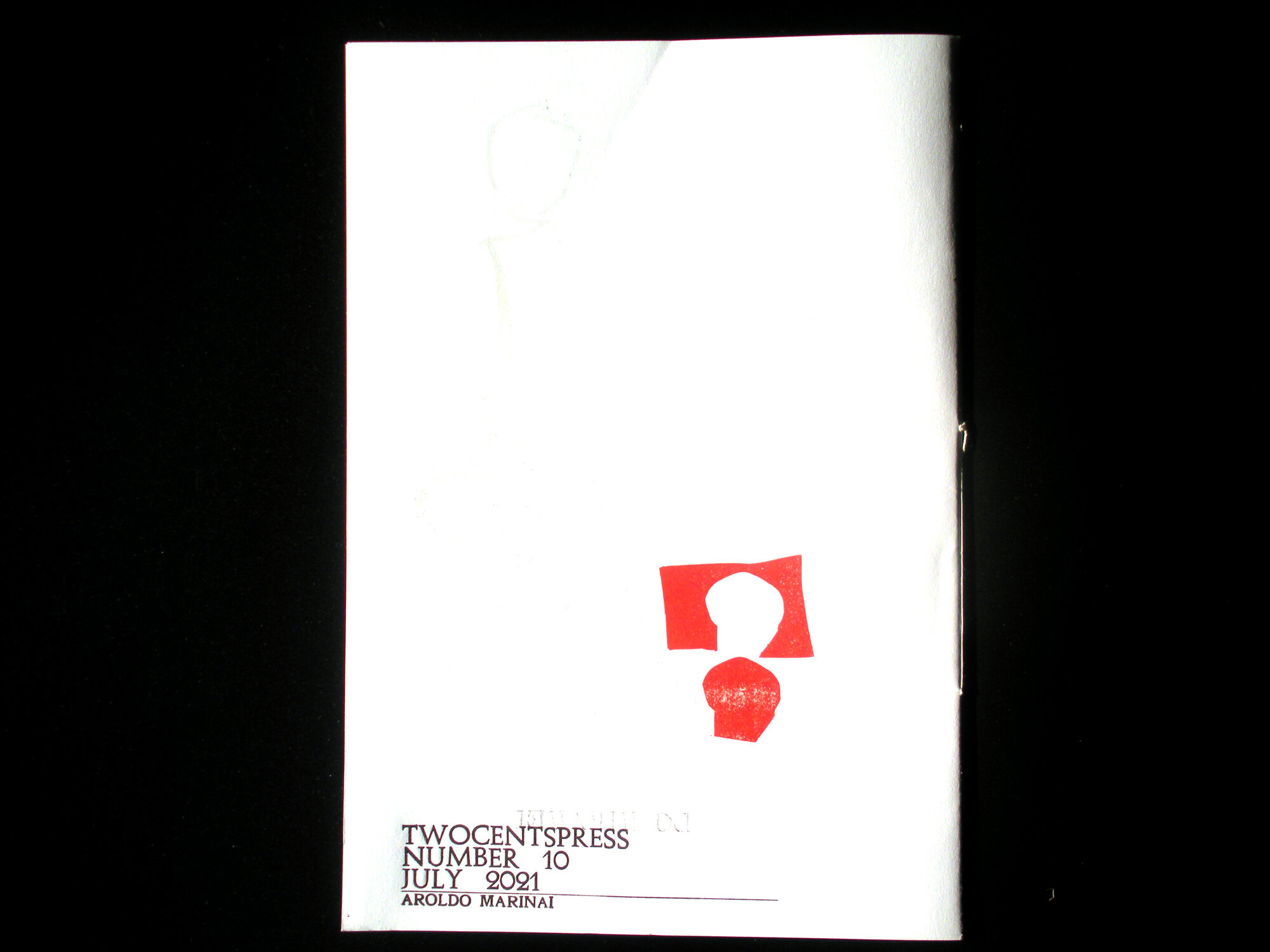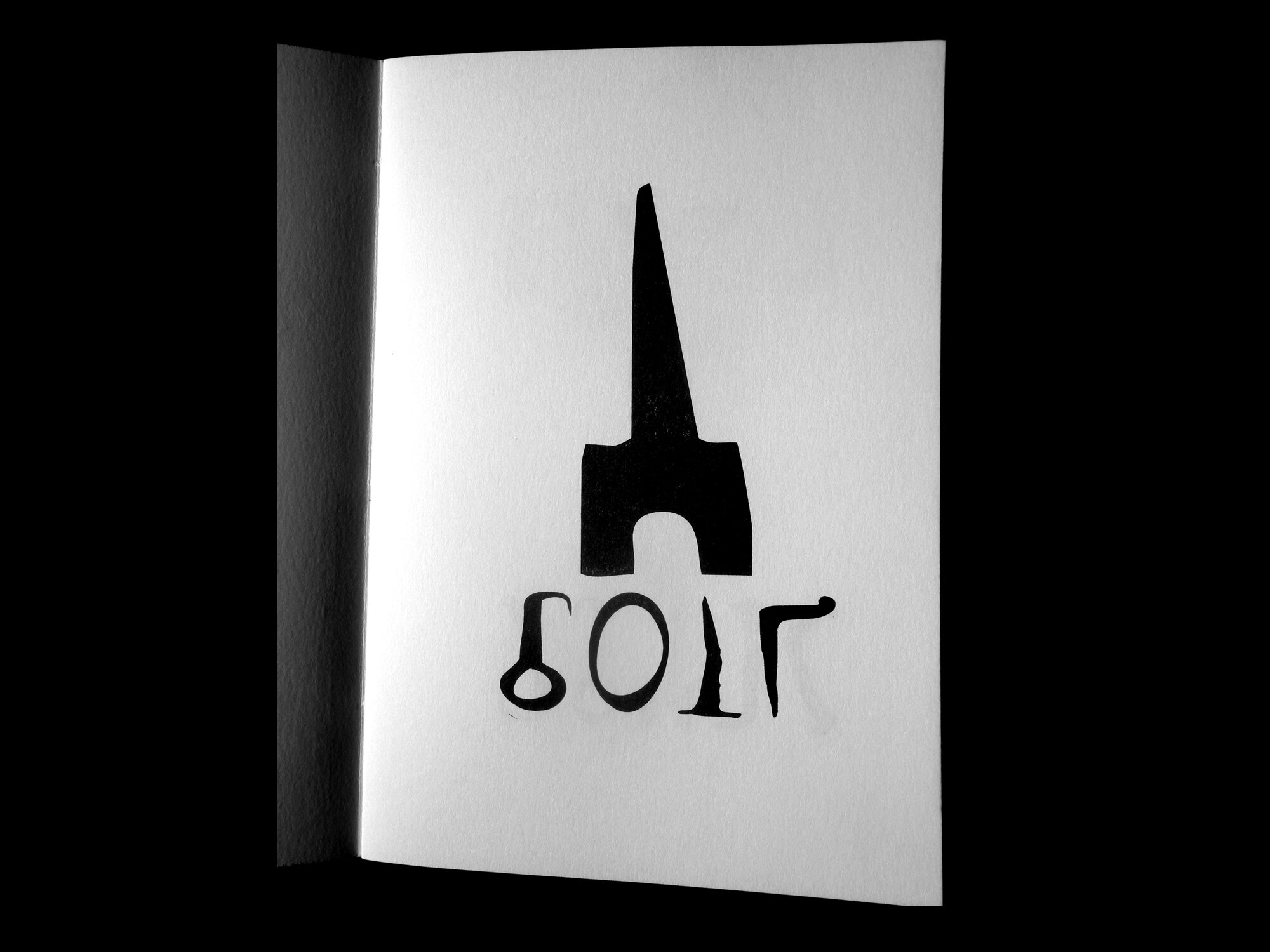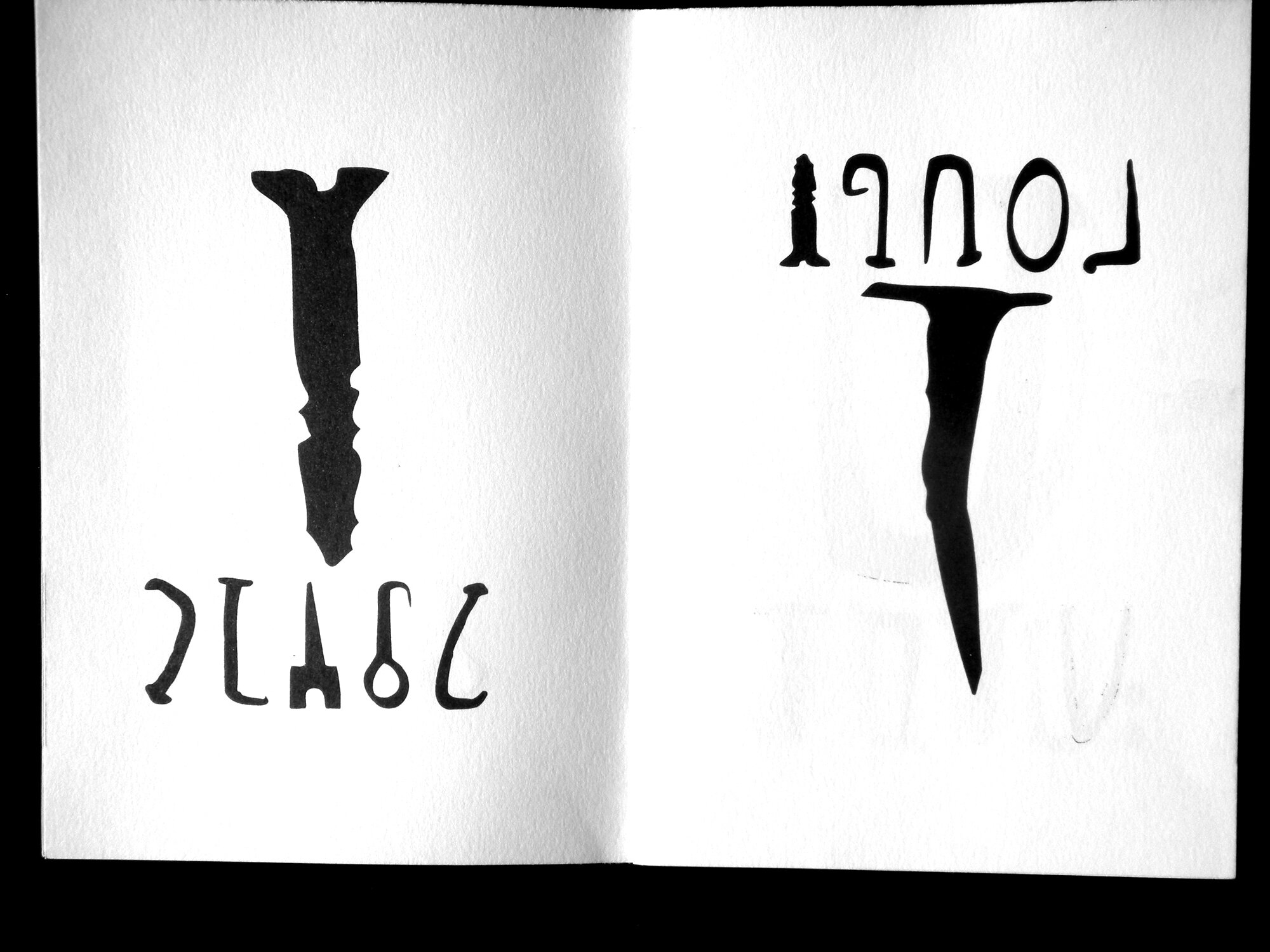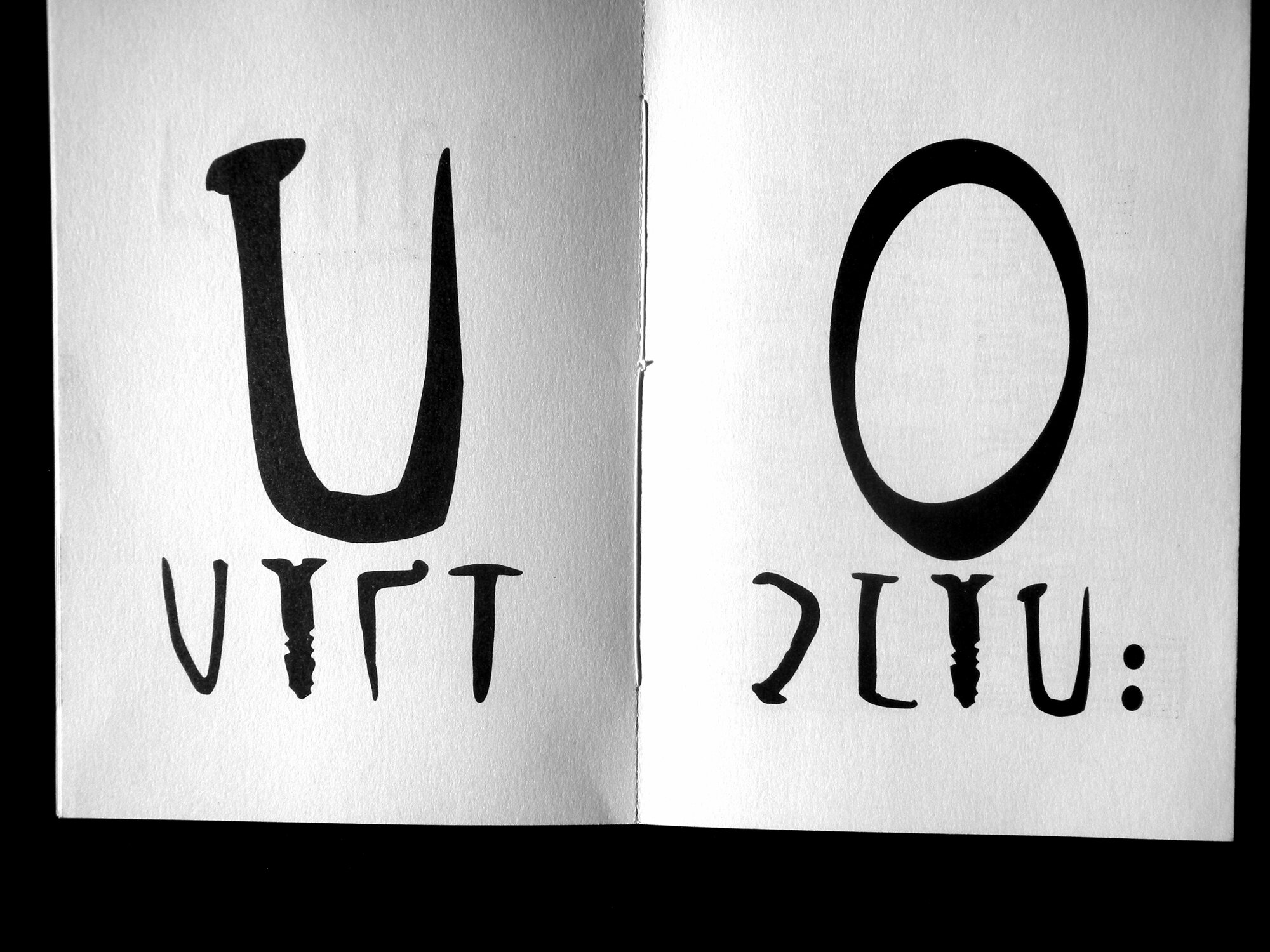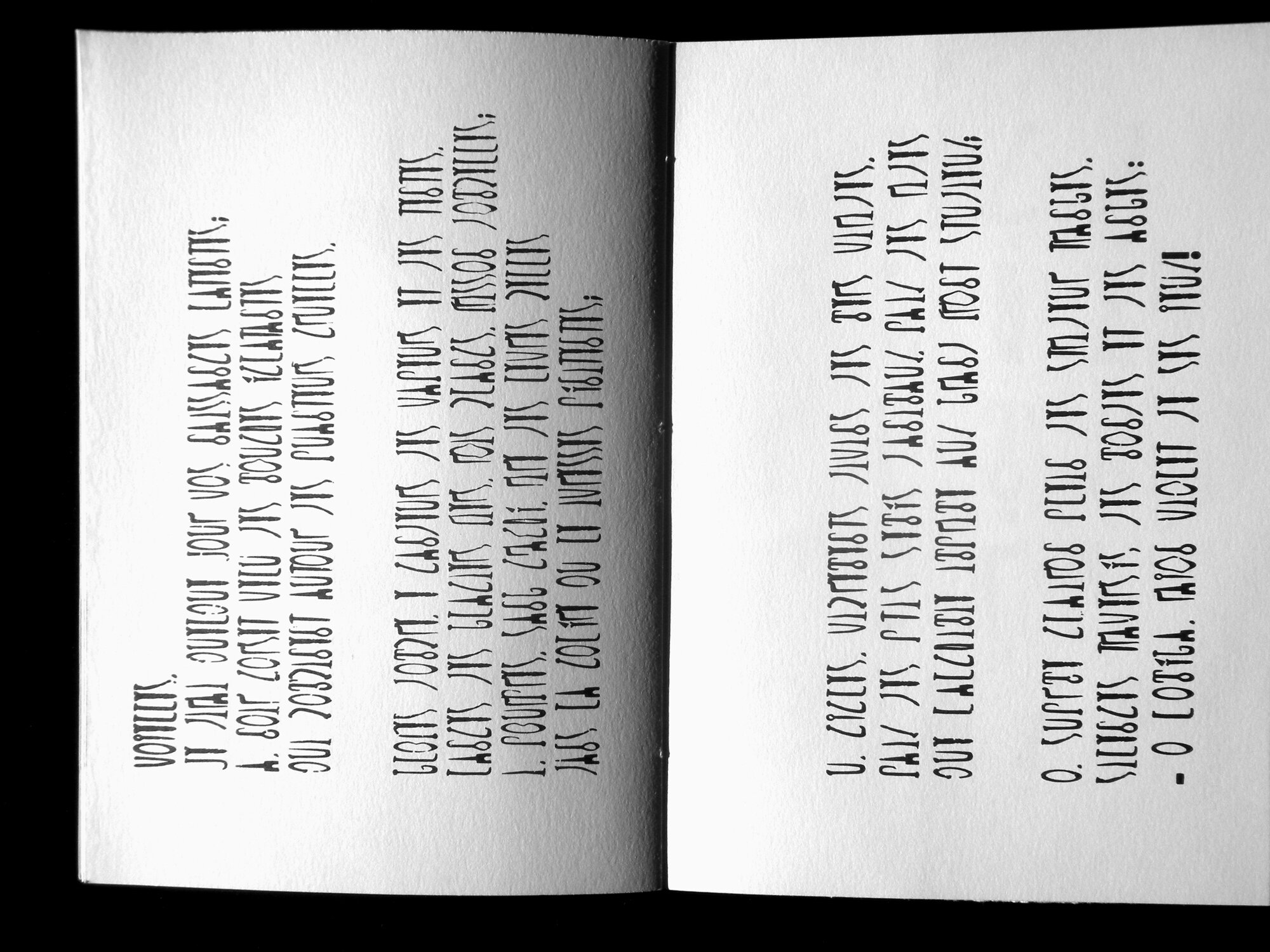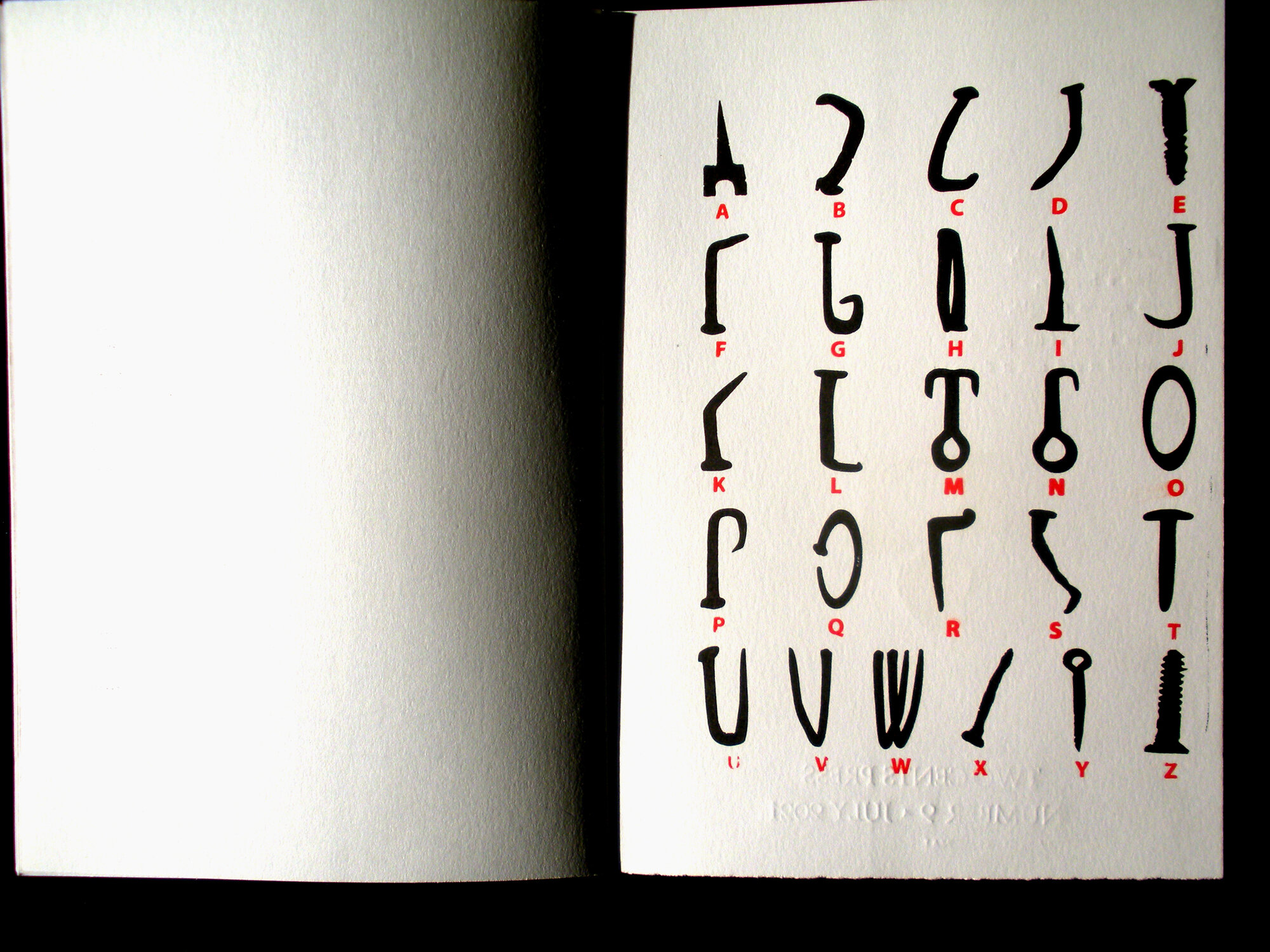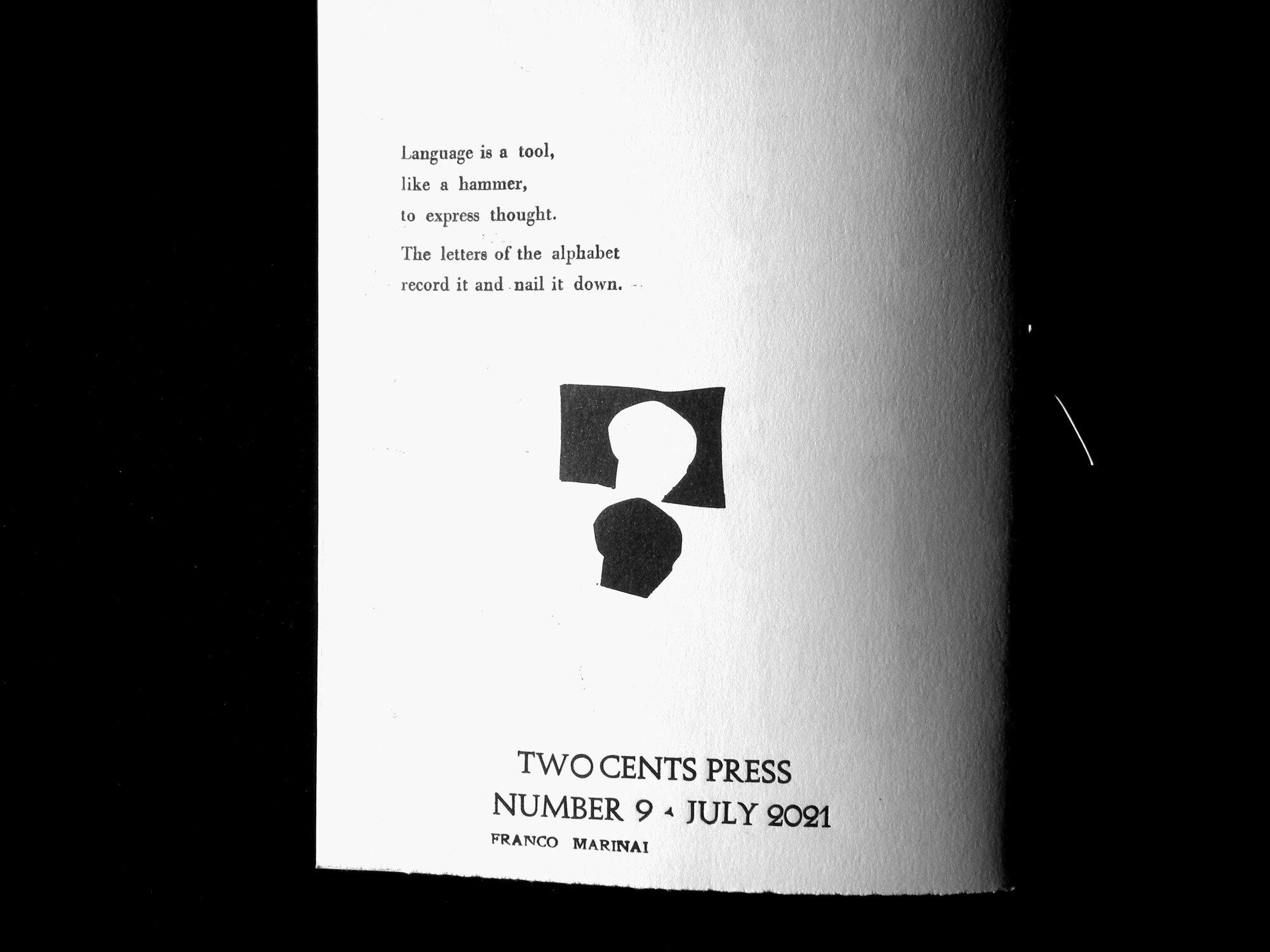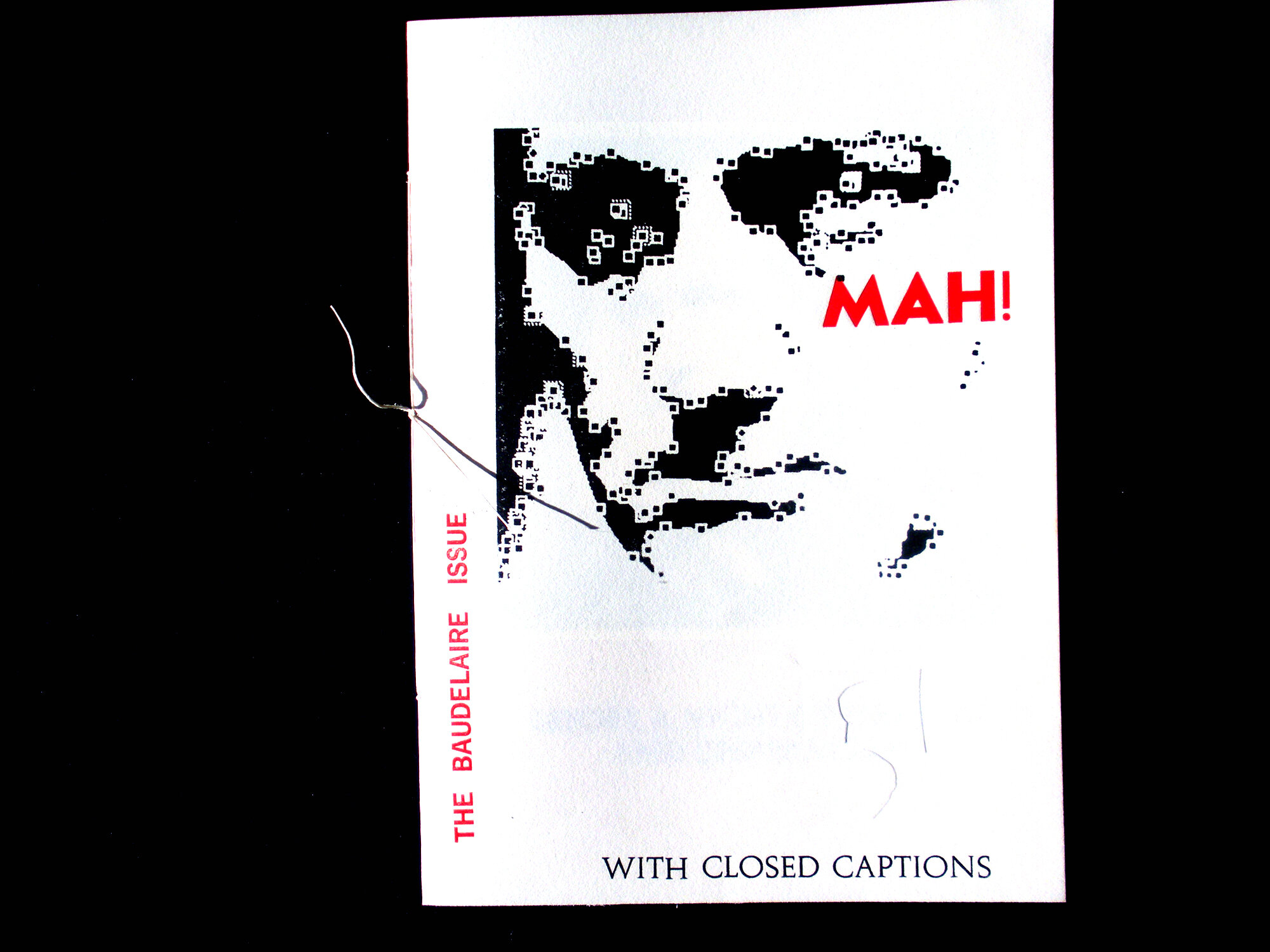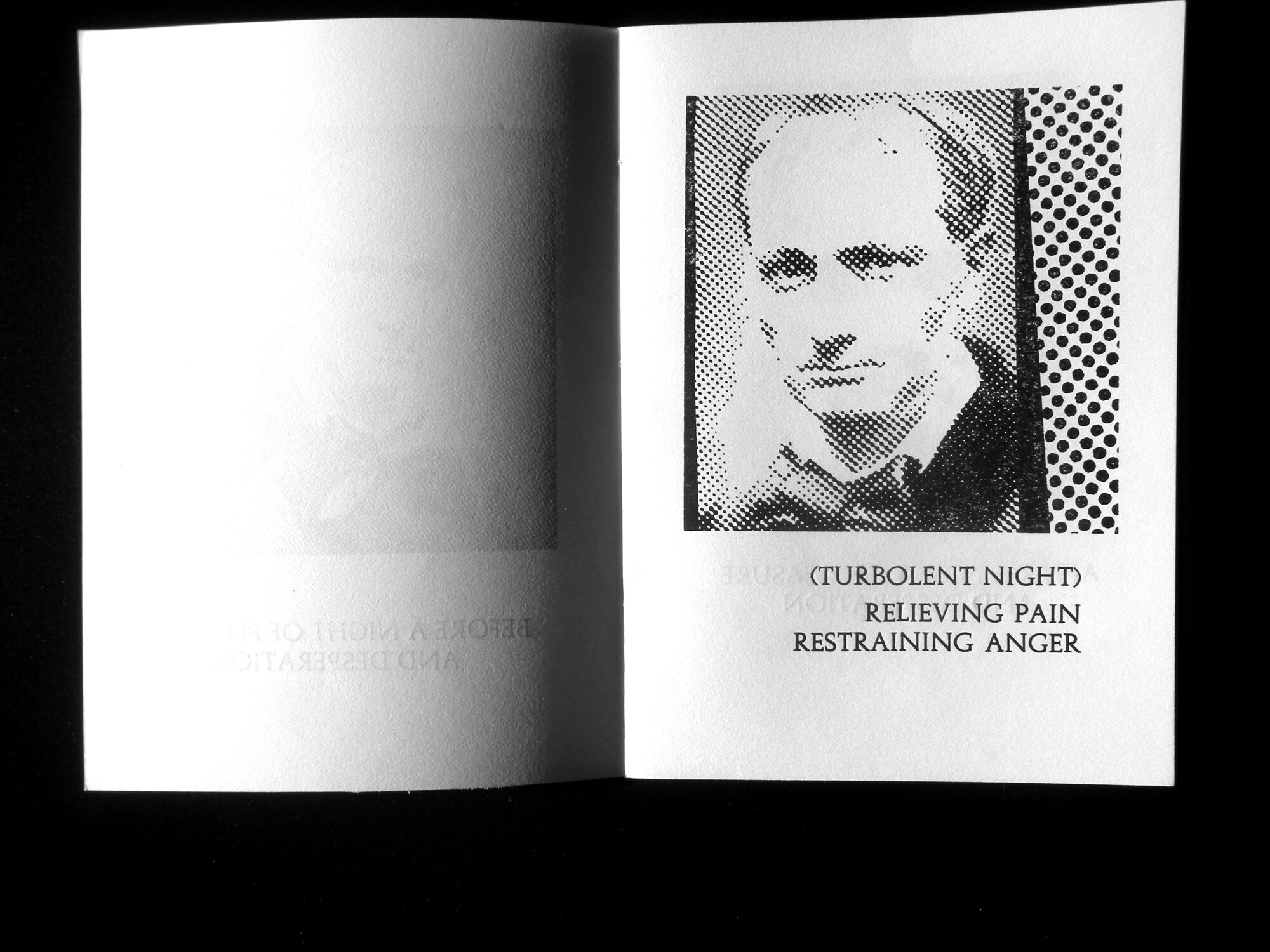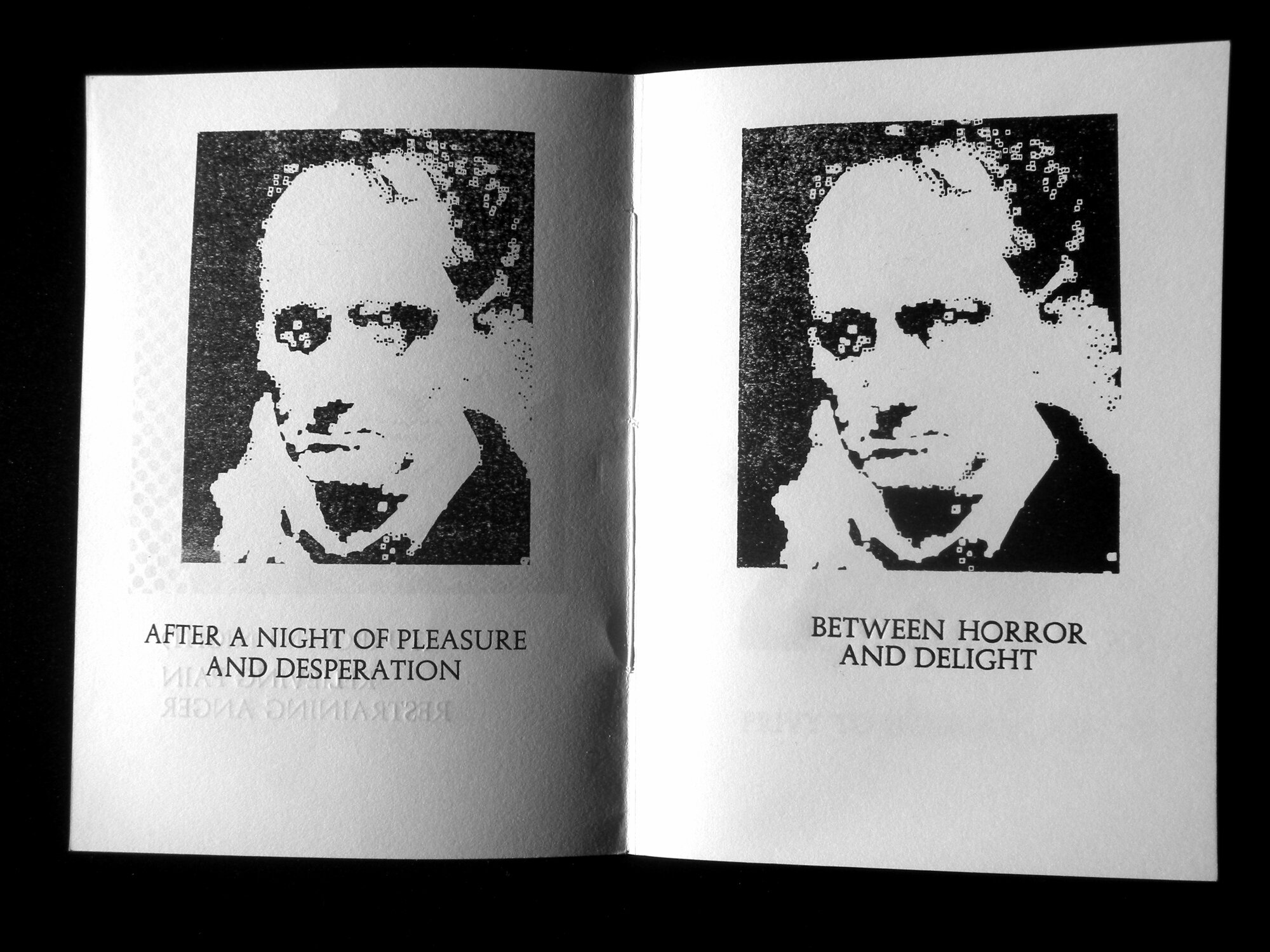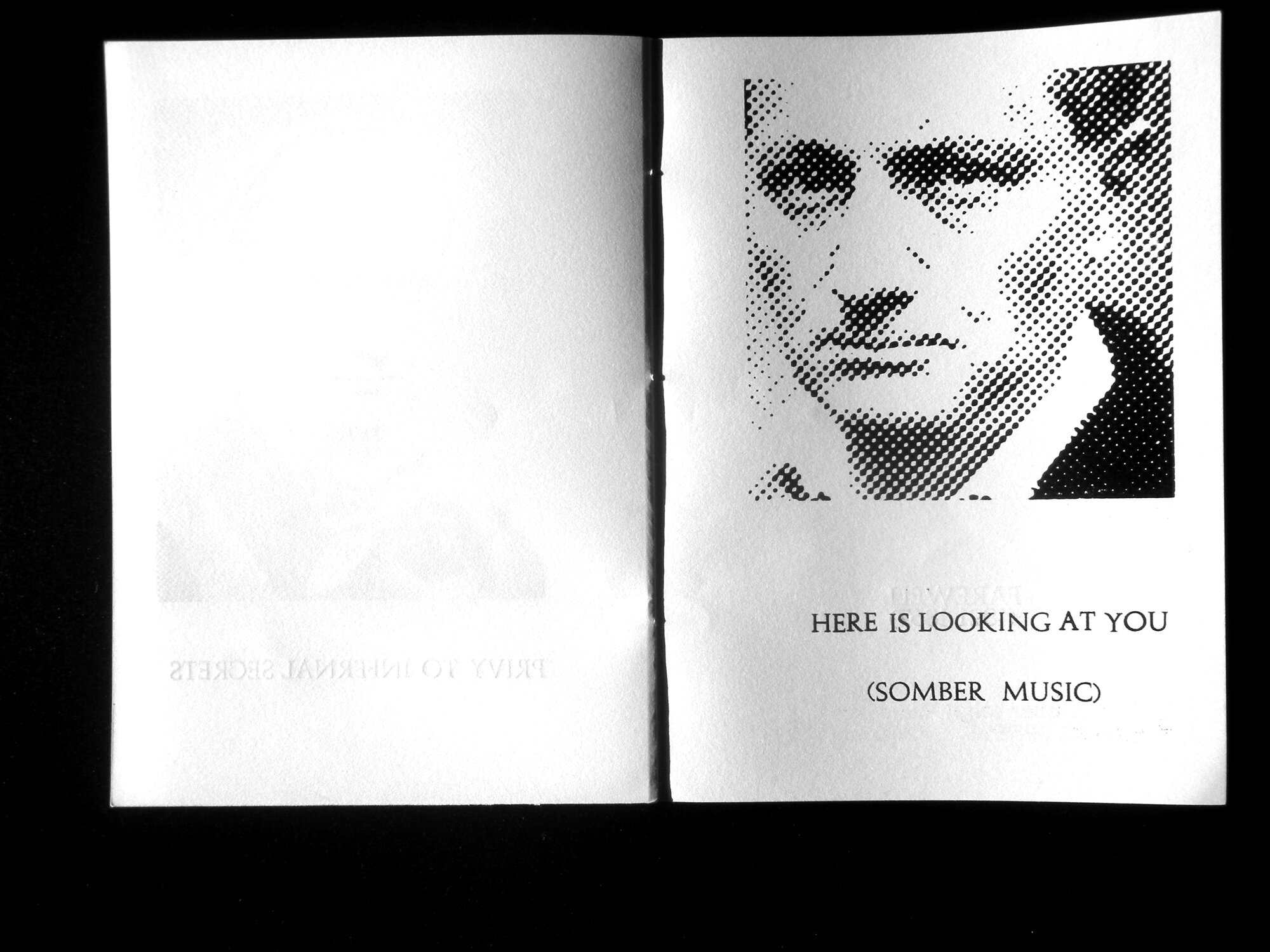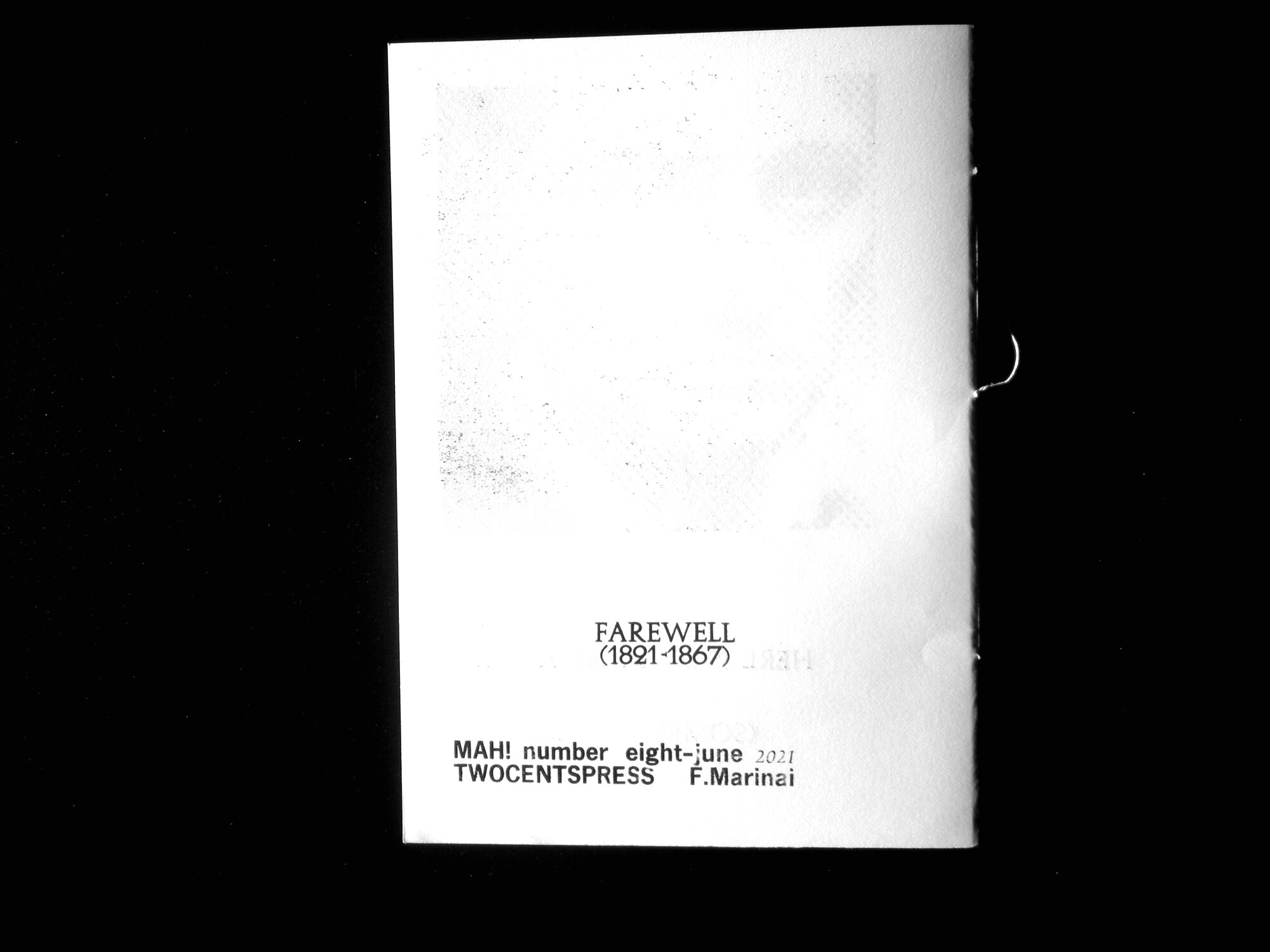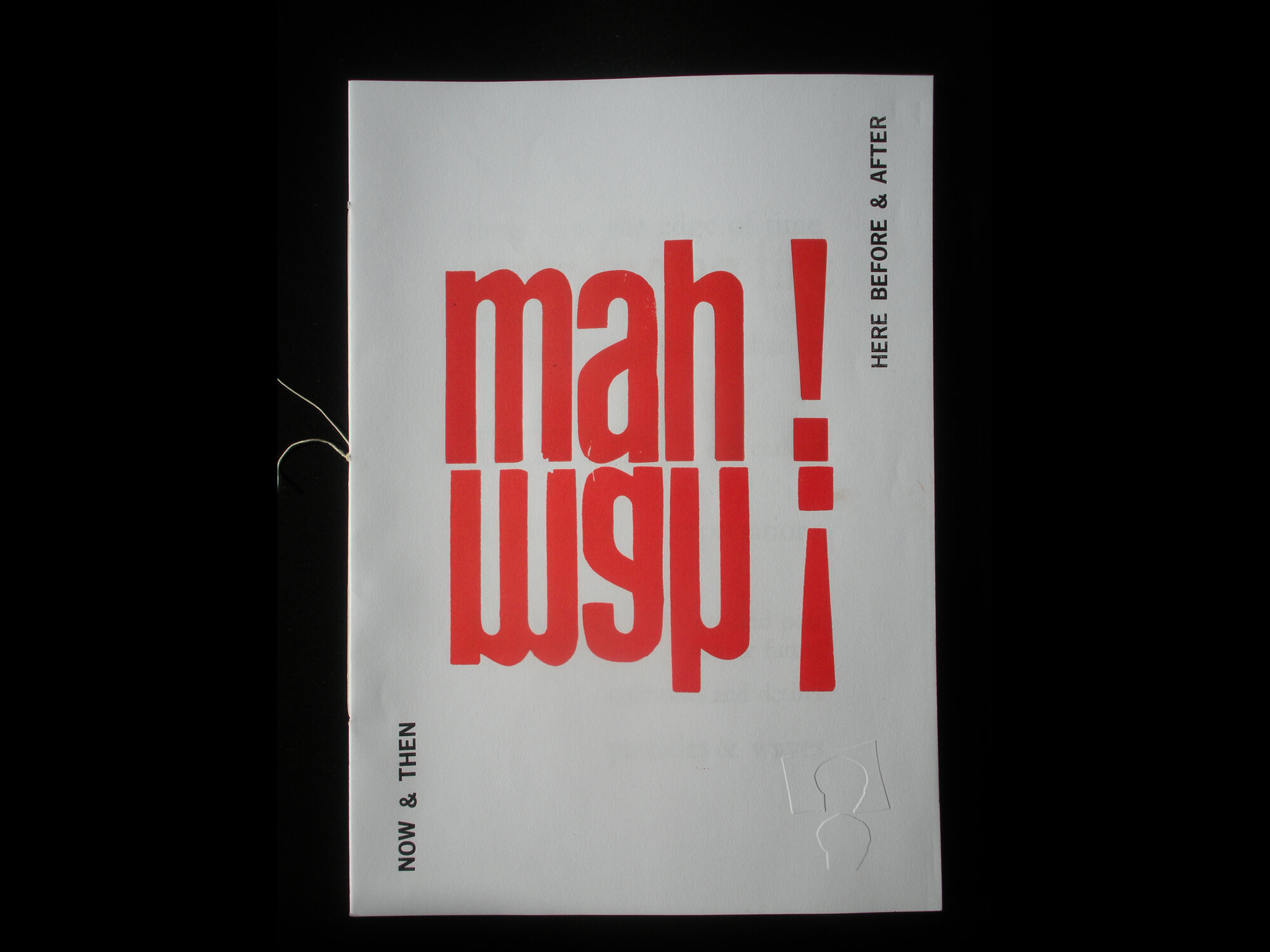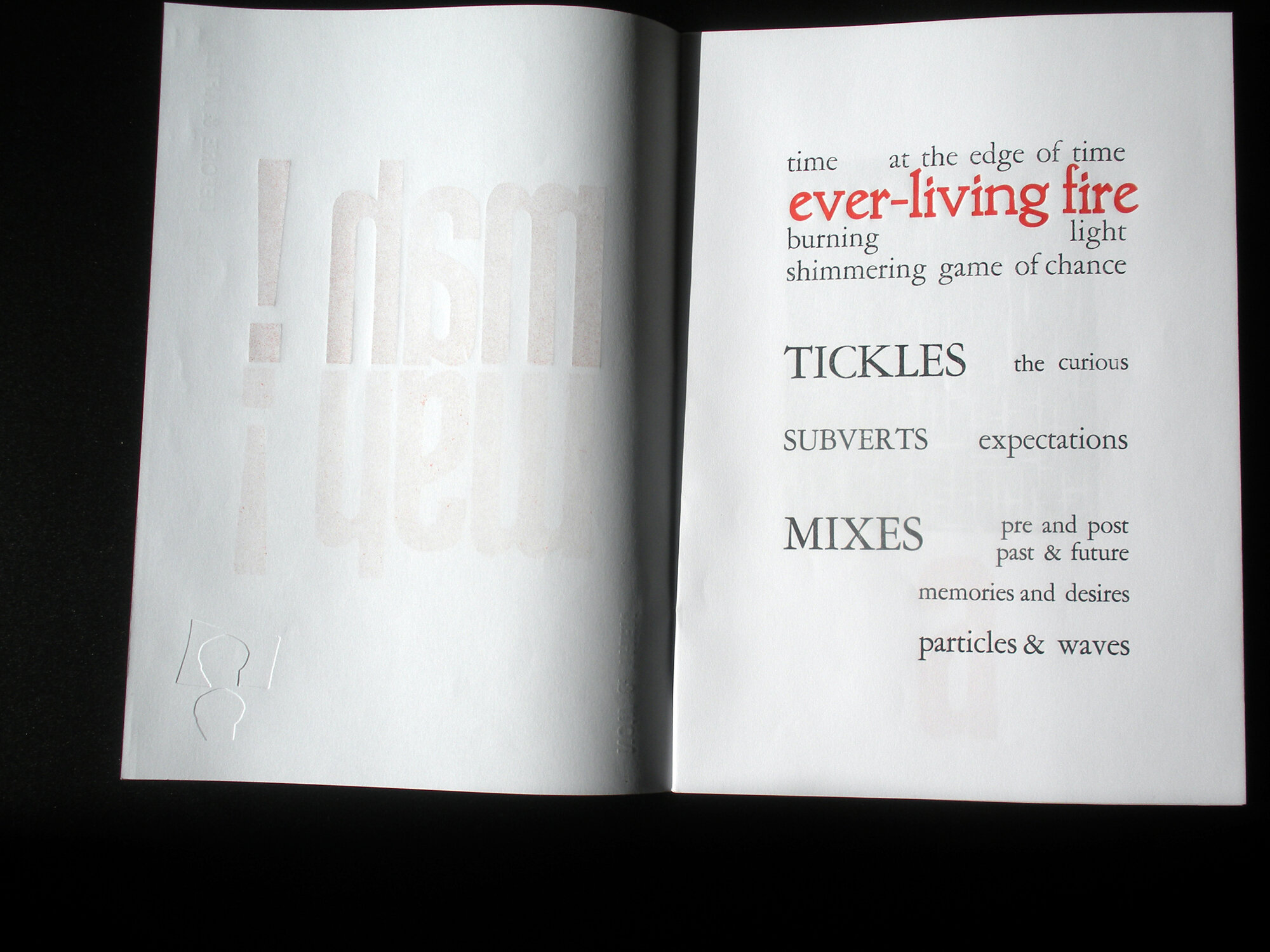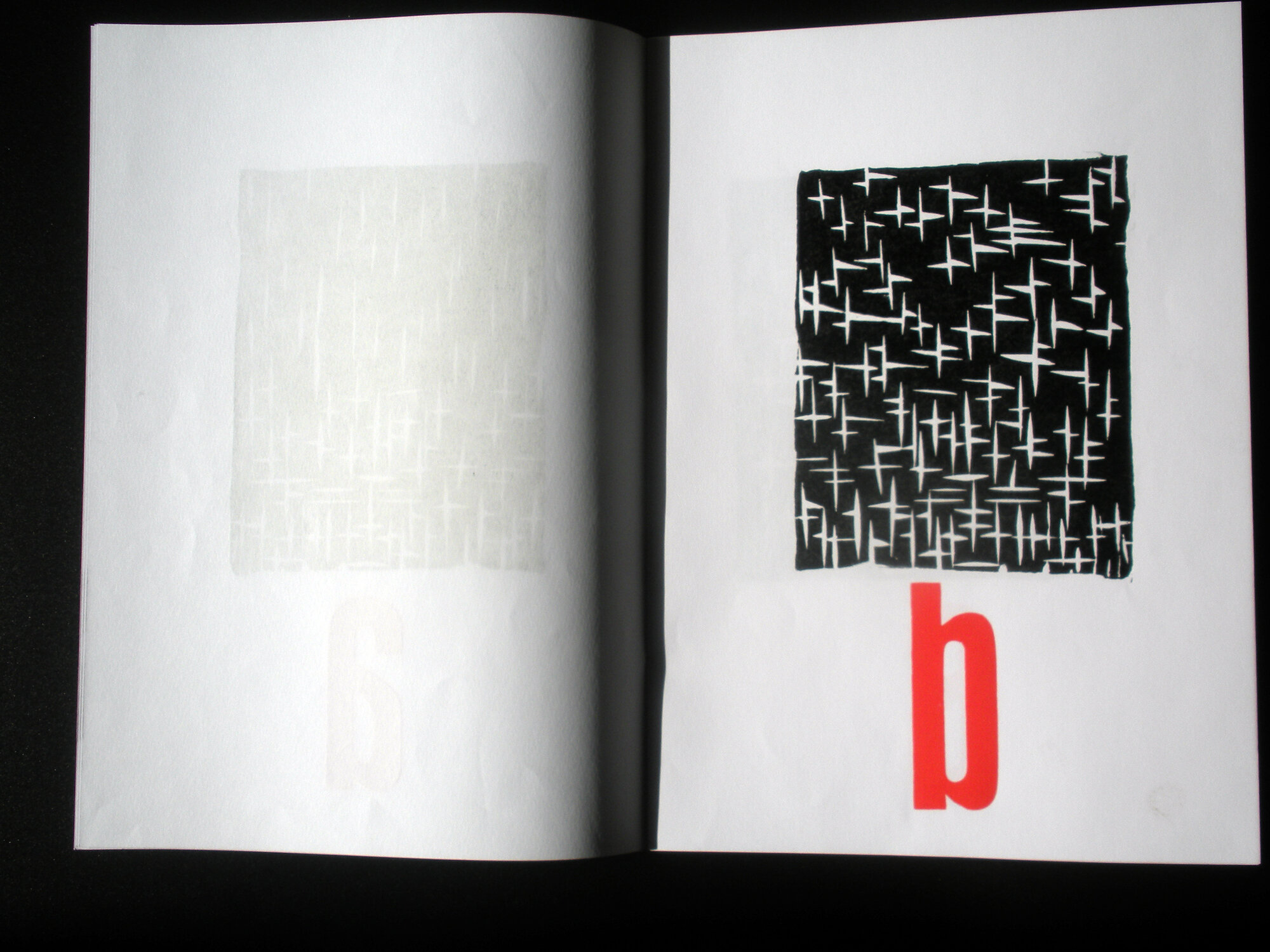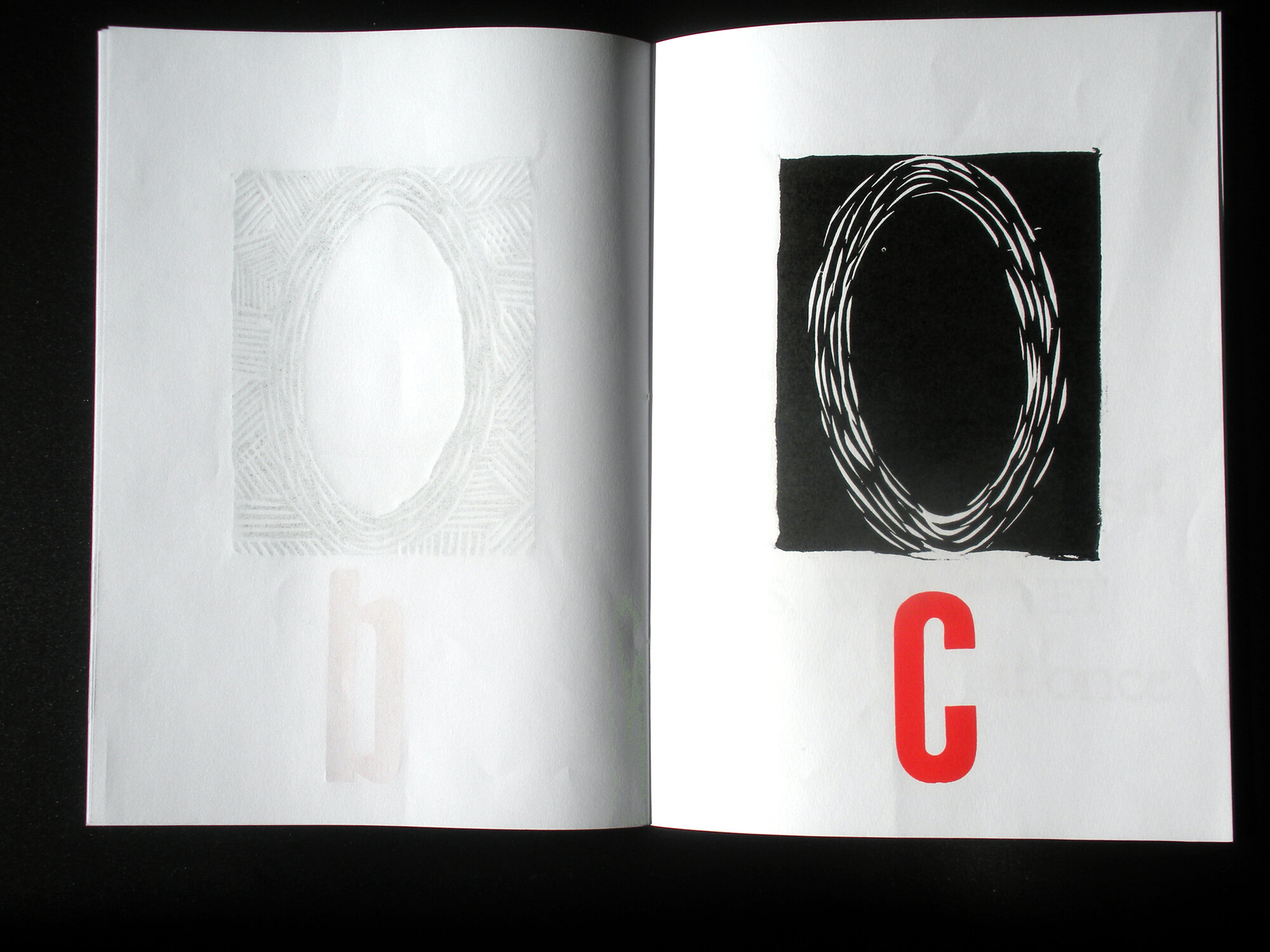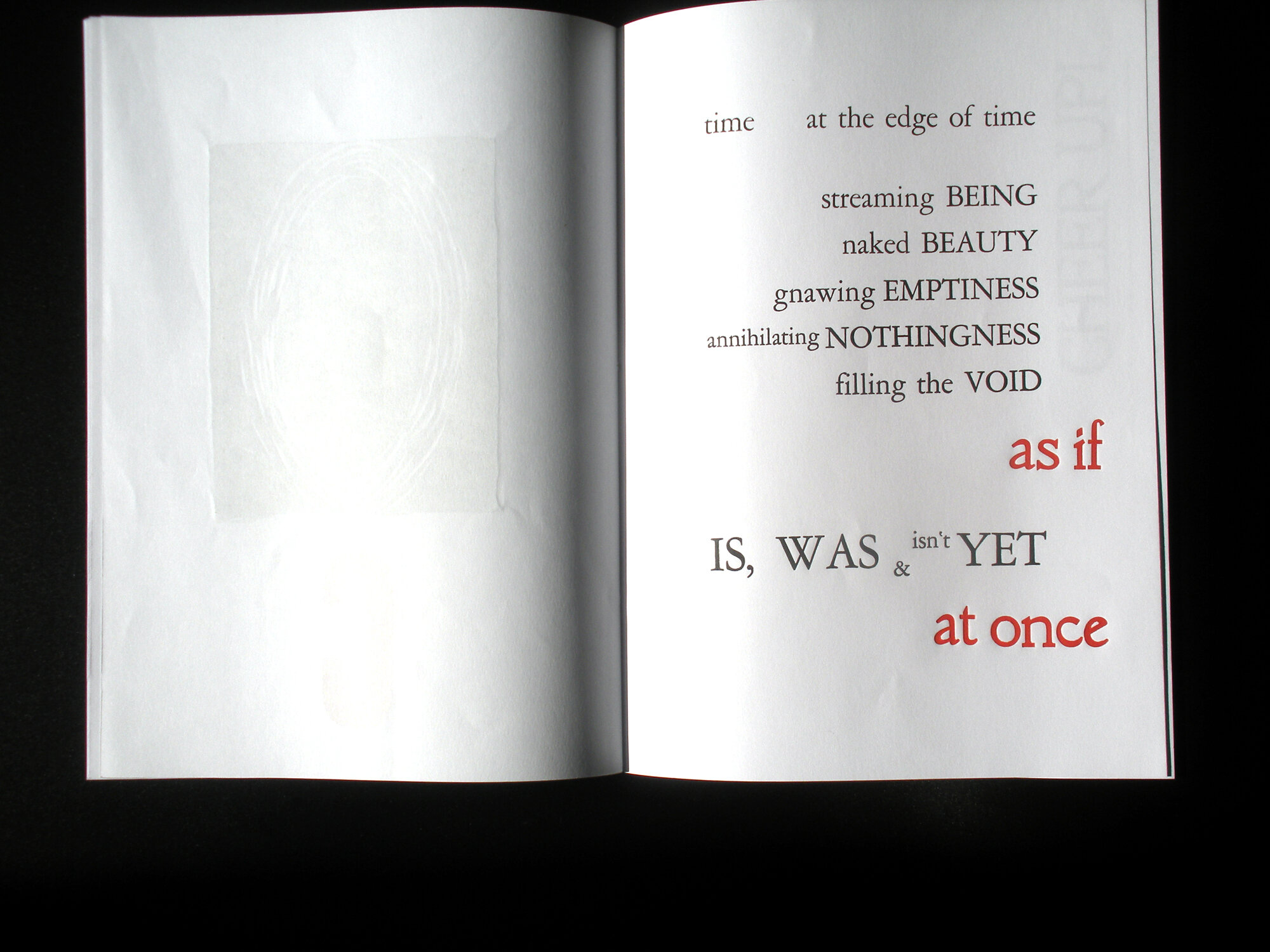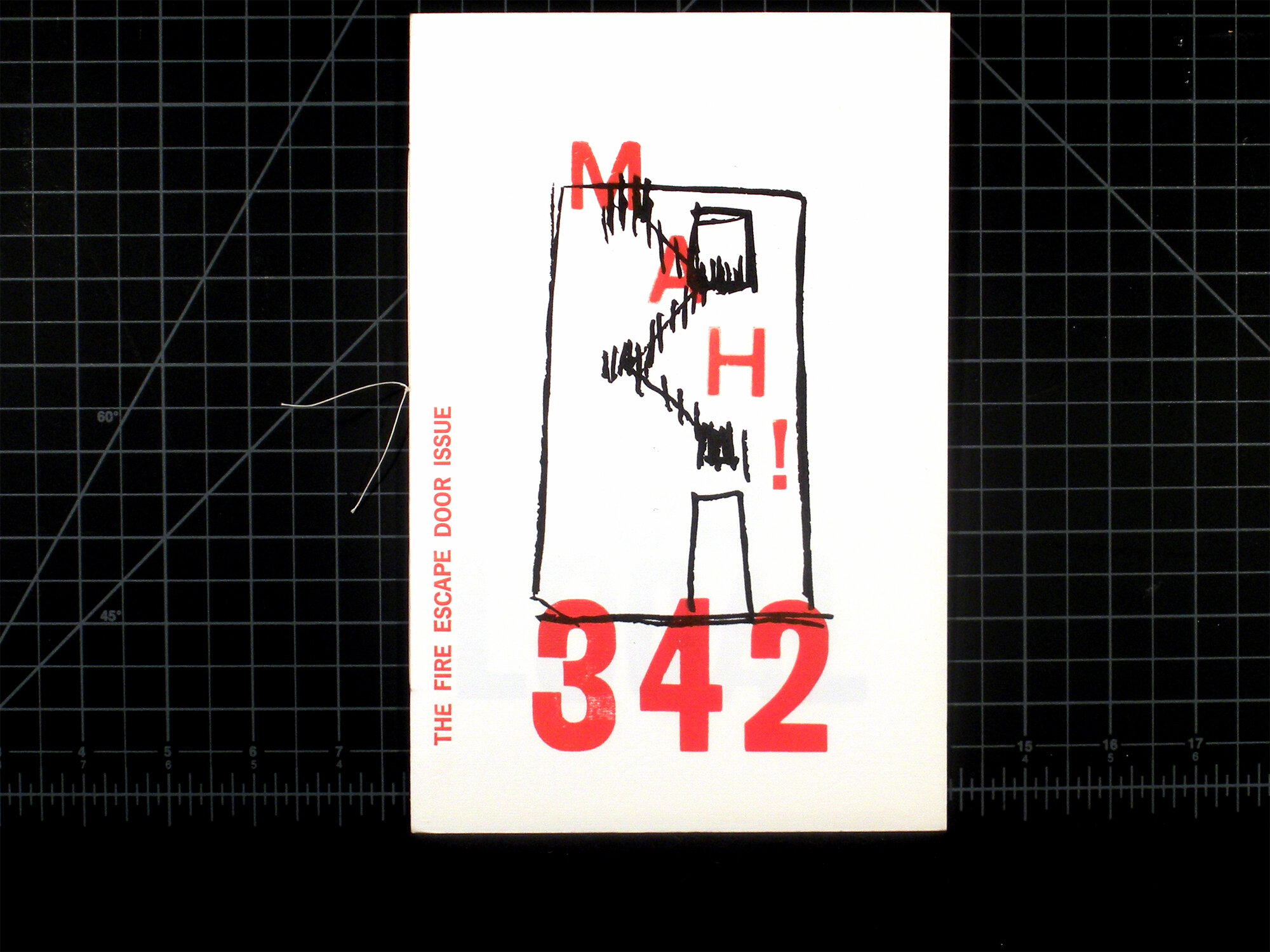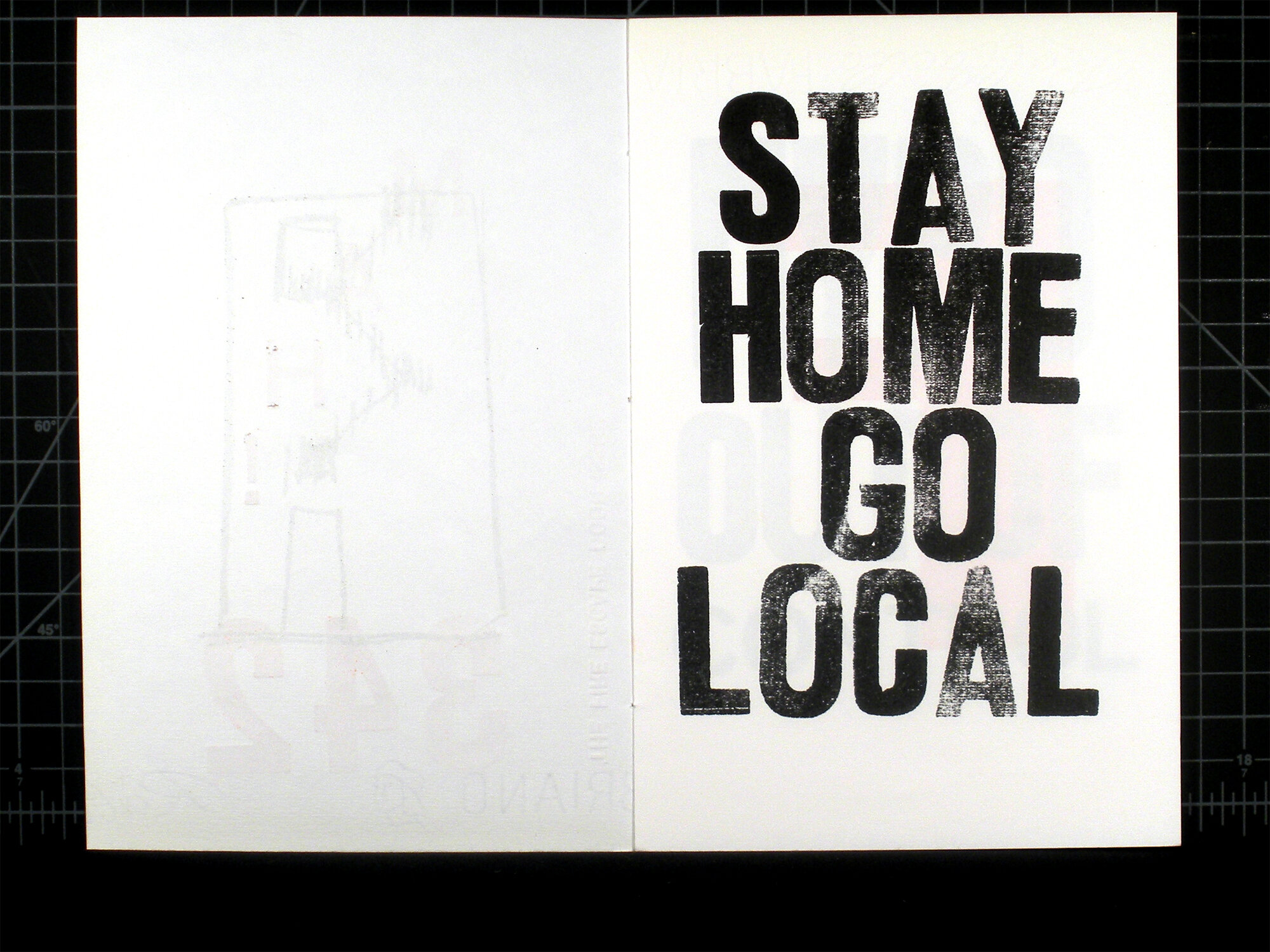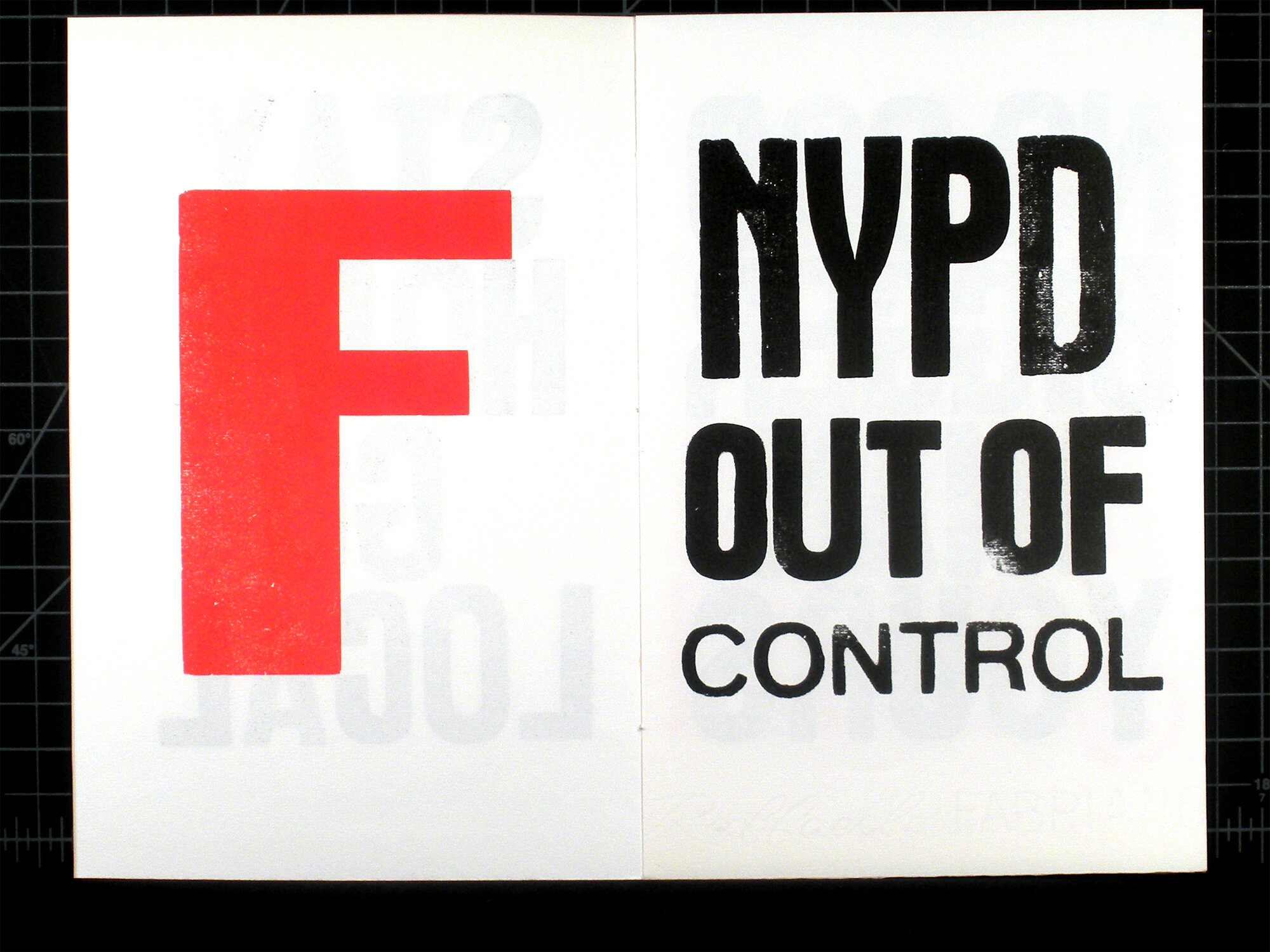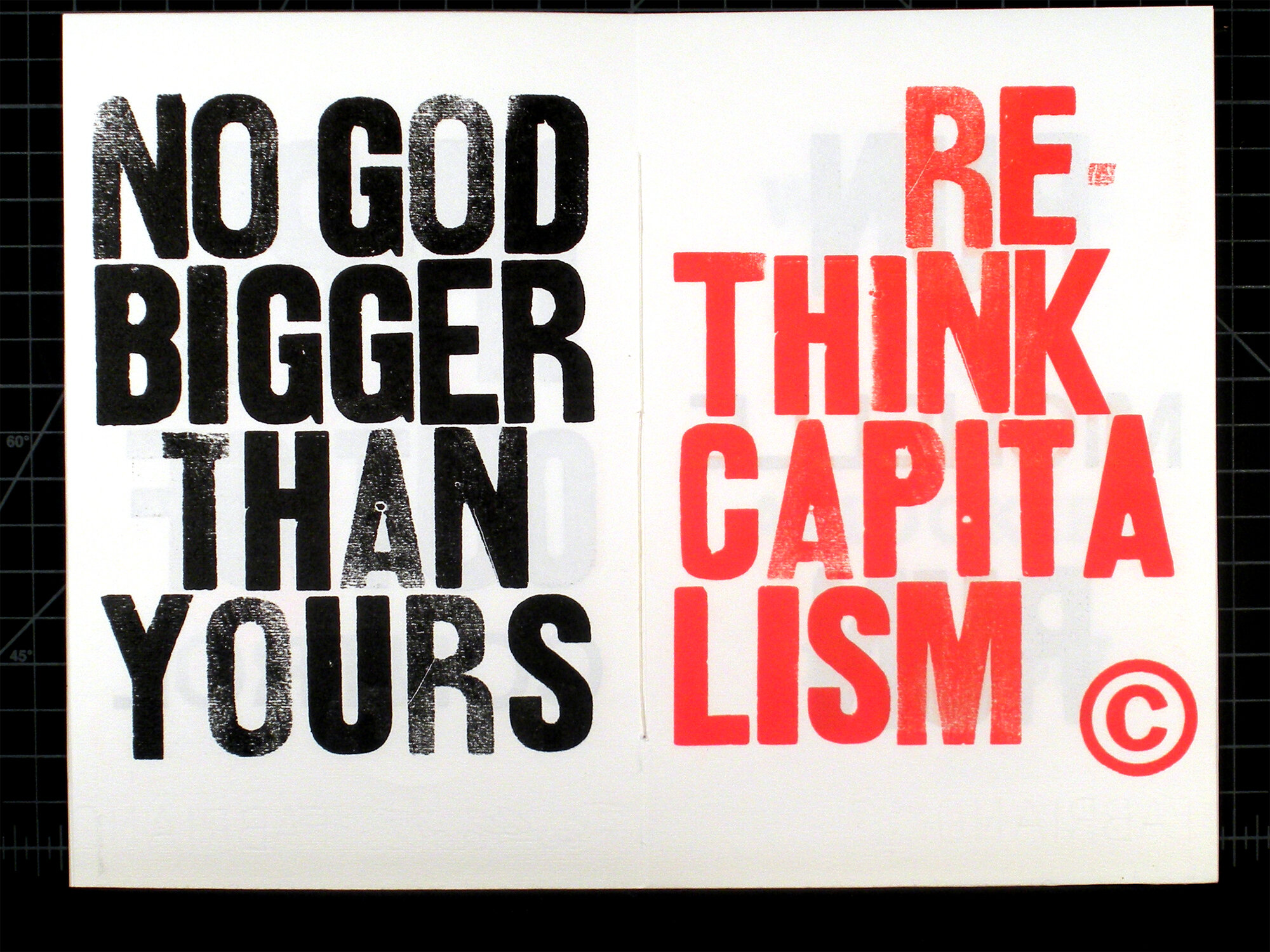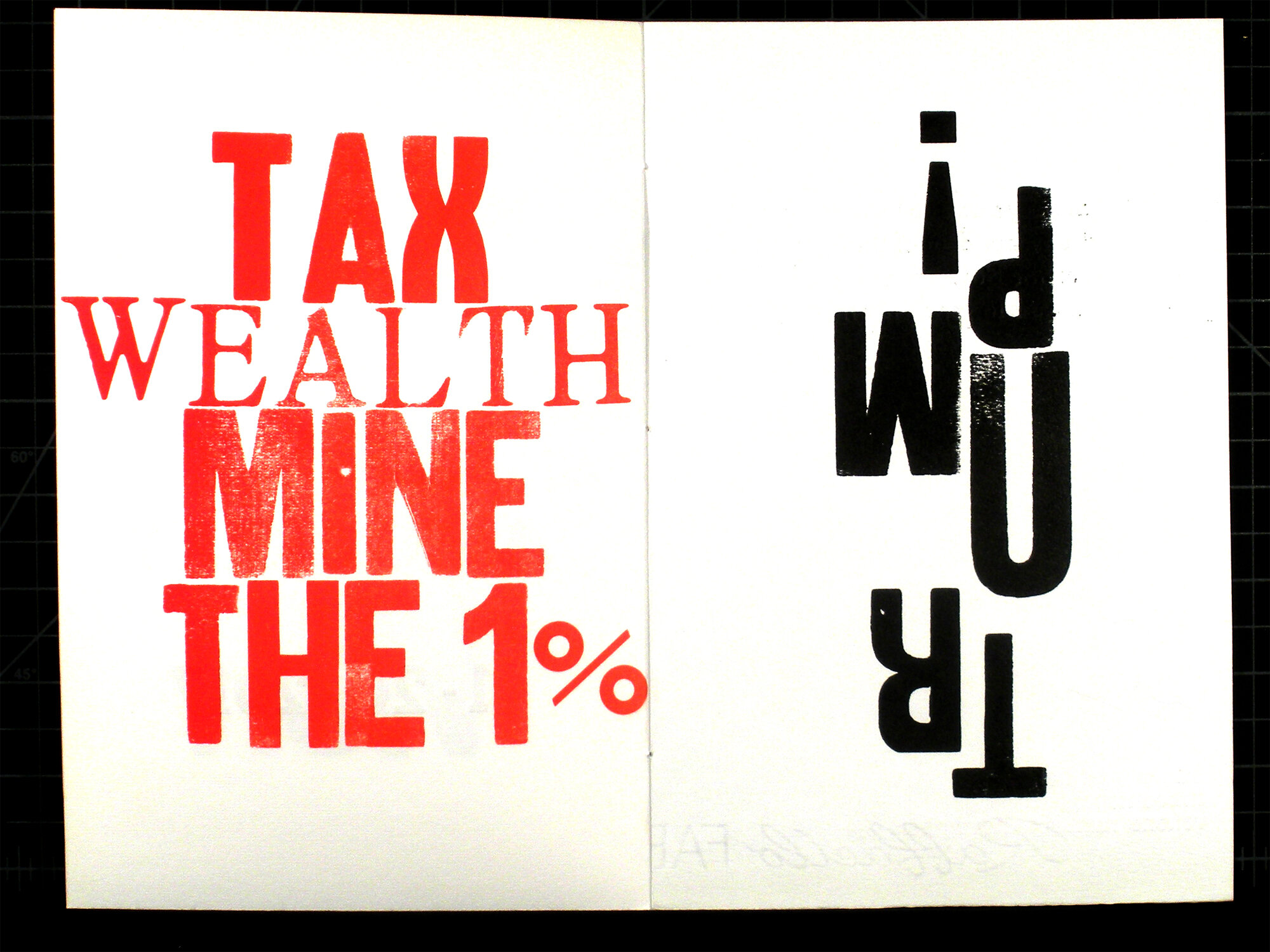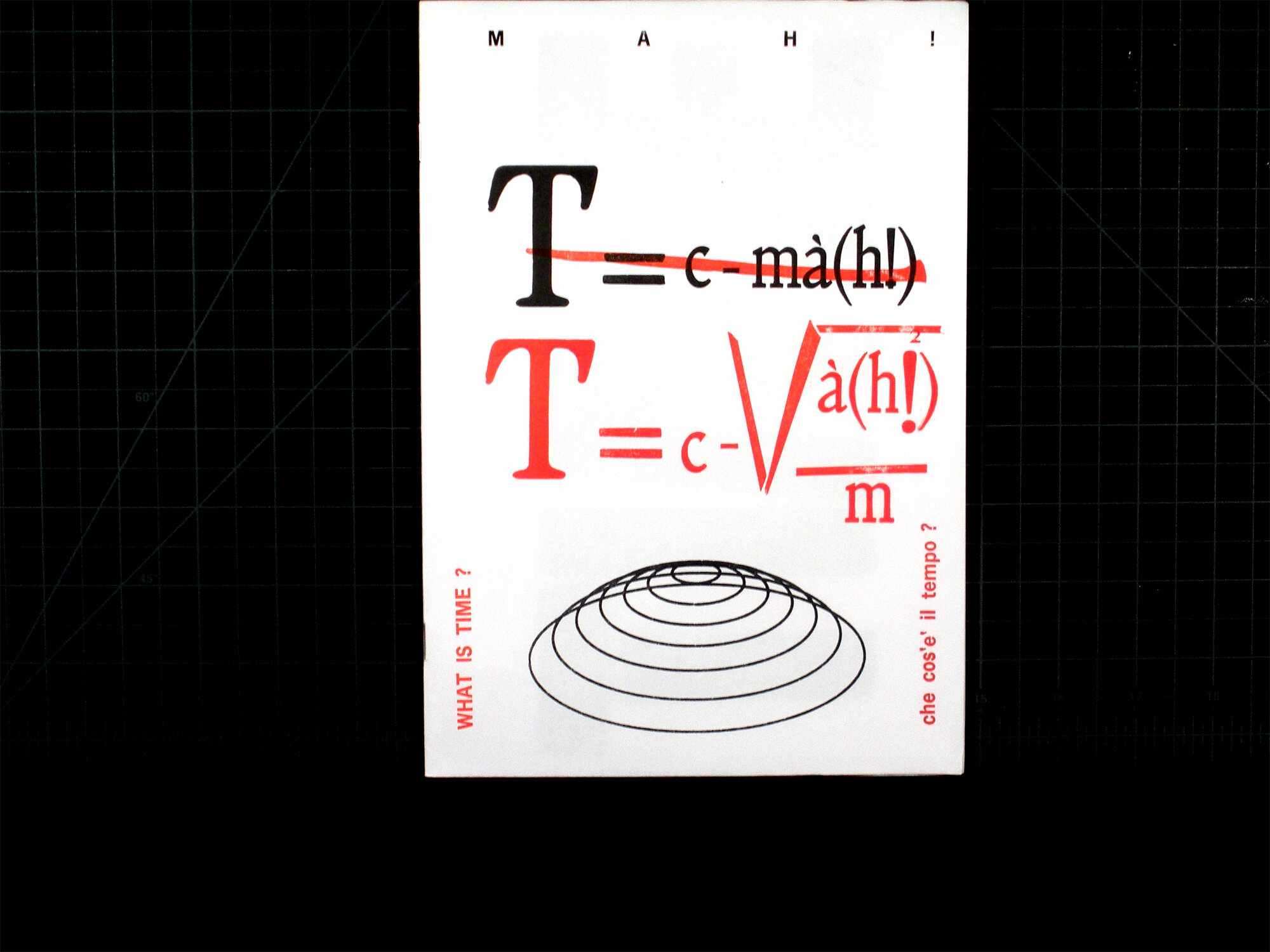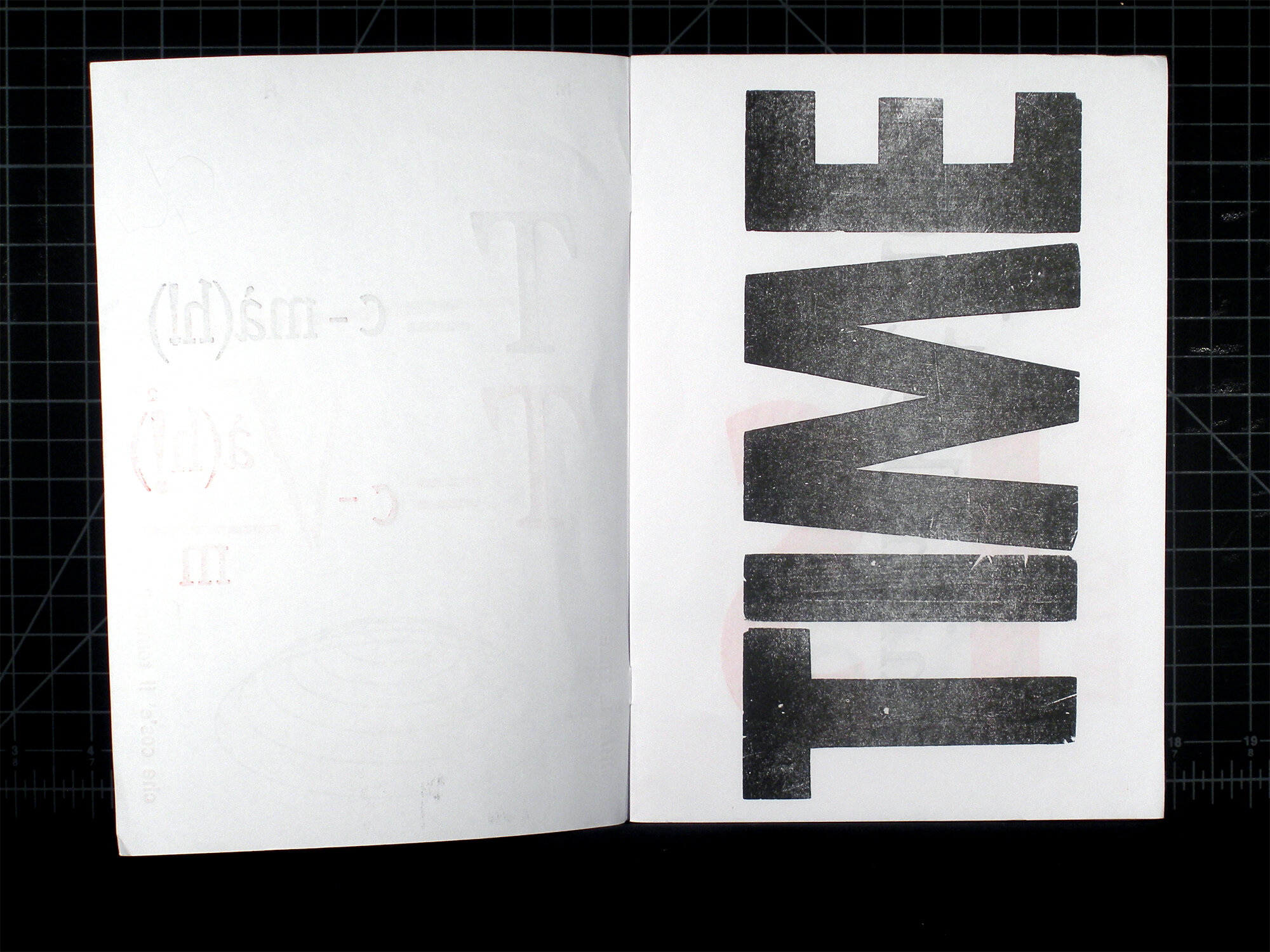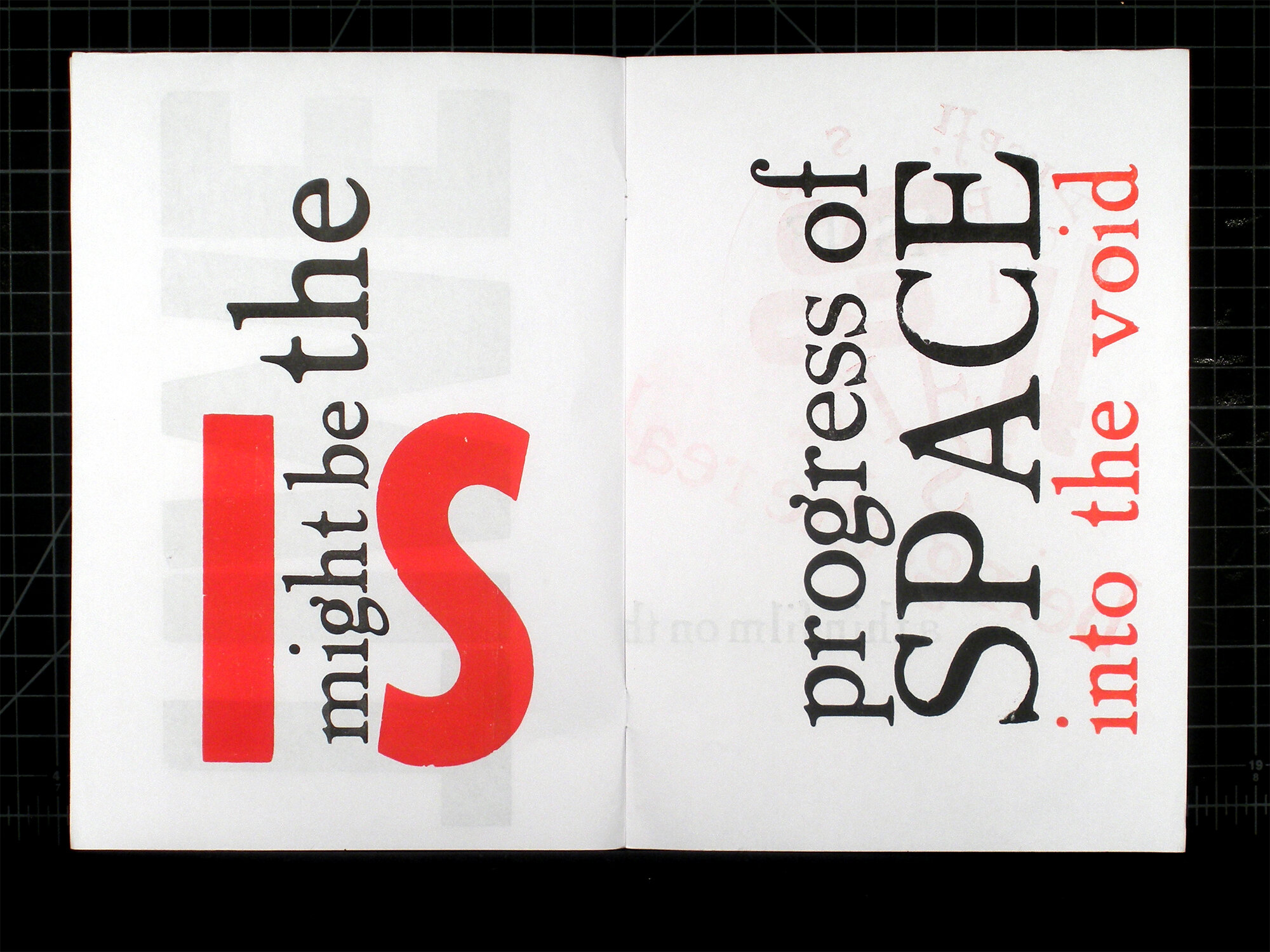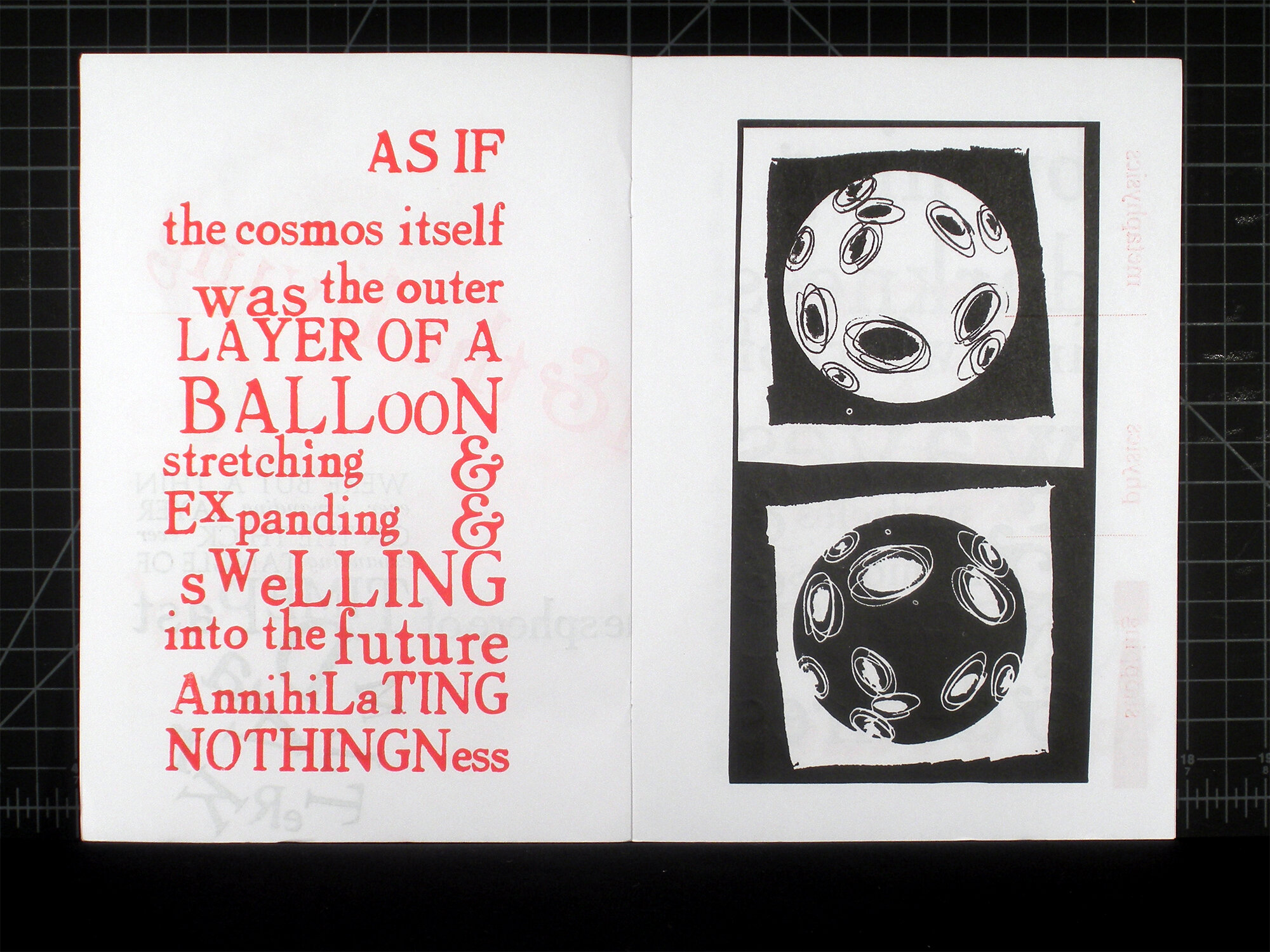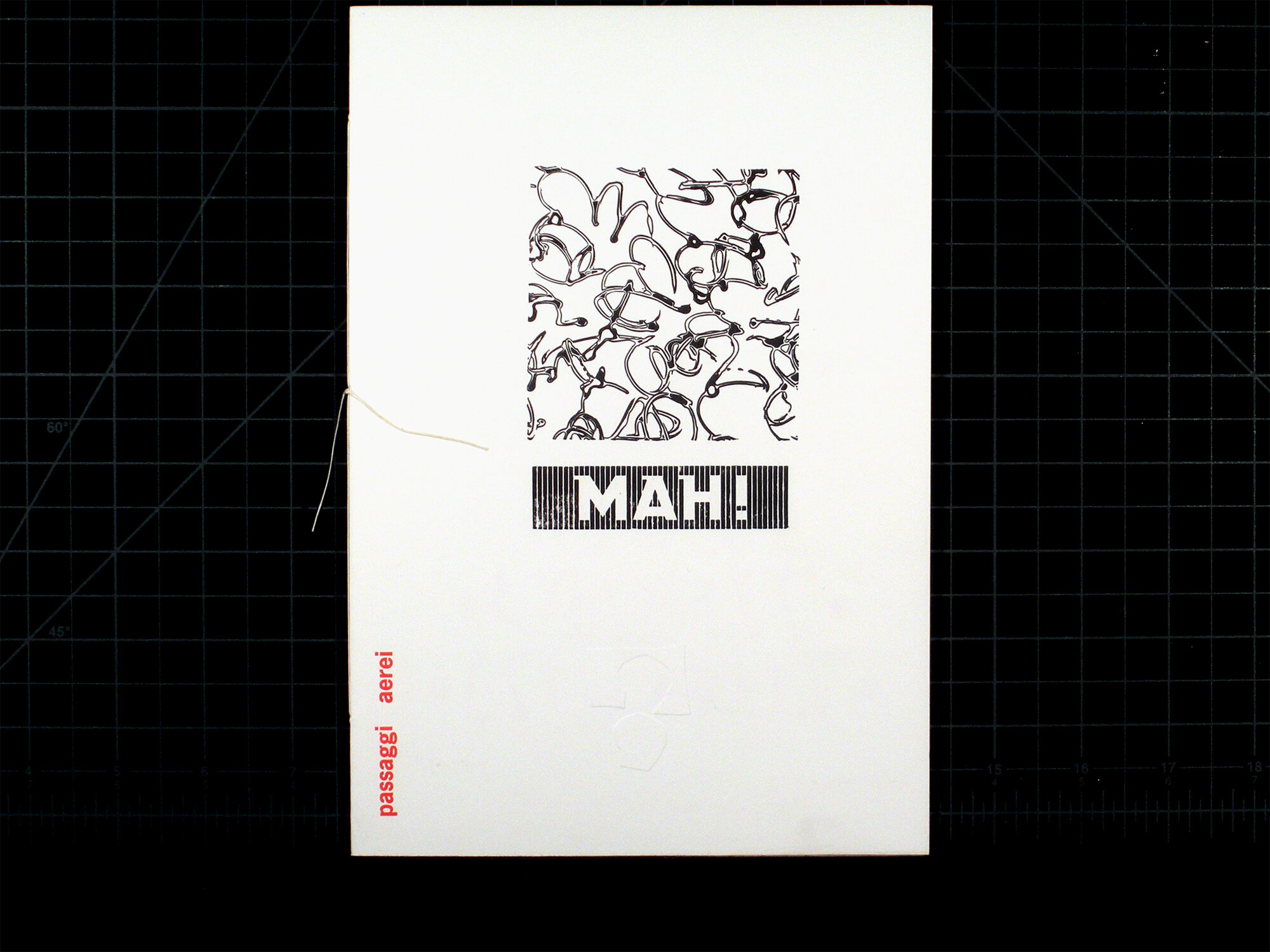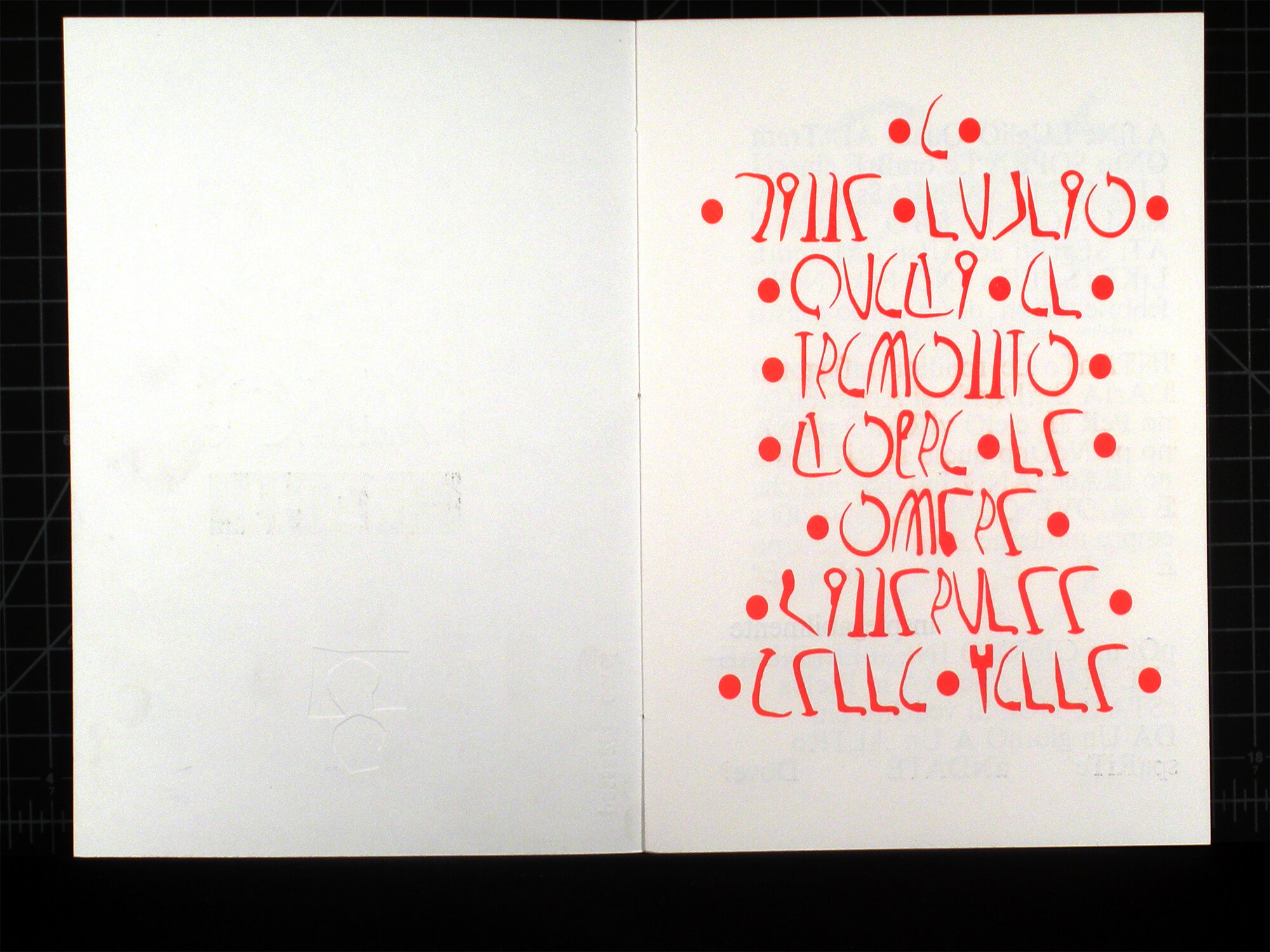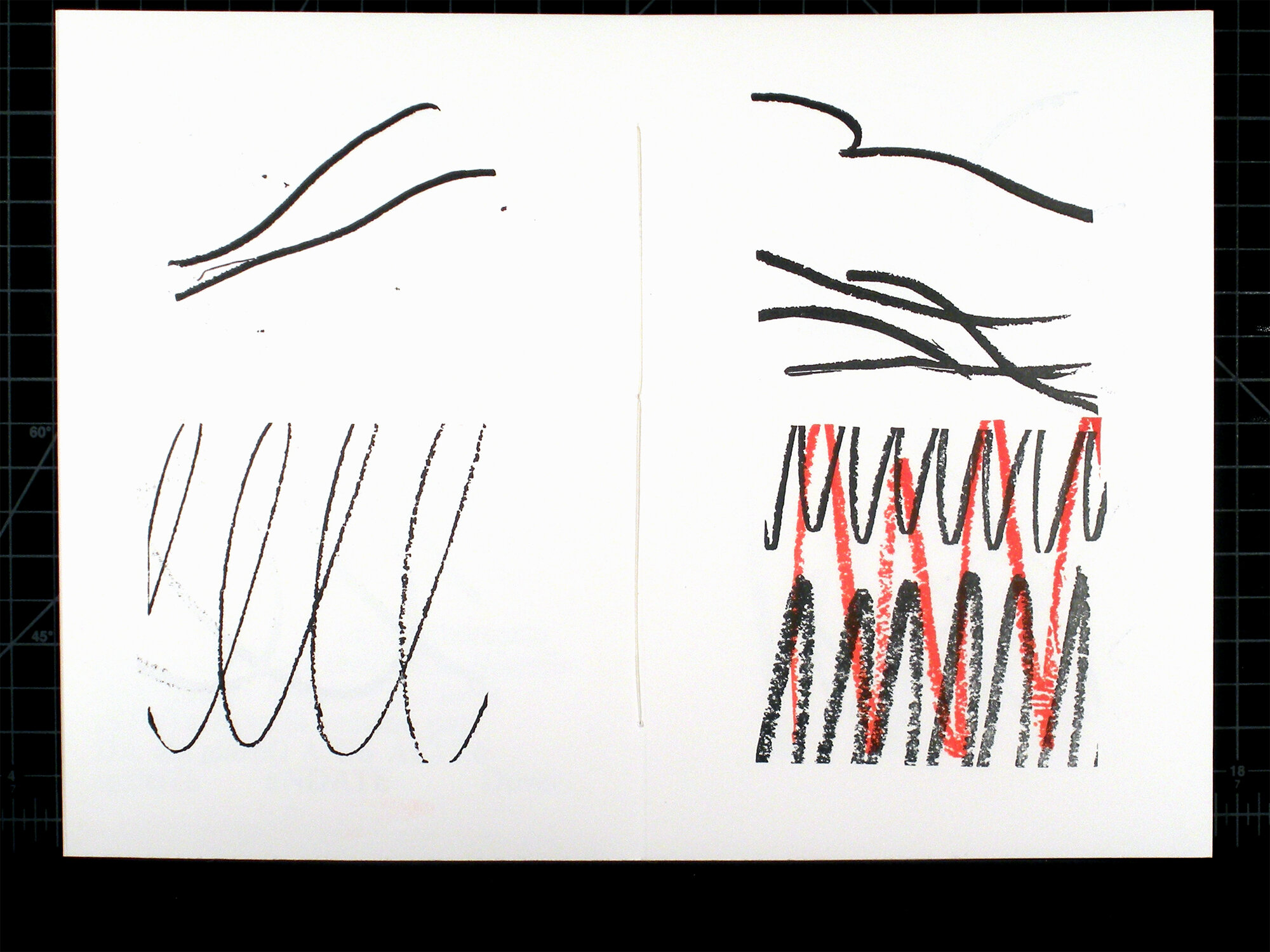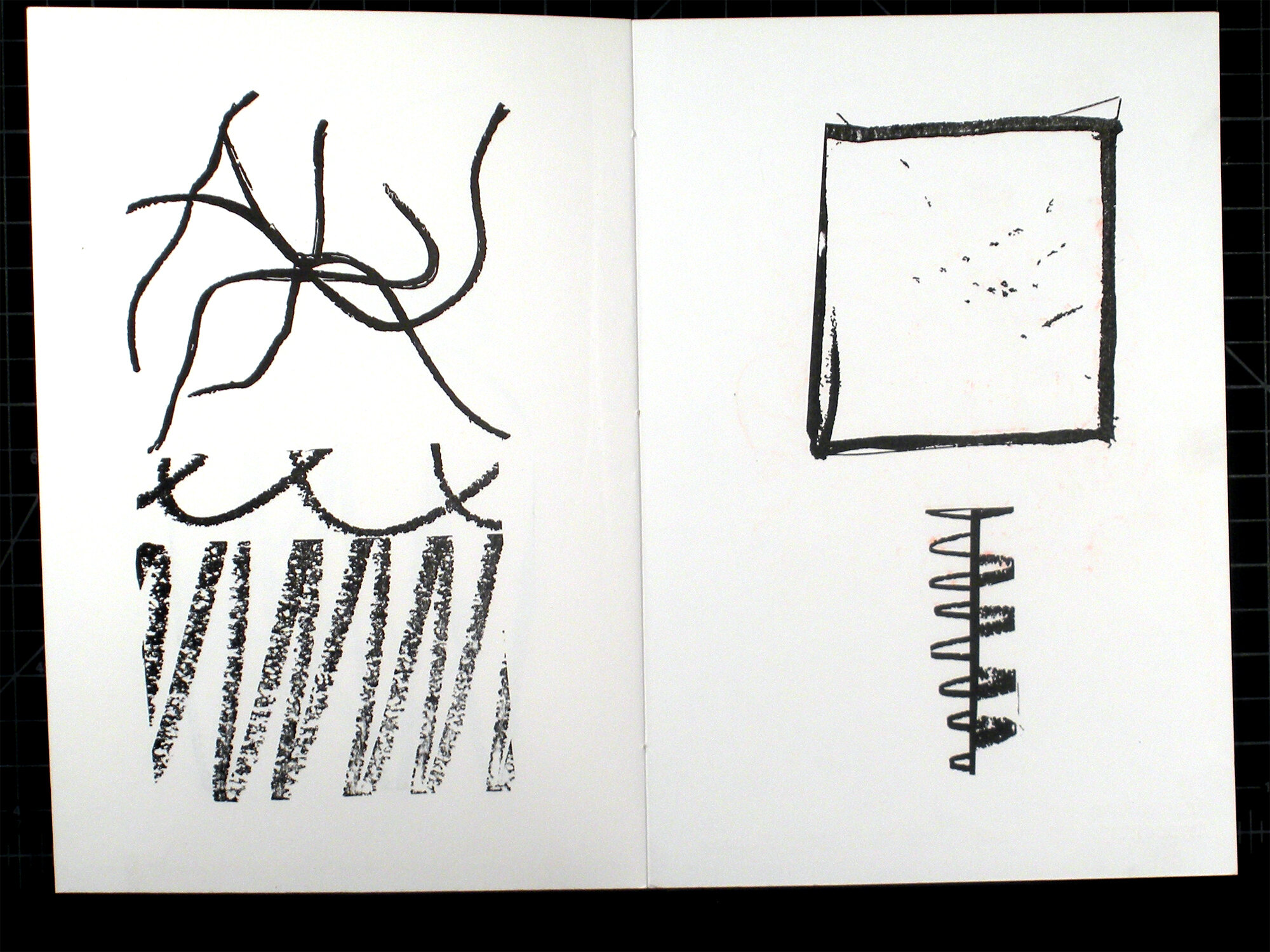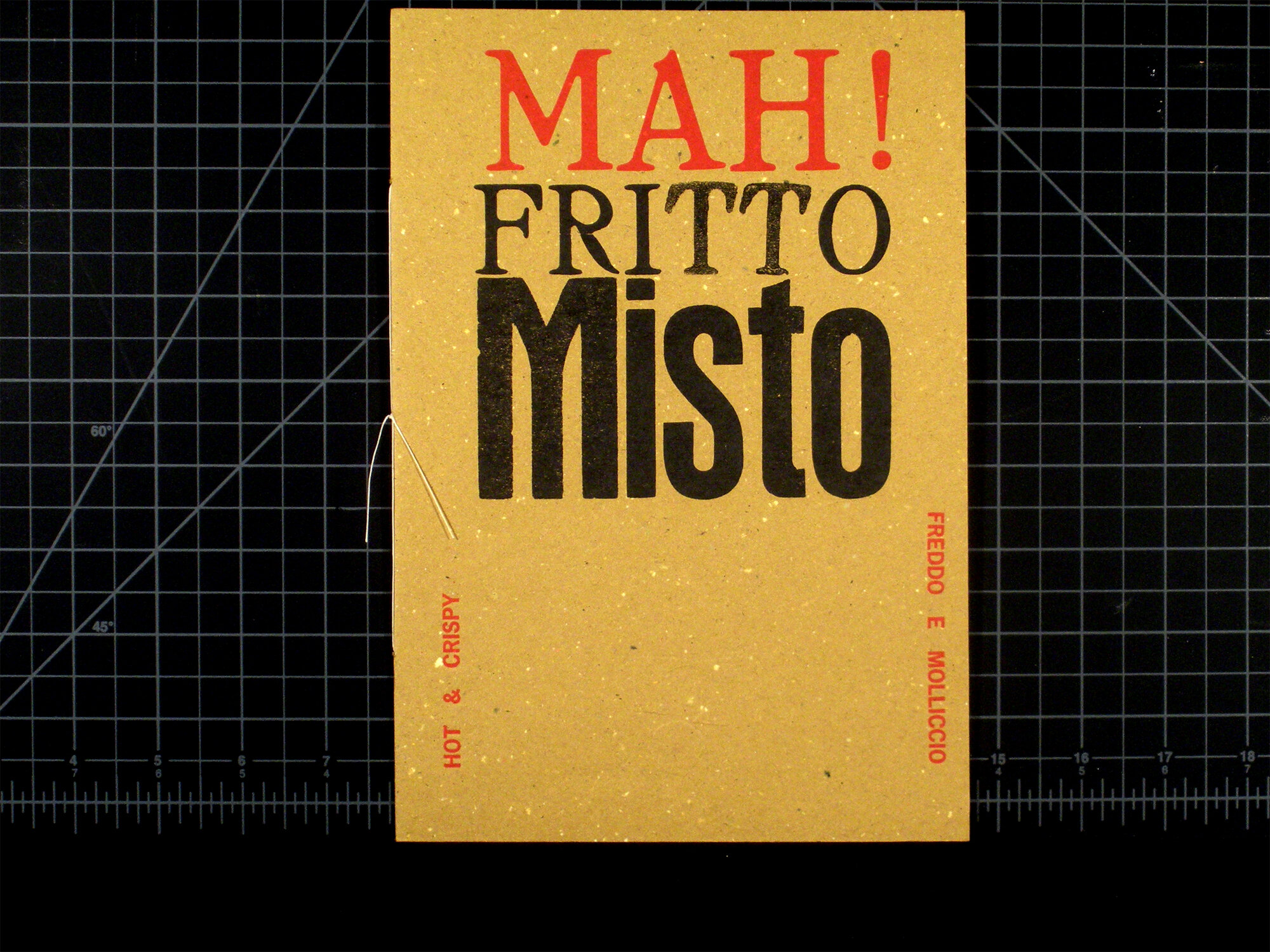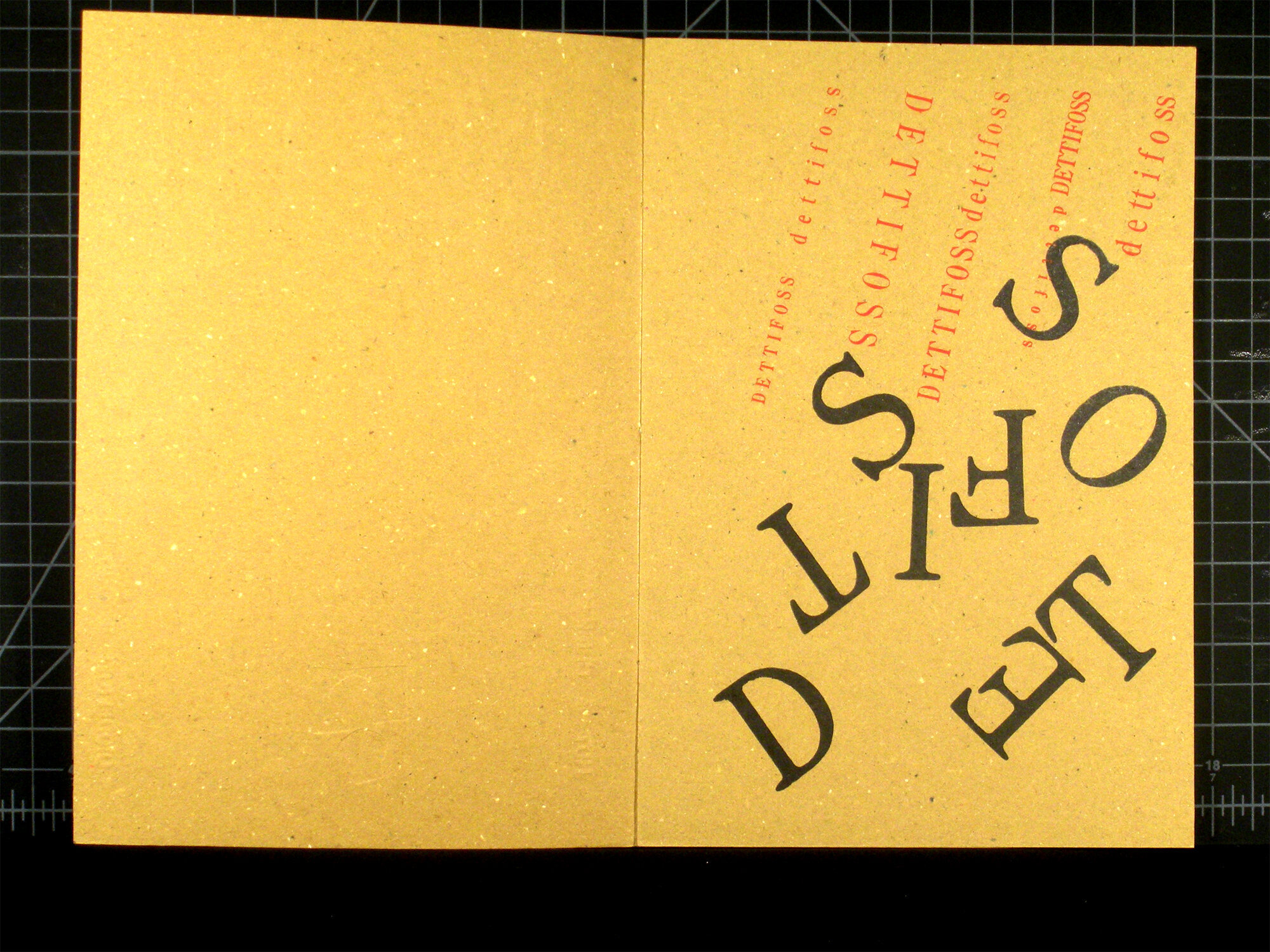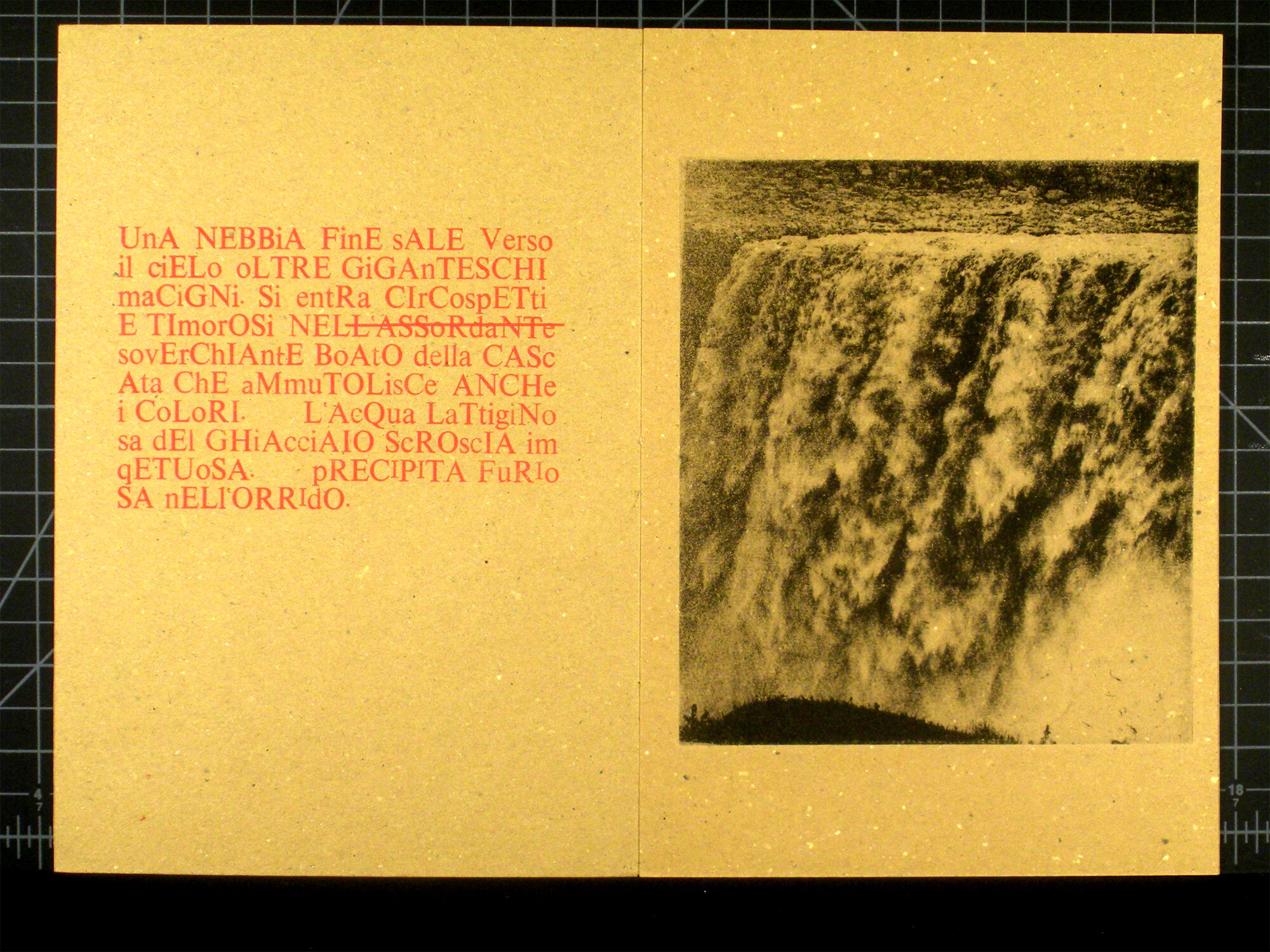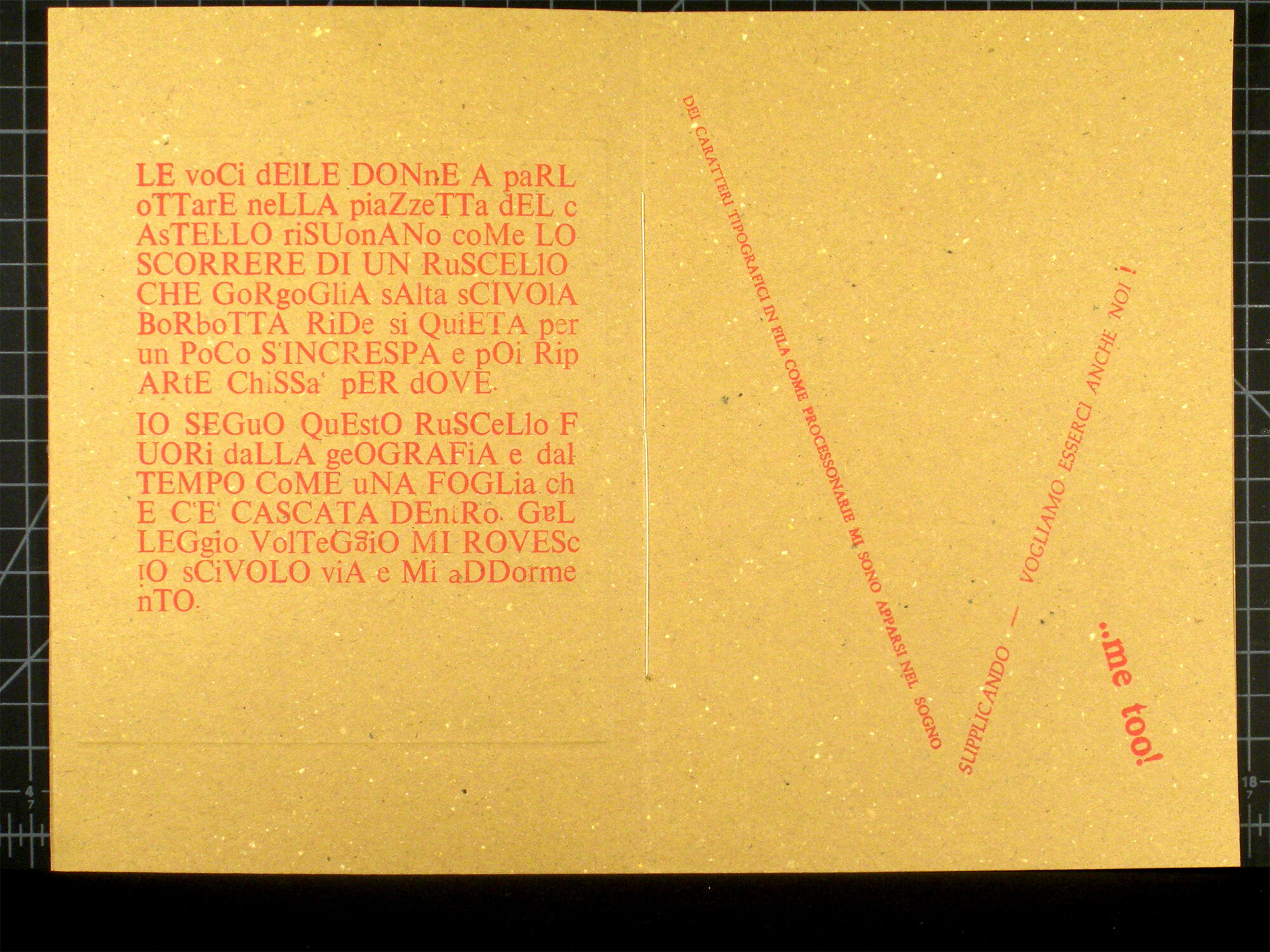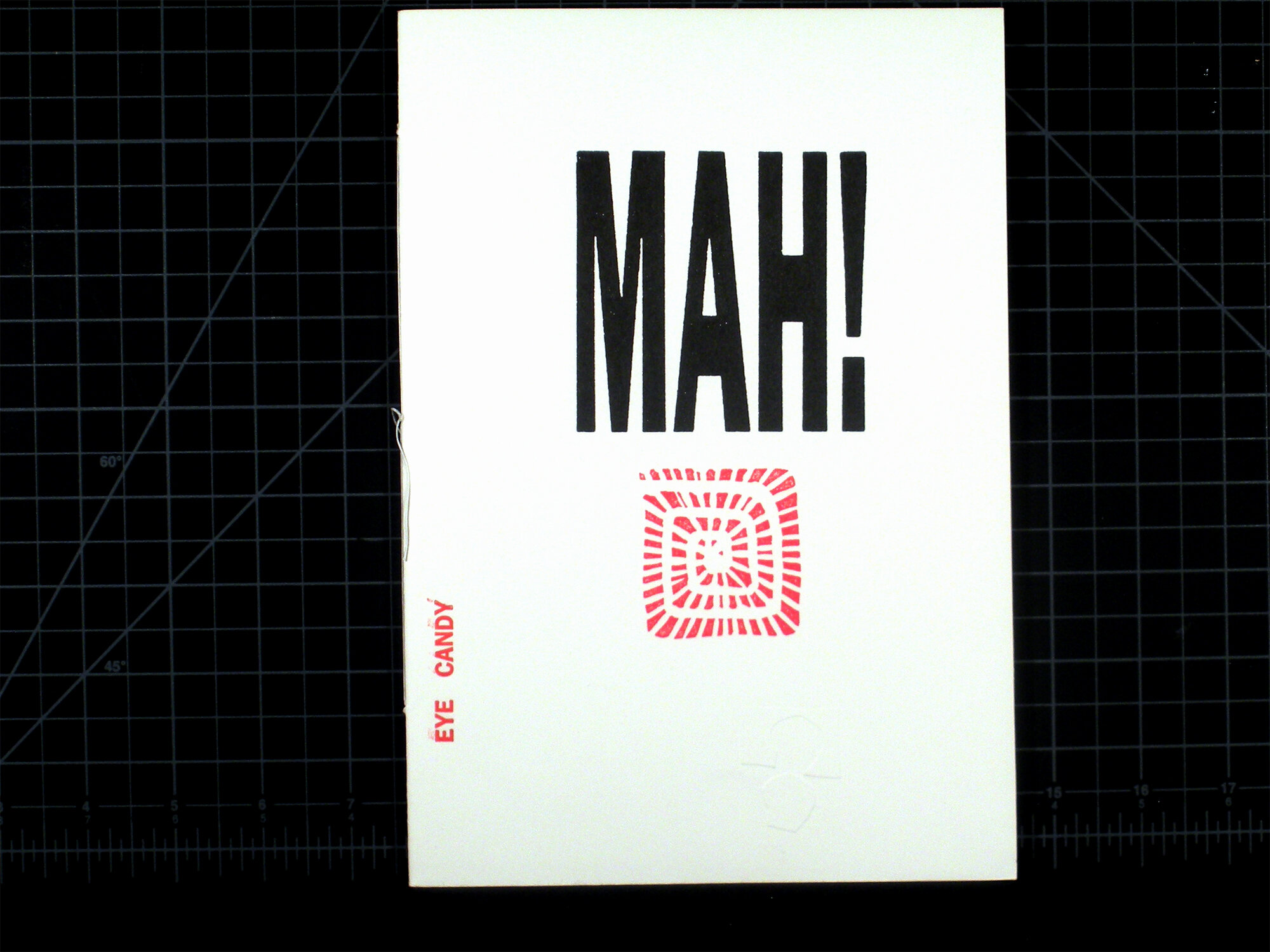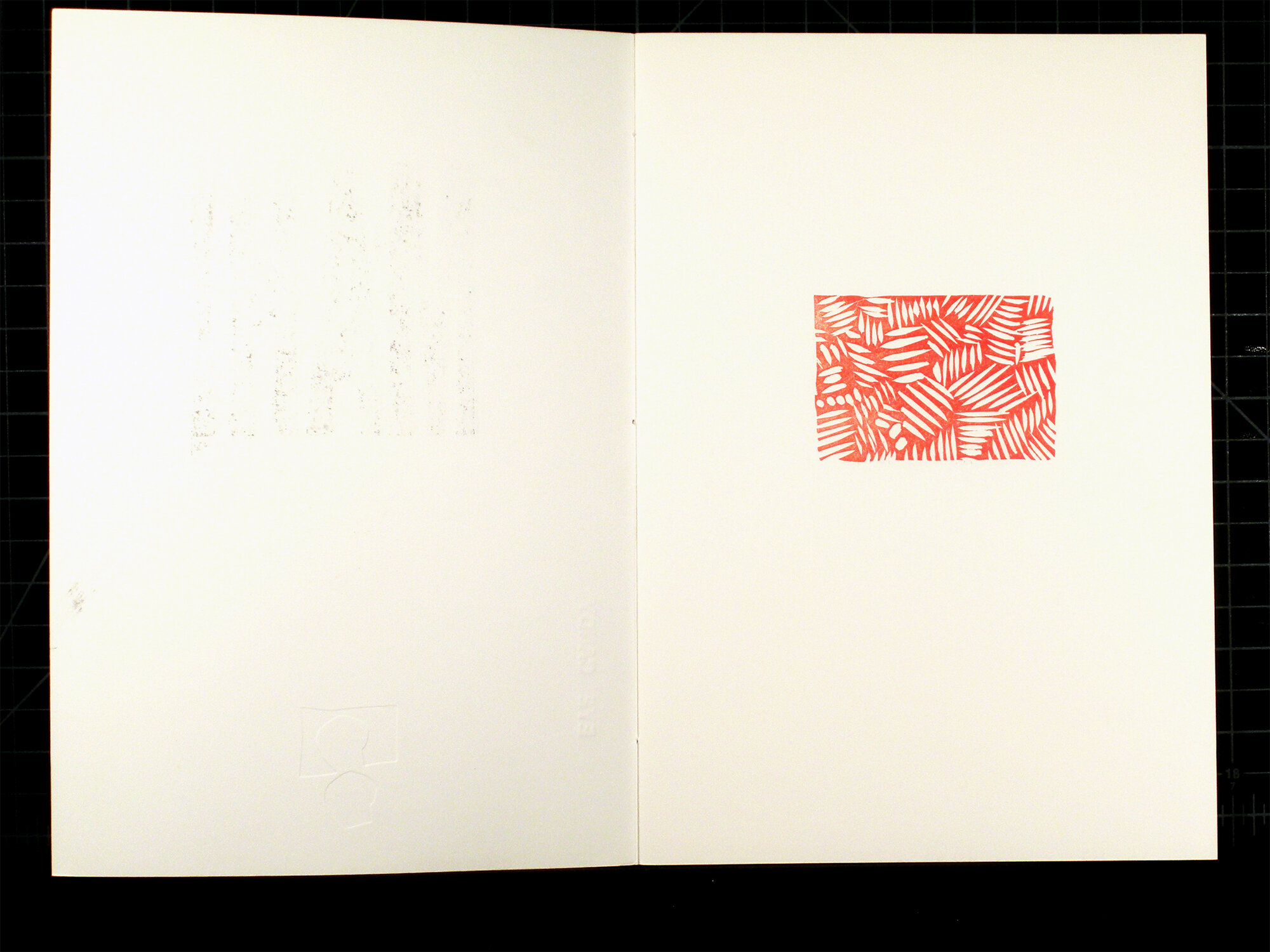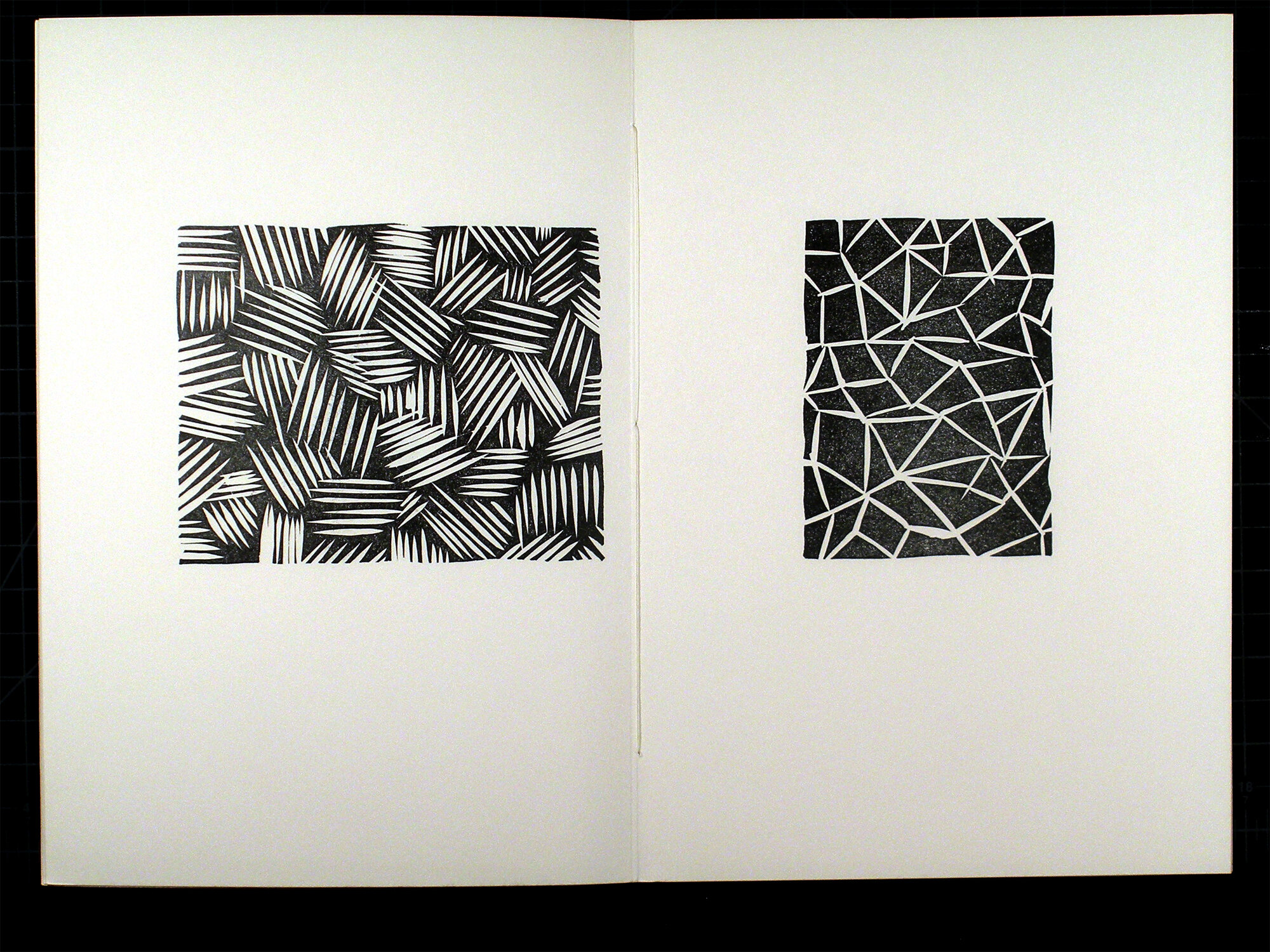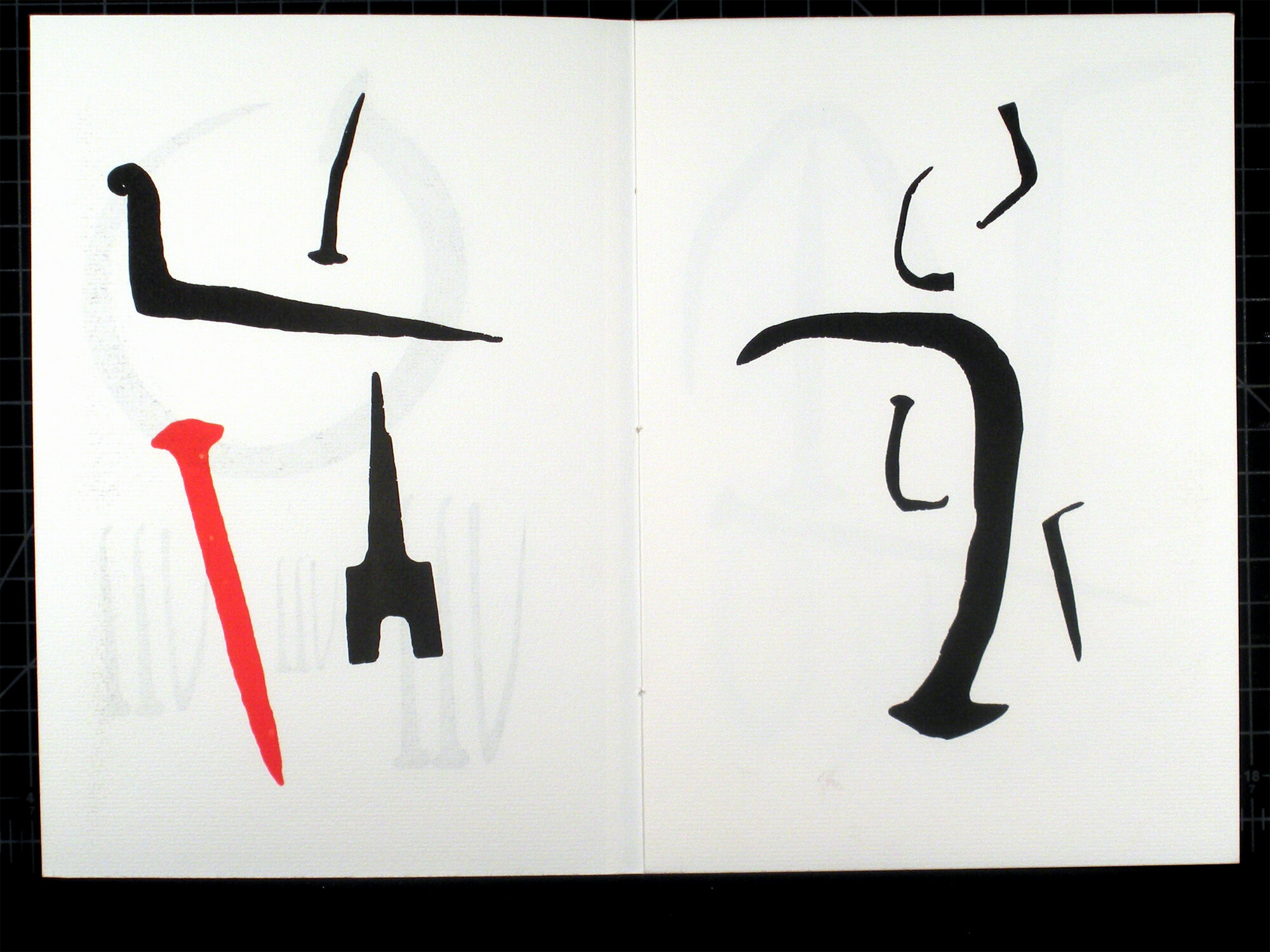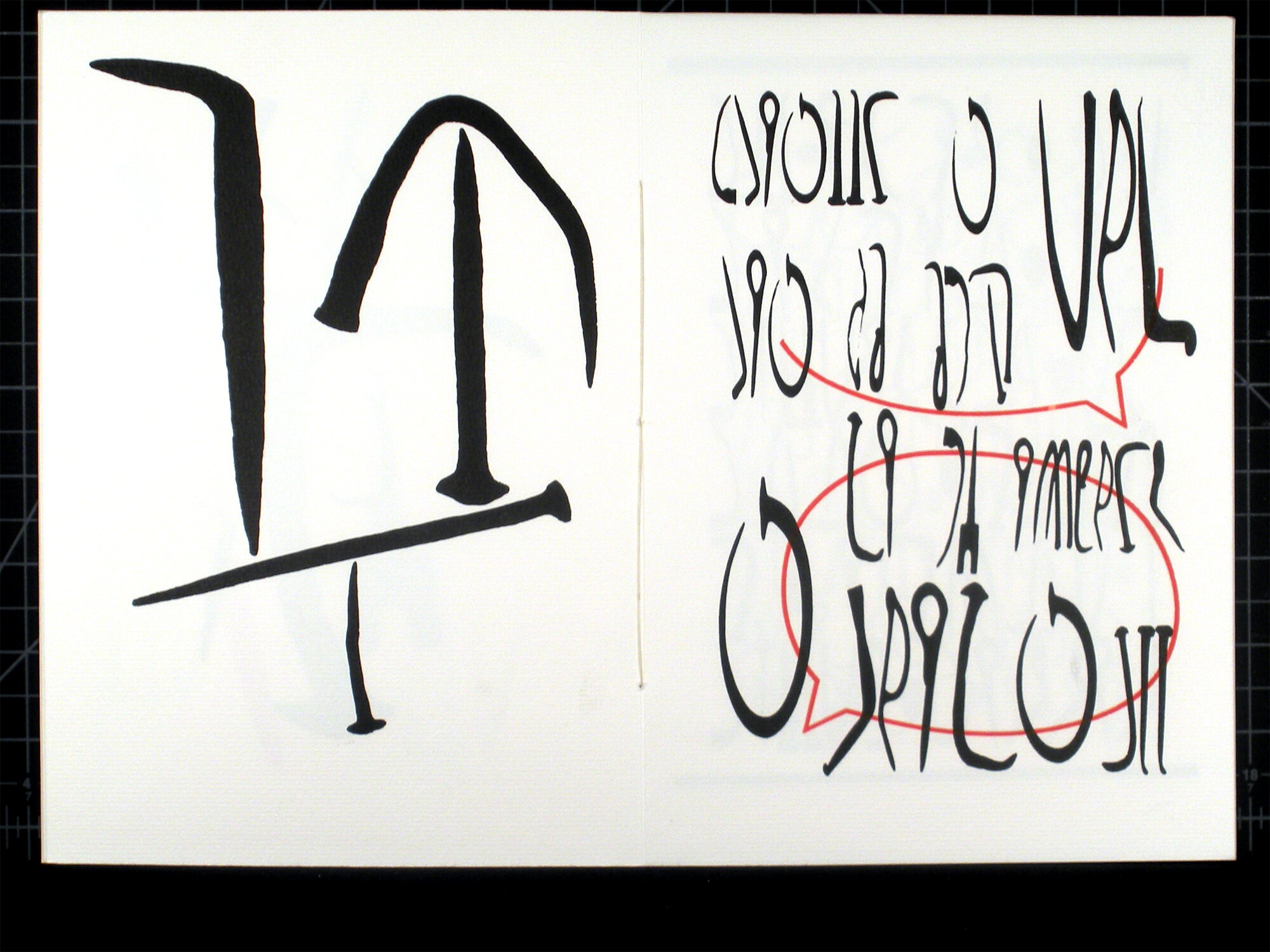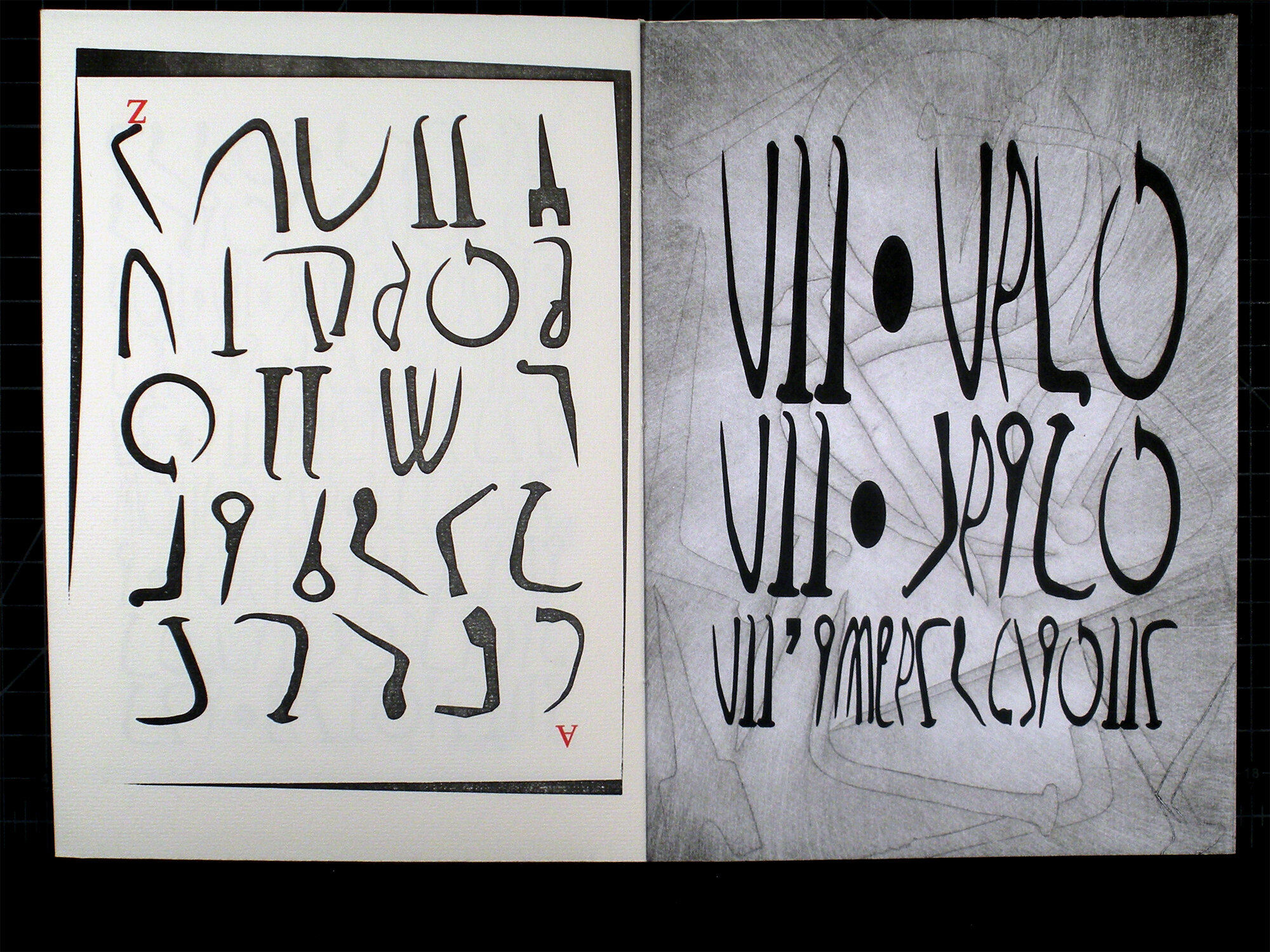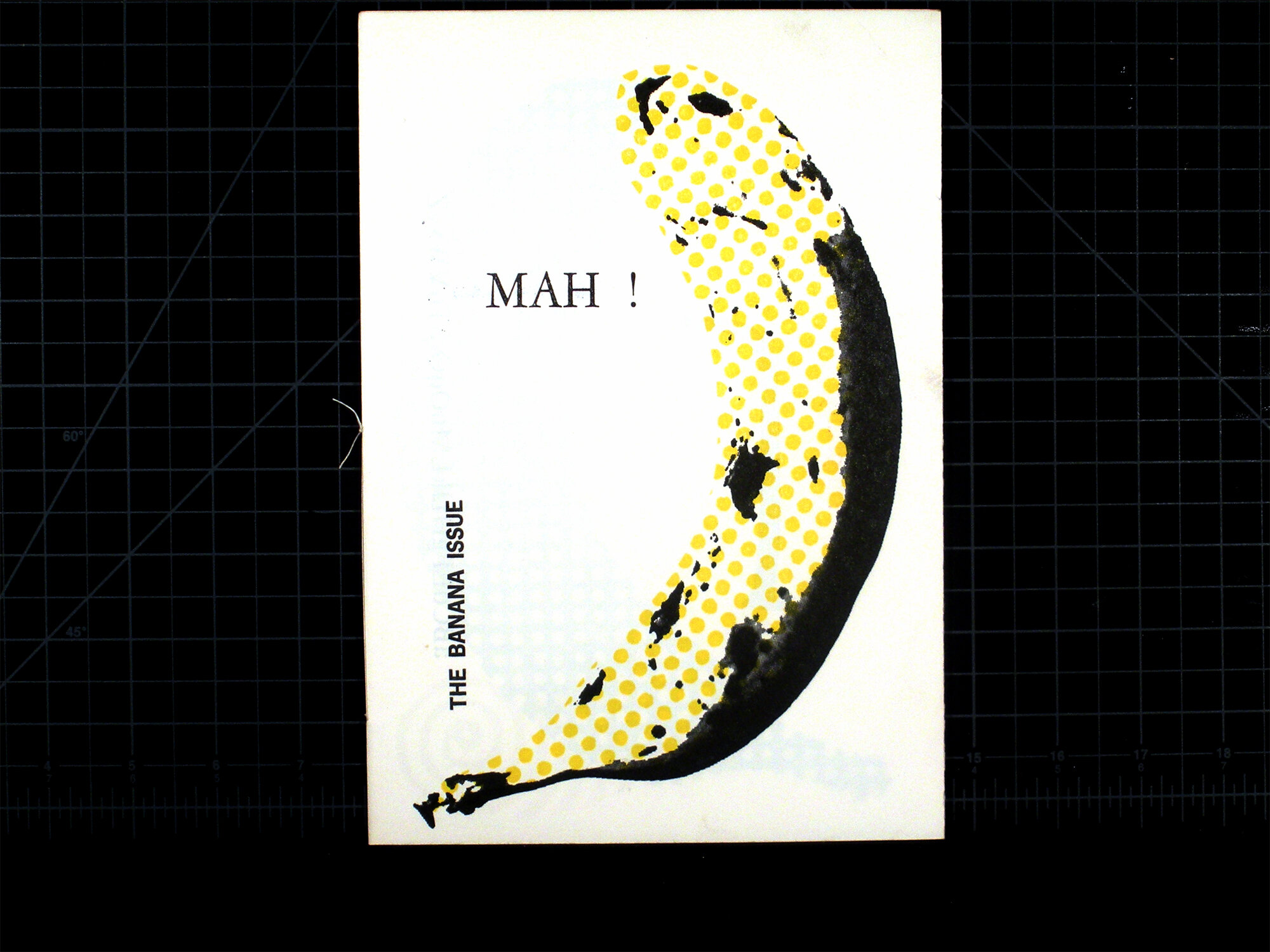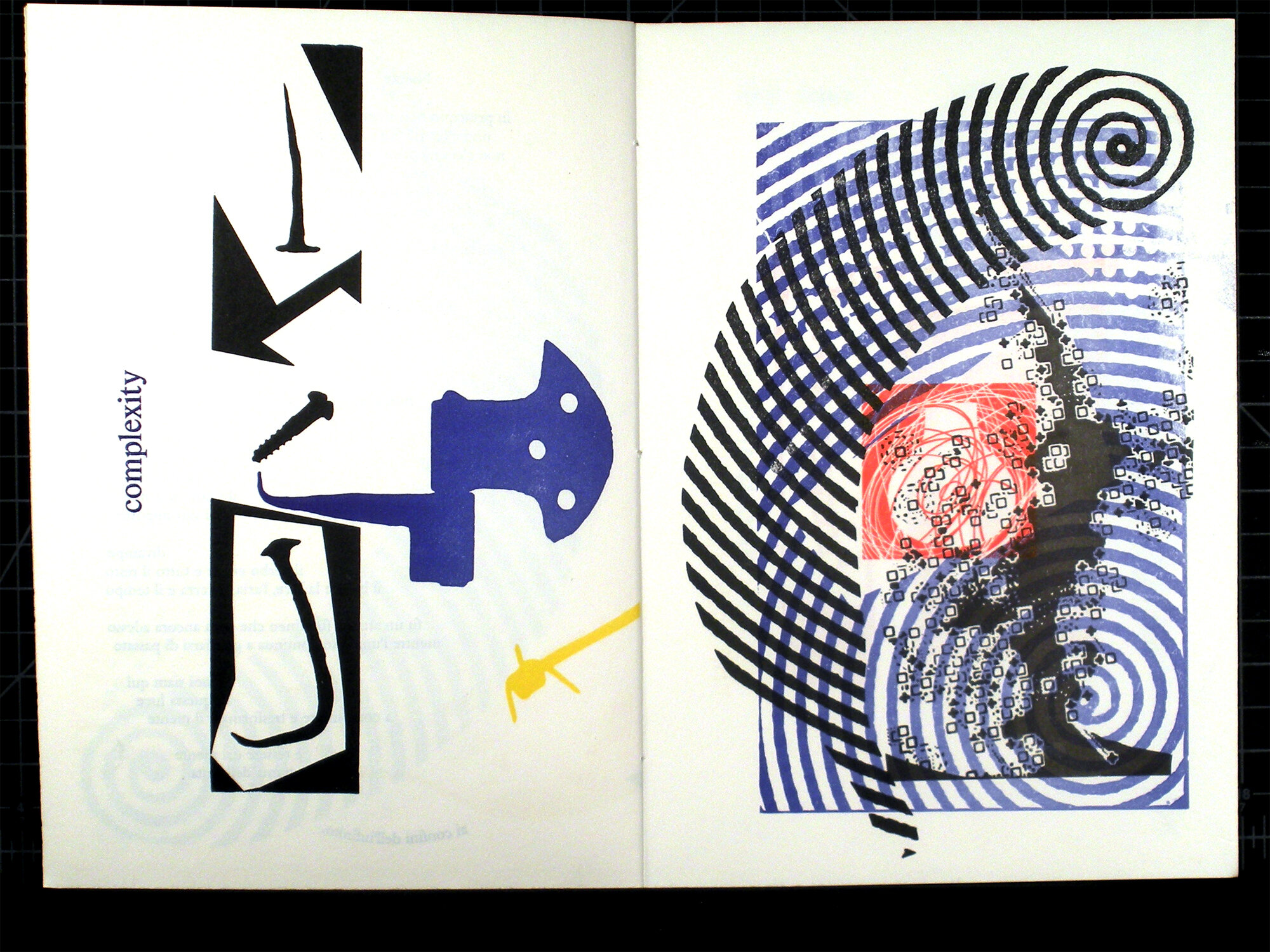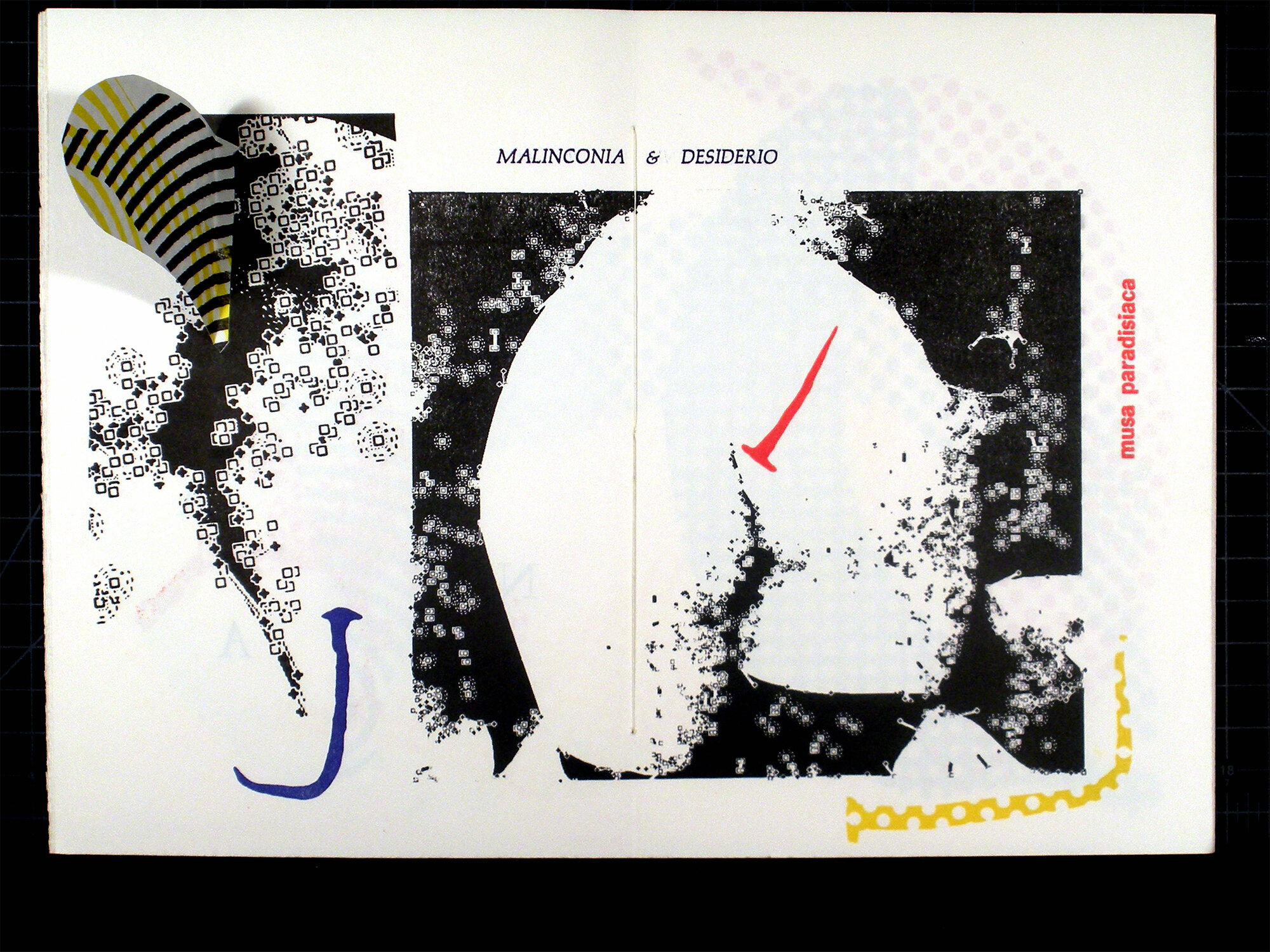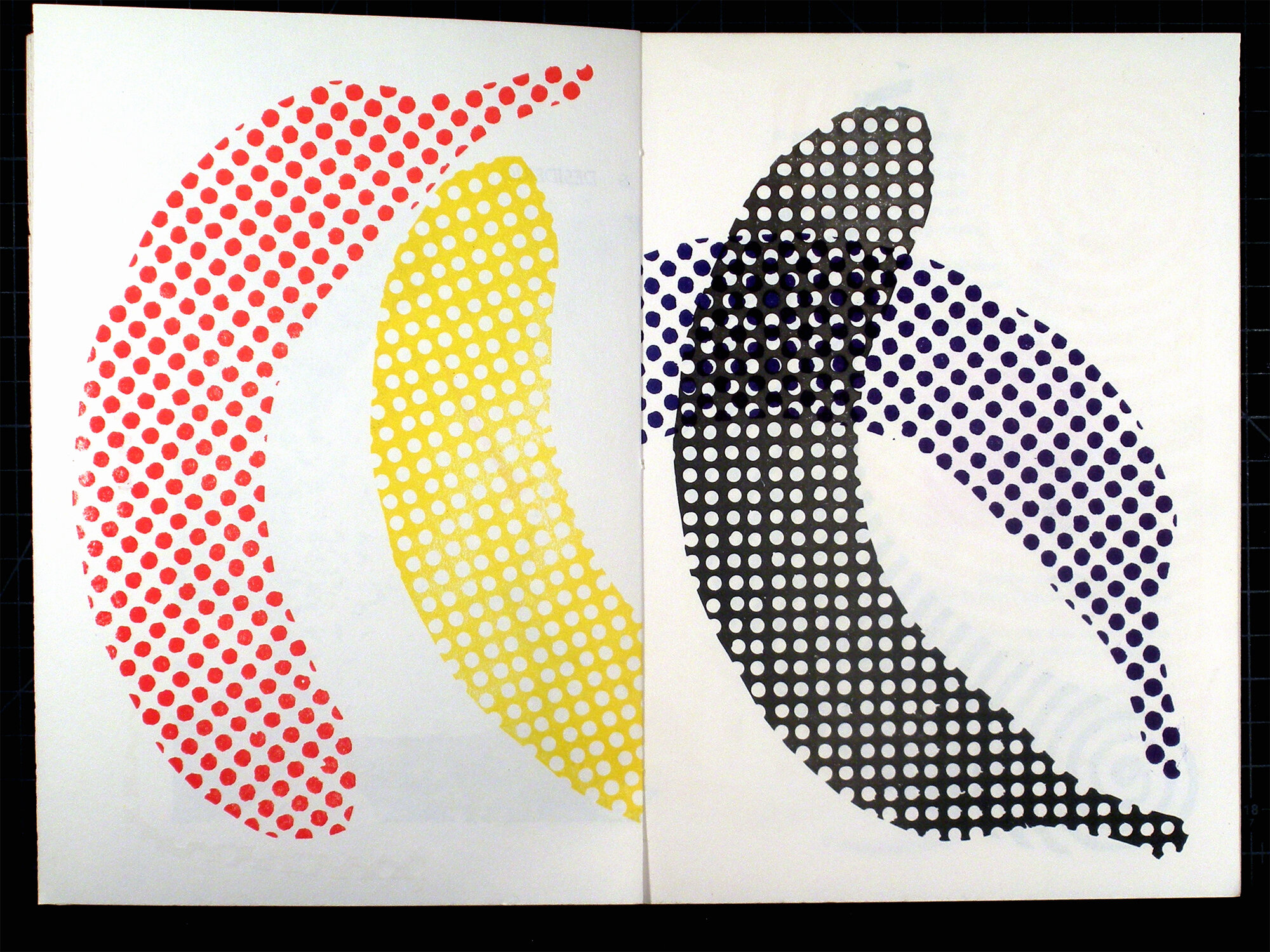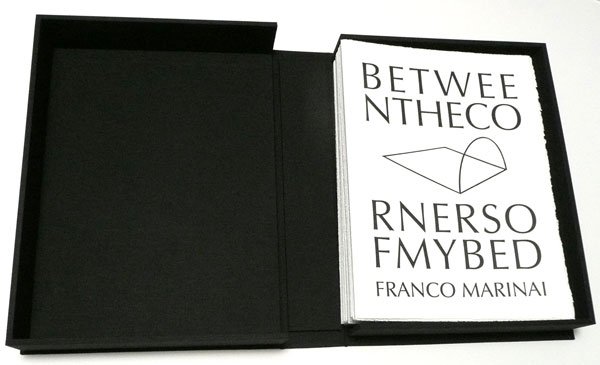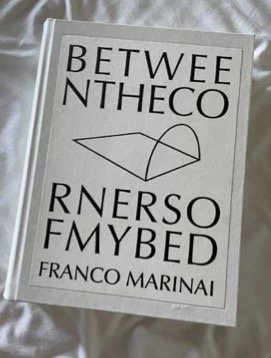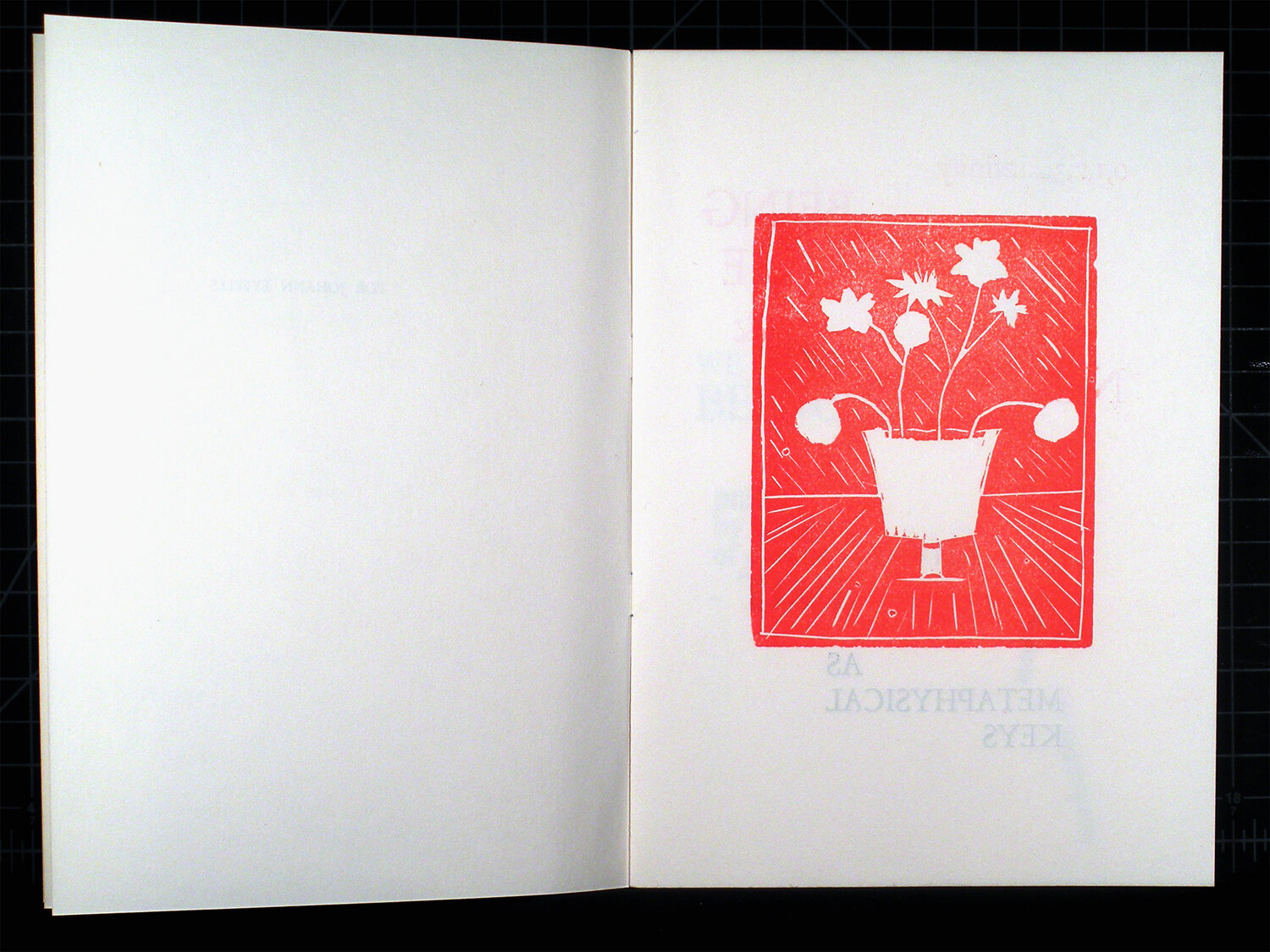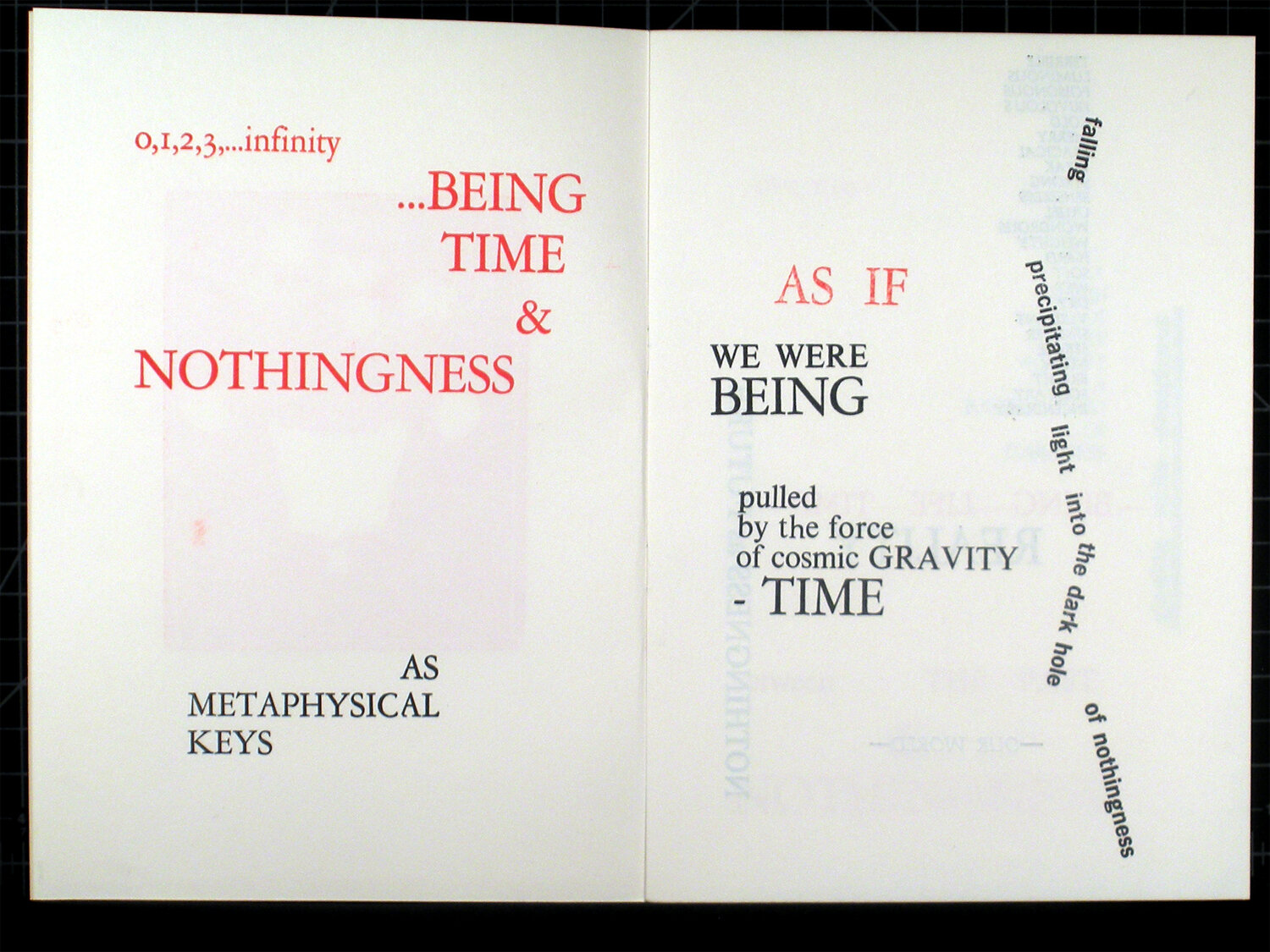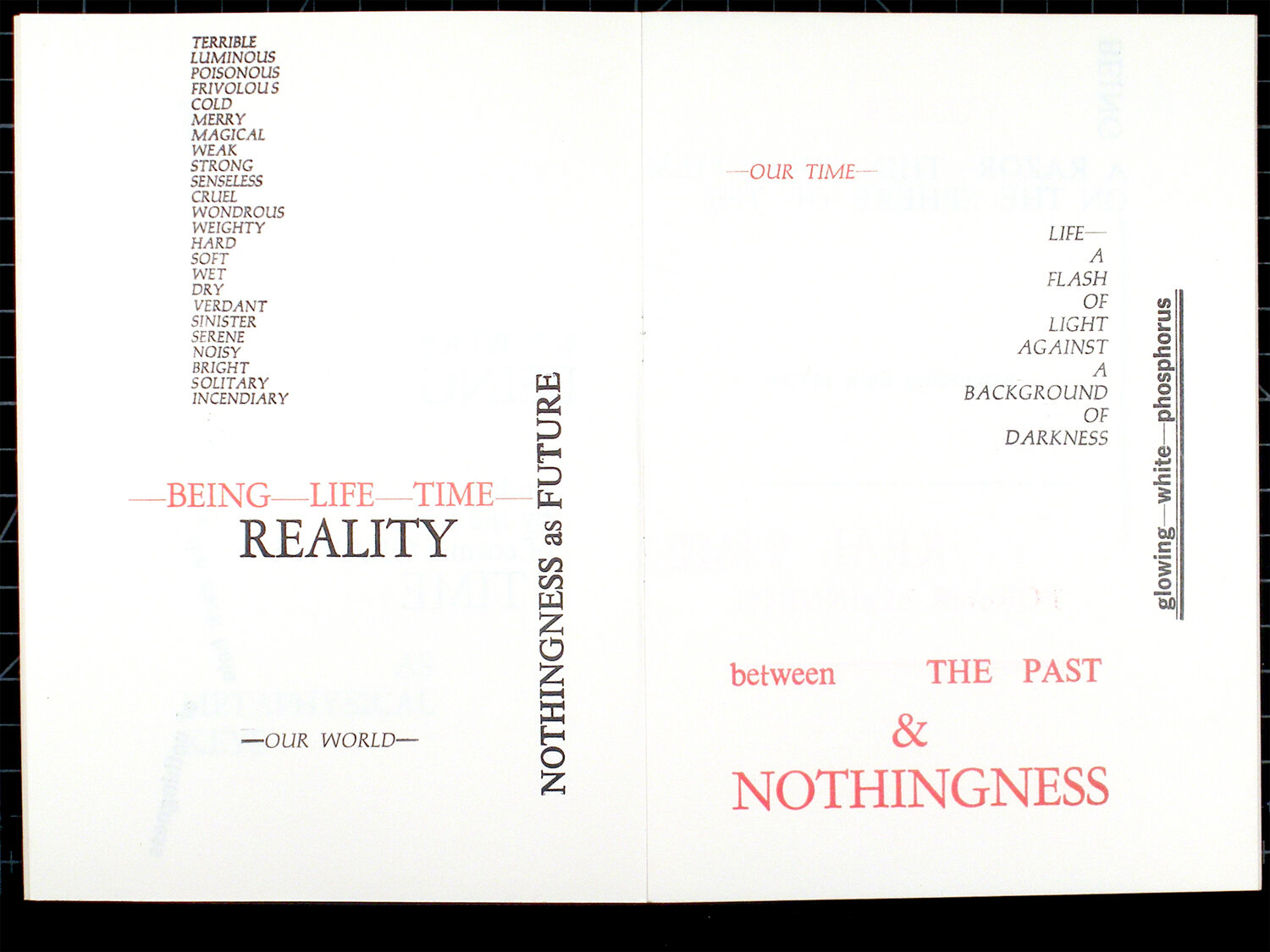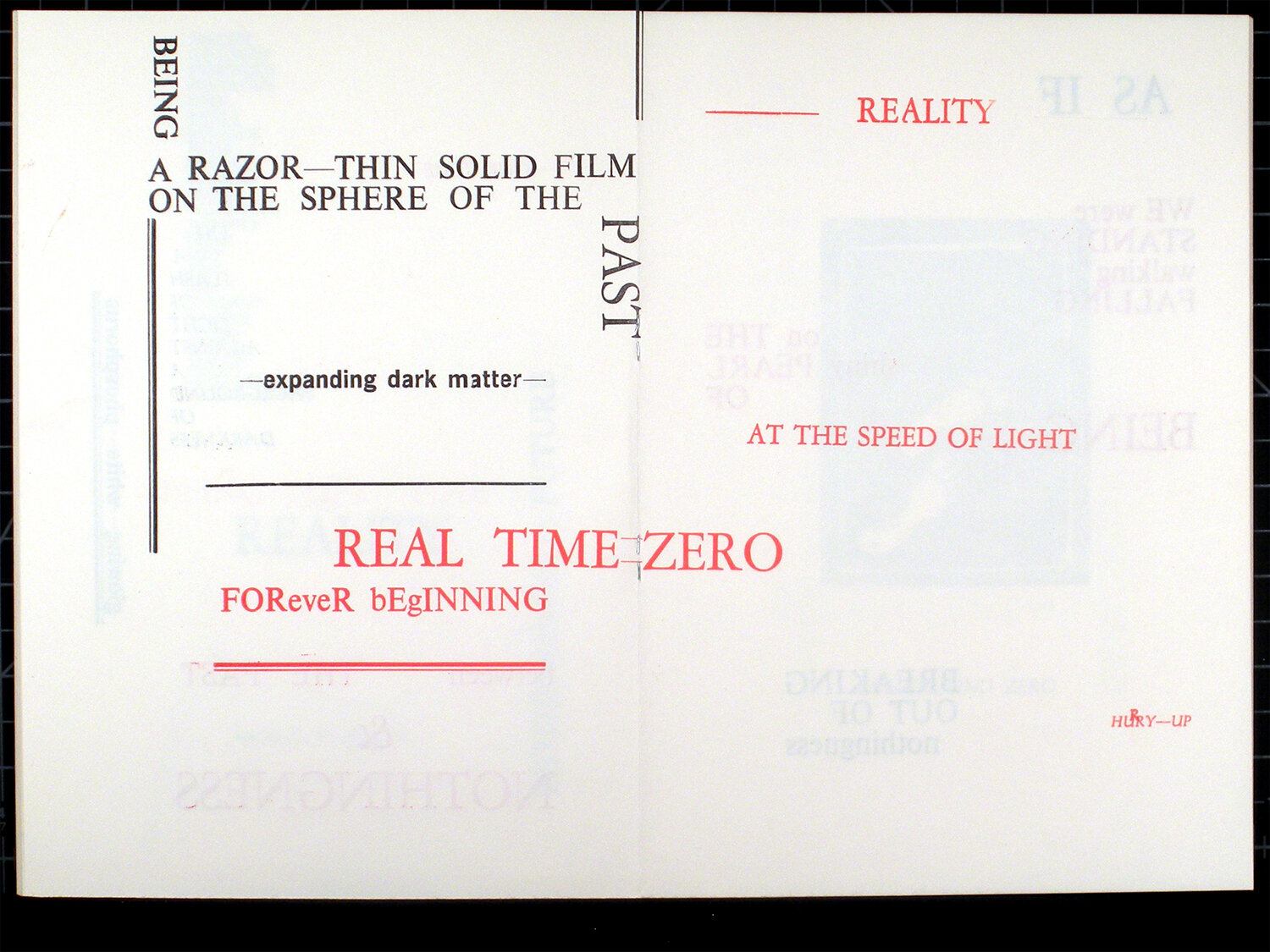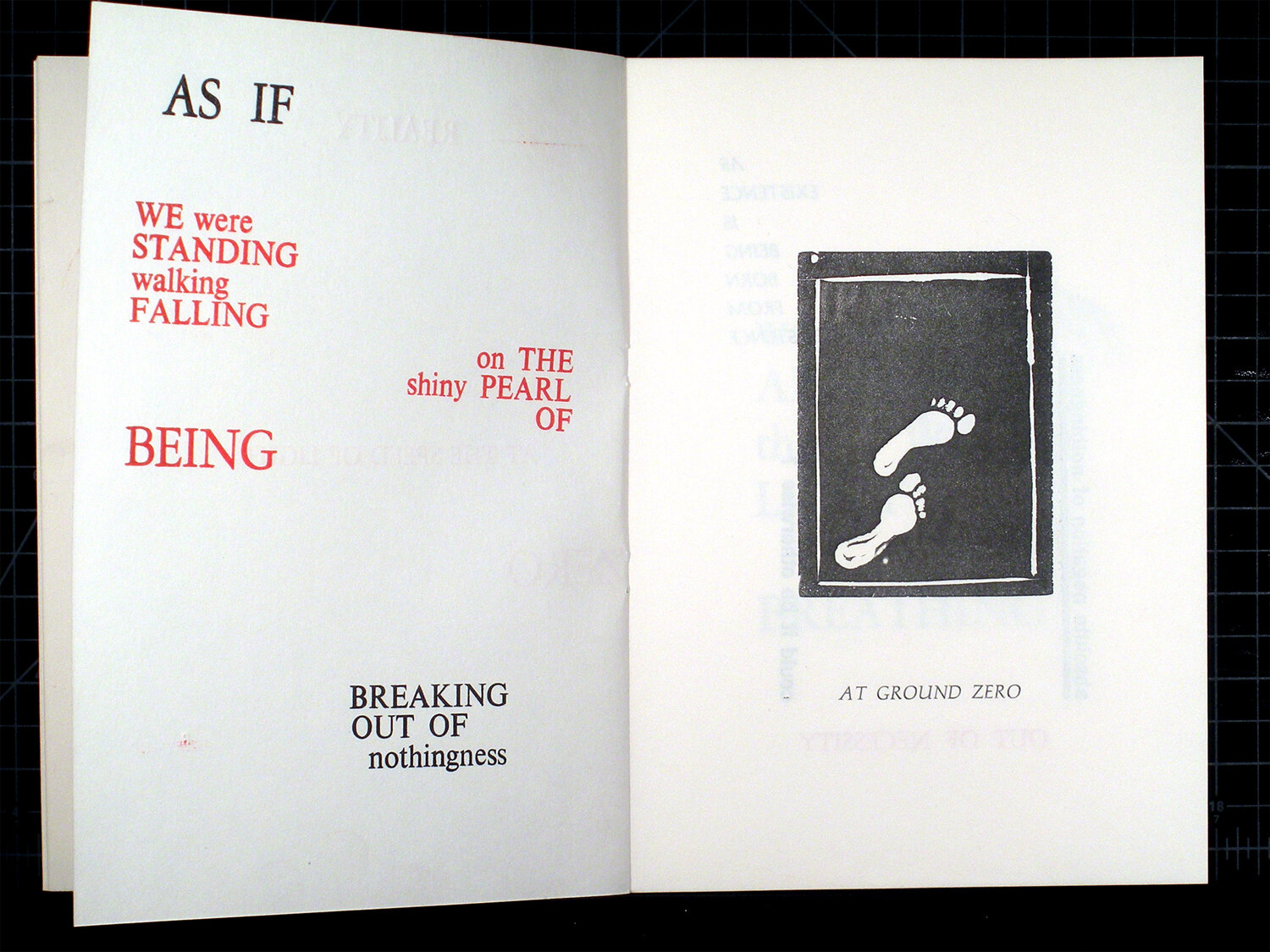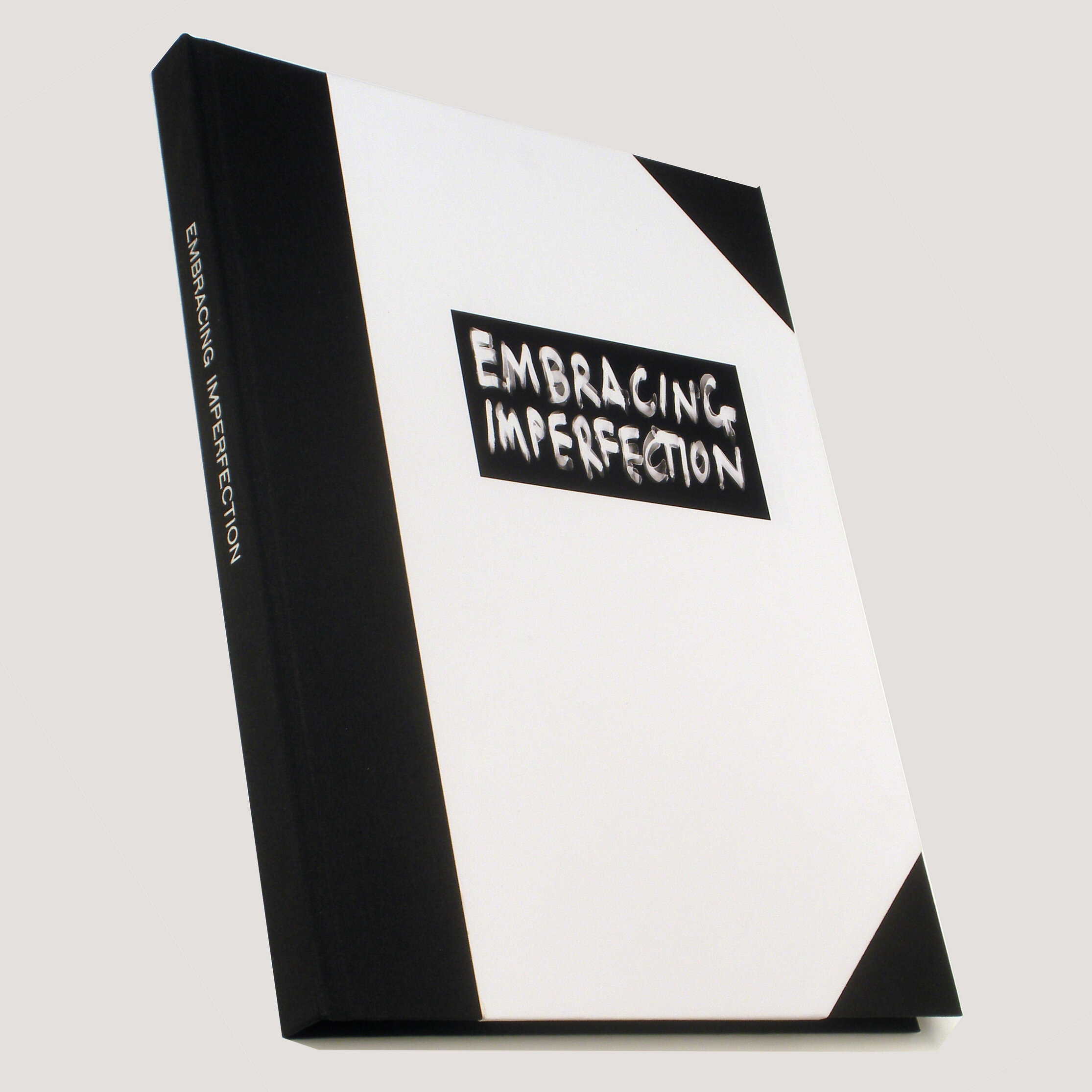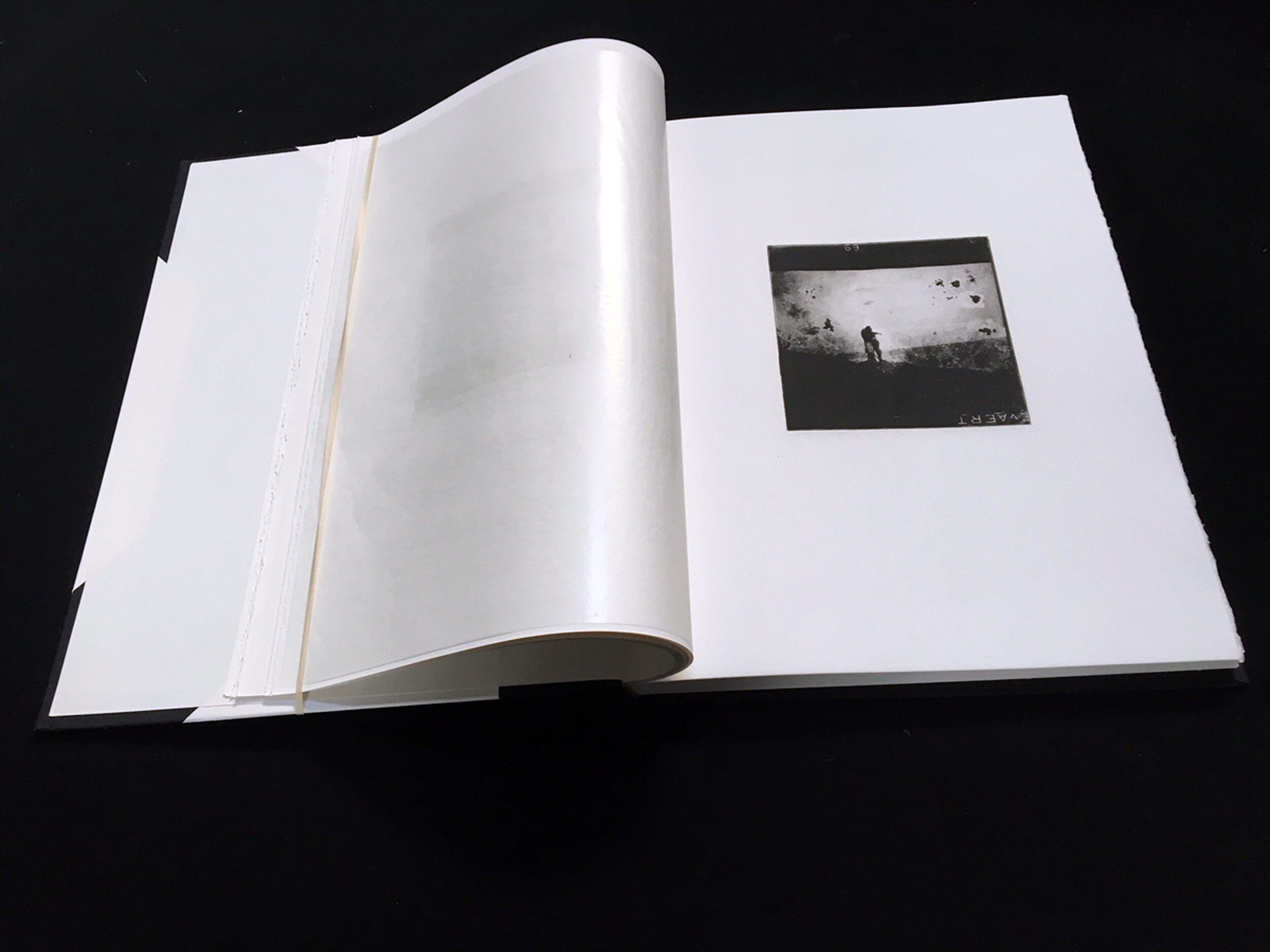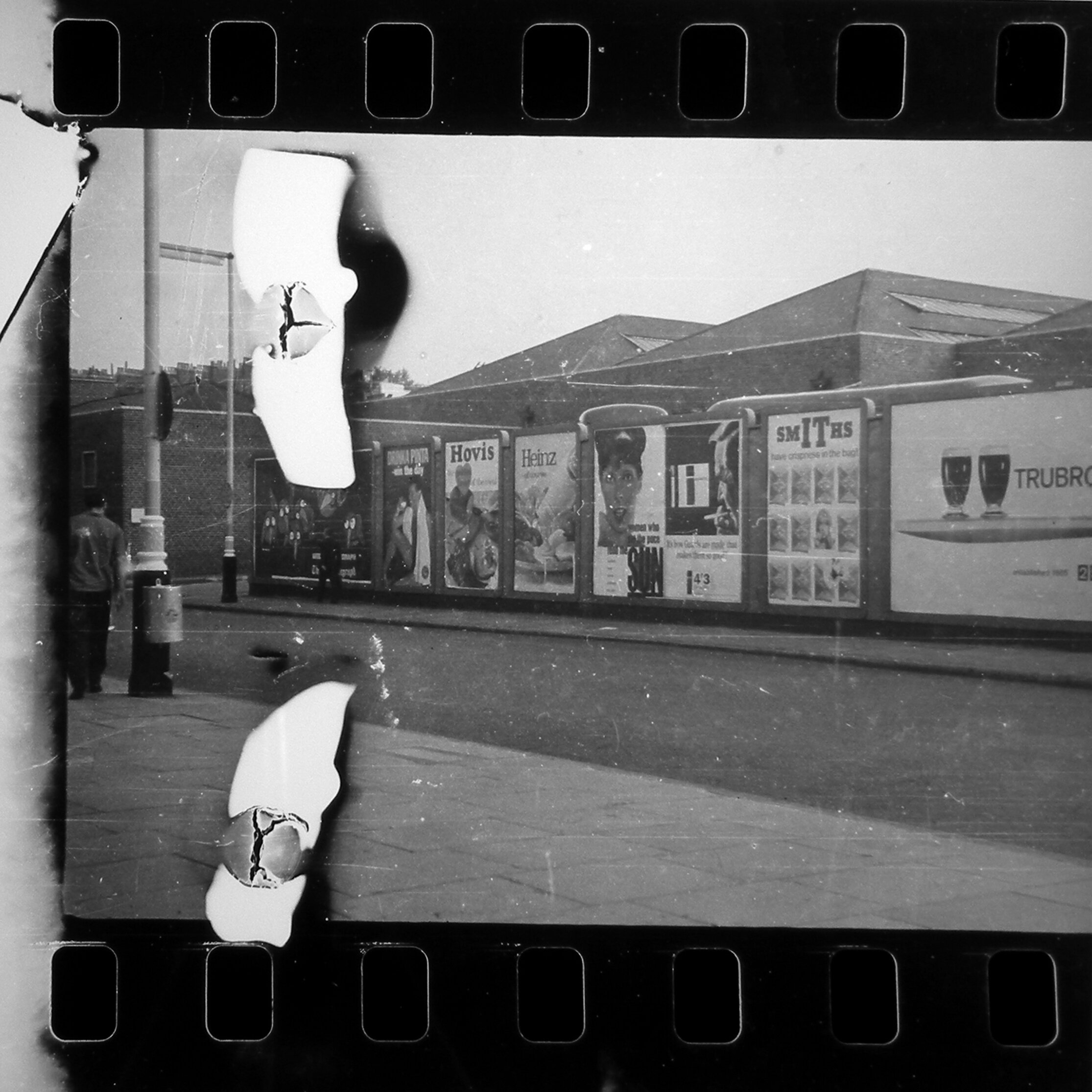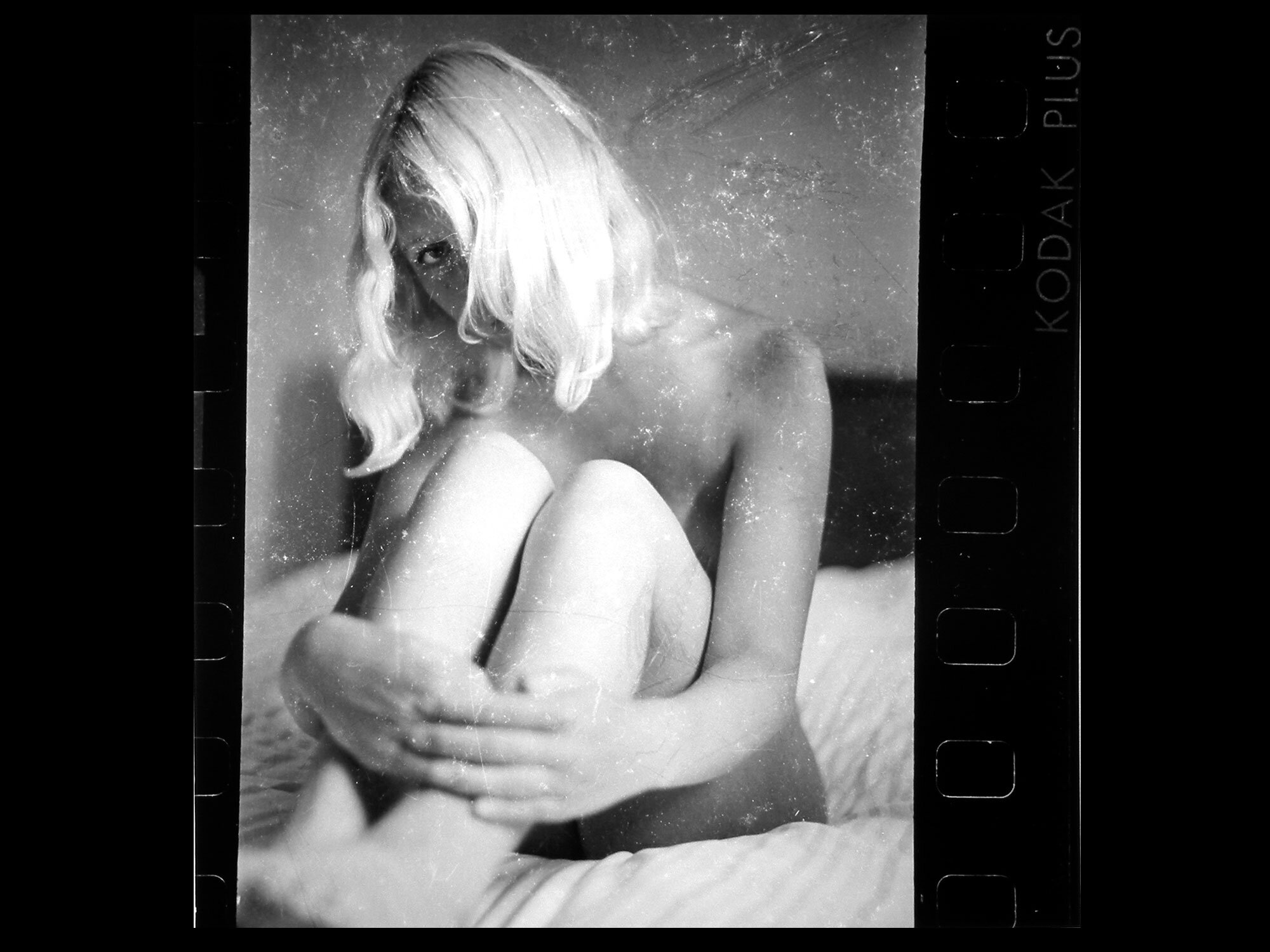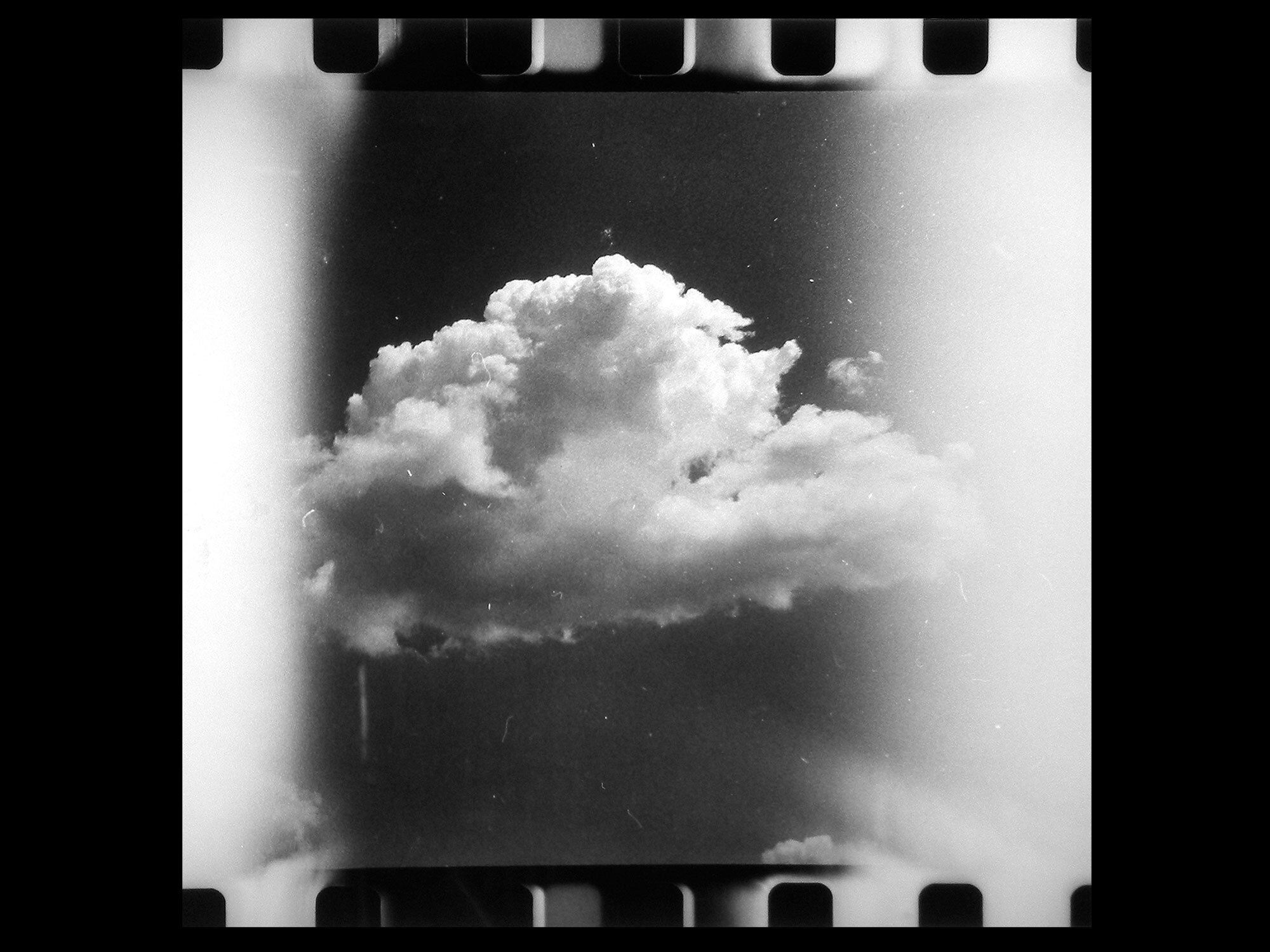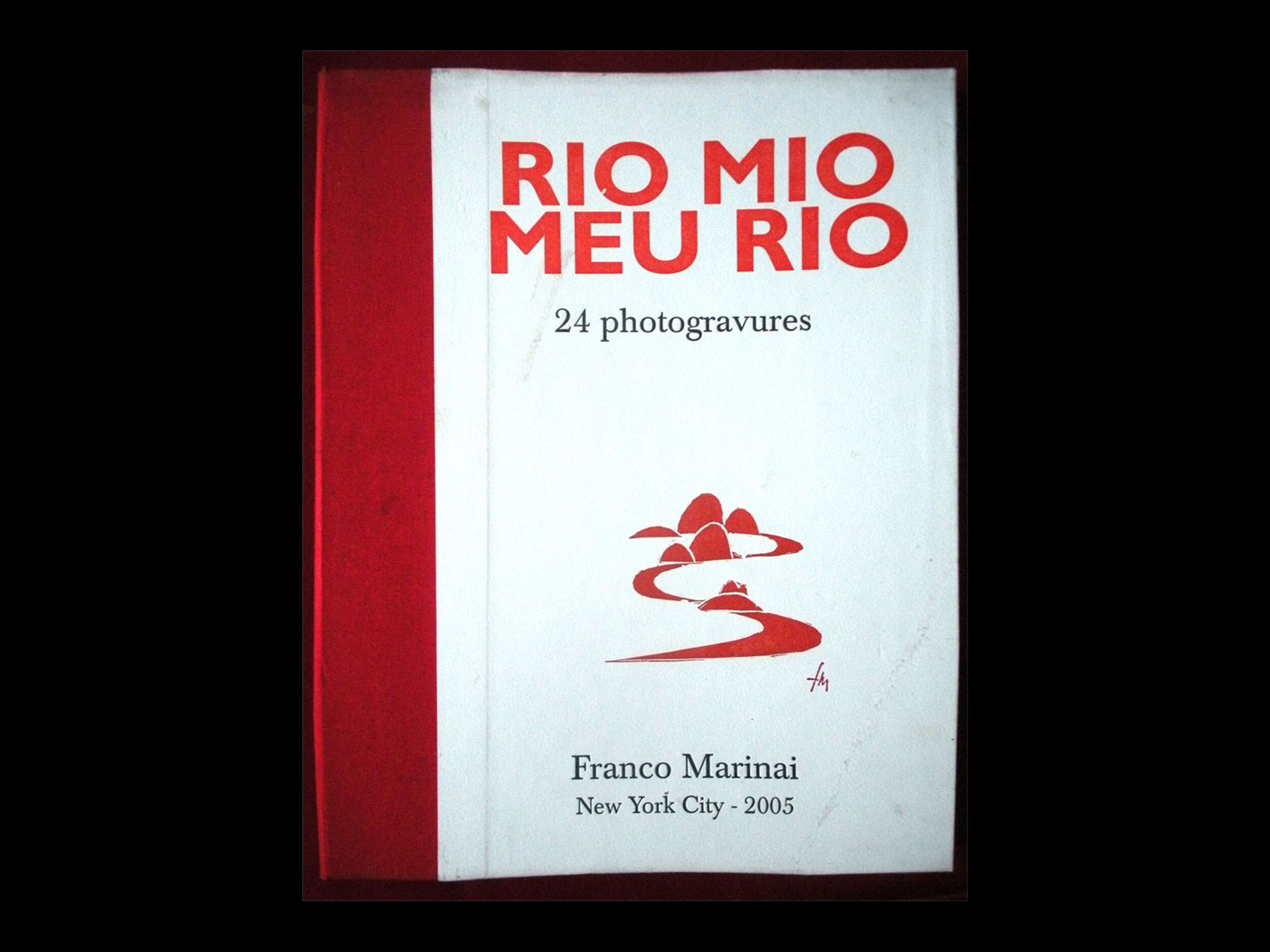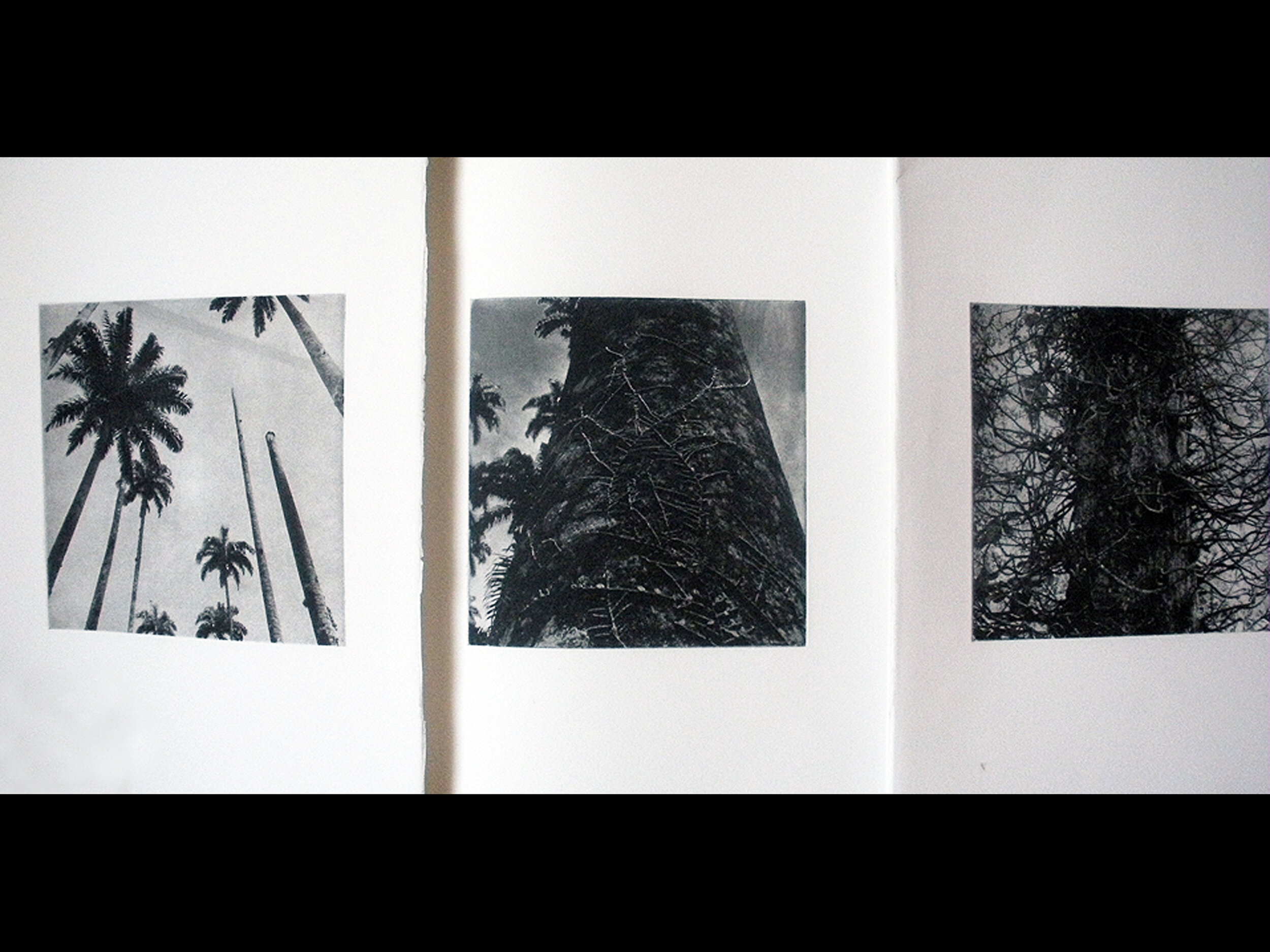MAH!
is a limited editions artist’s magazine with a skeptical outlook
printed at irregular intervals.
MAH! is an utterance that conveys doubt, bewilderment or dismay.
Each issue of MAH! is authored by one single artist.
MAH! deals with art, design, poetry, philosophy, politics, love, beauty, the sunset of the world…
It emphasizes the tactility of the printed matter and,
taking advantage of the specifics of the hand pulled format,
seems to maintain the lively improvisational immediacy of the spoken word.
In editions that vary from 30 to 50,
MAH! typically measures 10”x7” (25 x 18 cm), has 12 pages and is thread bound.
It often includes pages and inserts with photogravures, engravings and etchings
that are printed on quality paper.
In collaboration with Two Cents Press
artists are actively involved in all aspects of the publication of MAH!
and at the end retain half the copies produced, at no cost.
MAH! is printed with an Heidelberg 10”x15” Windmill, with an old Ambrosia and with a poster-size Saroglia cylinder press,
with movable metal and vintage wood type
– salvaged from letterpress workshops closed due to the digital revolution –
as well as with photopolymer matrices made in the darkroom of the residency.
Artist’s Books
BETWEEN THE CORNERS OF MY BED is a fairly straight continuation of my filmmaking practice. As an experimental filmmaker I used to work directly on the film emulsion as if it was a canvas. So, I drew, painted or scratched each frame, frame by frame, whether it was a Super8 or a 16mm. short. But I had grown dissatisfied with the impermanence of the moving image. I wanted something more substantial and concrete than a fleeting retinal impression. Intrigued by the possibilities offered by the technique of photogravure, to reproduce a photographic image with all gradations between black and white with etching ink on quality paper, I took a class with master printer Lothar Osterburg.
That was the beginning of my venture in the field of printmaking as I was immediately fascinated by photogravure, by its results and by the process, with all its difficult, laborious and challenging steps. It took me some time to master the process, I found it rewarding and frankly exhilarating. After several prints, a few portfolios and two books that I did for practice, I decided to embark on a much larger project. I would give it a structure and a narrative that would be the vehicle to carry a large number of photogravures that — like the travelogue/diaristic films I was familiar with —would reflect the world around me, my experiences and my thoughts derived from haphazard reading of Heidegger’s philosophy.
Having established form and content, for over a year, in 2007 and in 2008, I dived in, making plates at the Manhattan Graphics Center in New York, often several at once, and printing them in my studio, two at the same time on one piece of paper (an additional challenge) in an edition of eight. All the photographs (with the exception of C.E. Gadda’s opposite the composite image of G.W. Bush with Atta, the 9/11 terrorist, and Duchamp’s urinal) are original photographs that I either took in those days or had taken when I had first arrived in New York in the late 70s. To maintain the narrative aspect of the book, I grouped the photogravures into different loose “sequences” that deal with NYC, the neighborhood, daily living, art, nature, news, Tuscany…and interspersed them with aquatints that depict the actual corners of the loft bed (pictured in the last pages of the book) that my wife and I built in the loft on the Bowery which — by the way — belonged to Andy Warhol, our landlord (and Jean Michel Basquiat was our neighbour).
Above the loft bed there is a skylight that is represented and sketched throughout the book with different printmaking techniques as if spotted at different times during that restless night. Two of the seven copies of the book were bound by Henry Bookbindings, an Hasidic Jew who livesand works in a dark, crammed and timeless basement in Henry Street on the Lower East Side.
Franco Marinai, Serrazzano/NYC Dec. 2022
This pamphlet is dedicated to the Icelandic artist Johann Eyfells who had been a great inspiration throughout the years for his tenacity, his passion, his honesty and his strength (he kept on working on his monumental sculptures – in Texas — till the age of 96 when he was hospitalized, in November 2019. )
I rushed to finish the booklet and dedicated it to him because I thought he would have enjoyed it since it dealt with issues that were dear to him and that he kept on pressing on me over and over through the intermediation of my wife, his niece.
I doubt he ever saw it. Johann Eyfells passed away on December 3, 2019.
EMBRACING IMPERFECTION is a book with copperplate photogravures printed in an edition of 4.
It’s a book about coming to terms with accidents and imperfections of the photographic kind that speak of photography as it was in the pre-digital age, a physical medium with its support, its emulsion, its chemicals, its fragility and its instability due to time, that amazing master of decay. The book features enlargements of photographic accidents and imperfections including torn, crushed, scratched, stained, soiled, moldy, bungled, streaked, wrinkled, discolored, buckled, curled, blistered, badly processed and improperly stored negatives from a mass of 35mm B&W films that I shot and developed between 1965 and 1969 that I had haphazardly dumped in some cardboard boxes in the cellar of my family’s house in Castello (Firenze) that I found recently when we had to empty the house. So, I resolved to print what I had rejected and what fifty years ago I would have never considered printing.
A book on acceptance and redemption, It may contain traces of memories, regrets and happiness.
"All aspects of this beautifully constructed book - from the linoleum cut print on the cover, the letterpress printing to the binding, were done by the artist, and is an ode to the book form itself. At first glance this work appears to be a photo travelogue of Rio de Janeiro, its pages constructed to allow a three-frame panoramic view of various locales within the city. However, as stated in the book's introduction, Marinai associates this work with the time he had spent as a volunteer salvaging and restoring books that were damaged during the devastating 1966 flood of the River Arno in Florence. This book, therefore, establishes an elegiac link between the two cities juxtaposing the notion of destruction (from the flood) with the actual construction of the book itslef: a relationship alluded to in the subtle title of this powerful work."
© 2011 Satoshi V. Tabuchi
from "MULTIPLE LIMITED UNIQUE - SELECTIONS FROM THE PERMANENT COLLECTION OF THE CENTER FOR BOOK ARTS"








